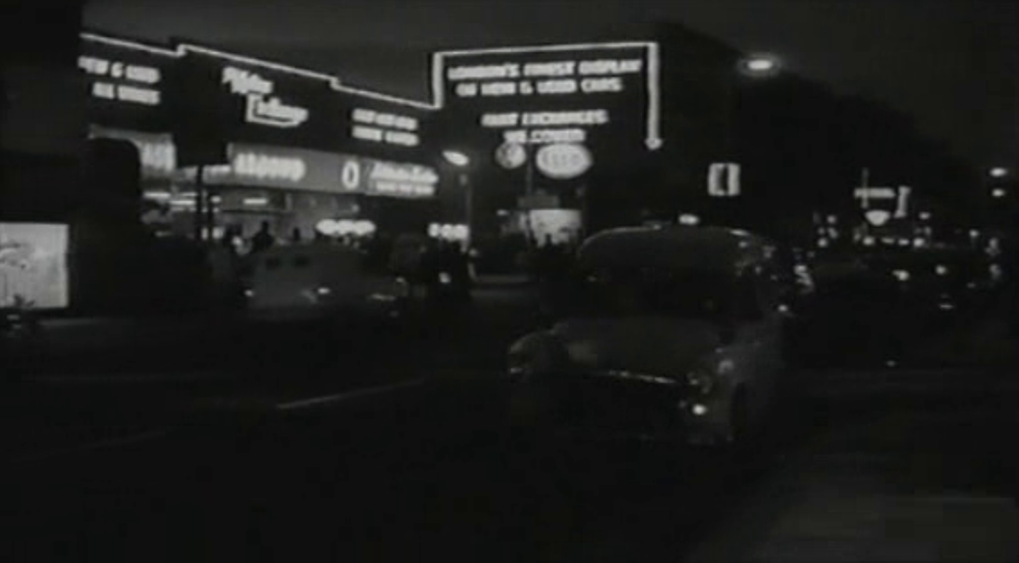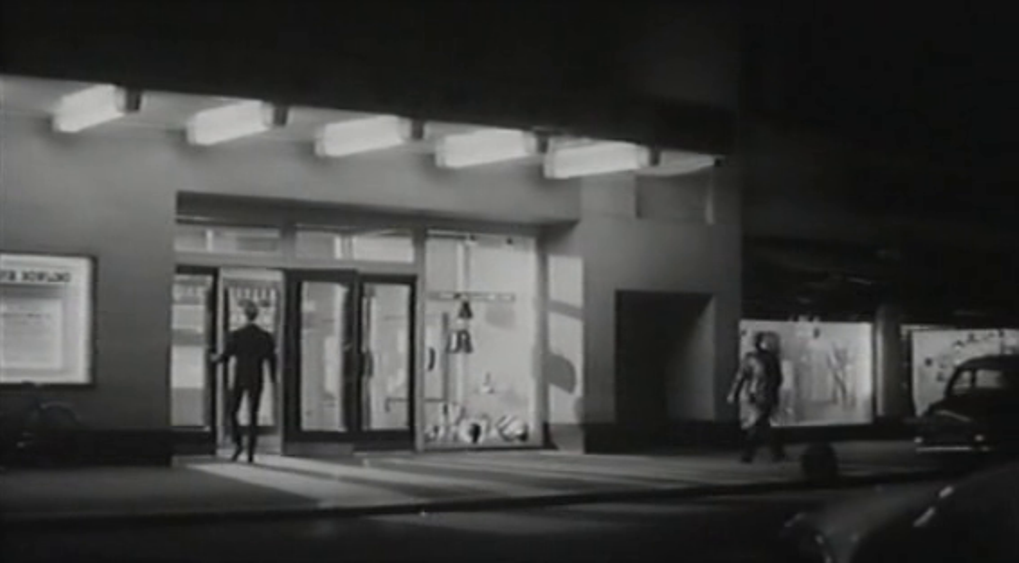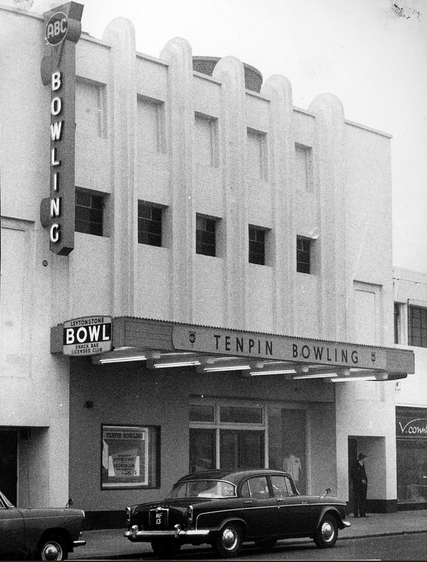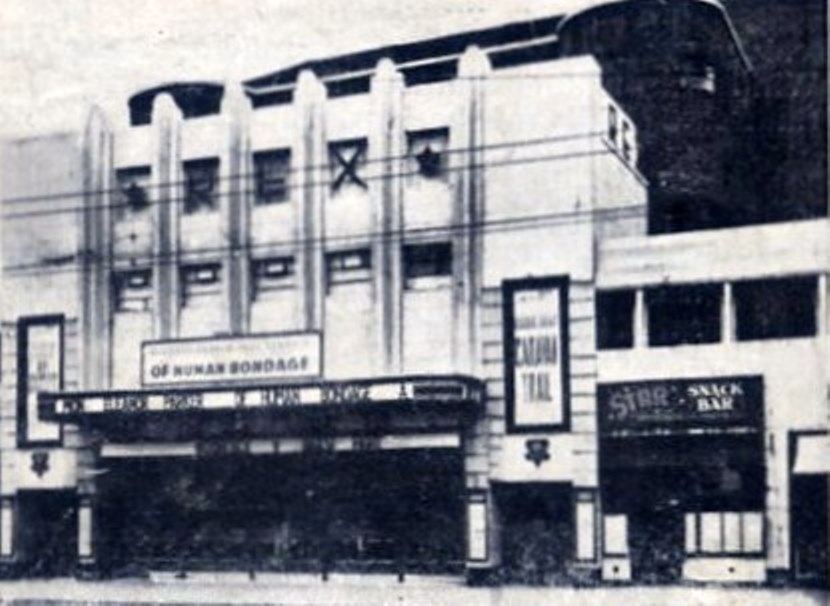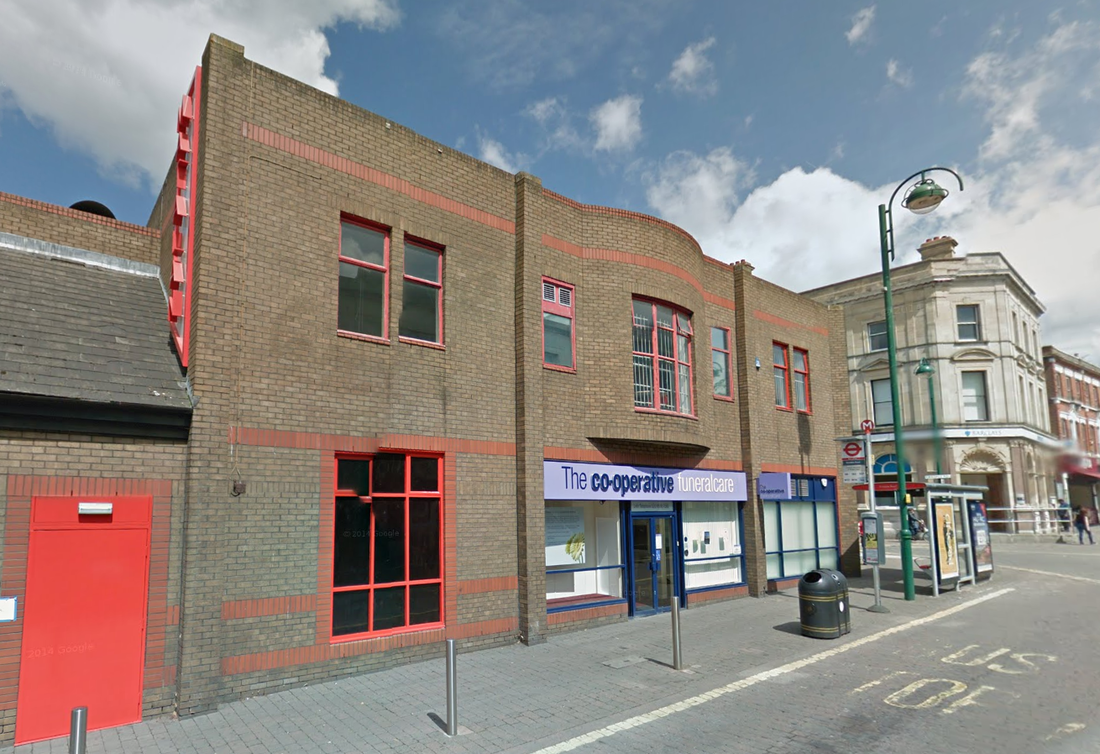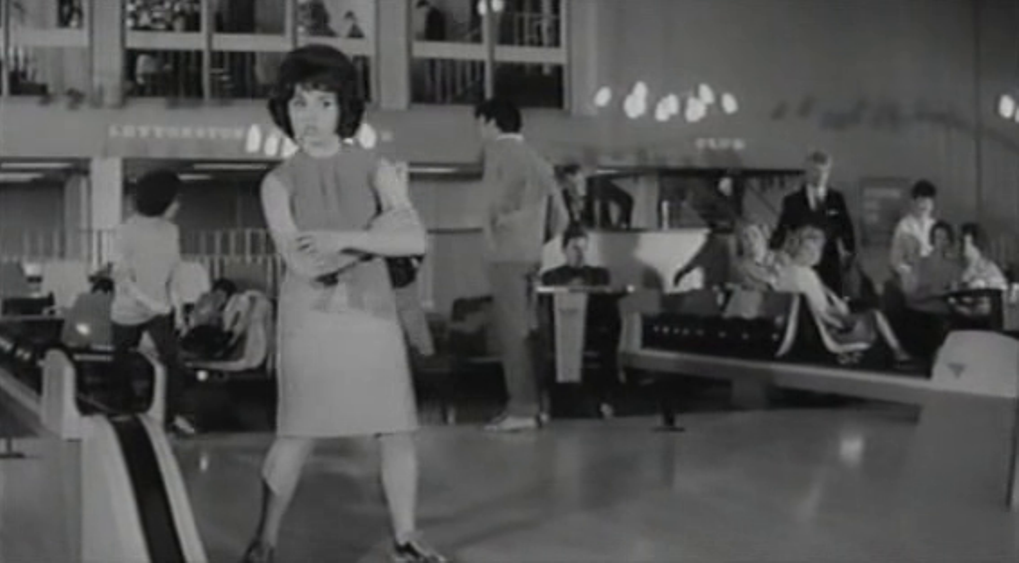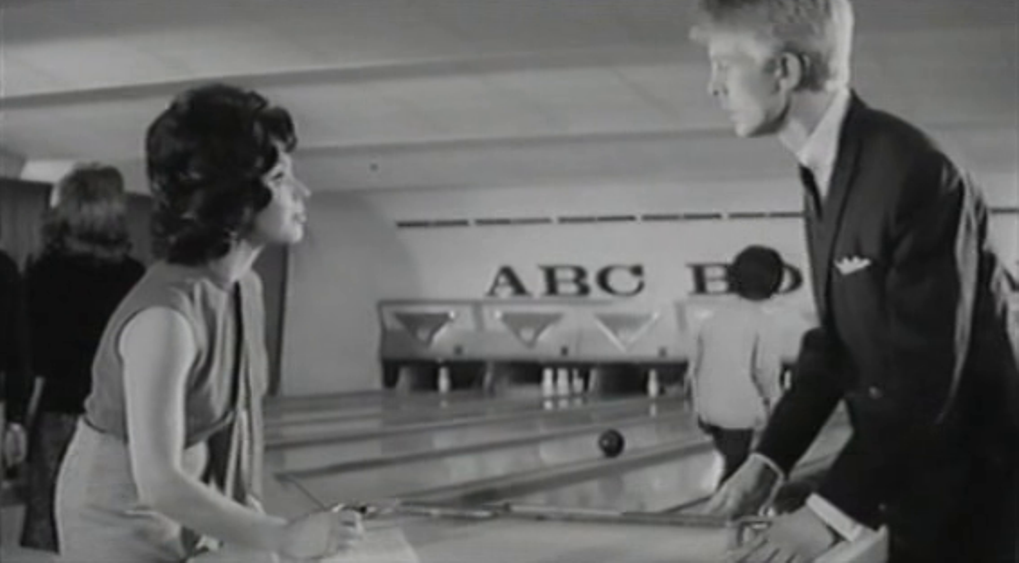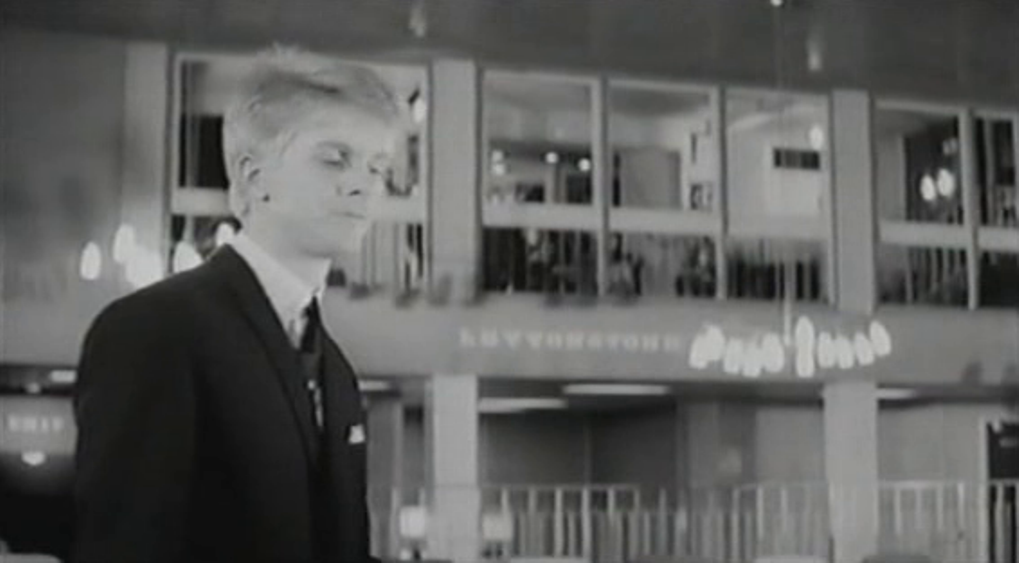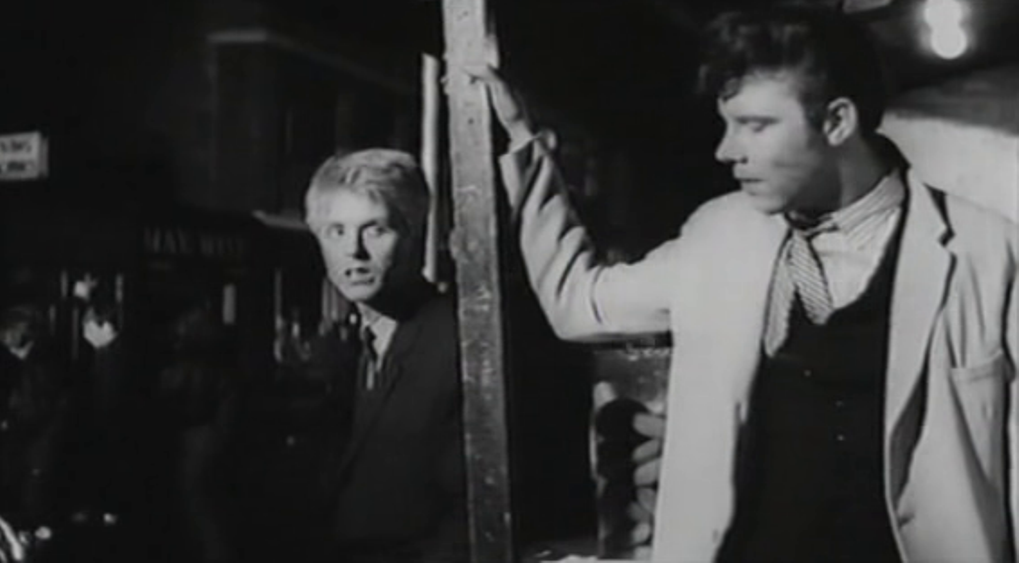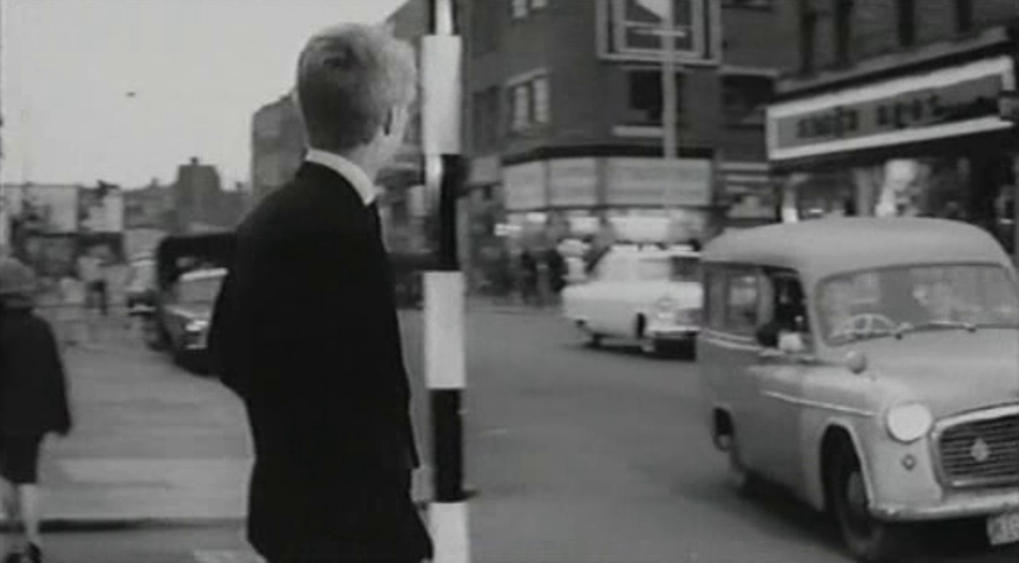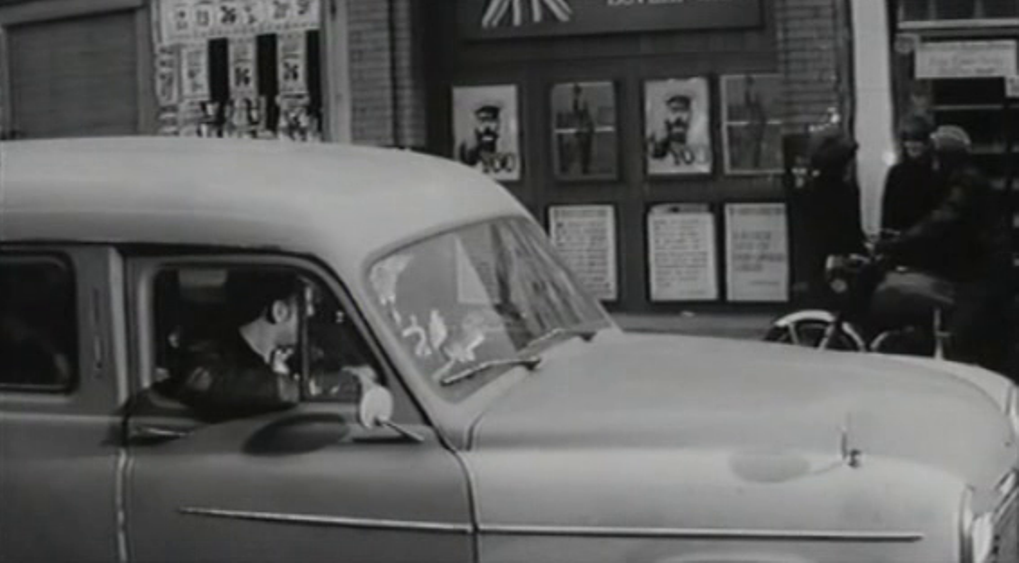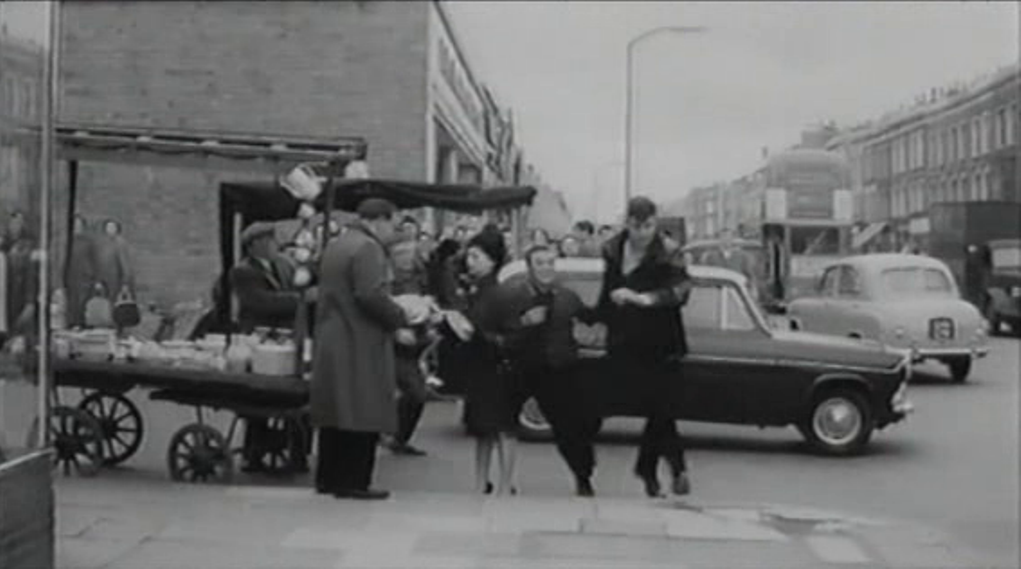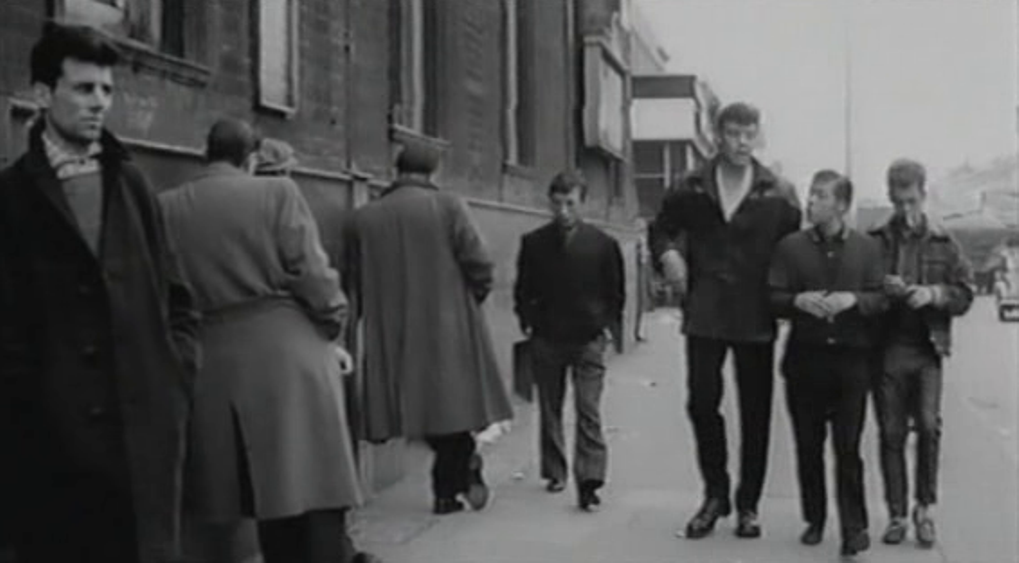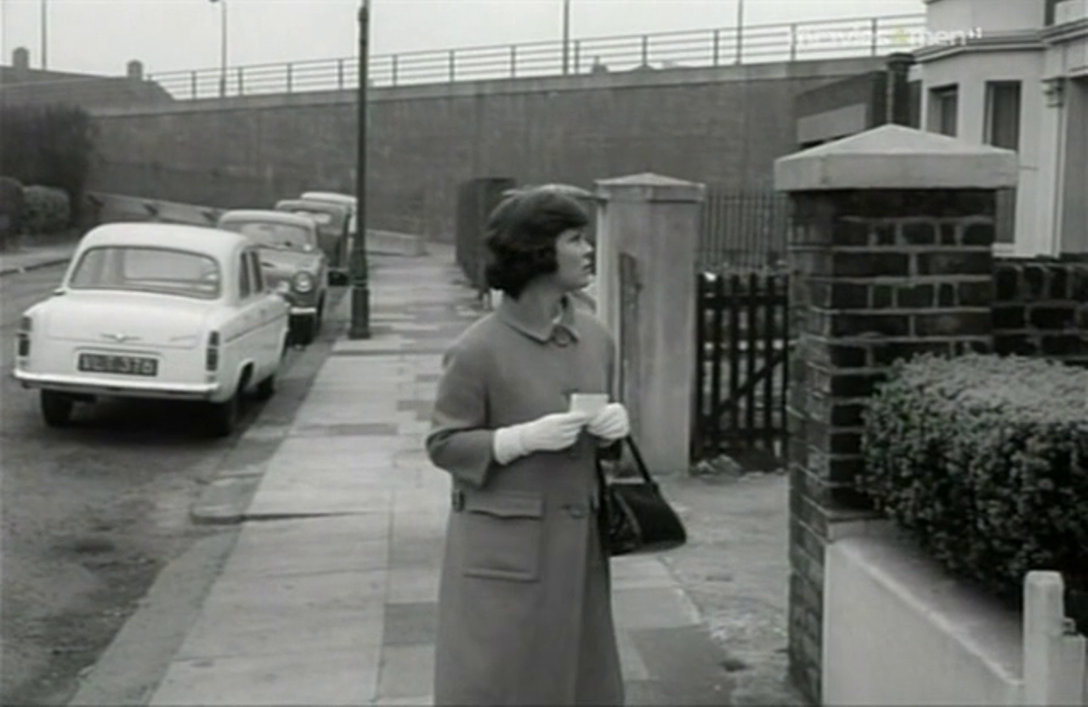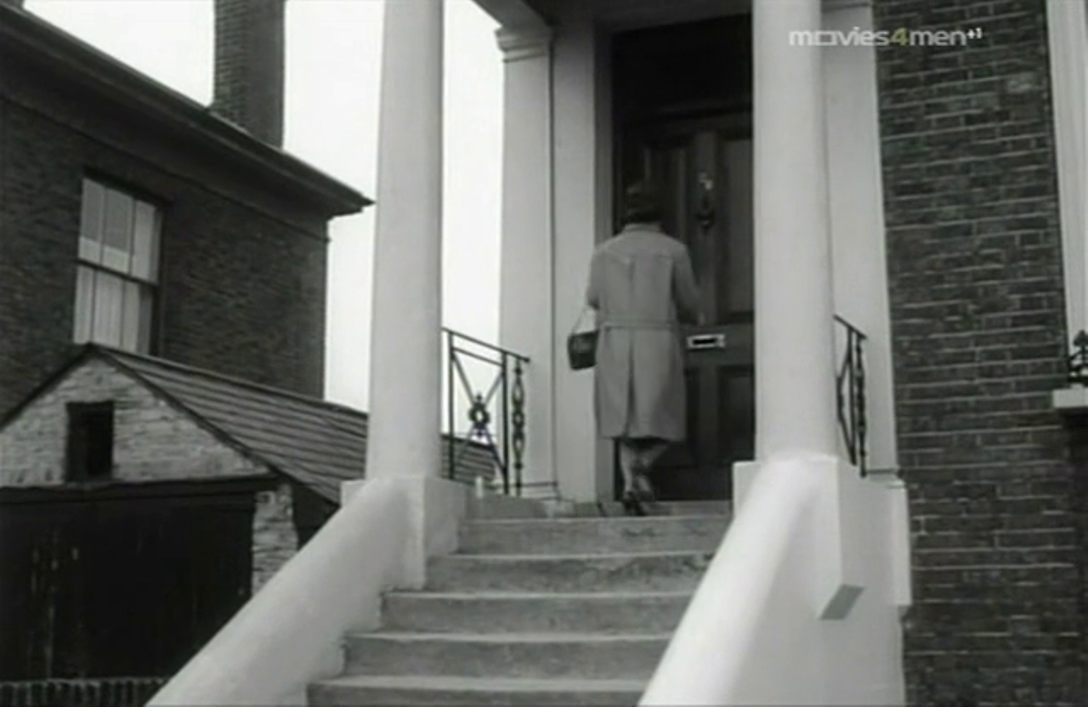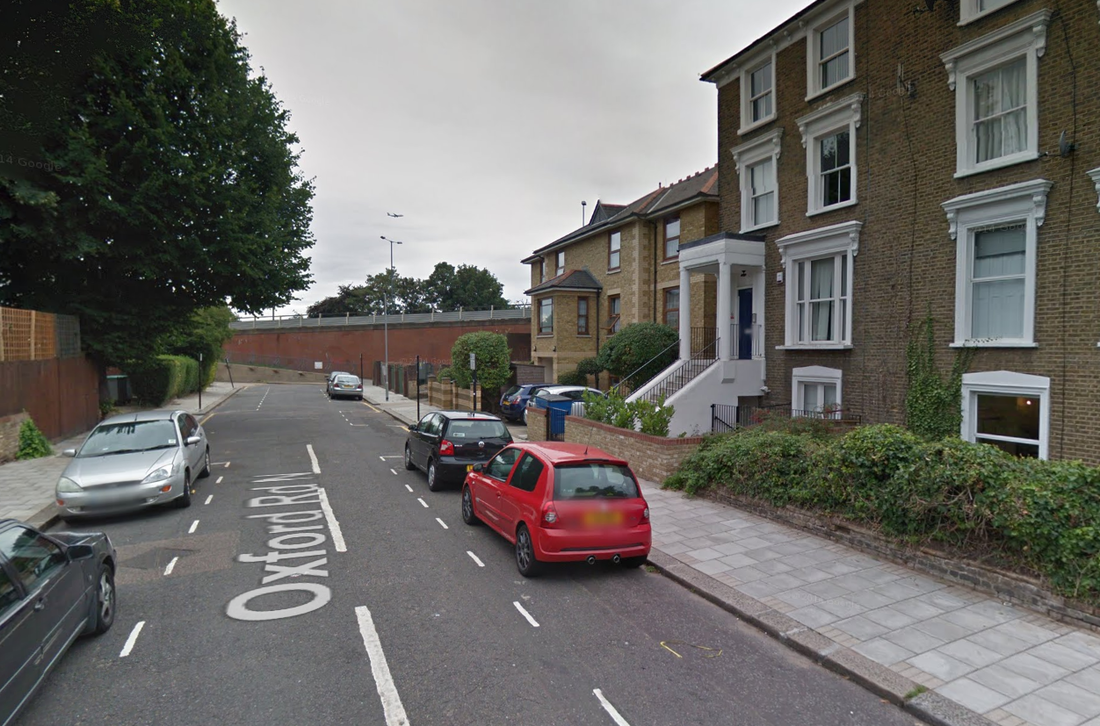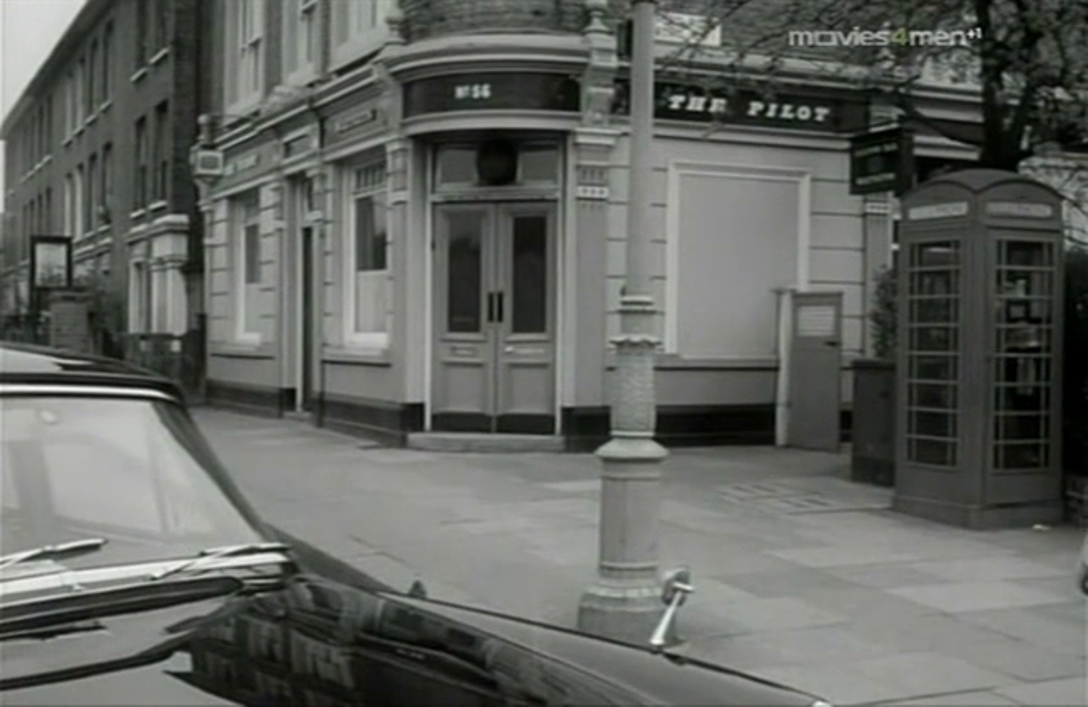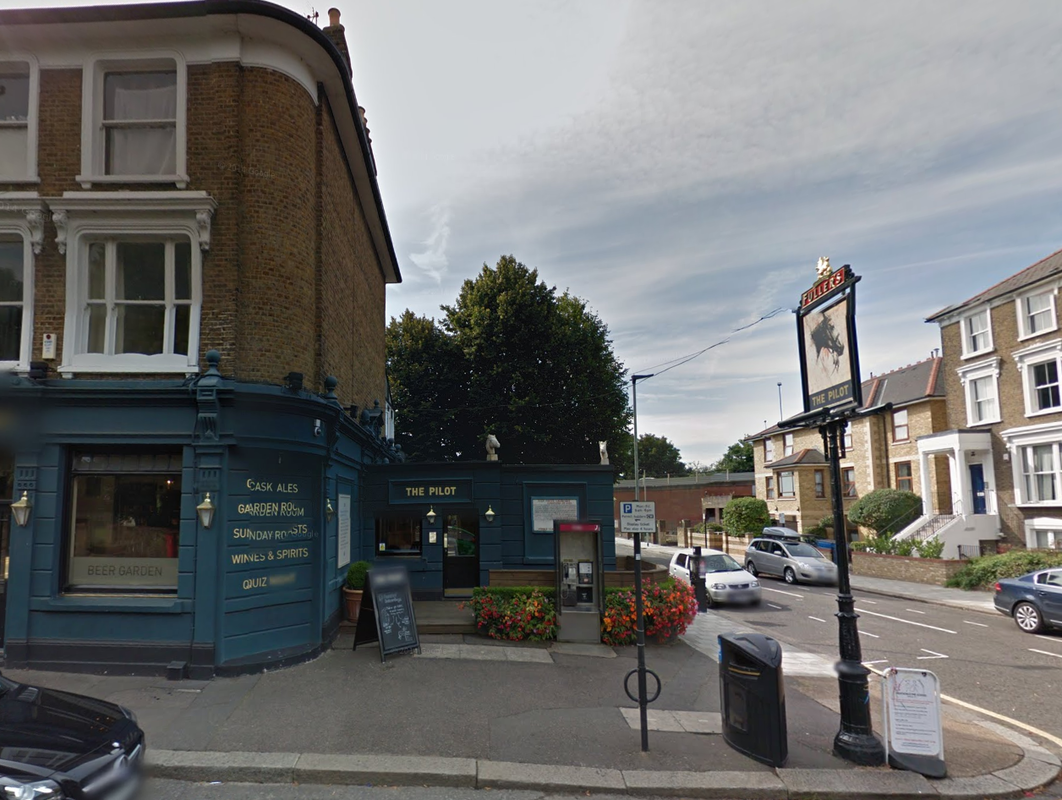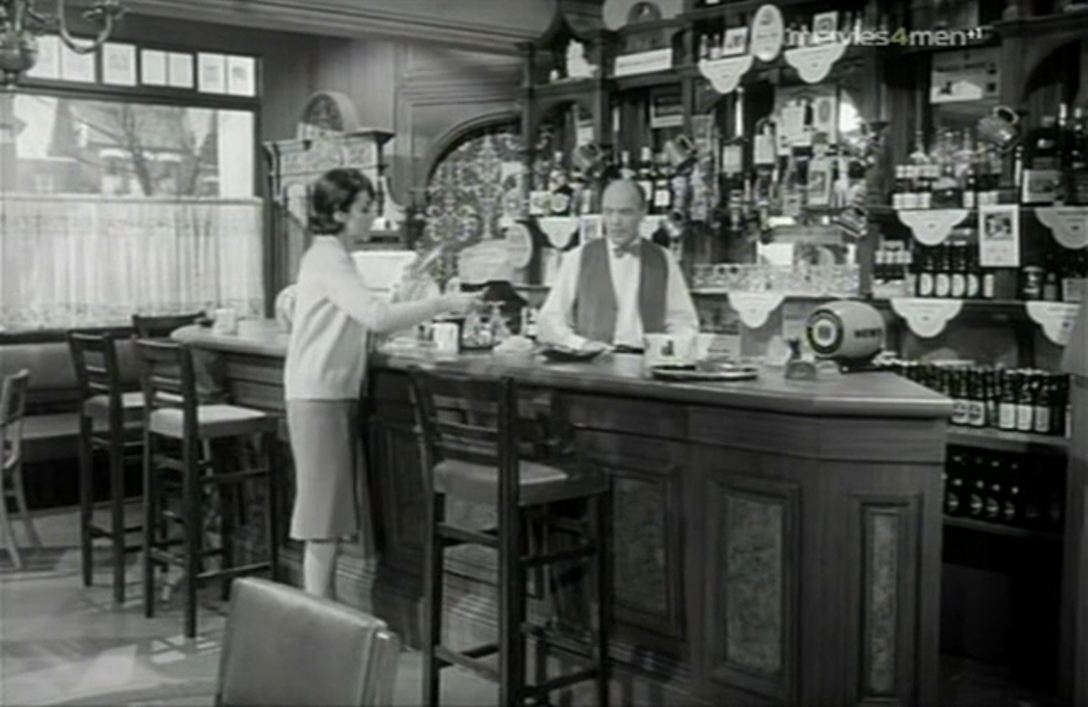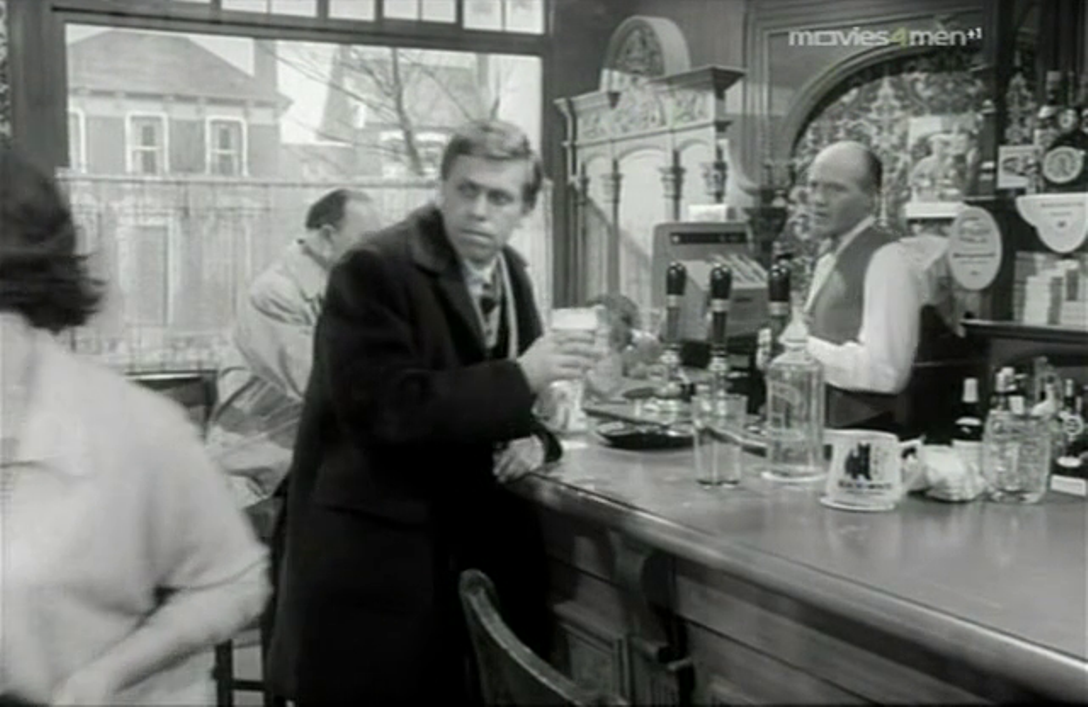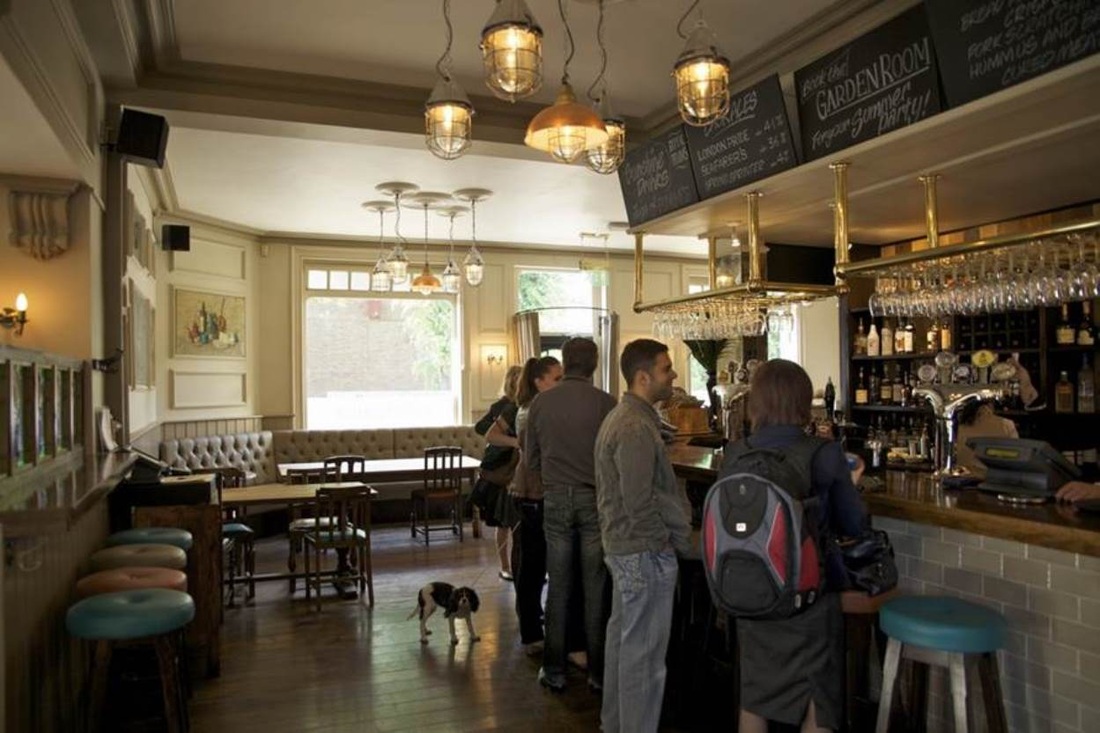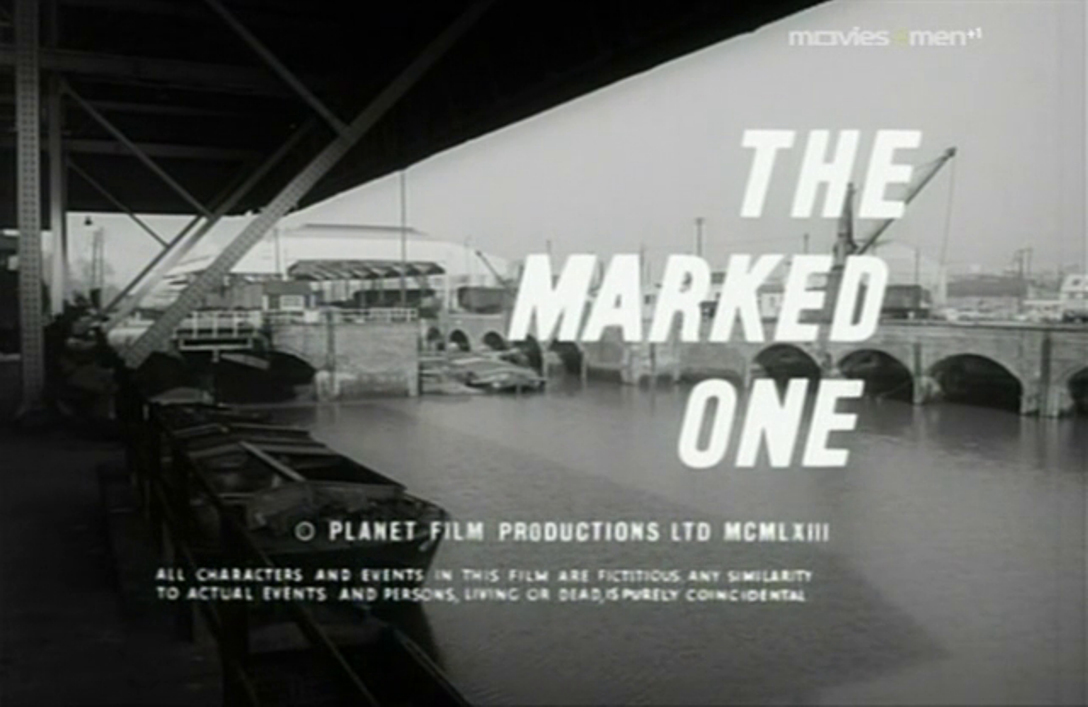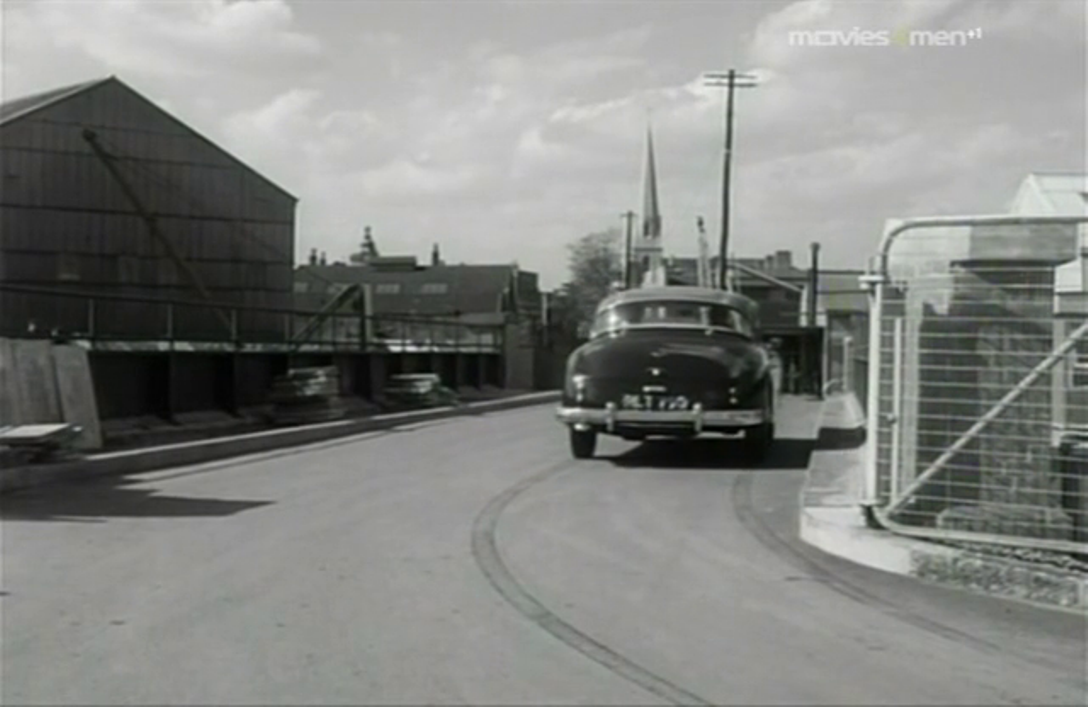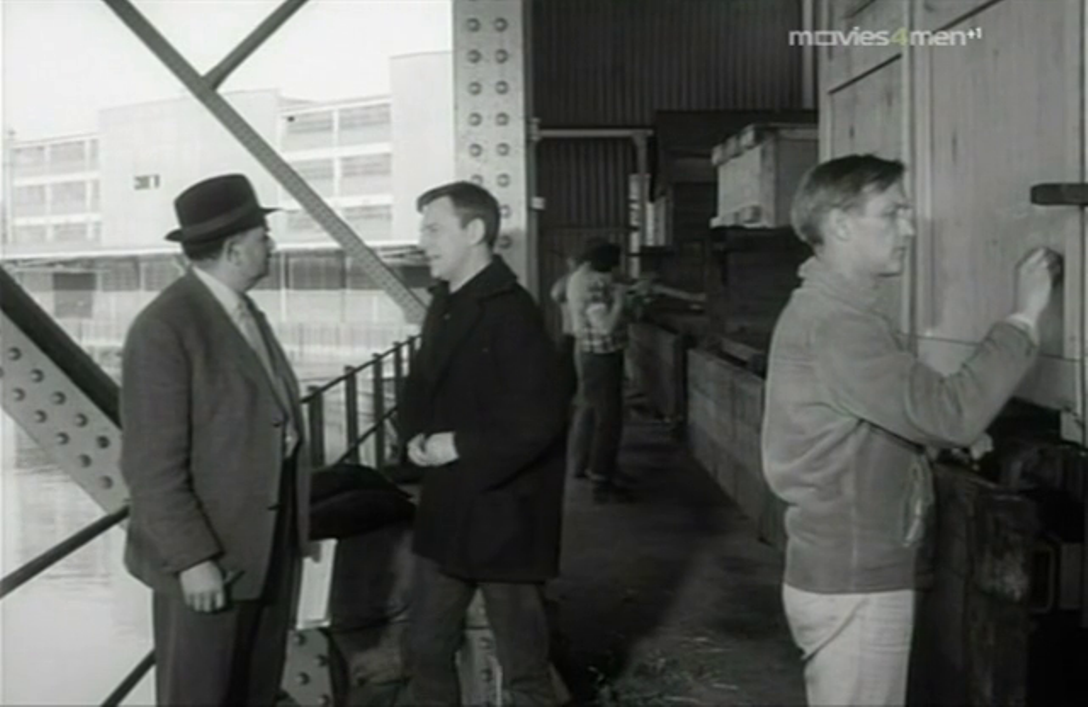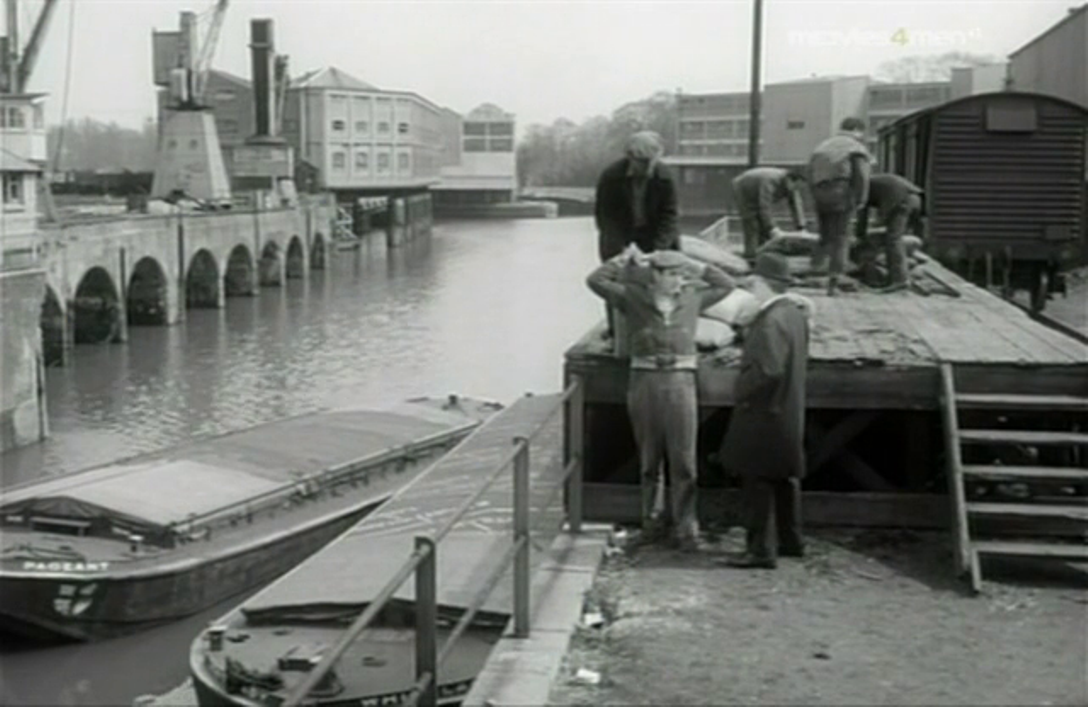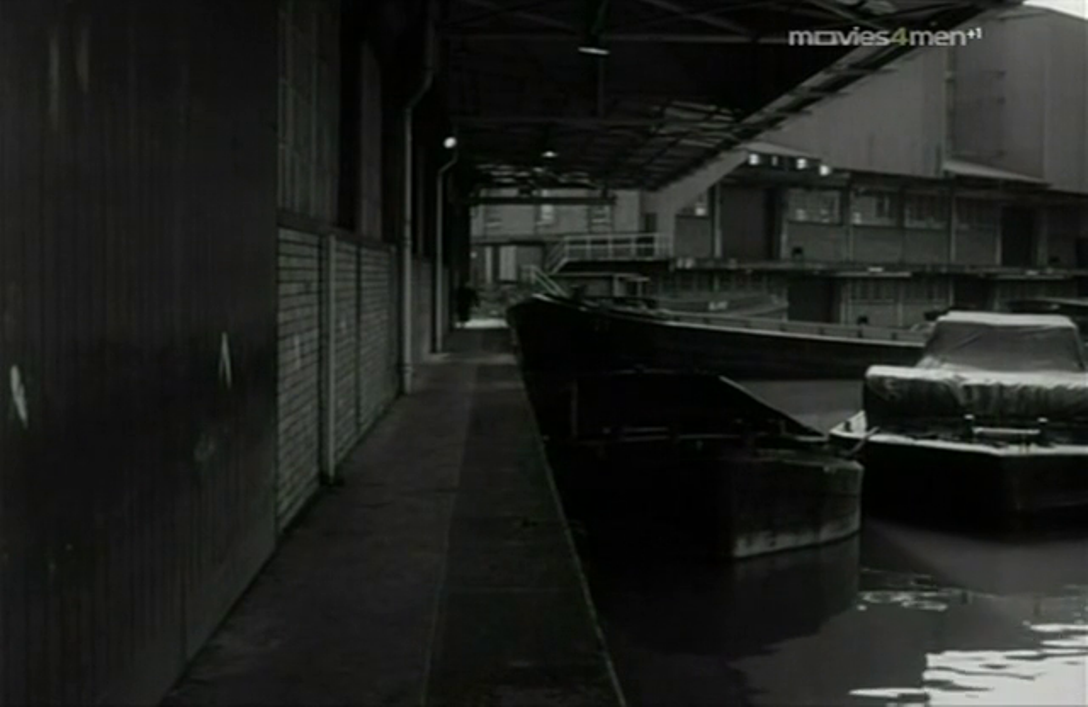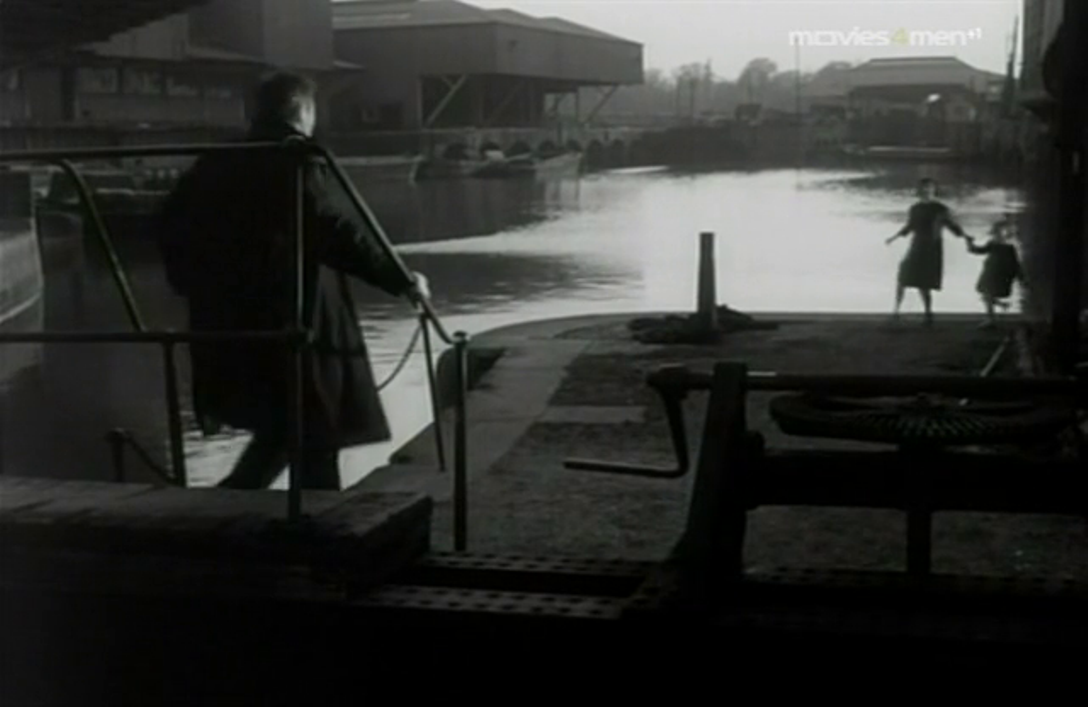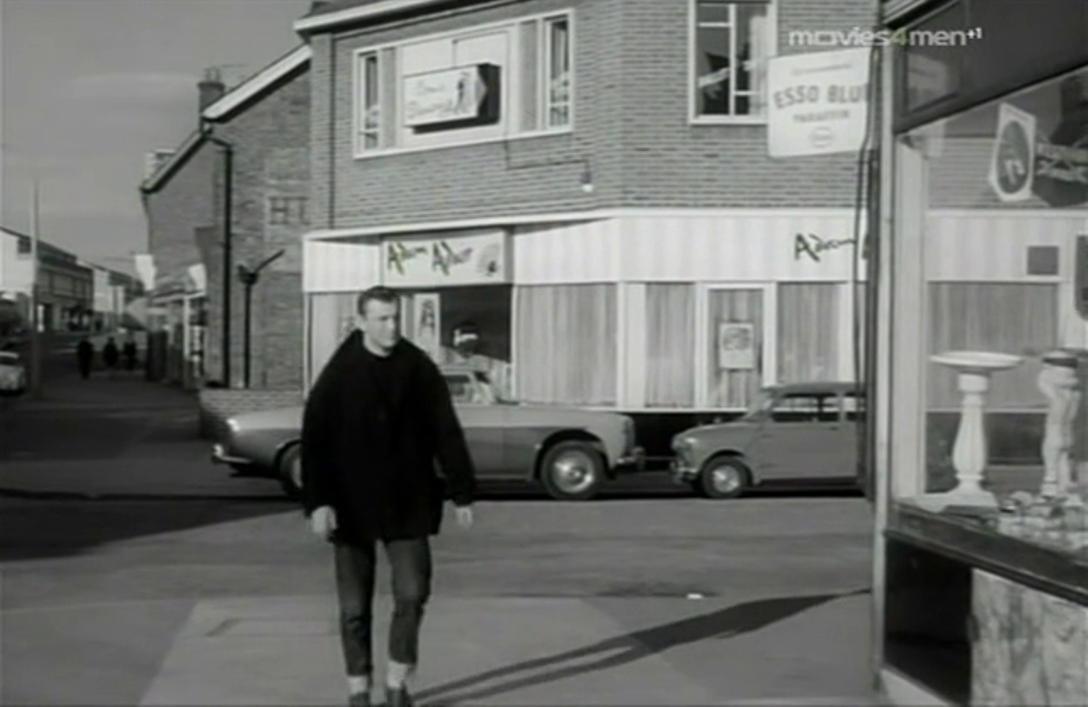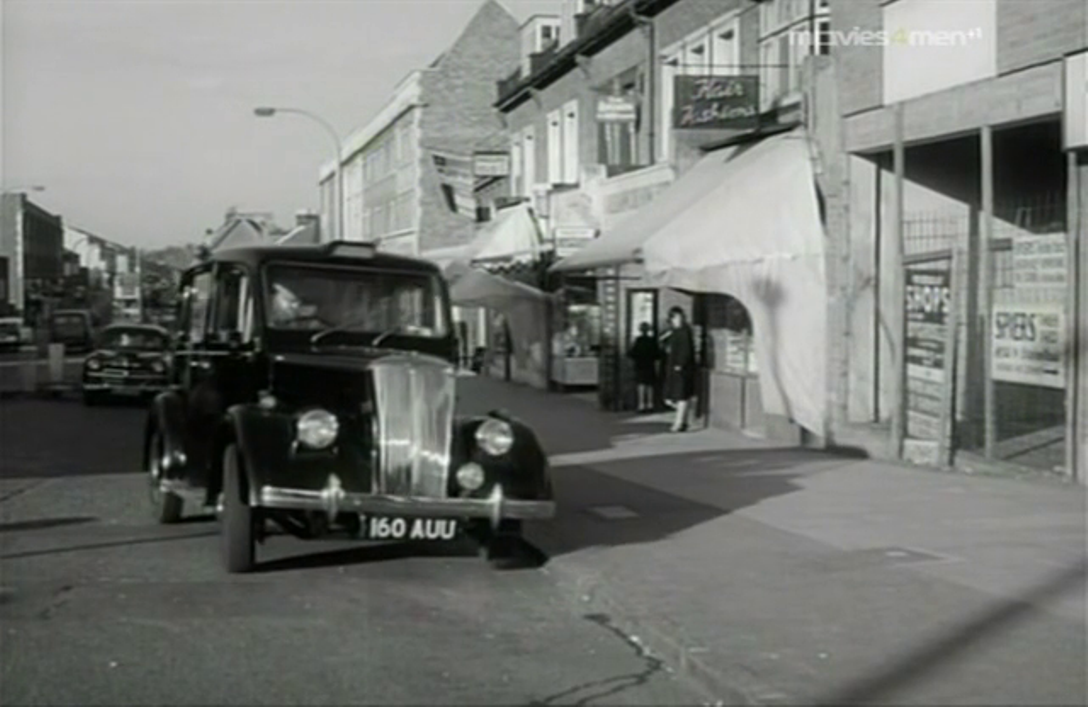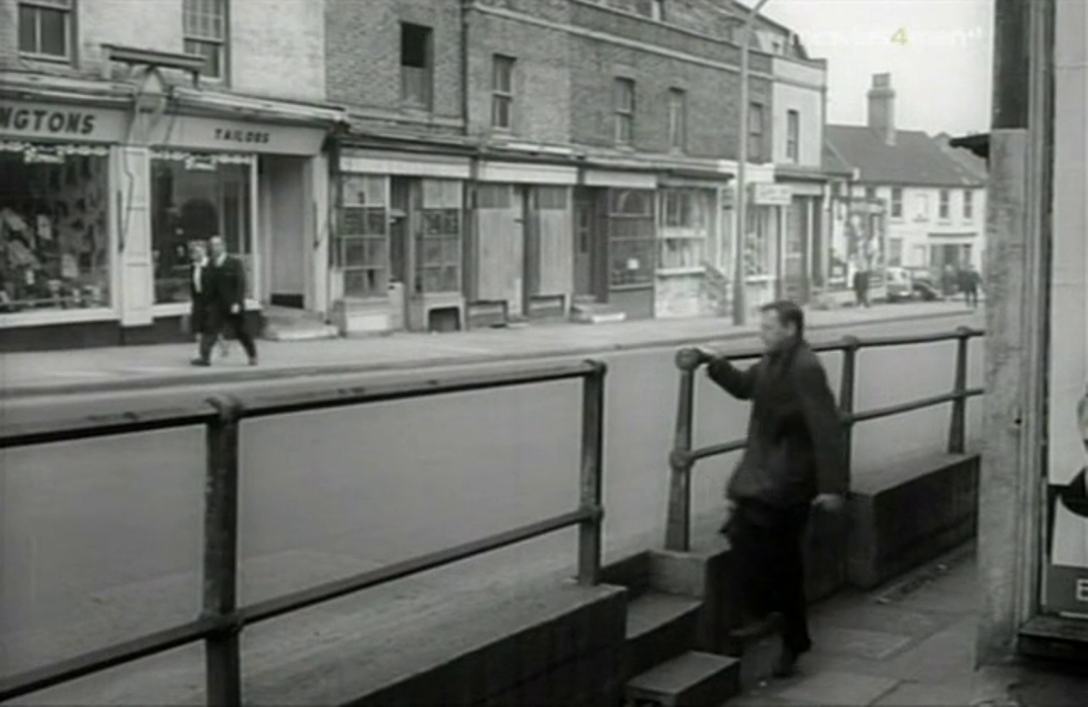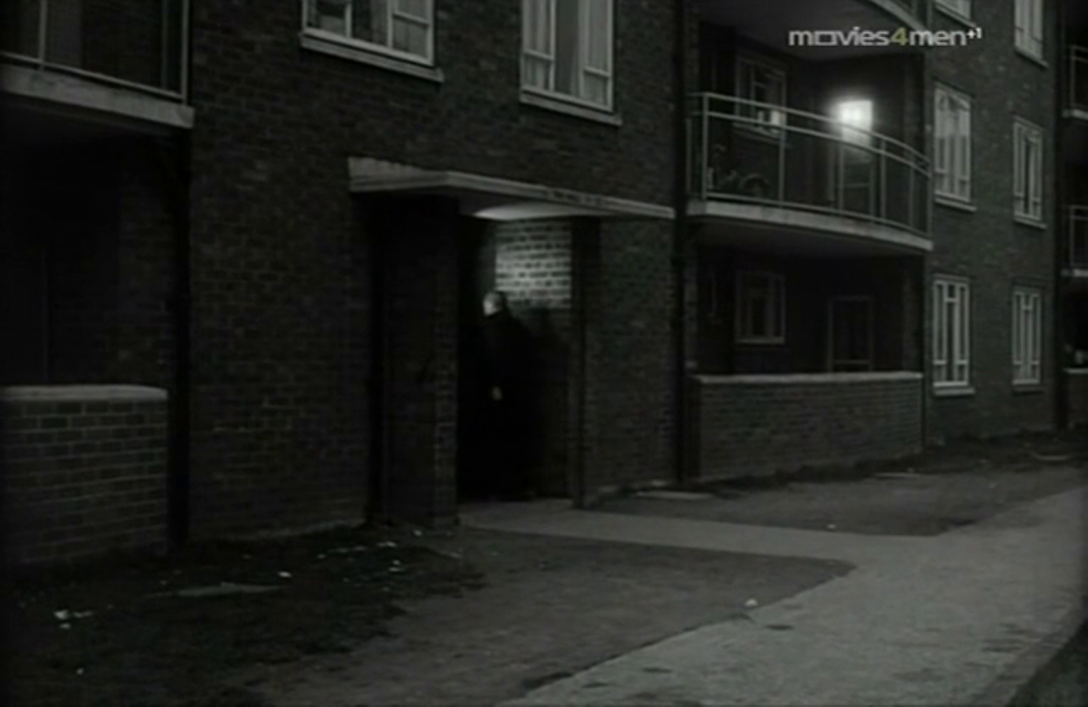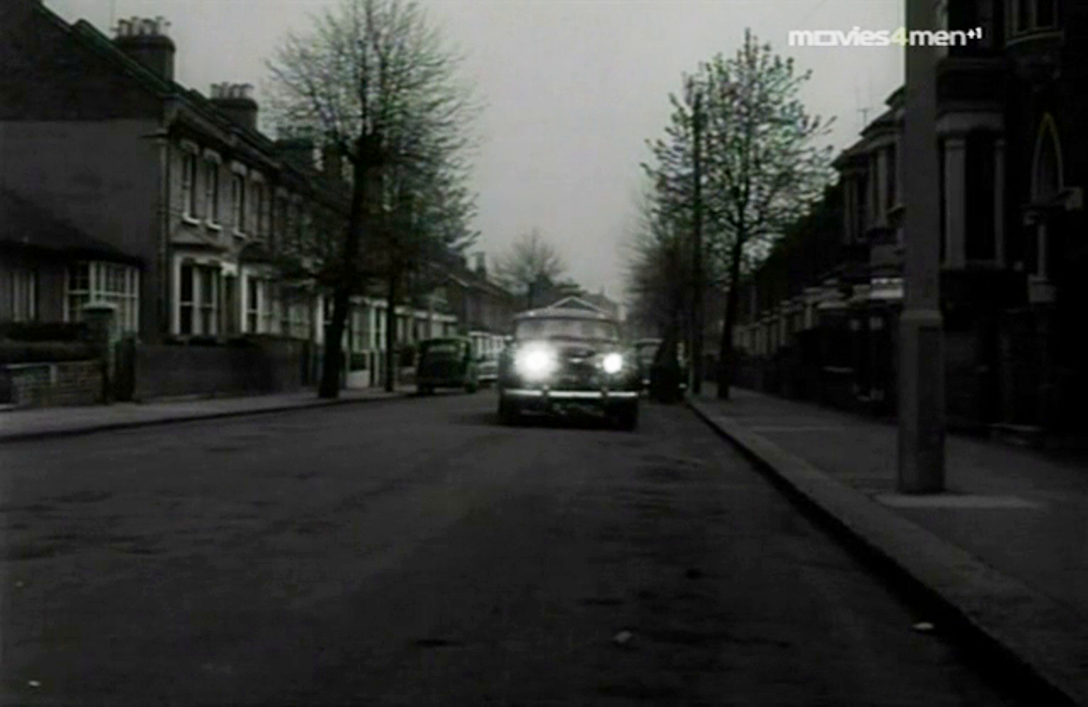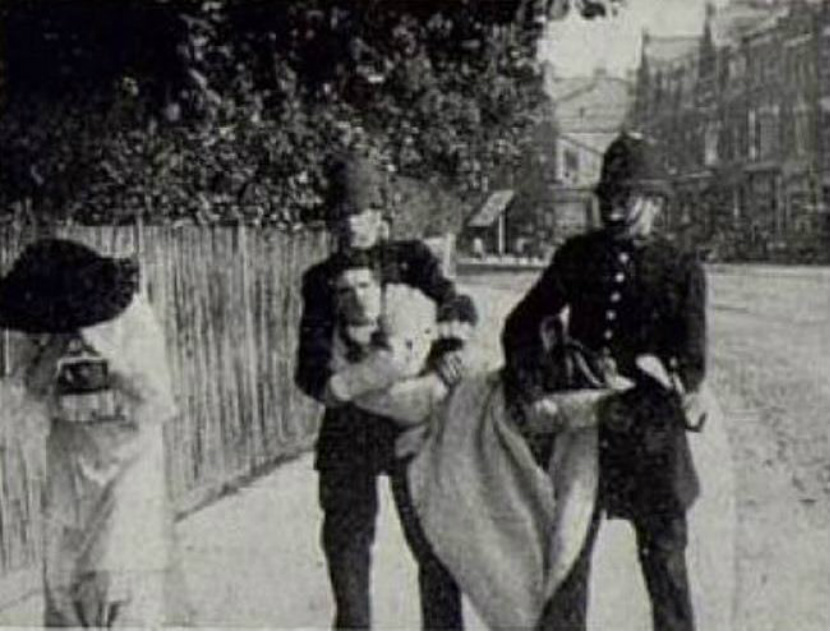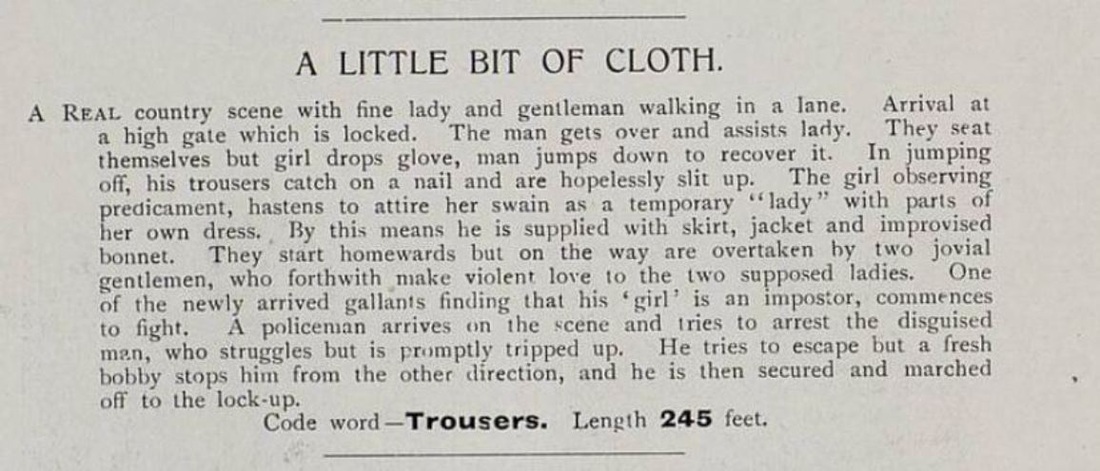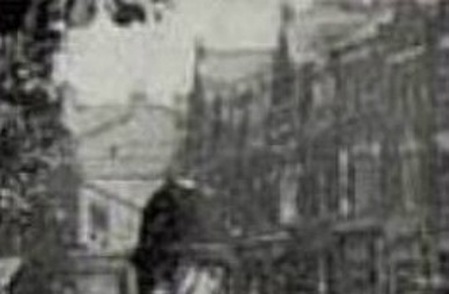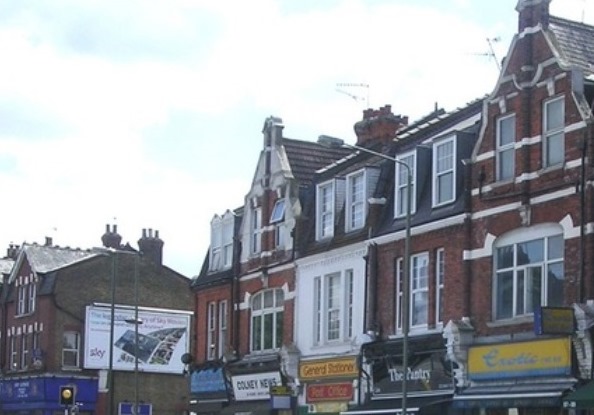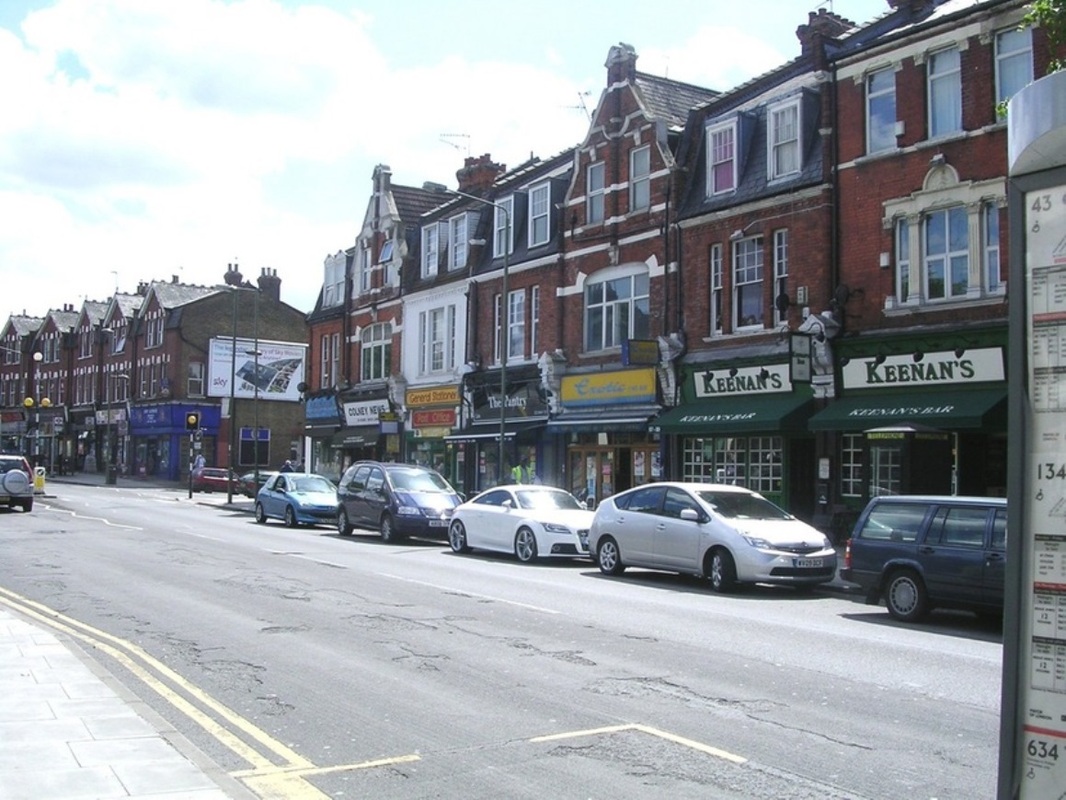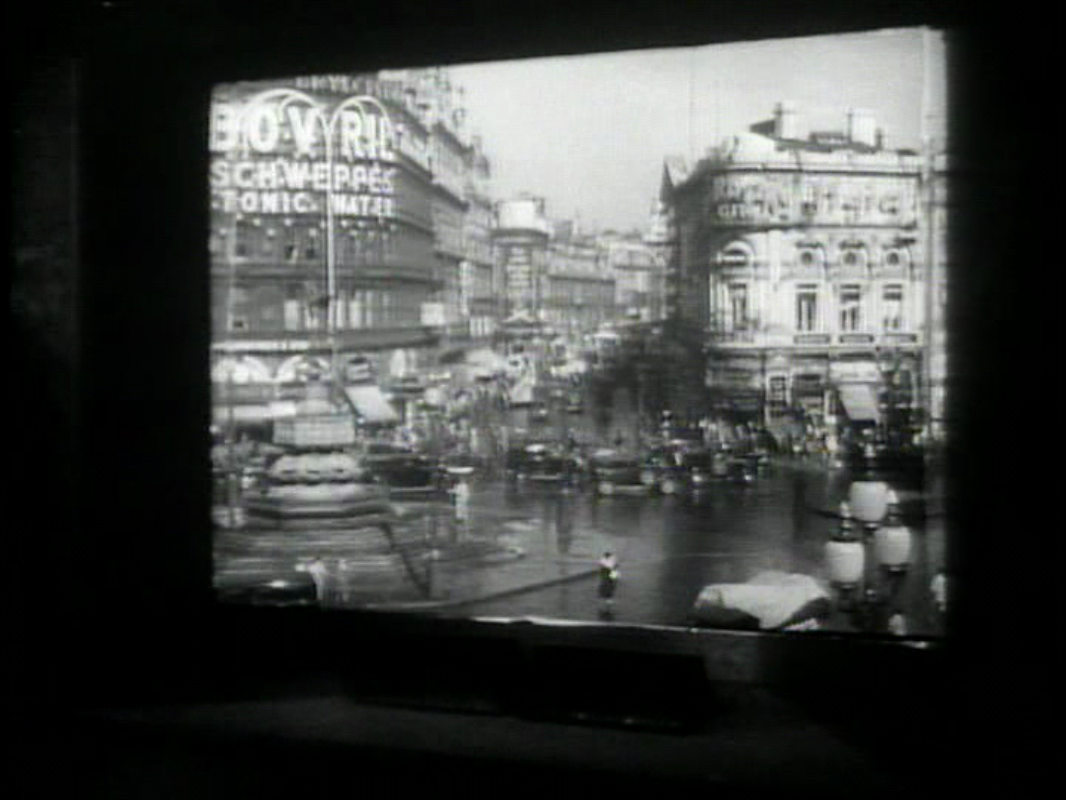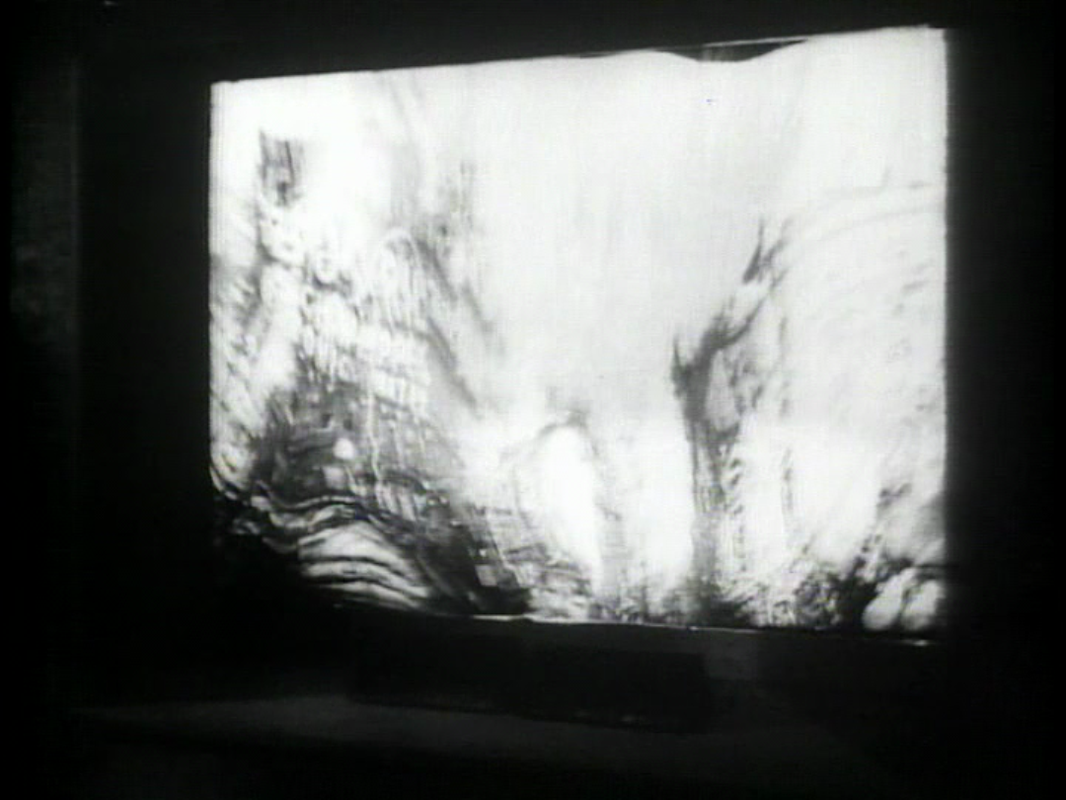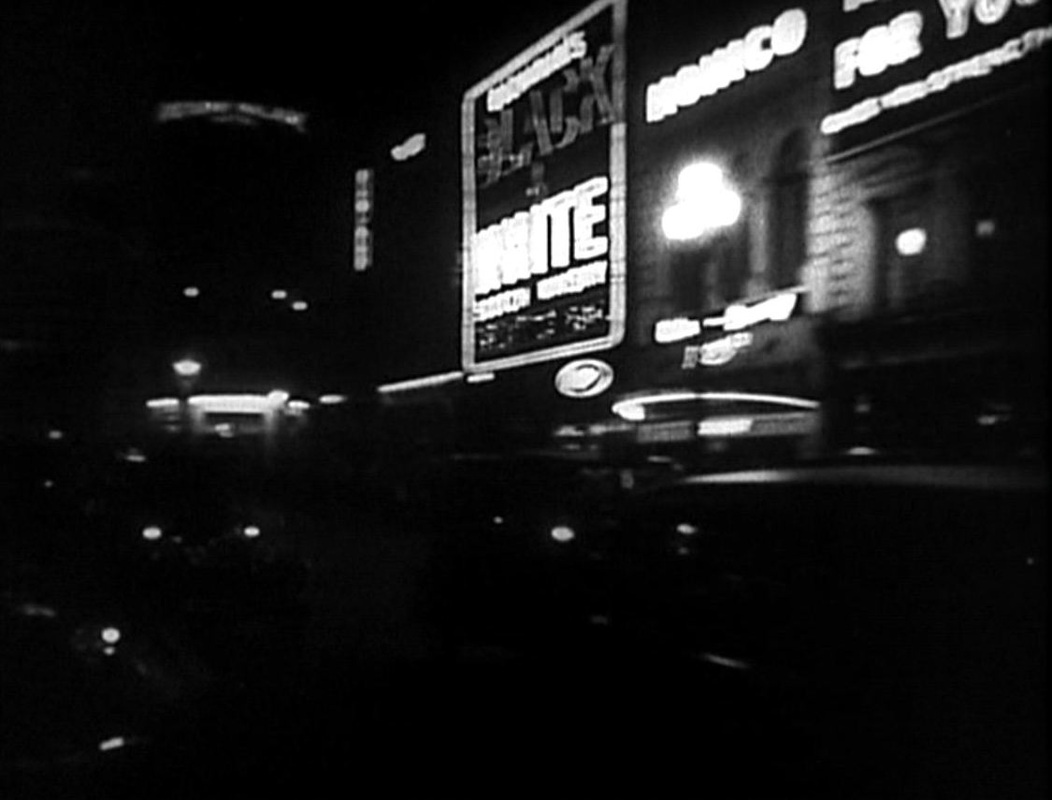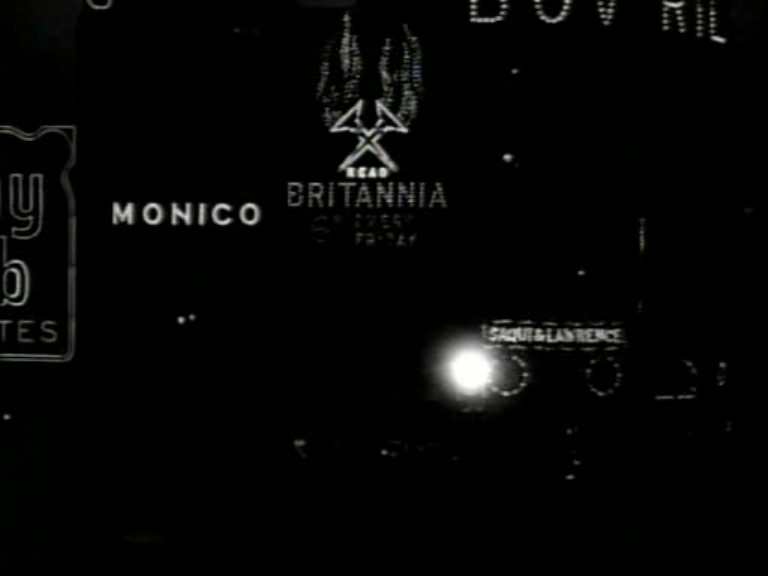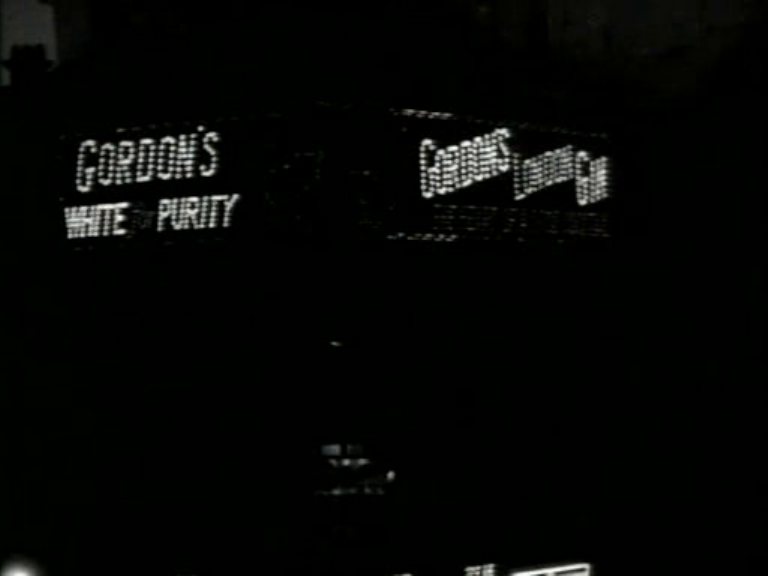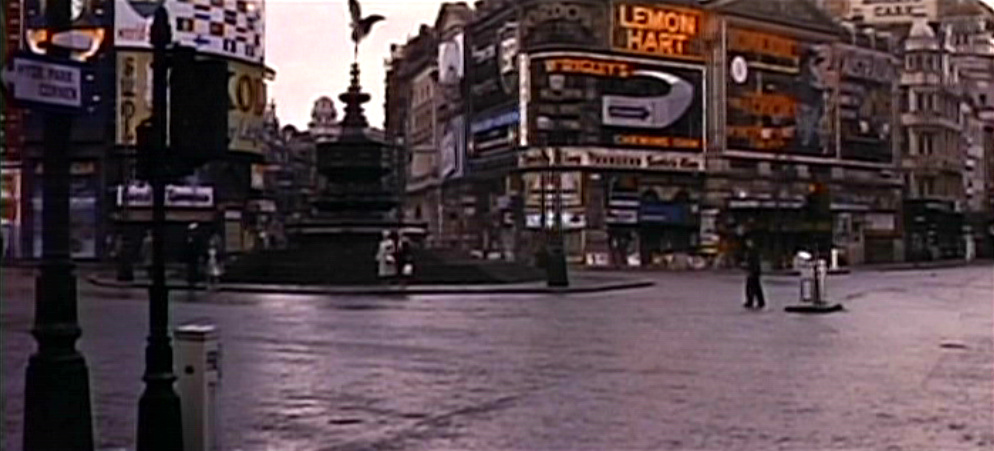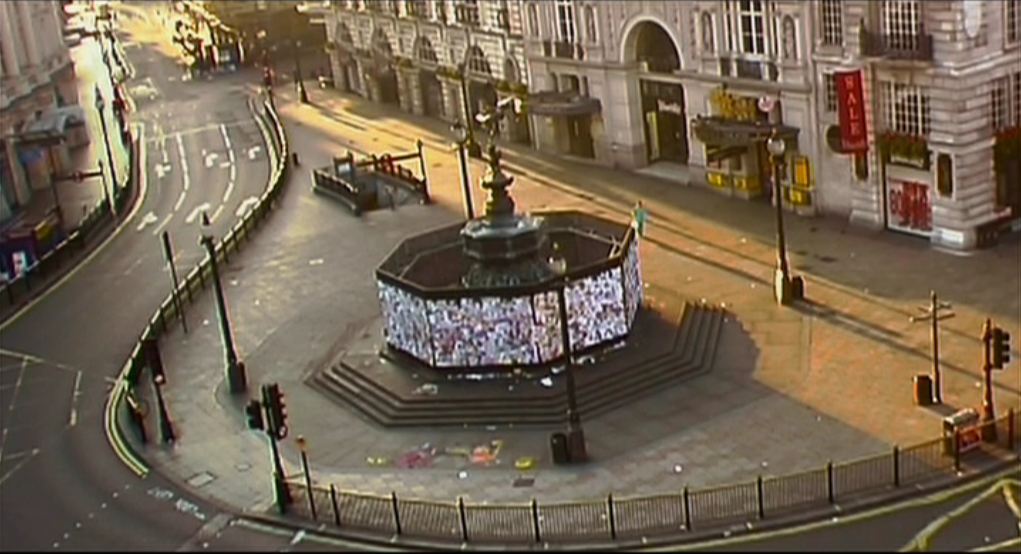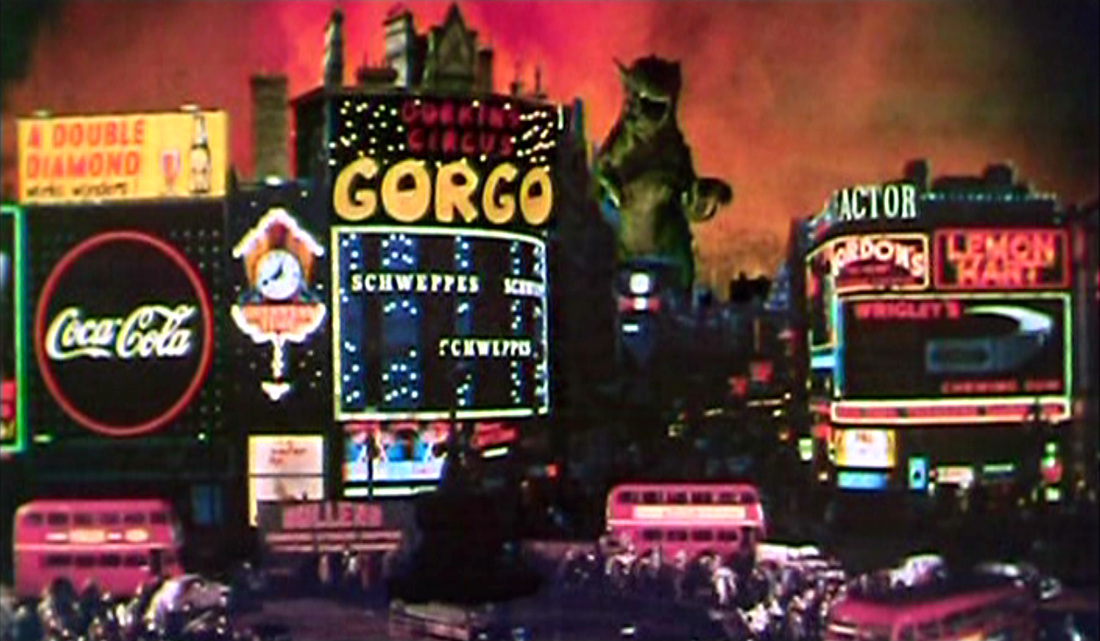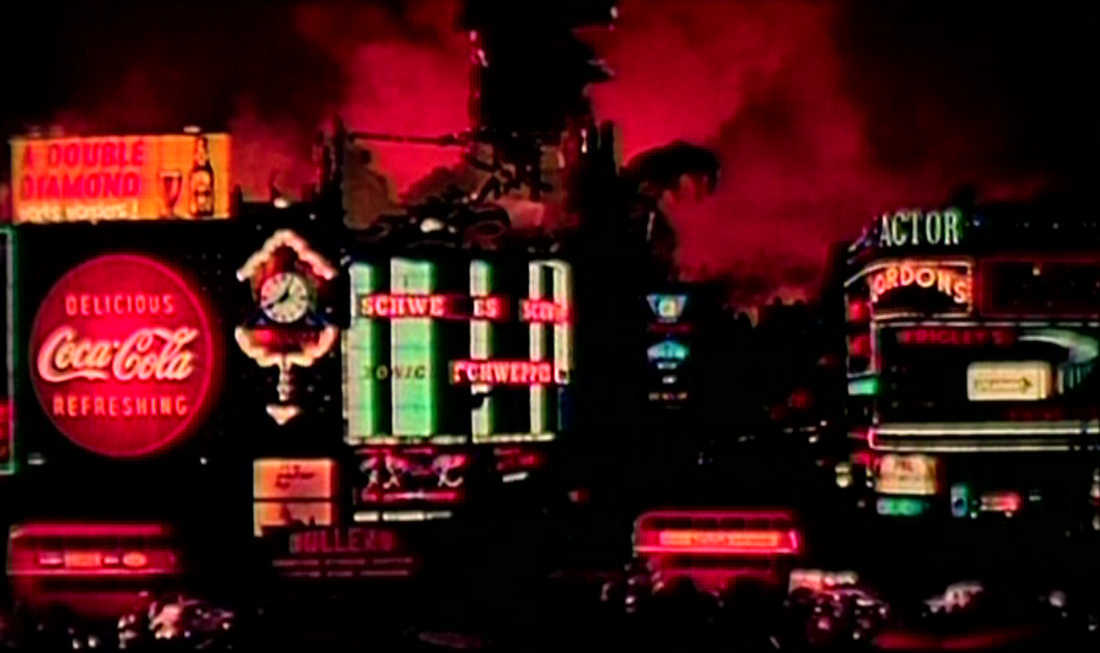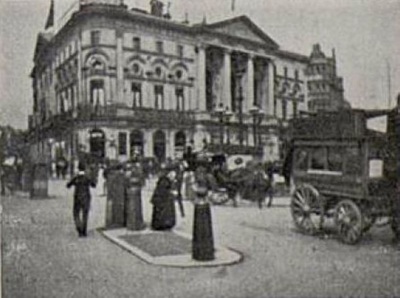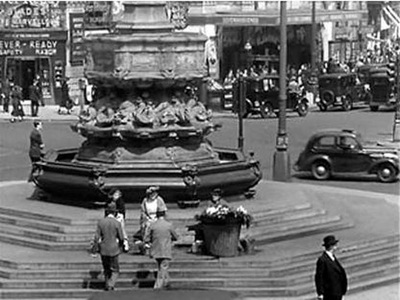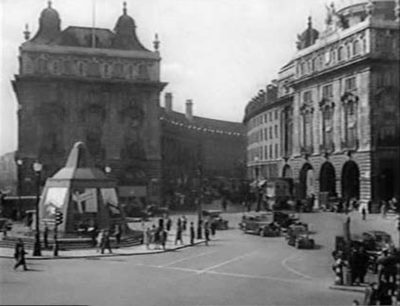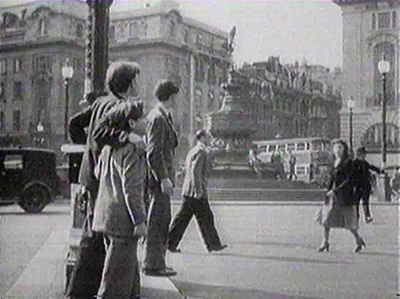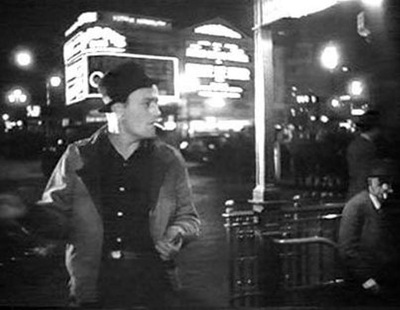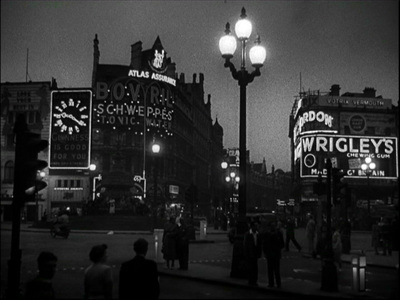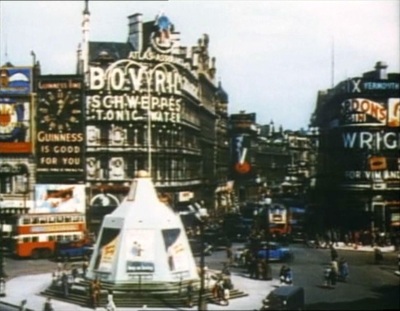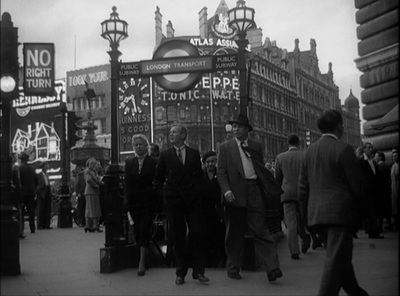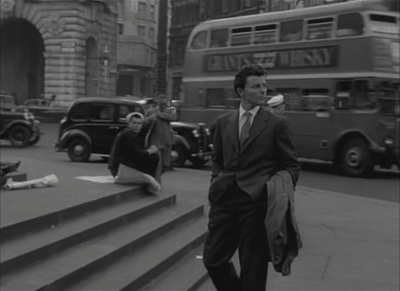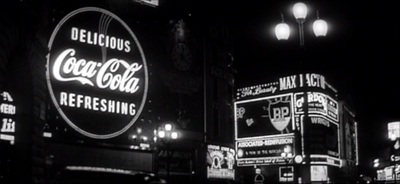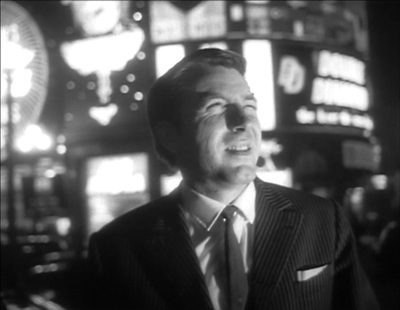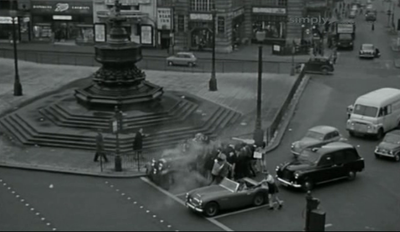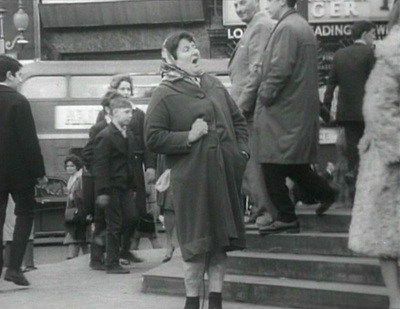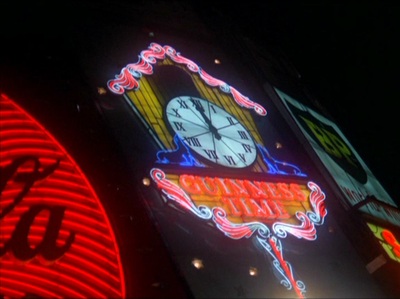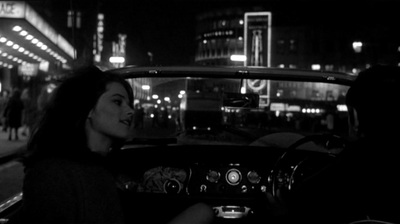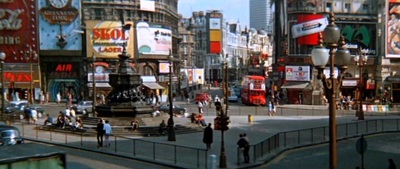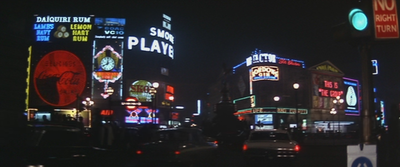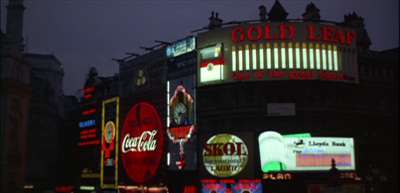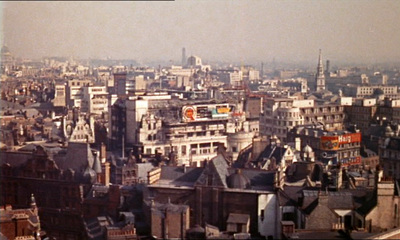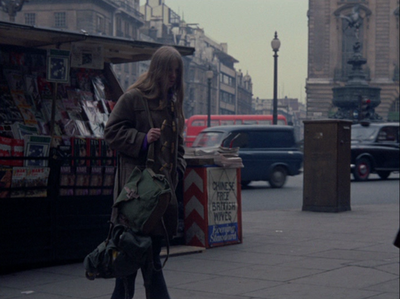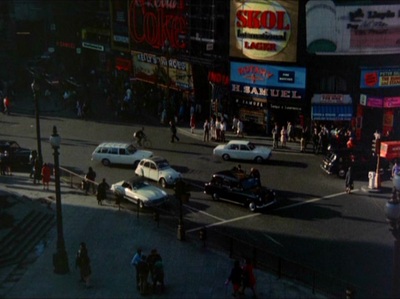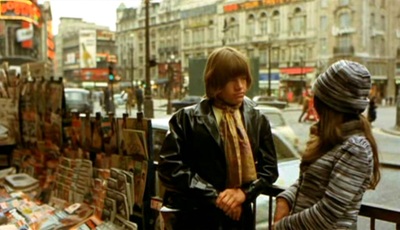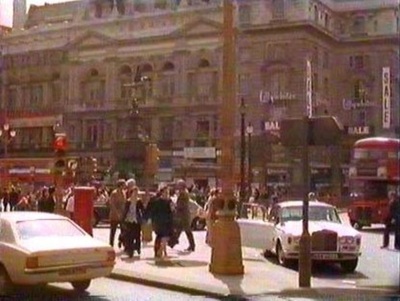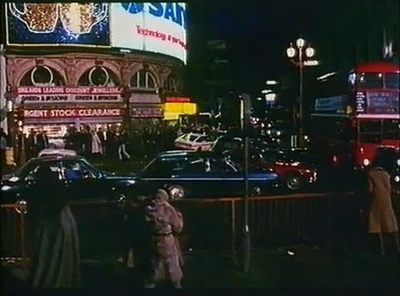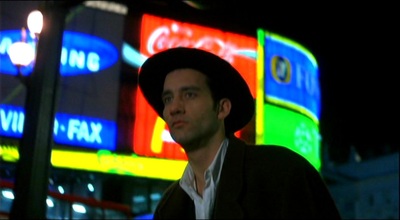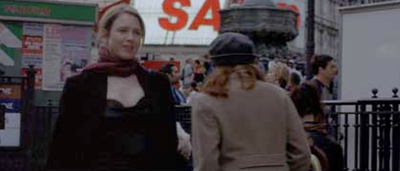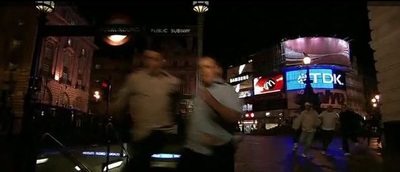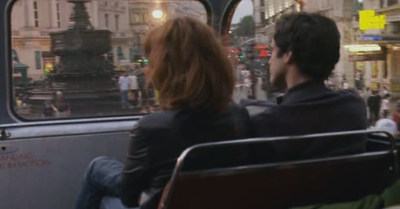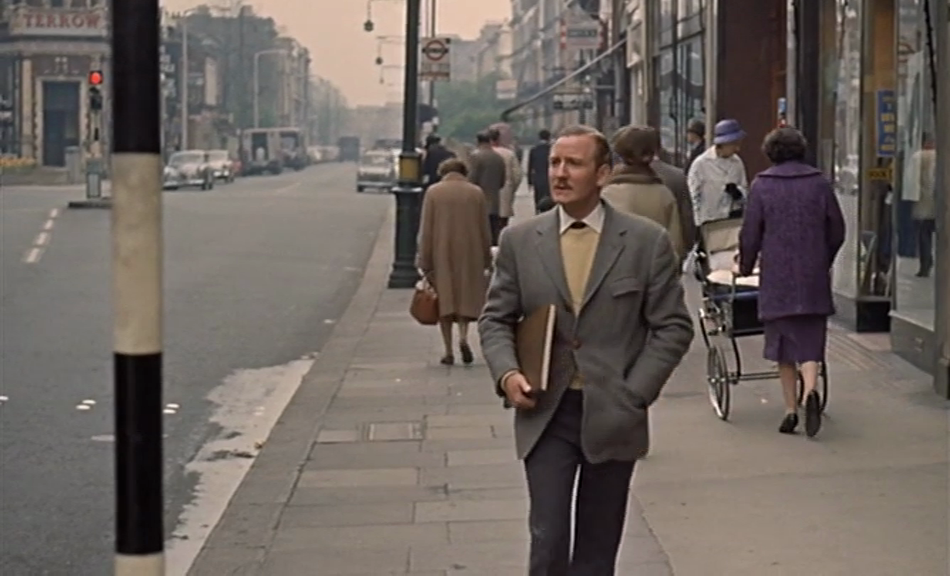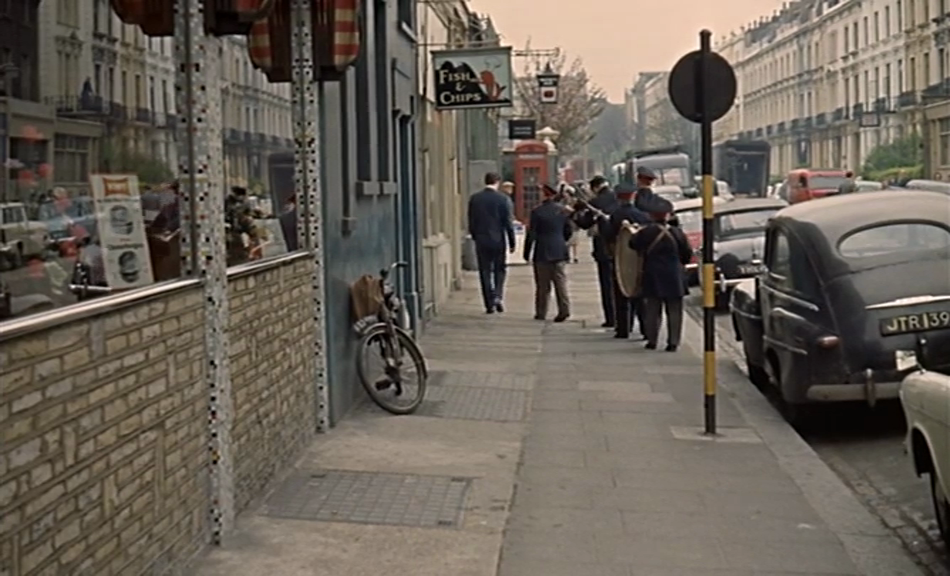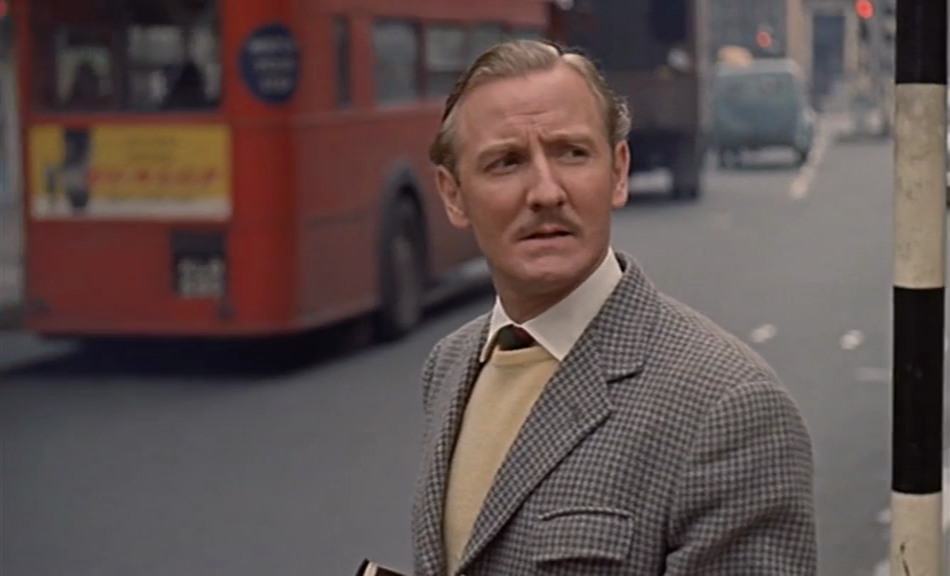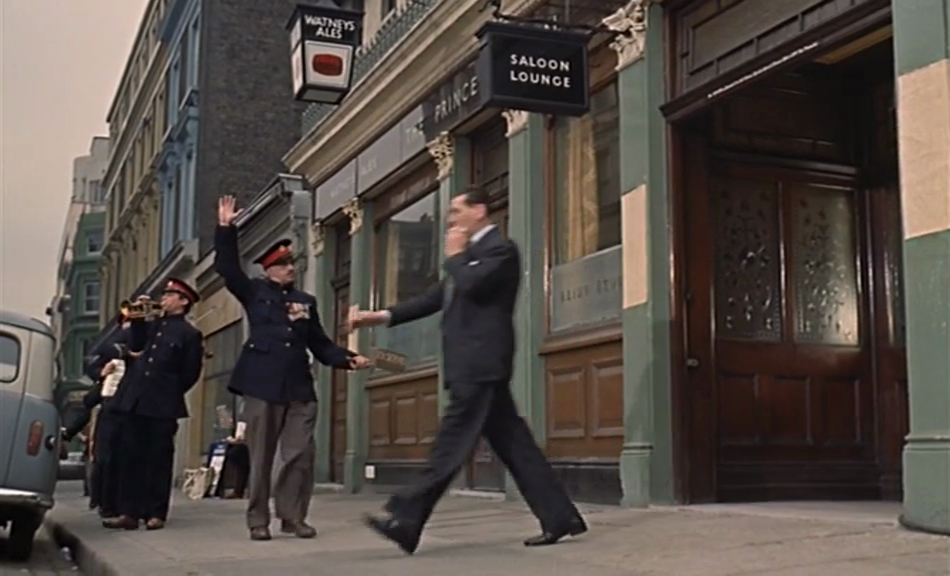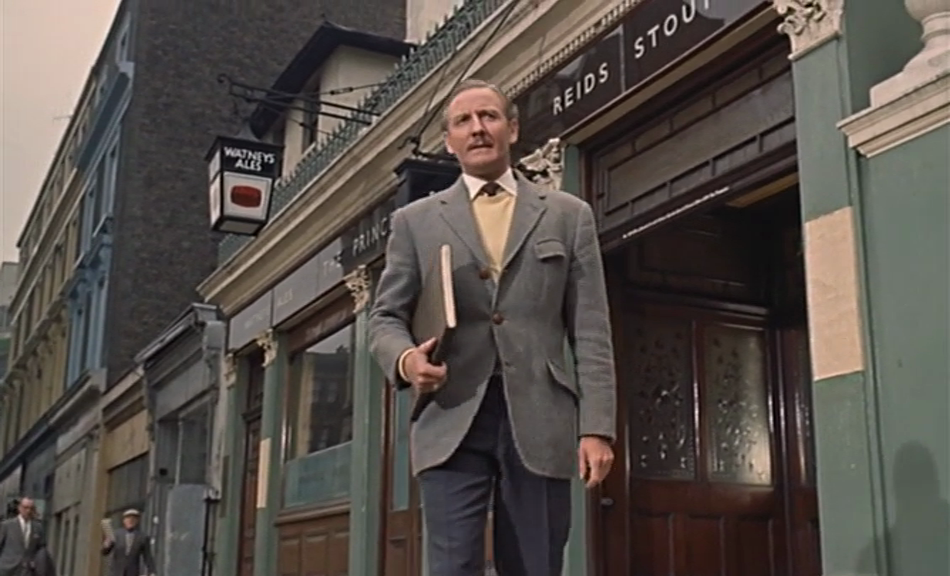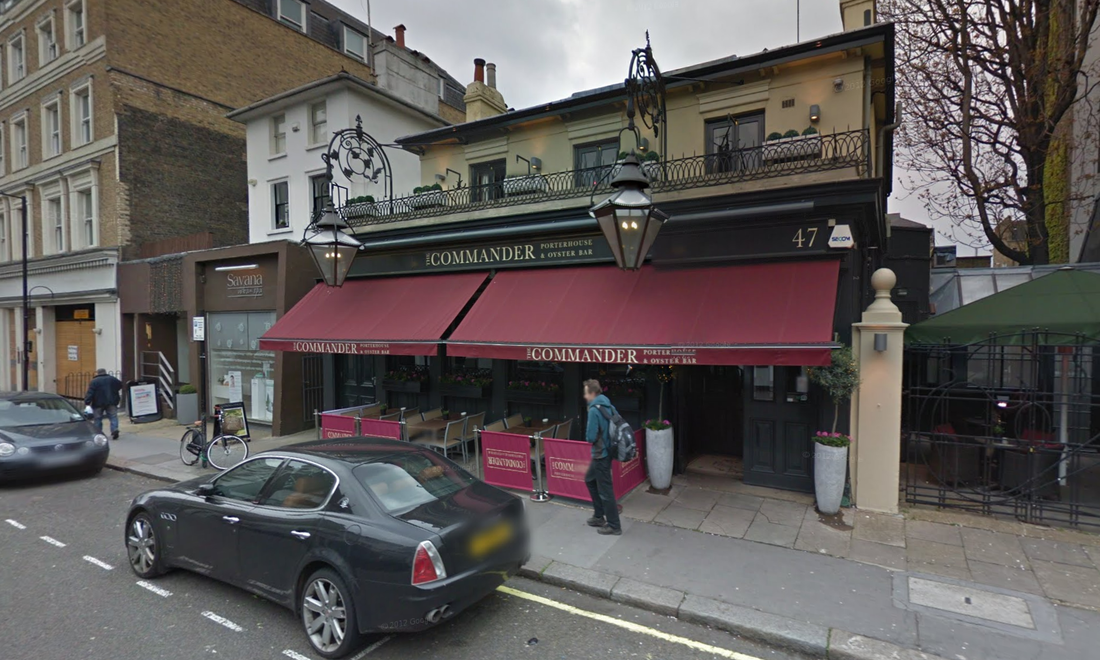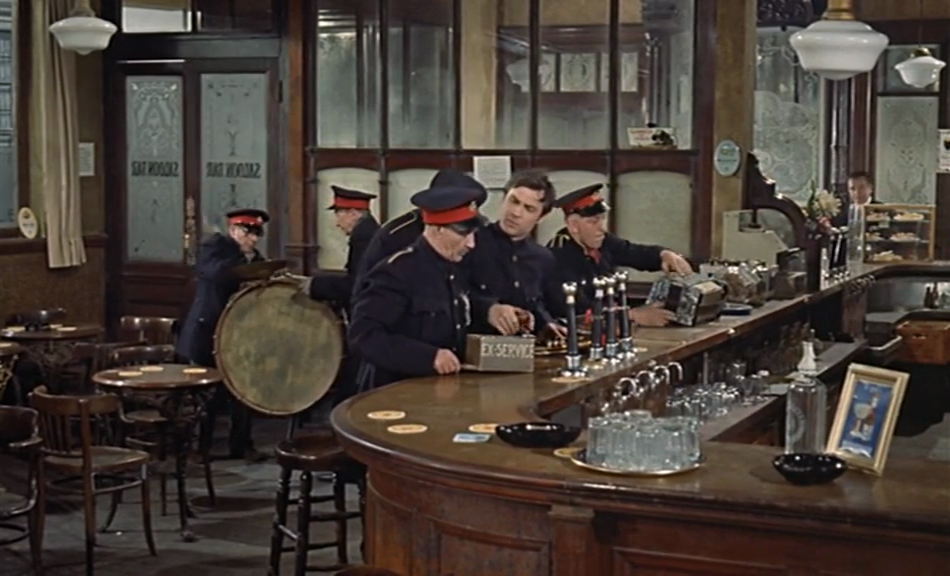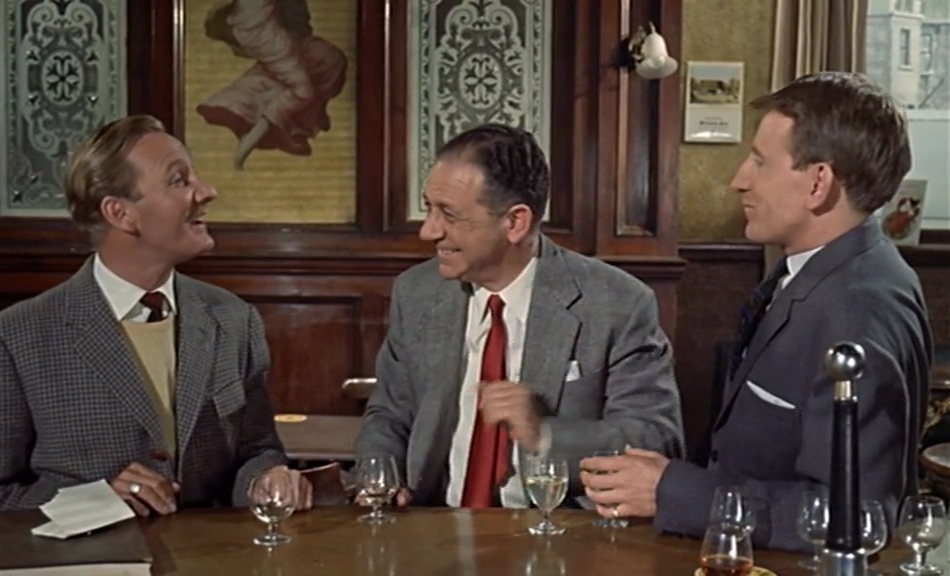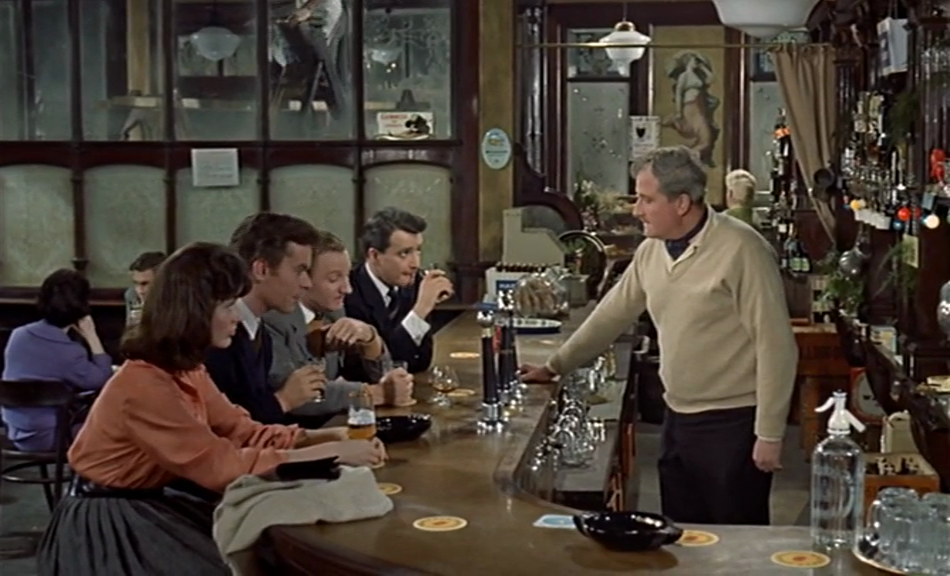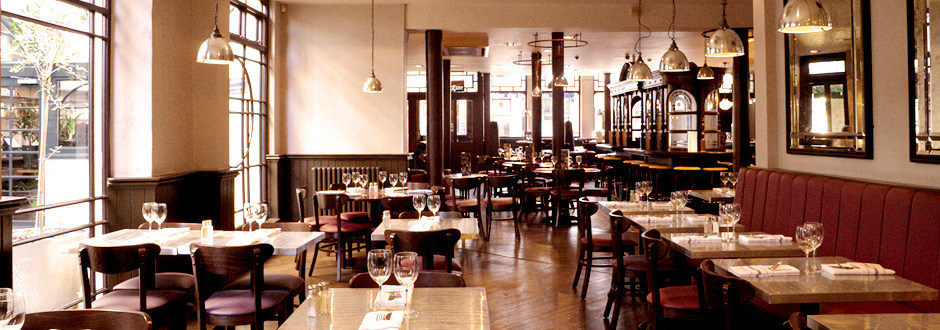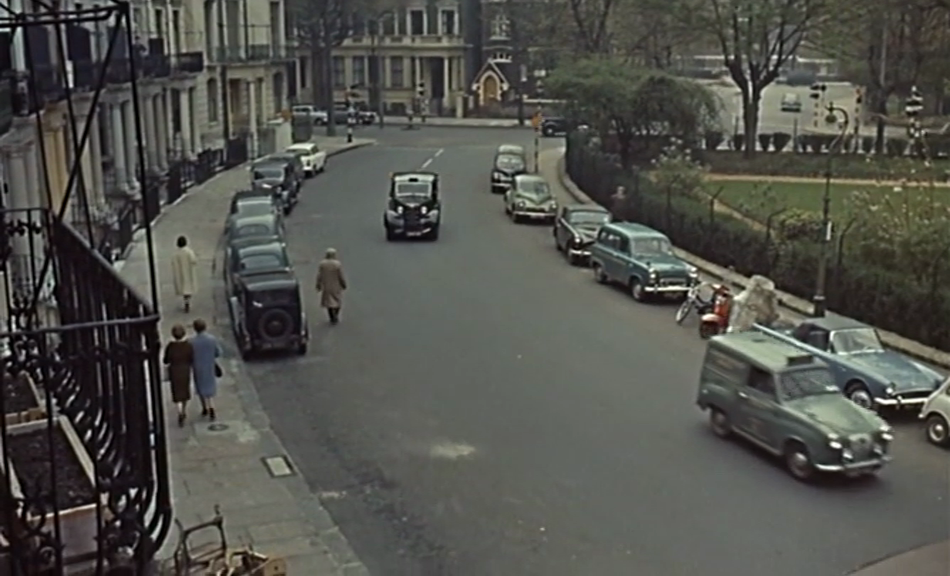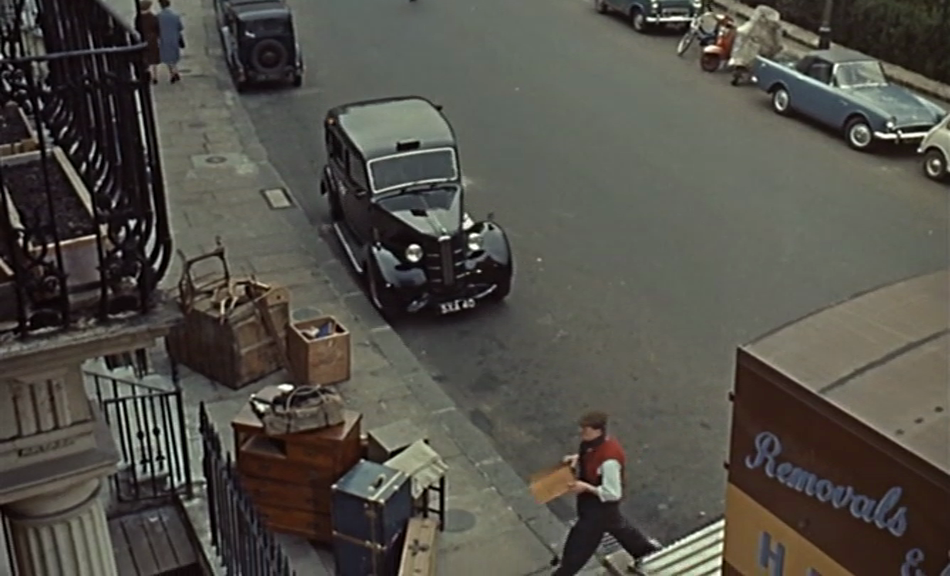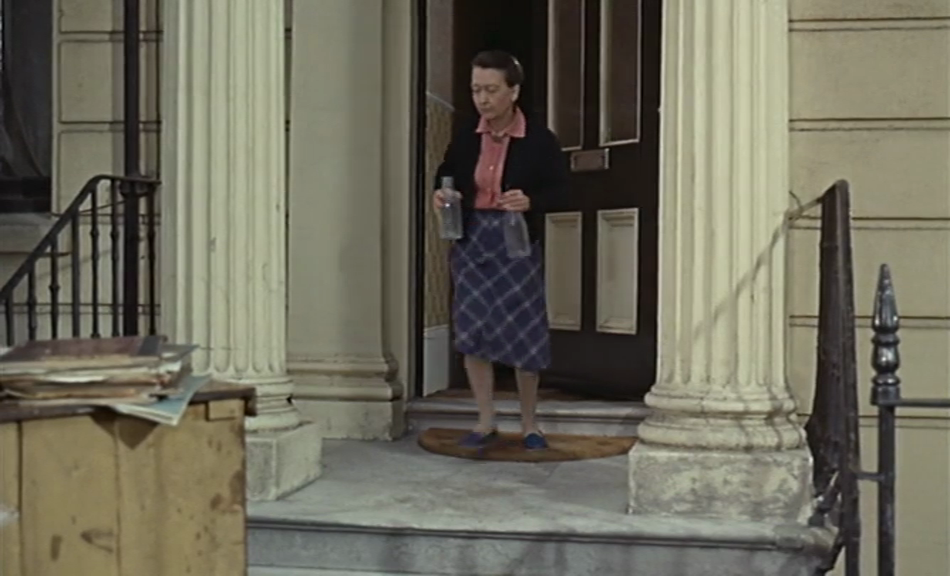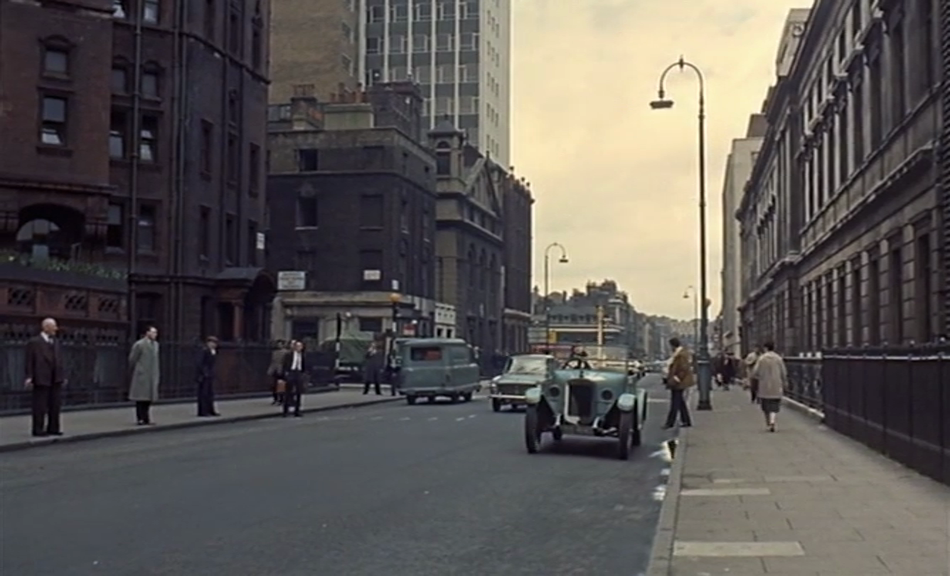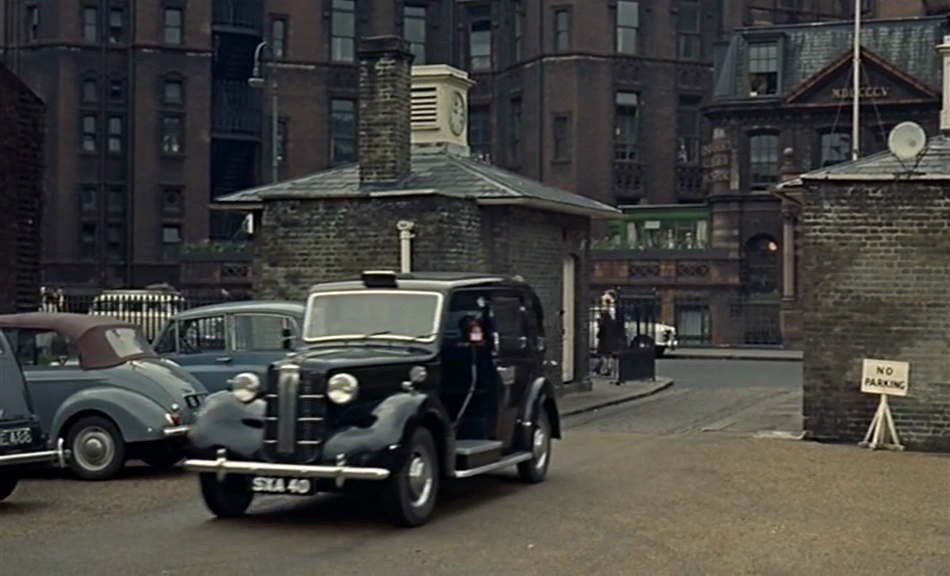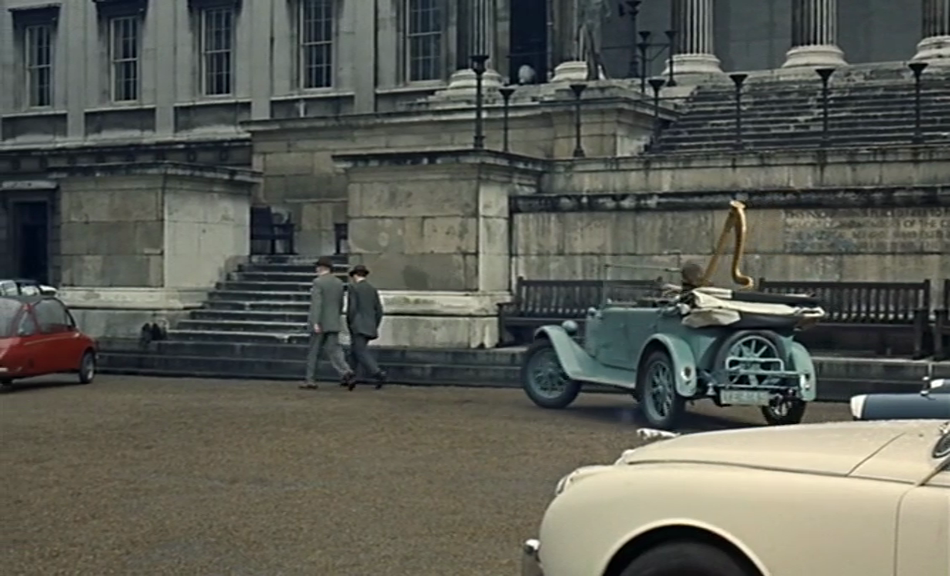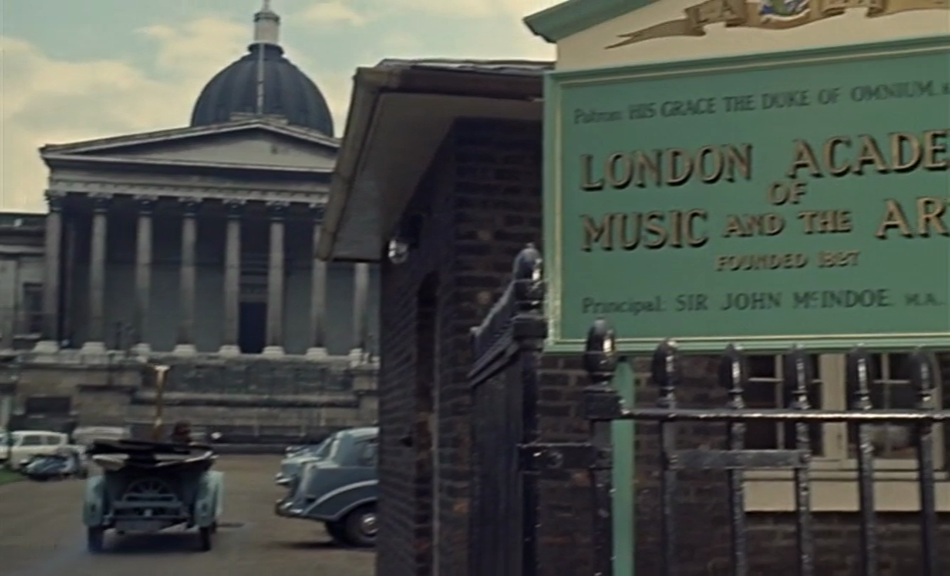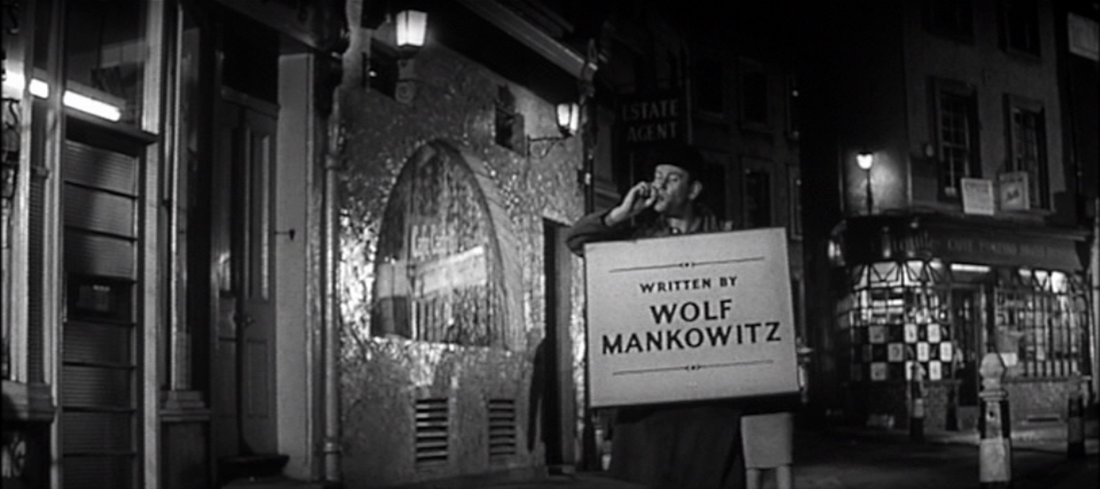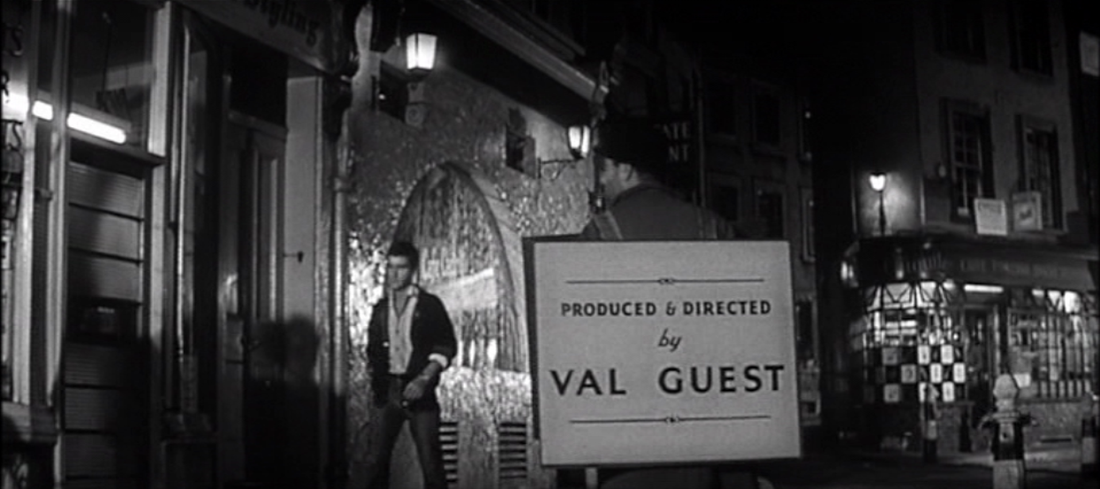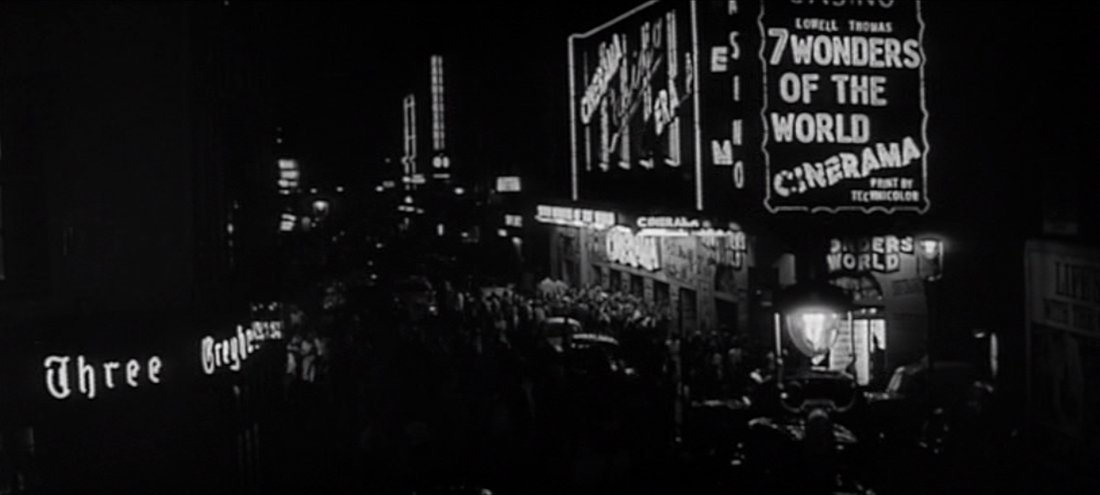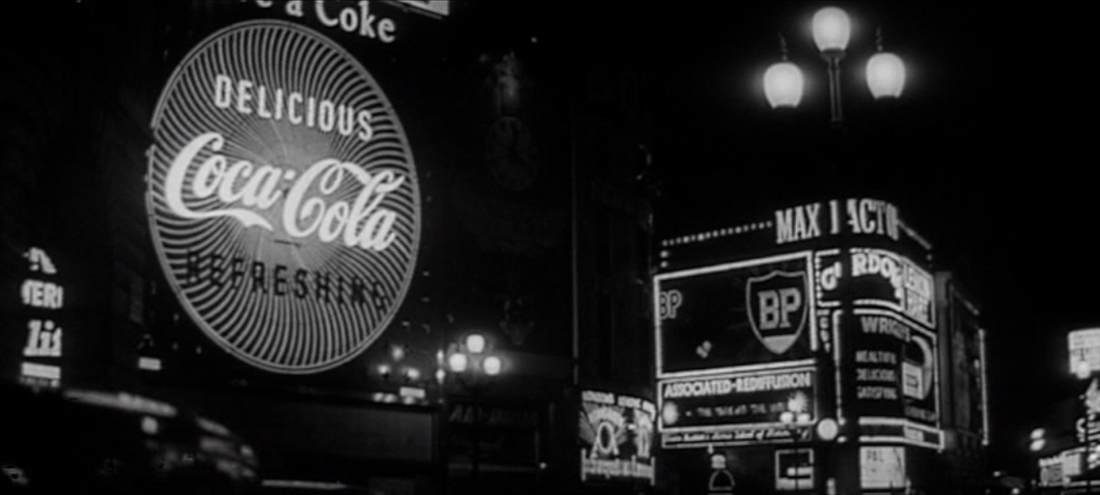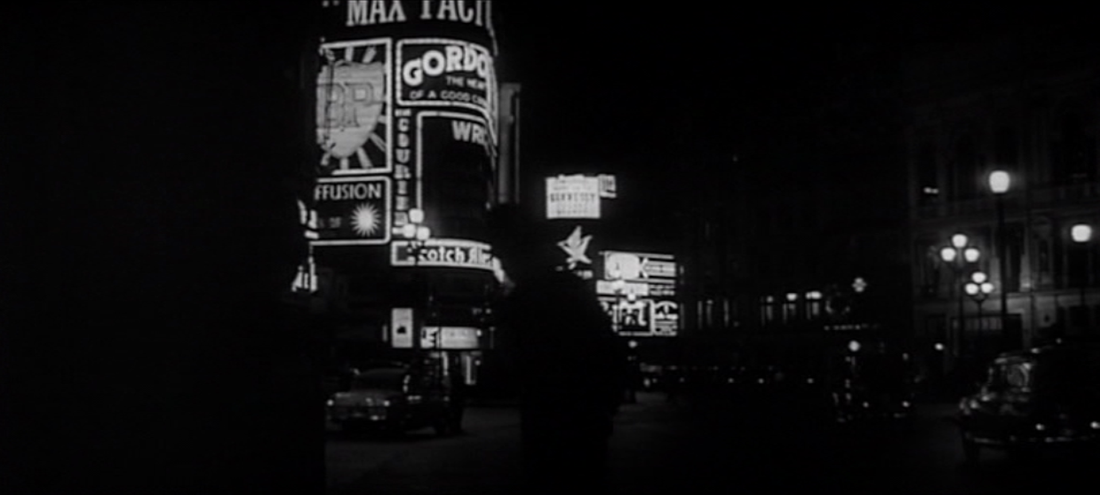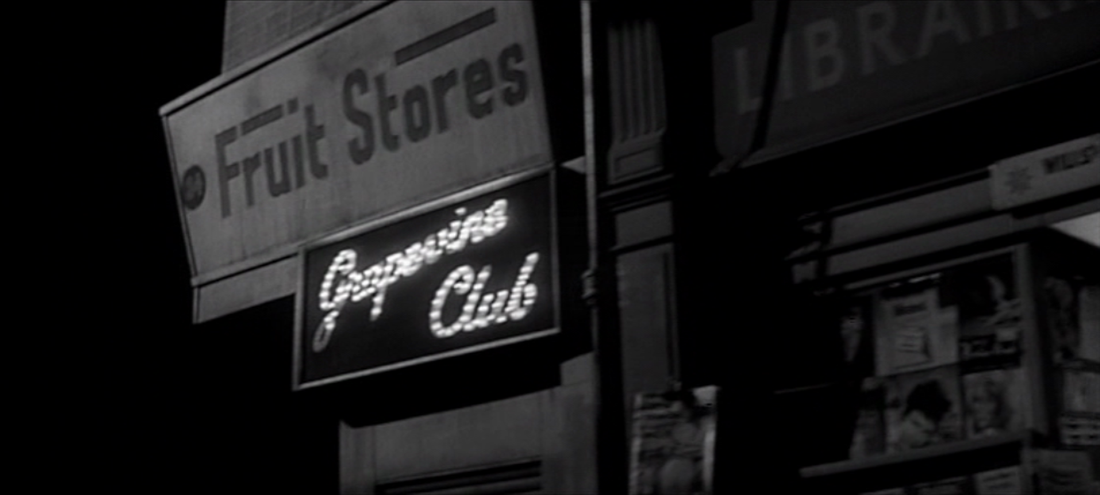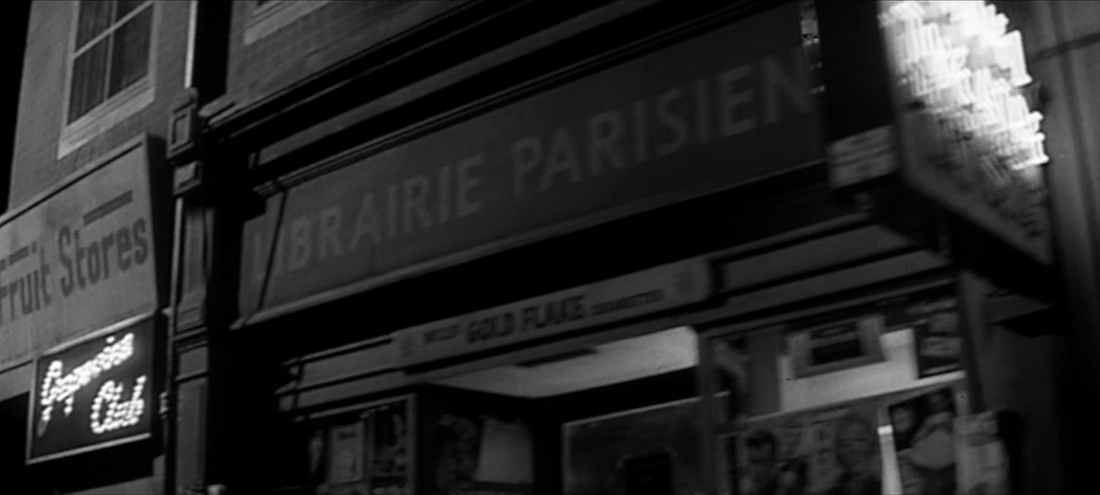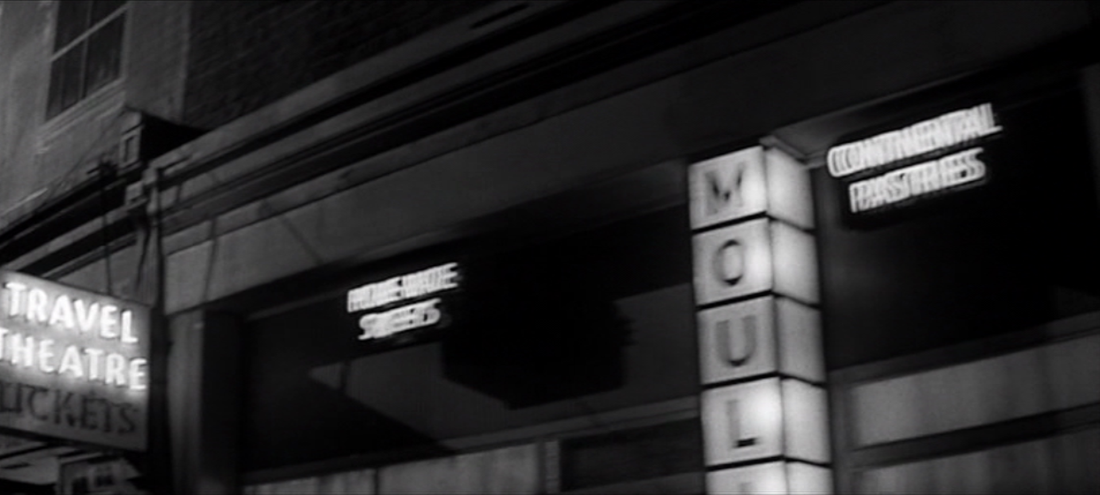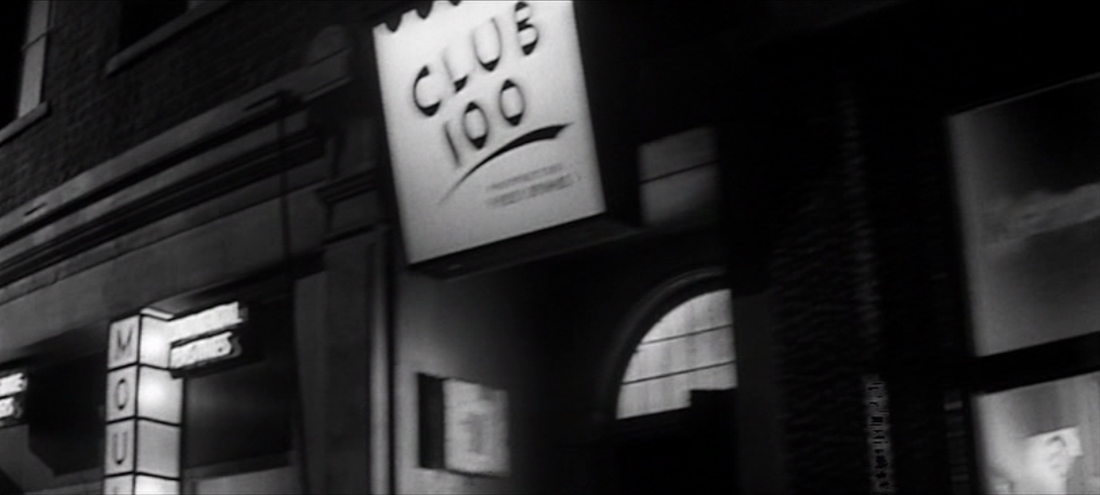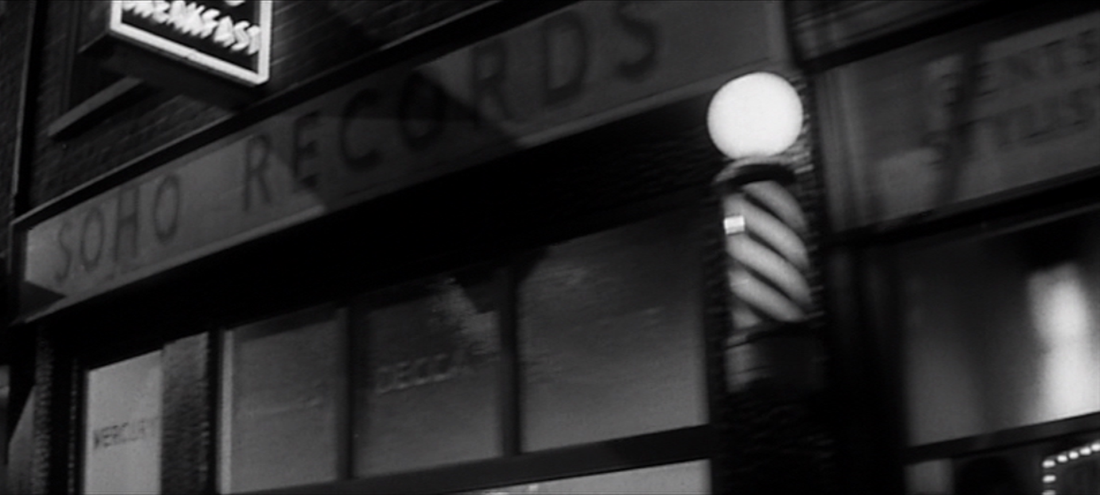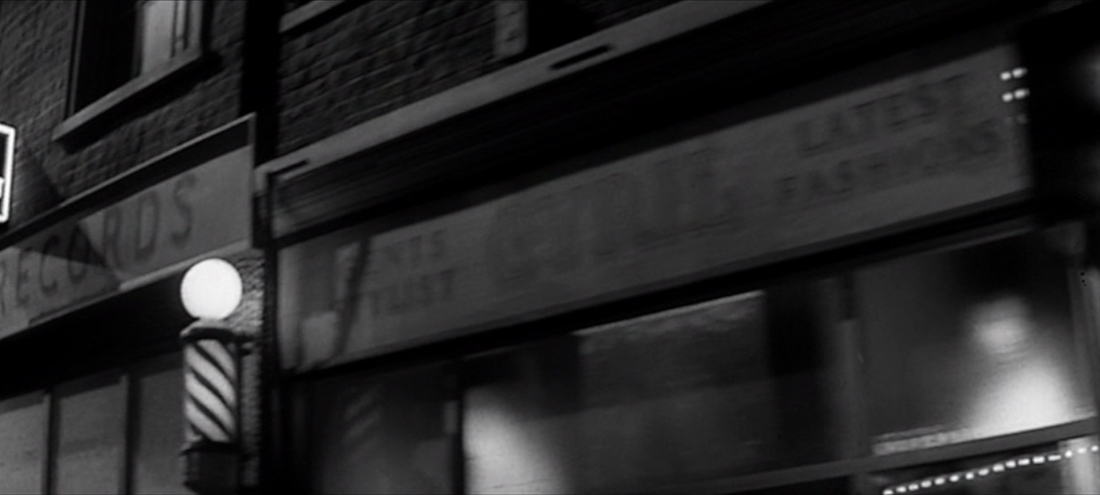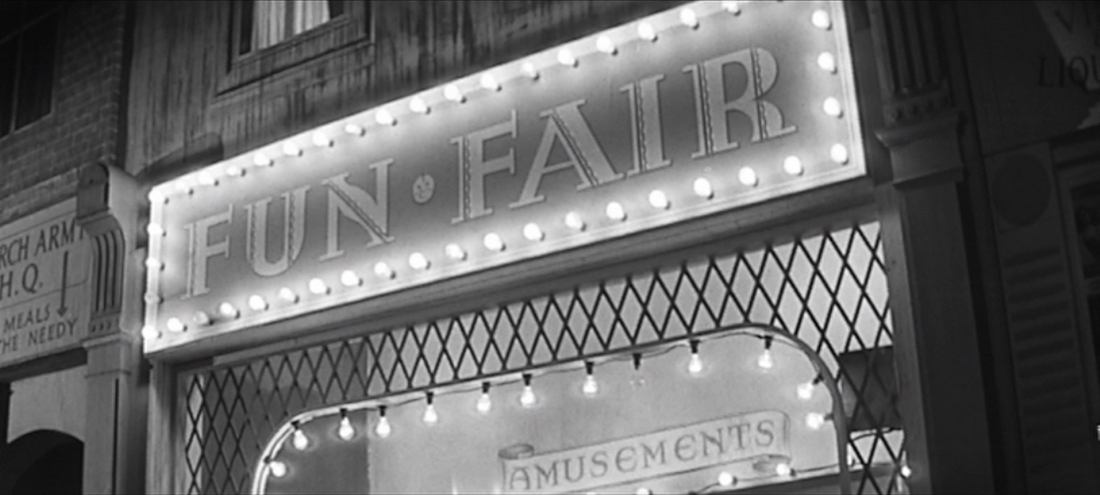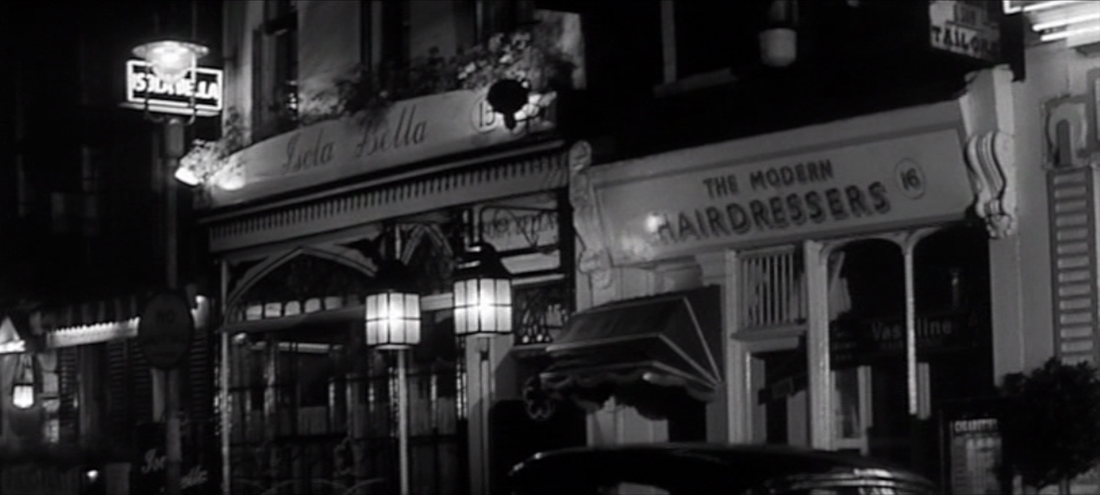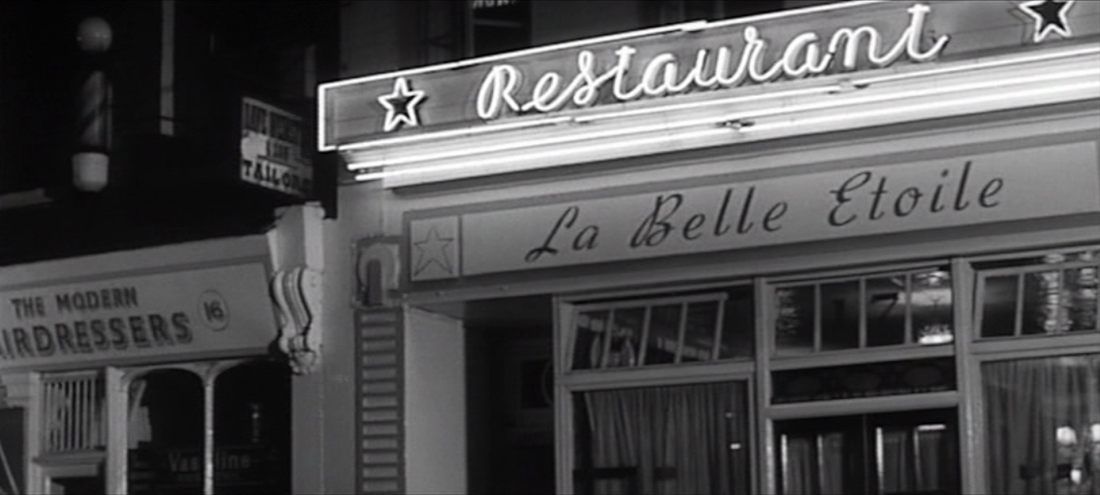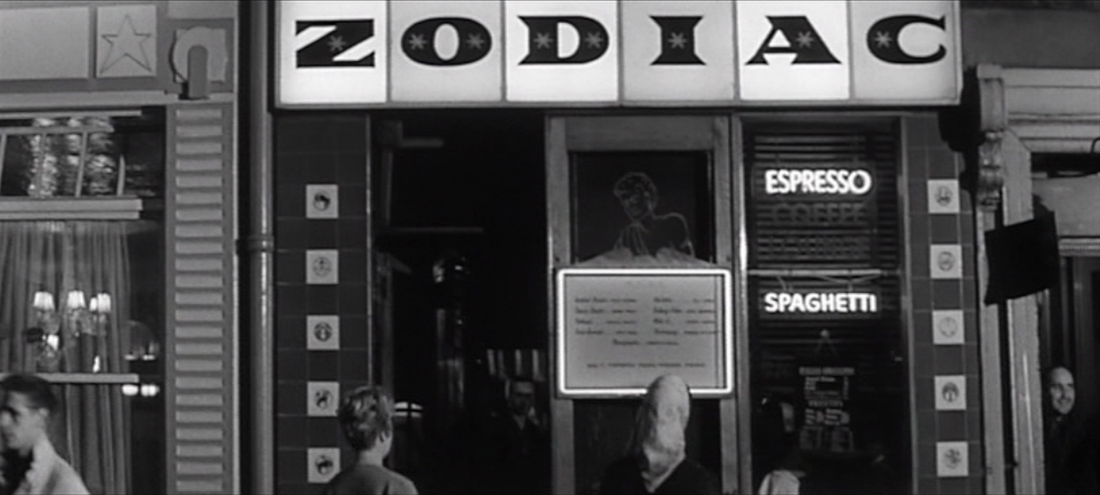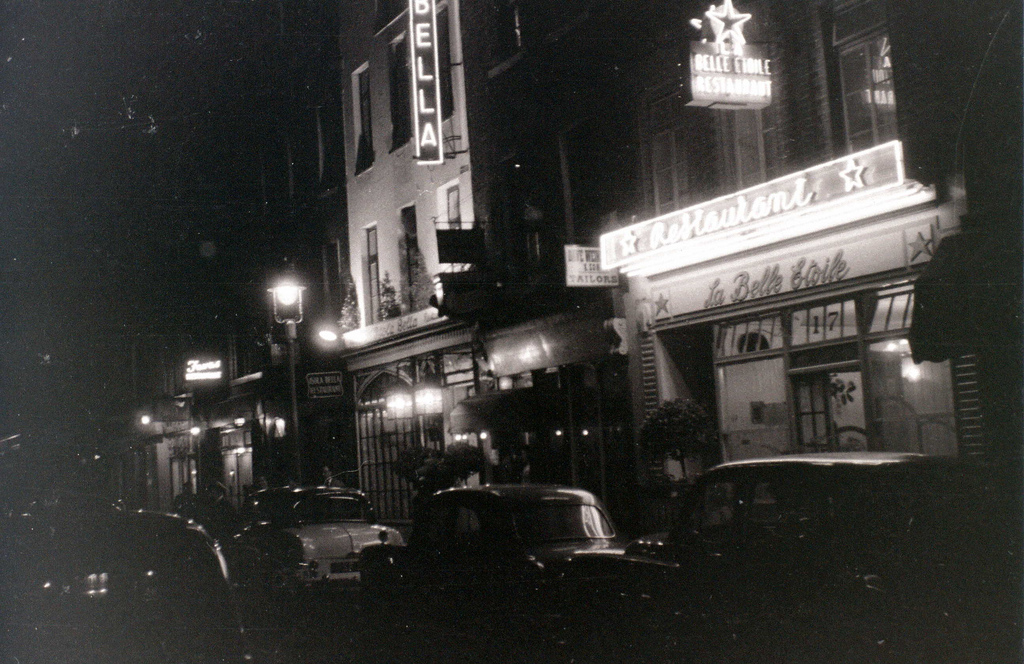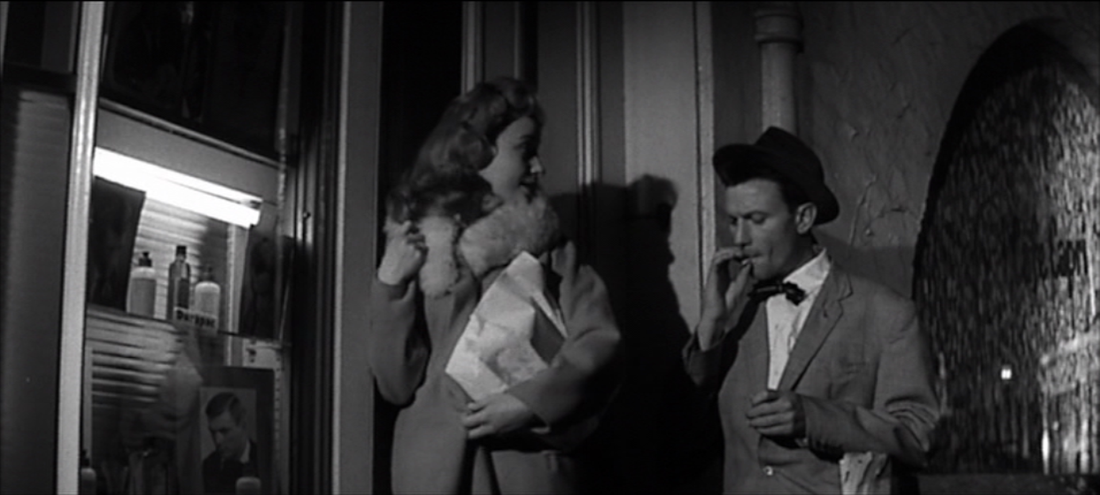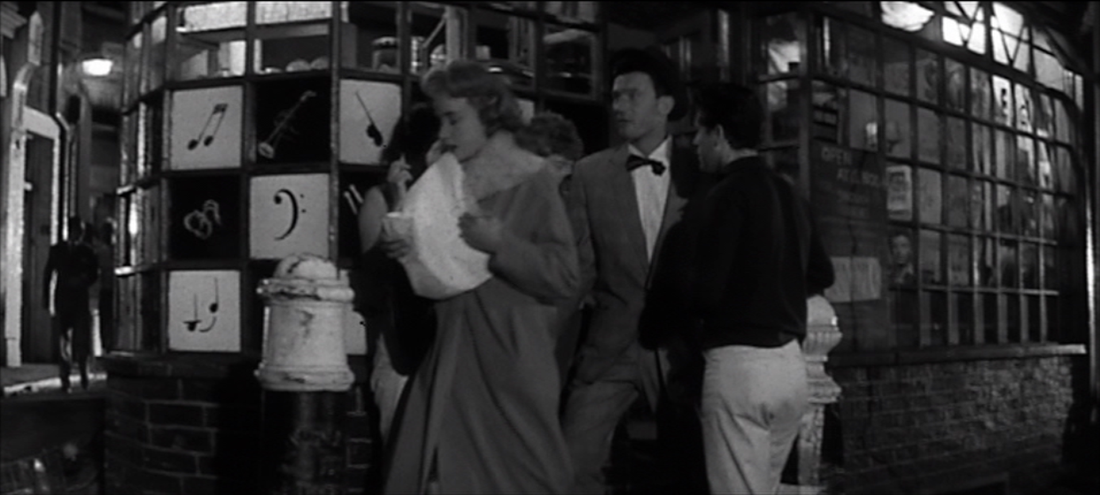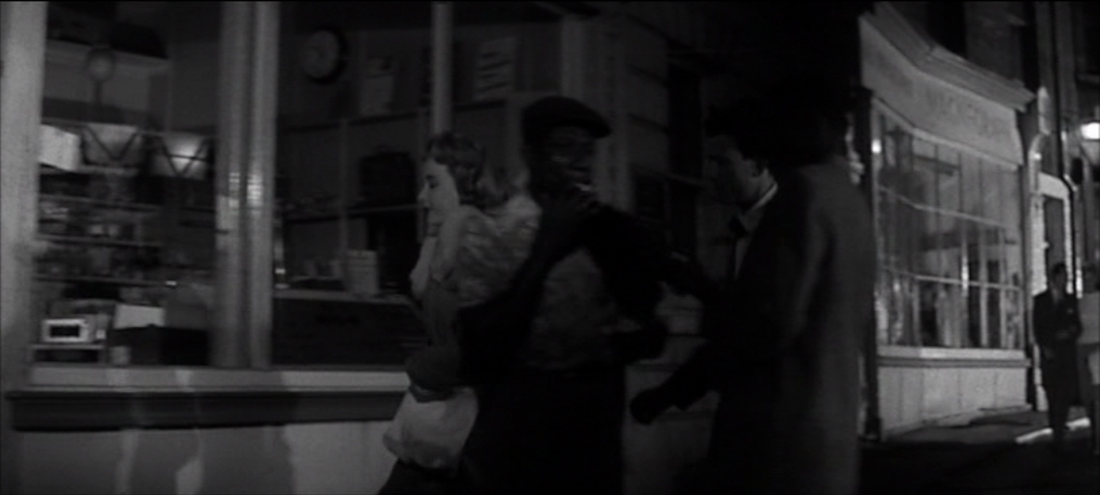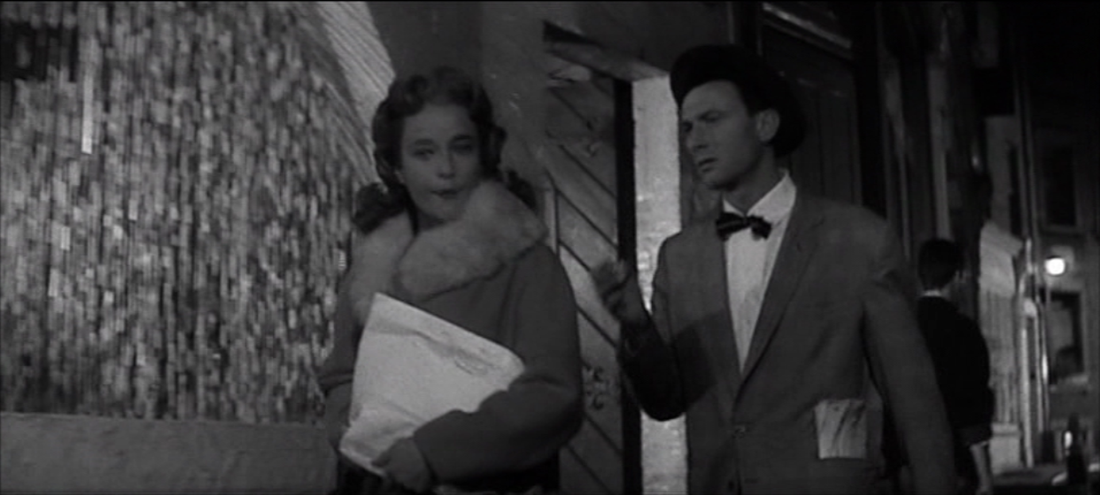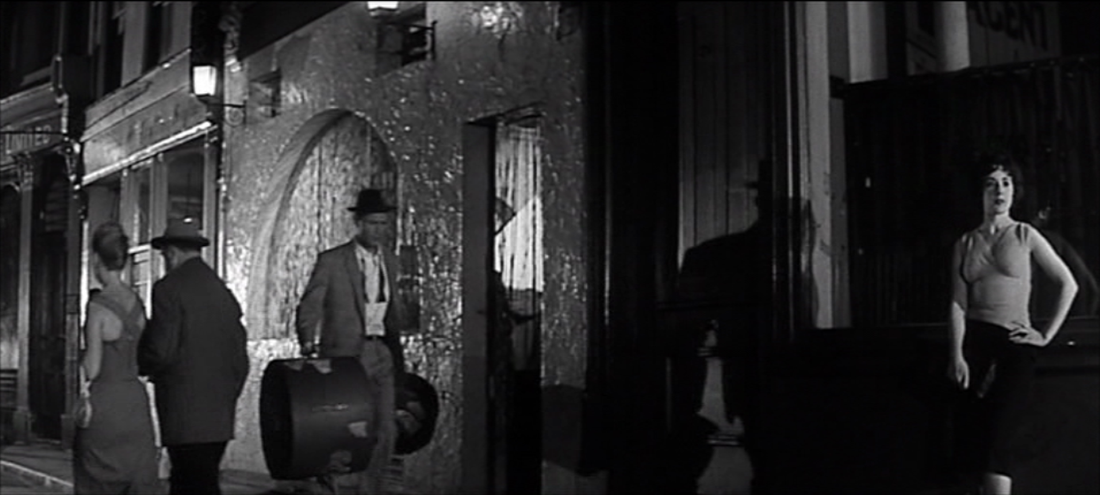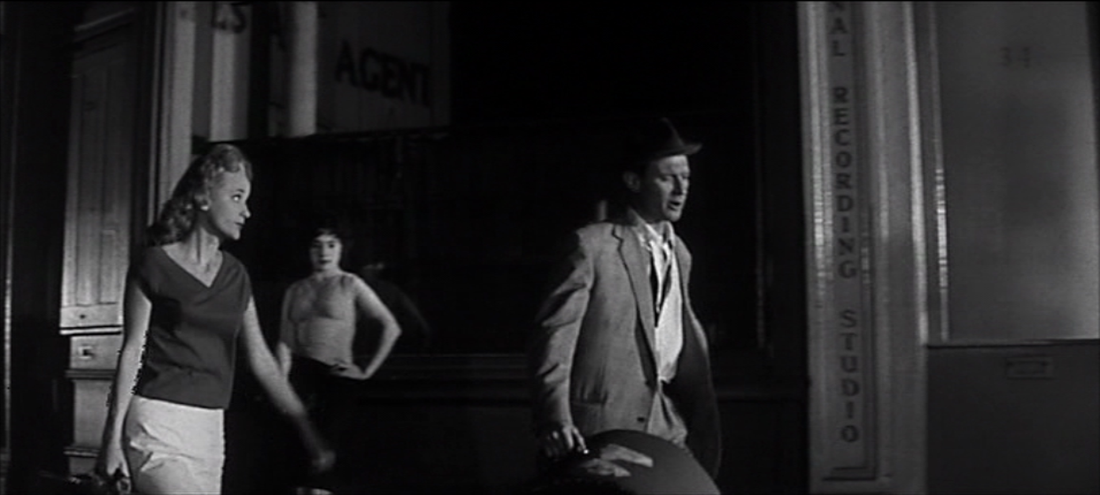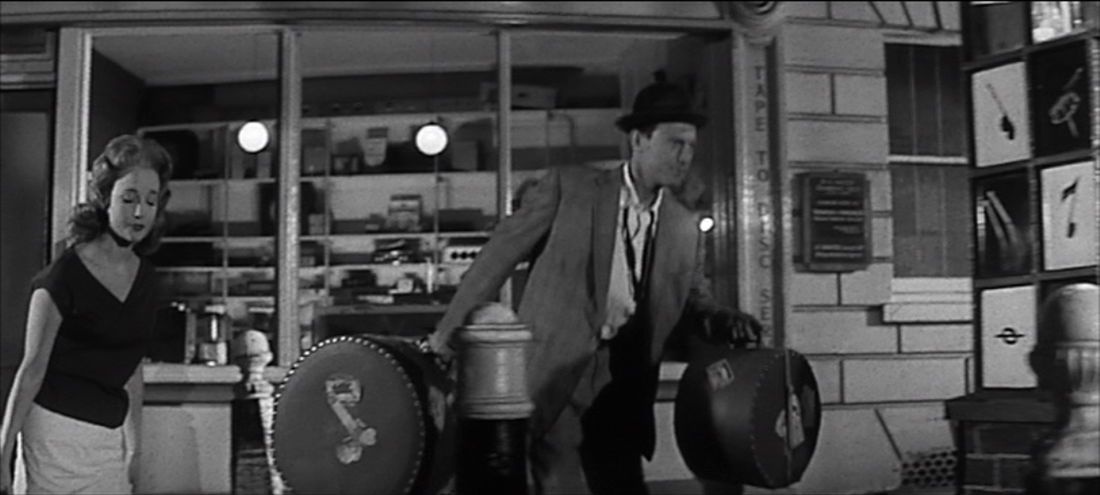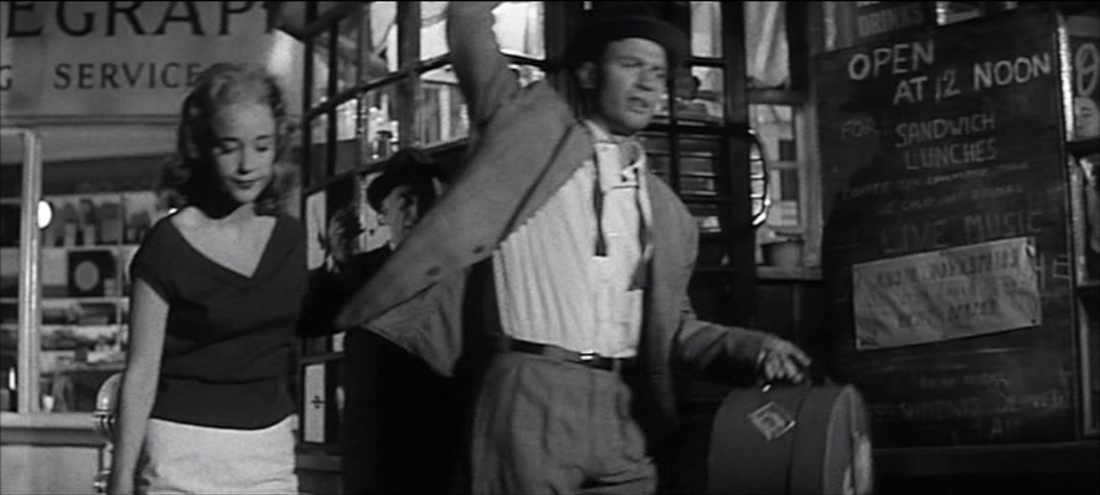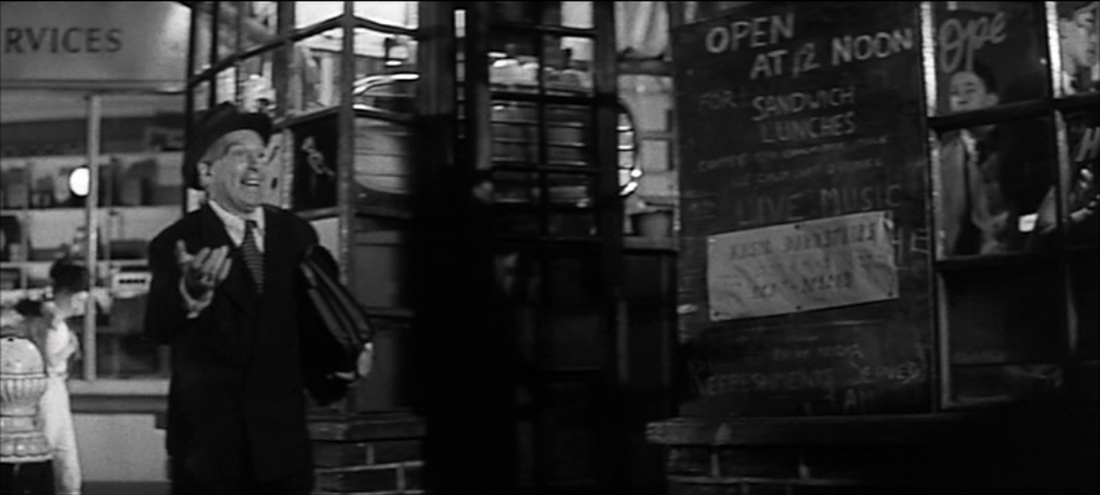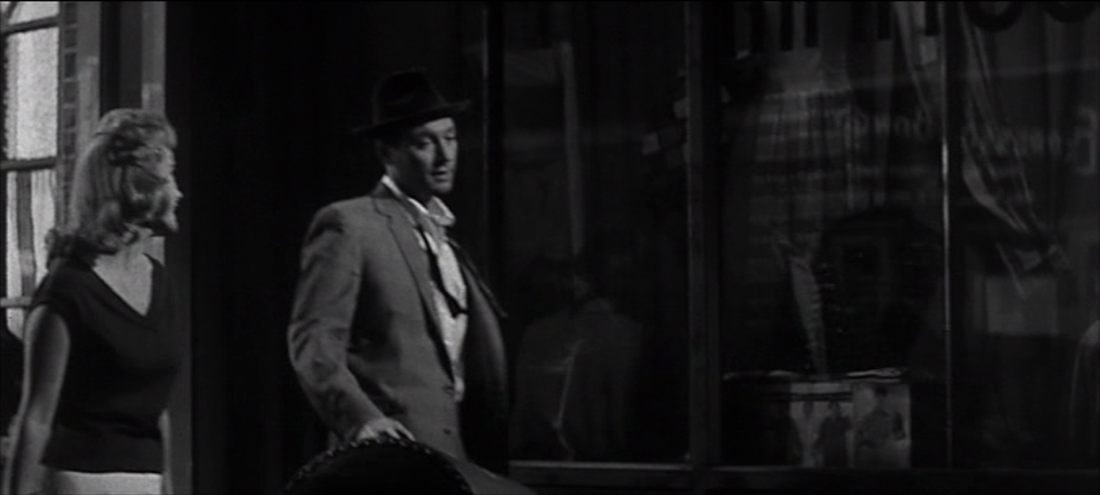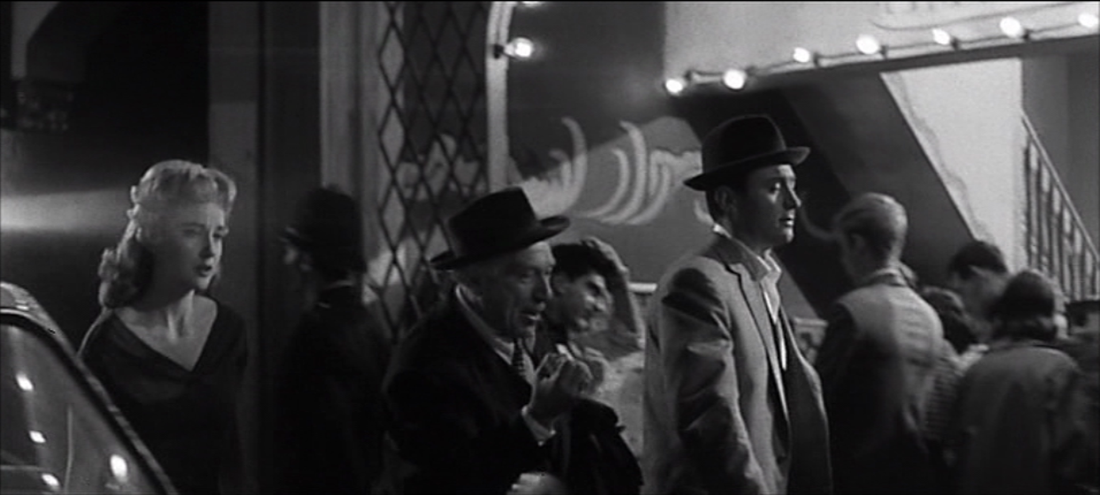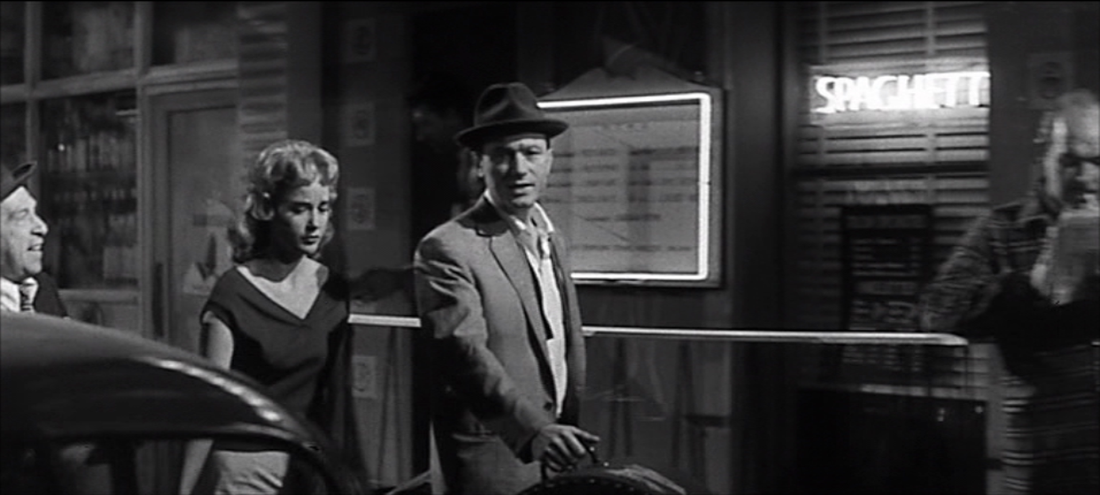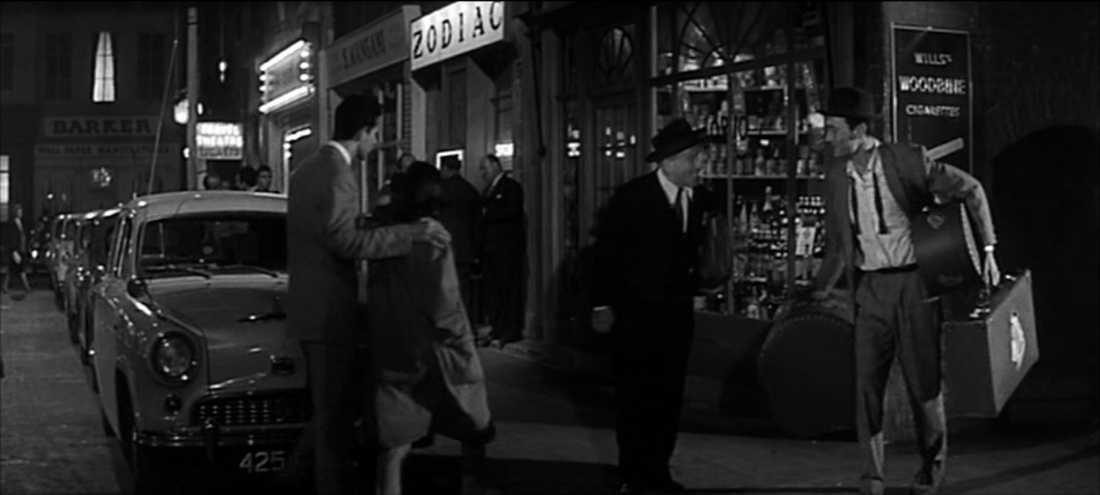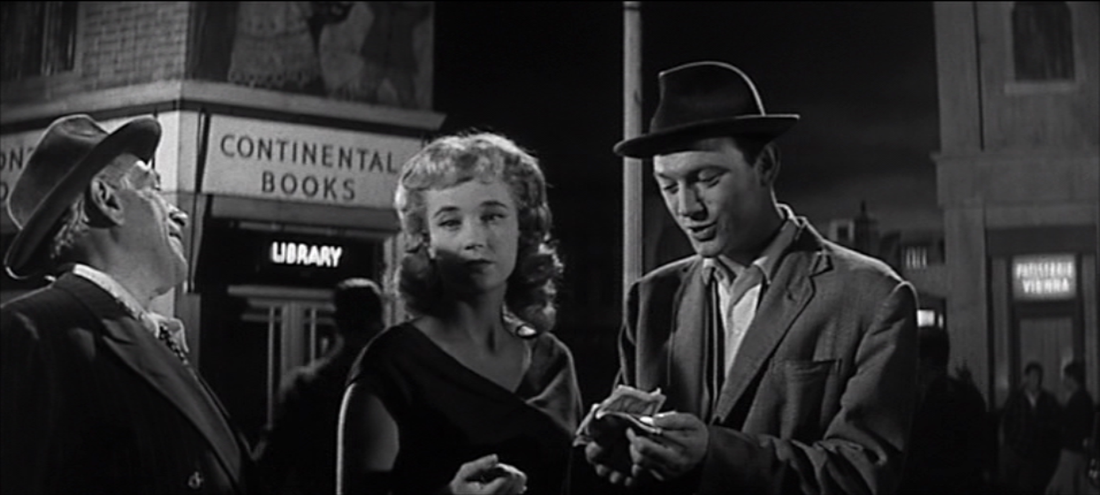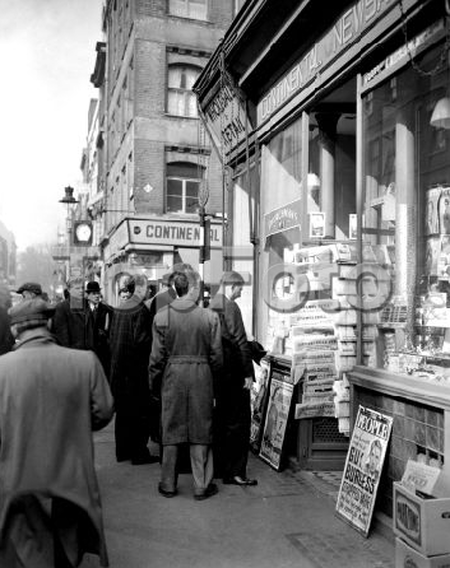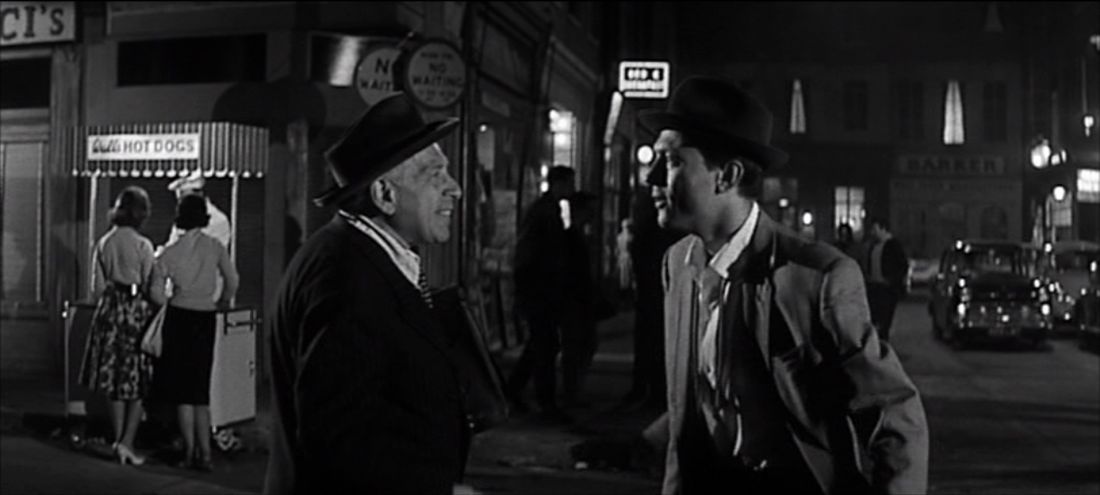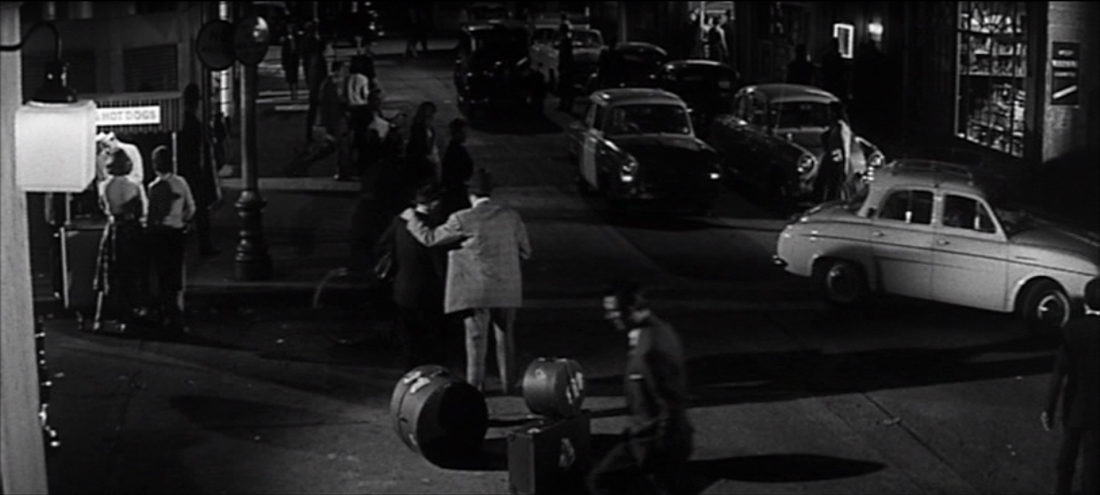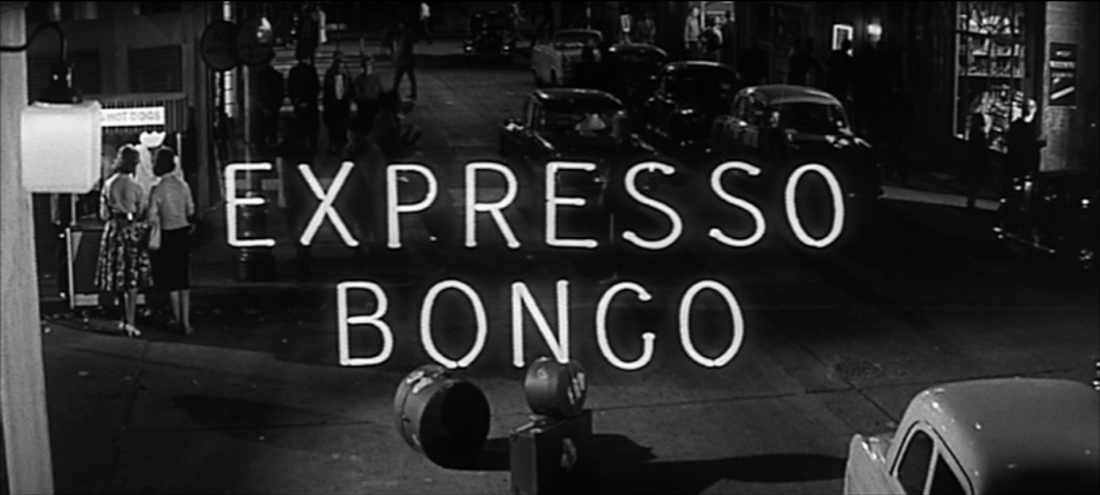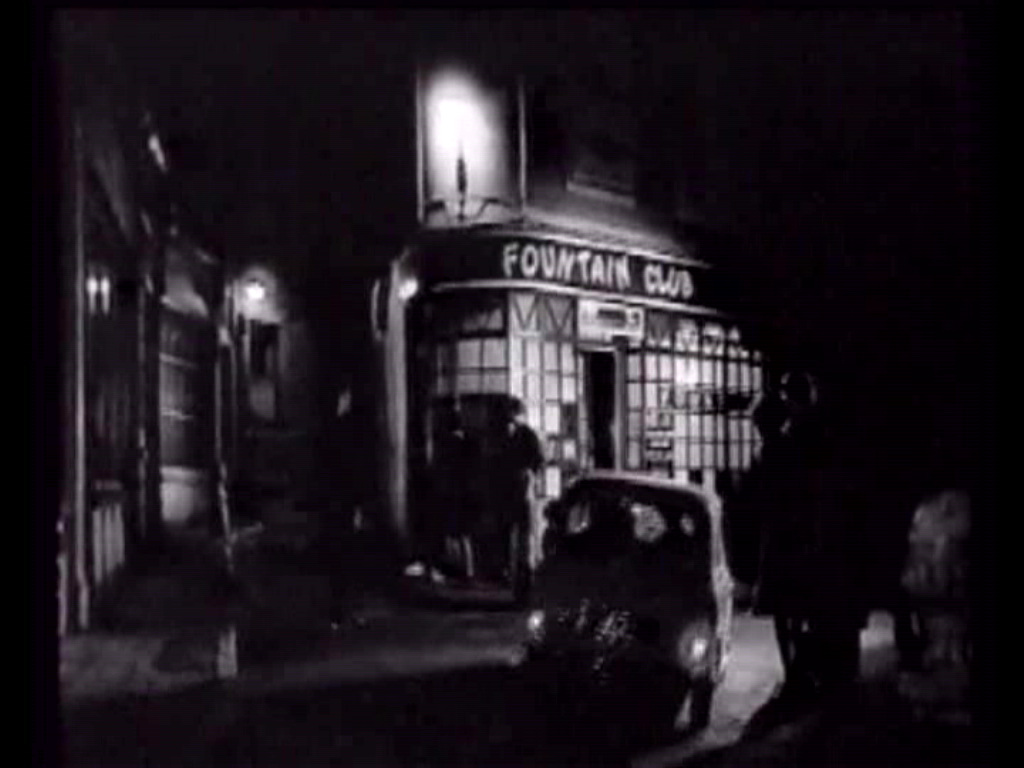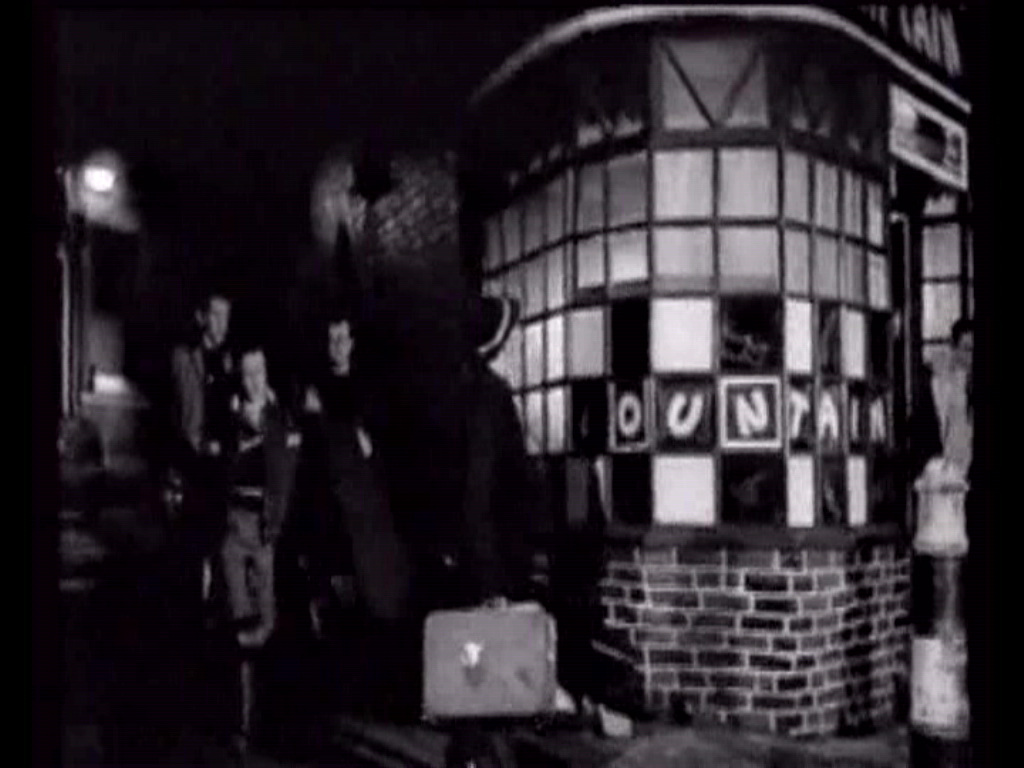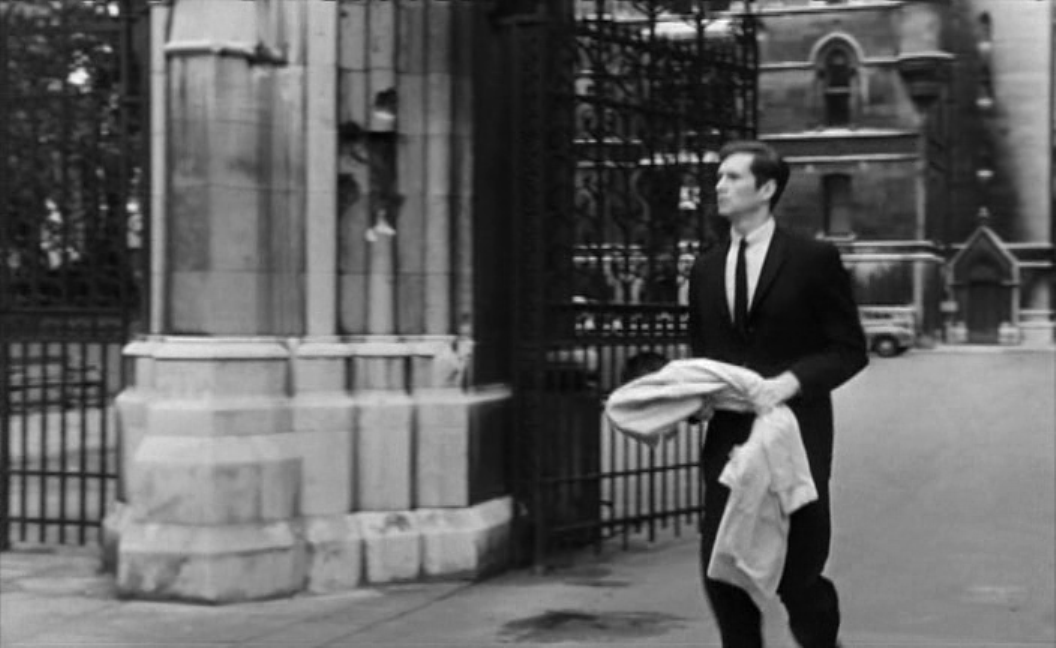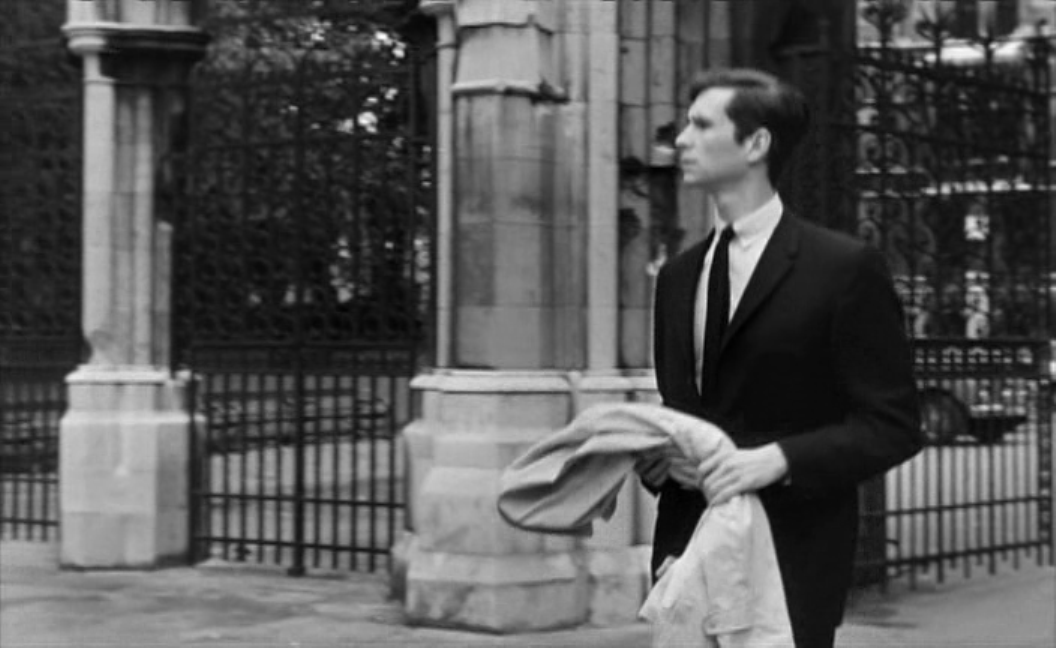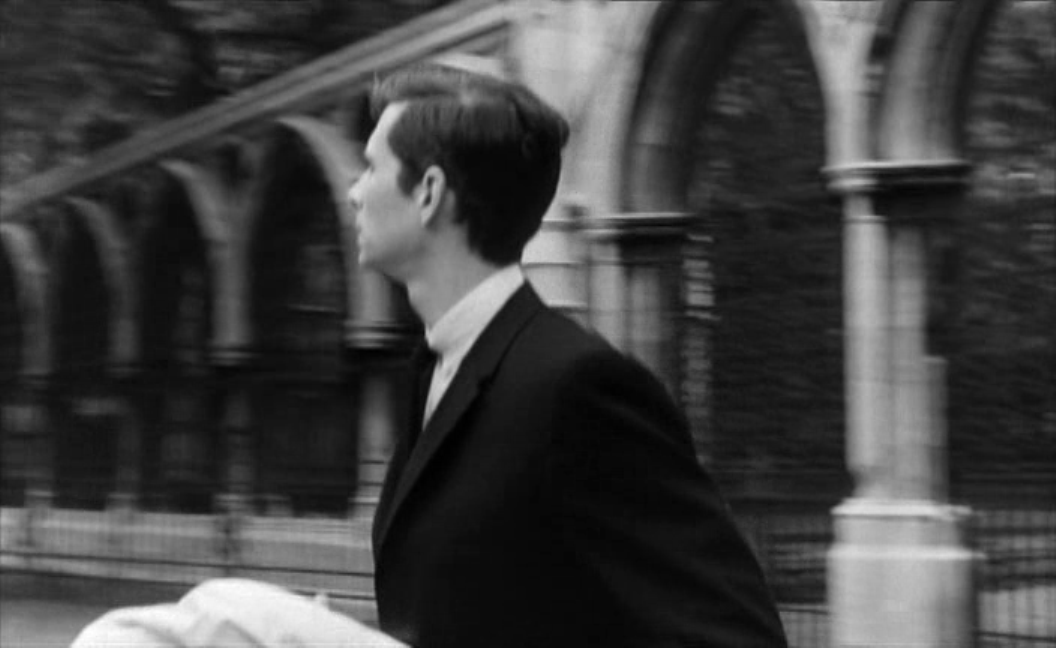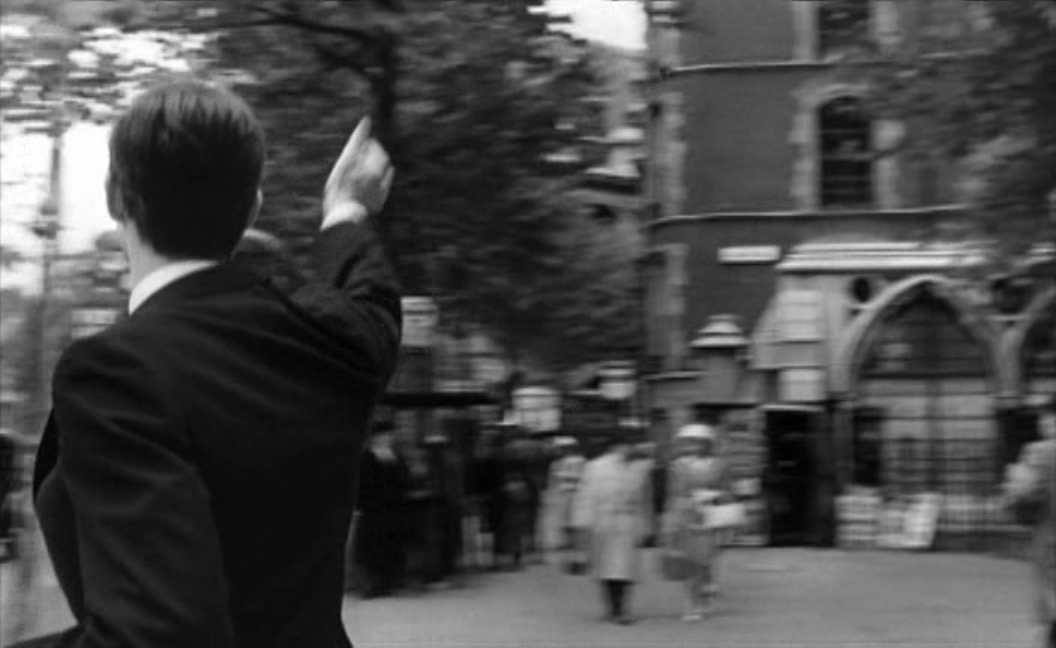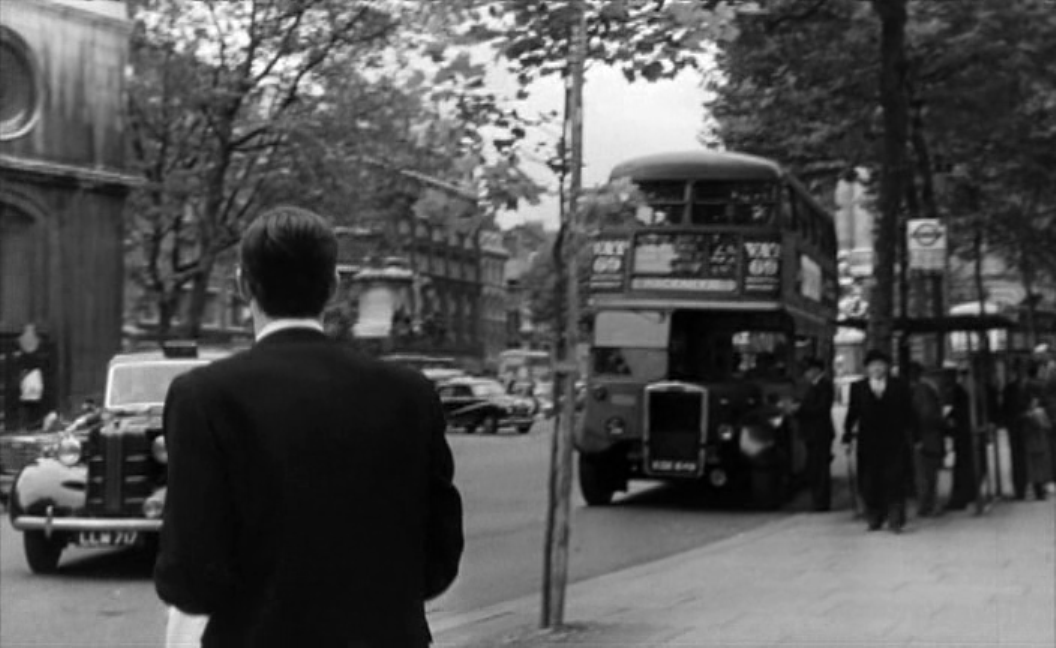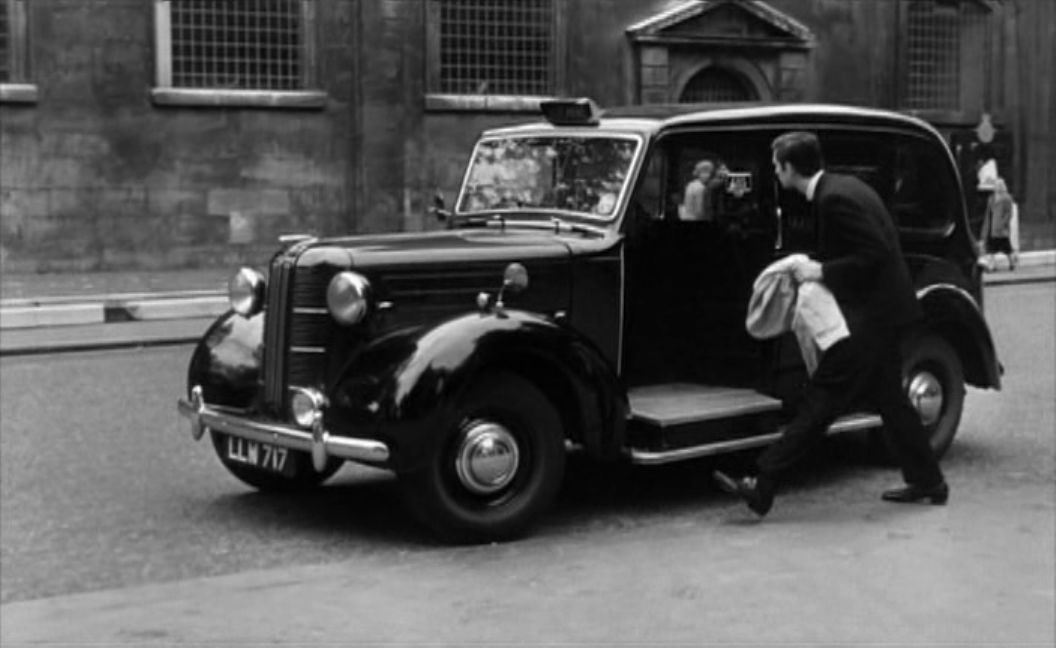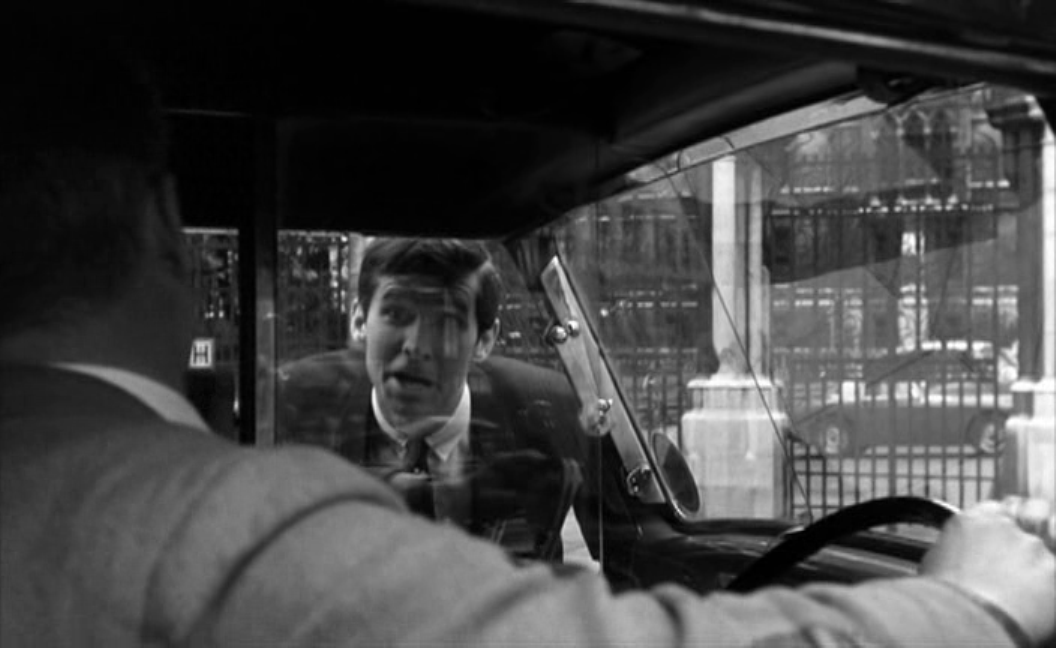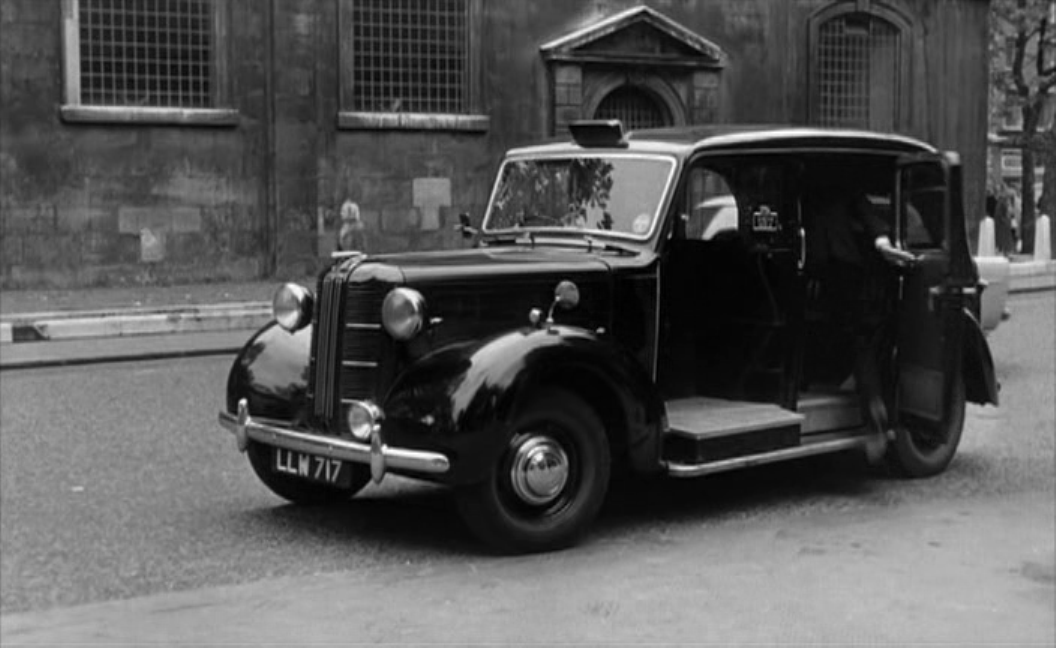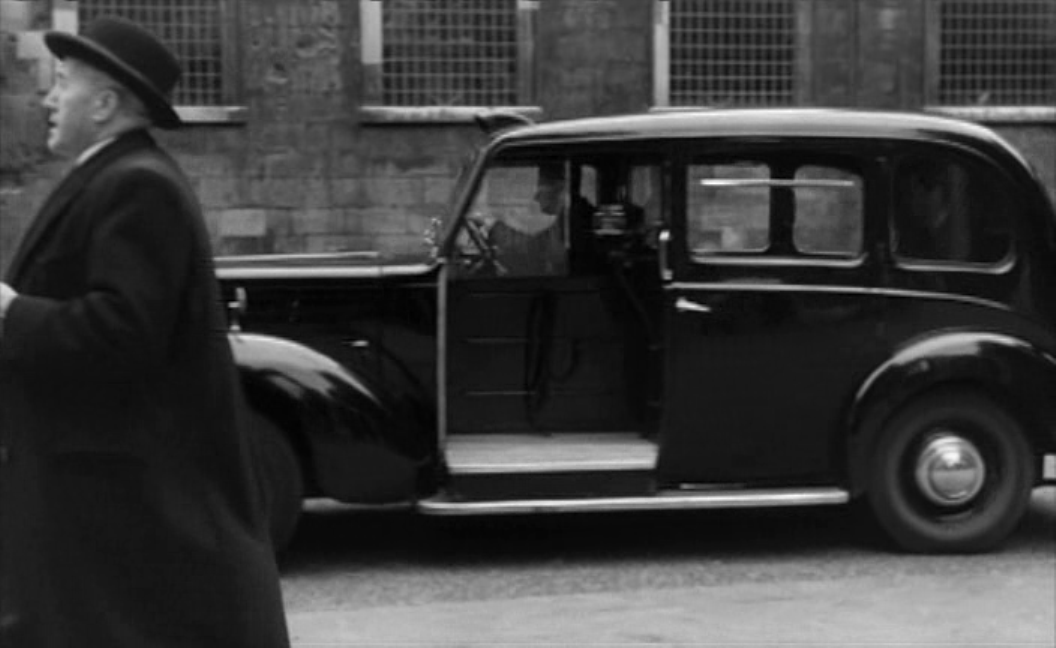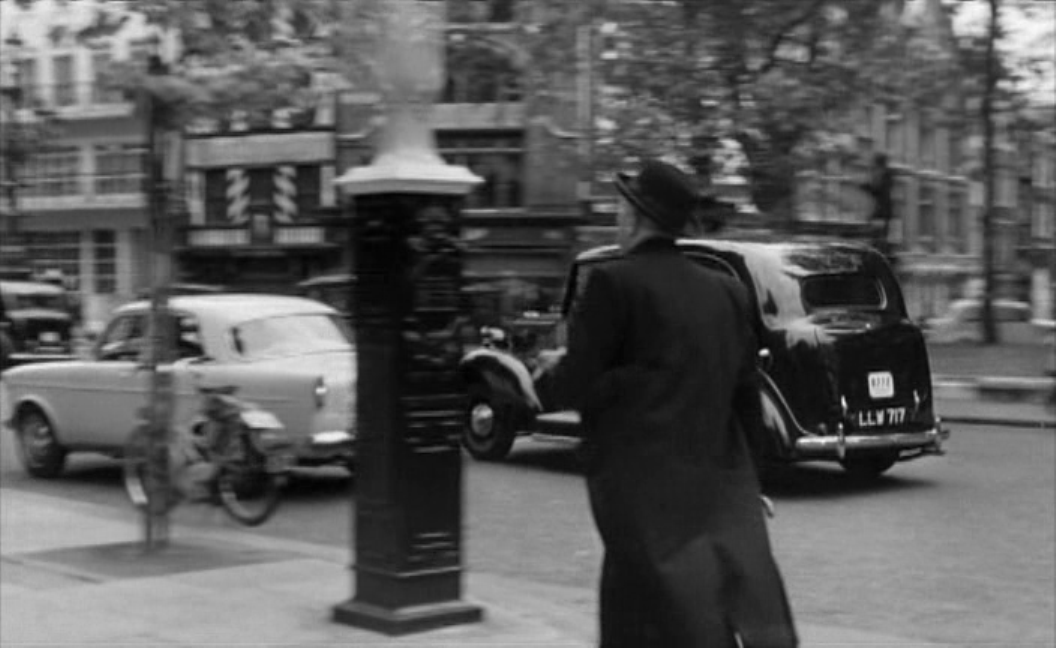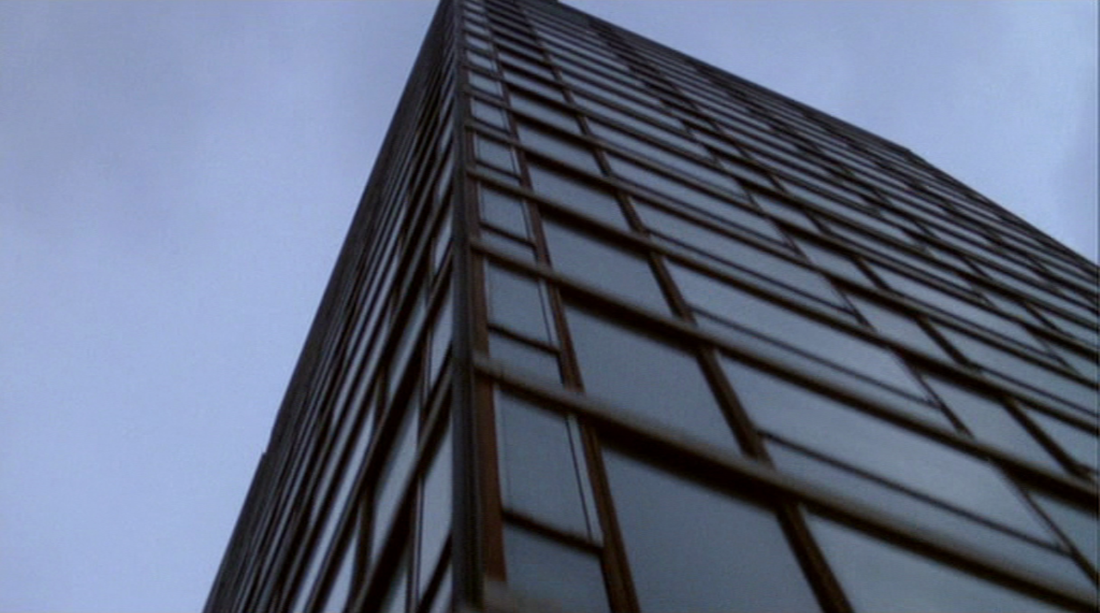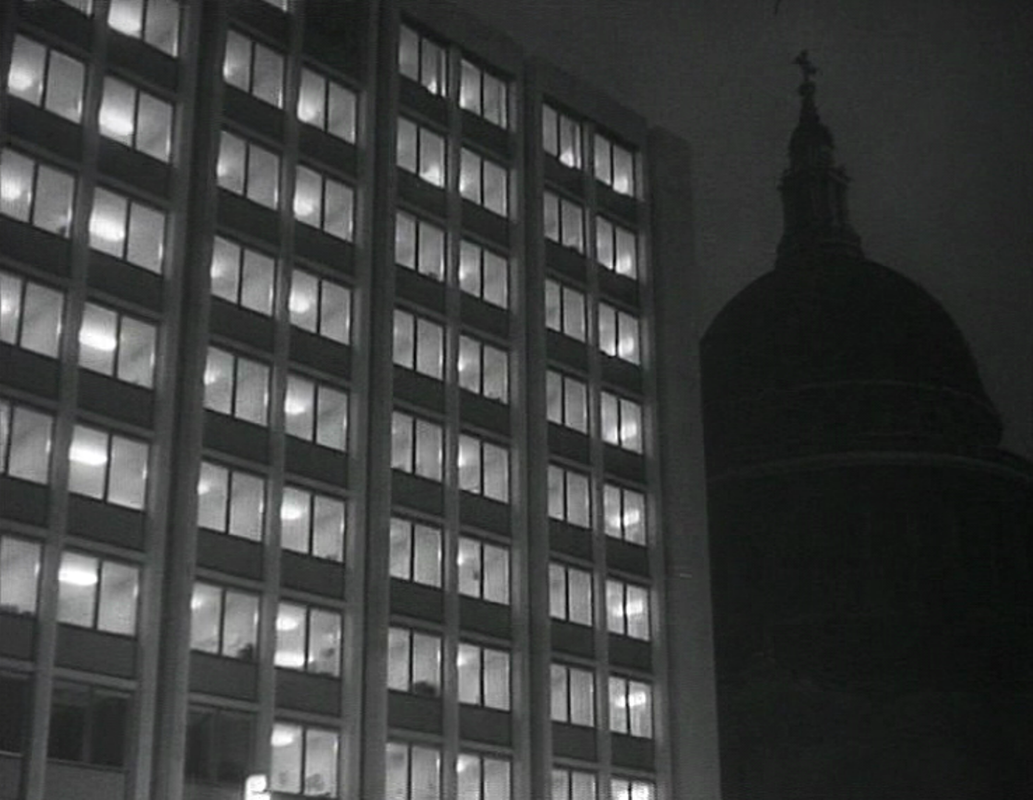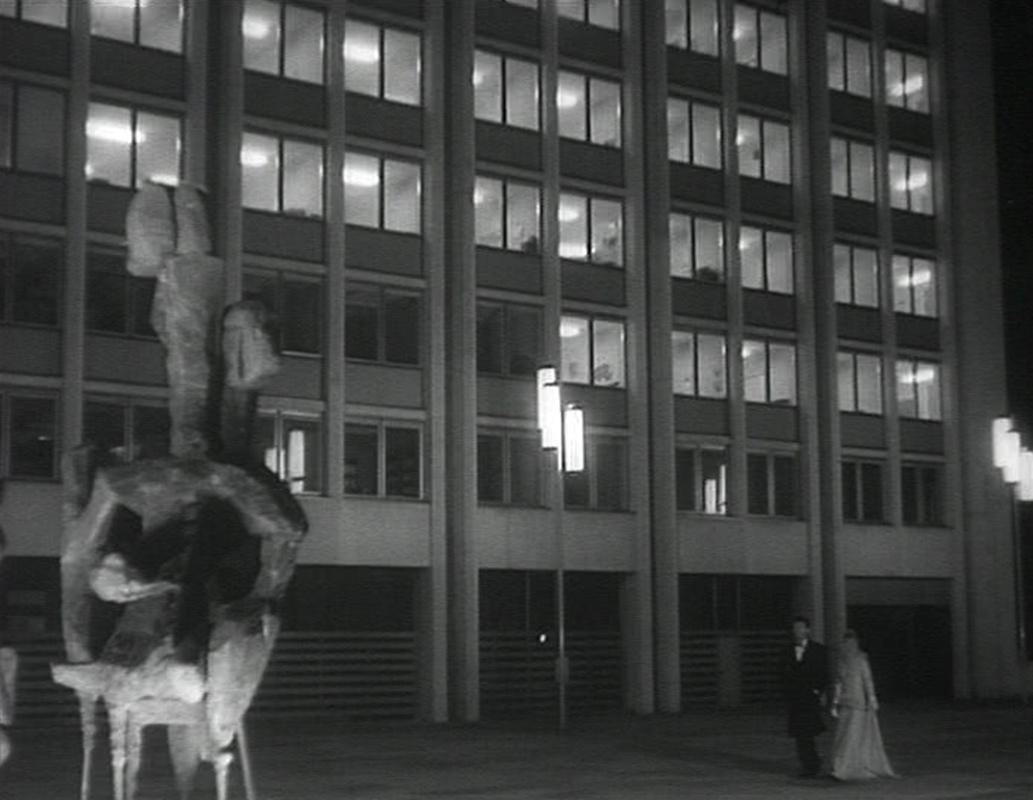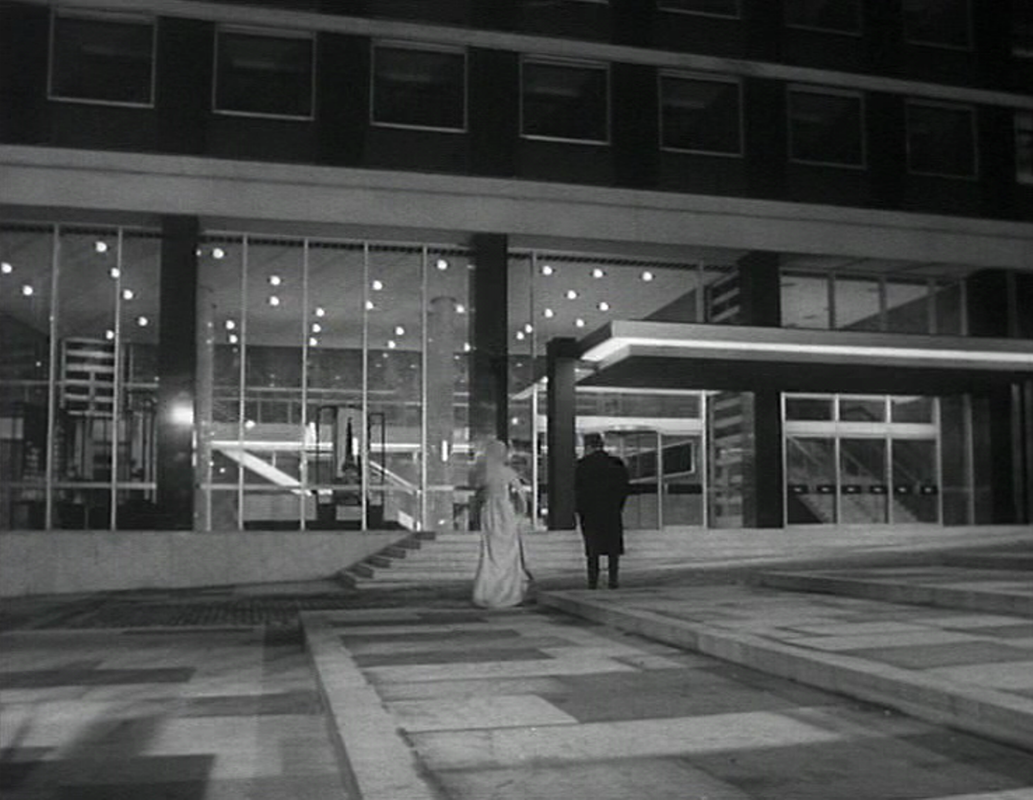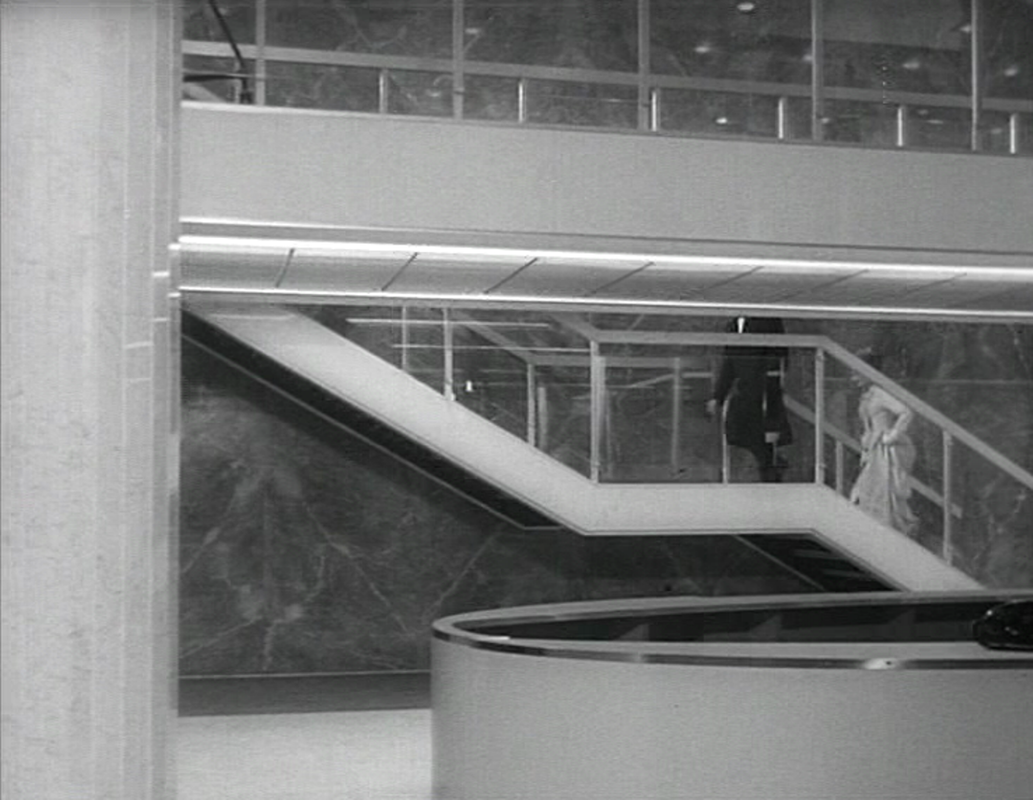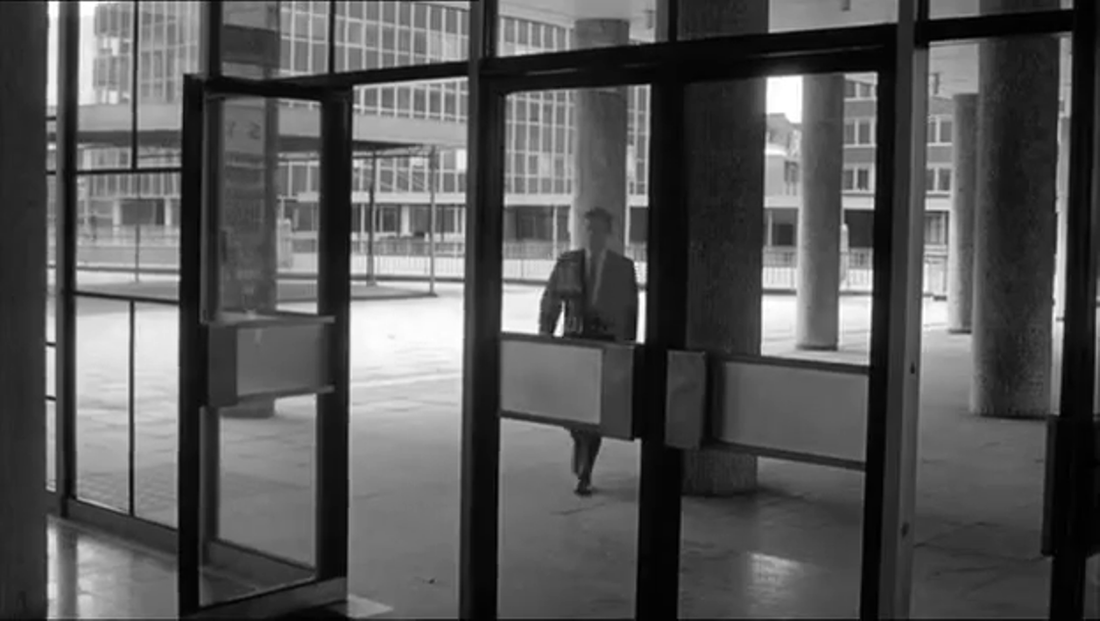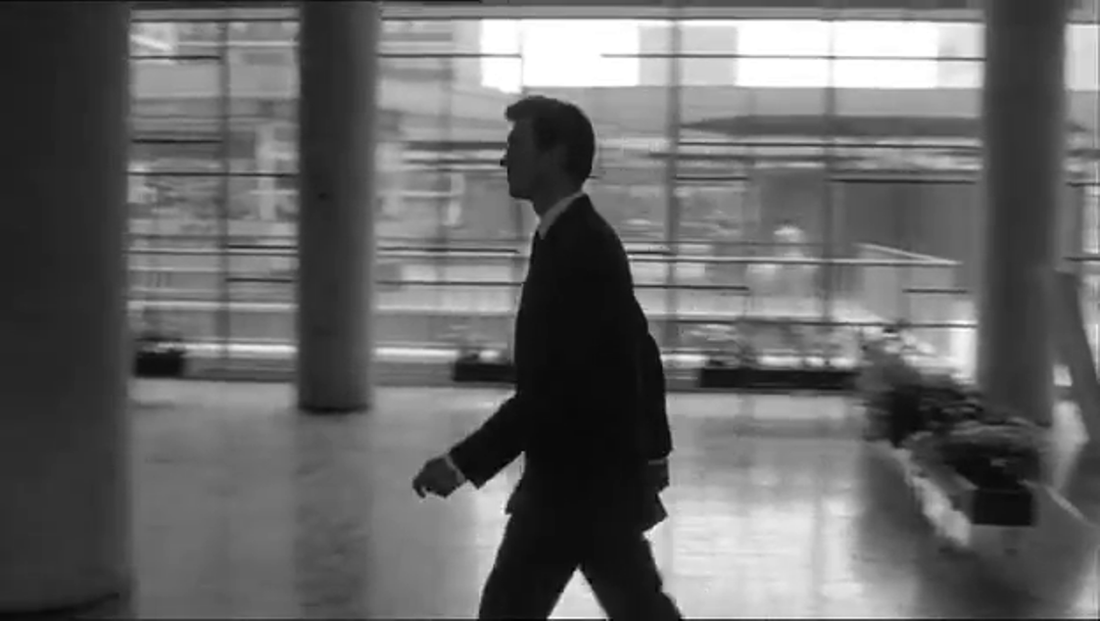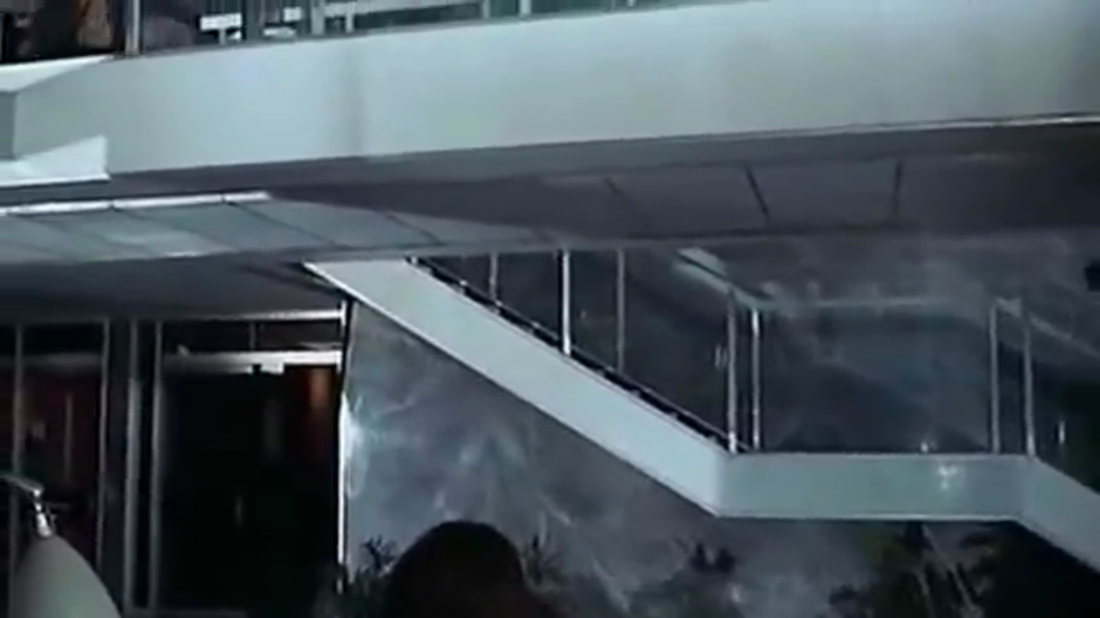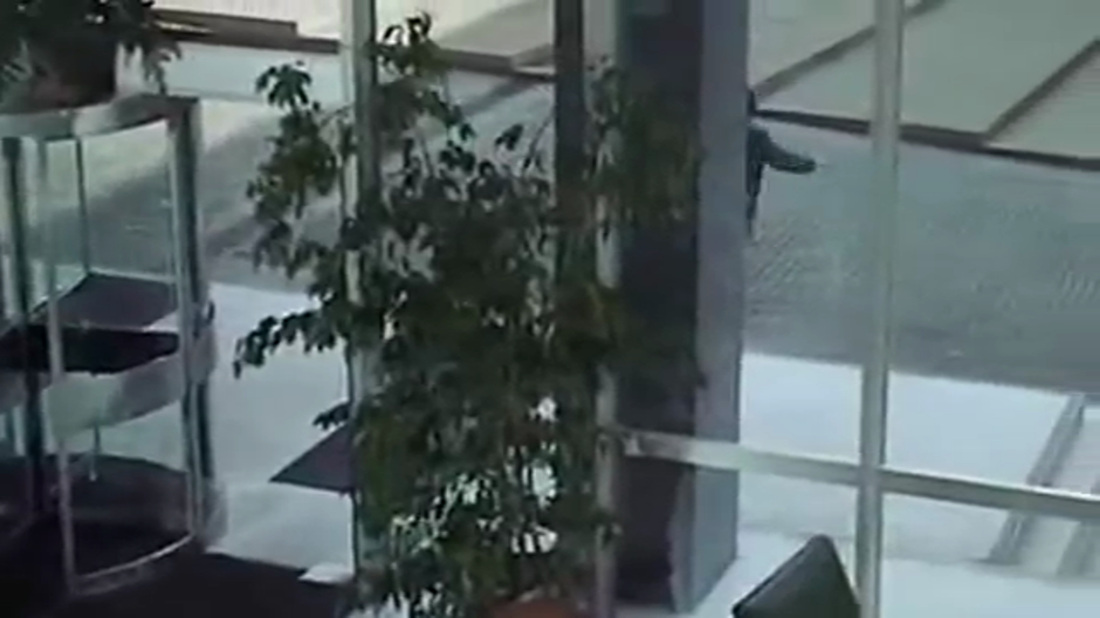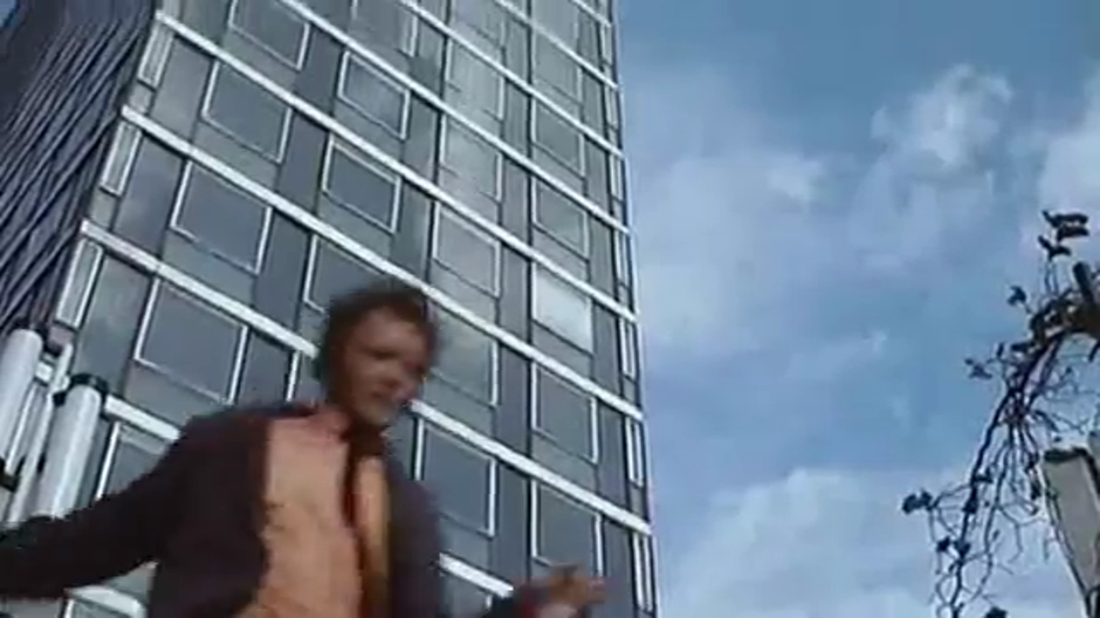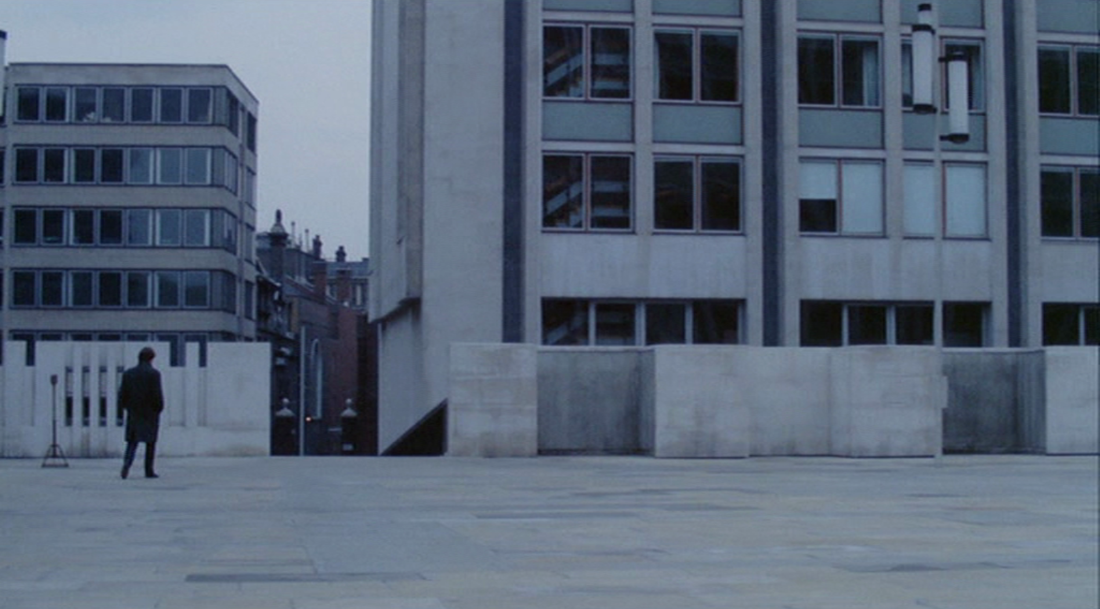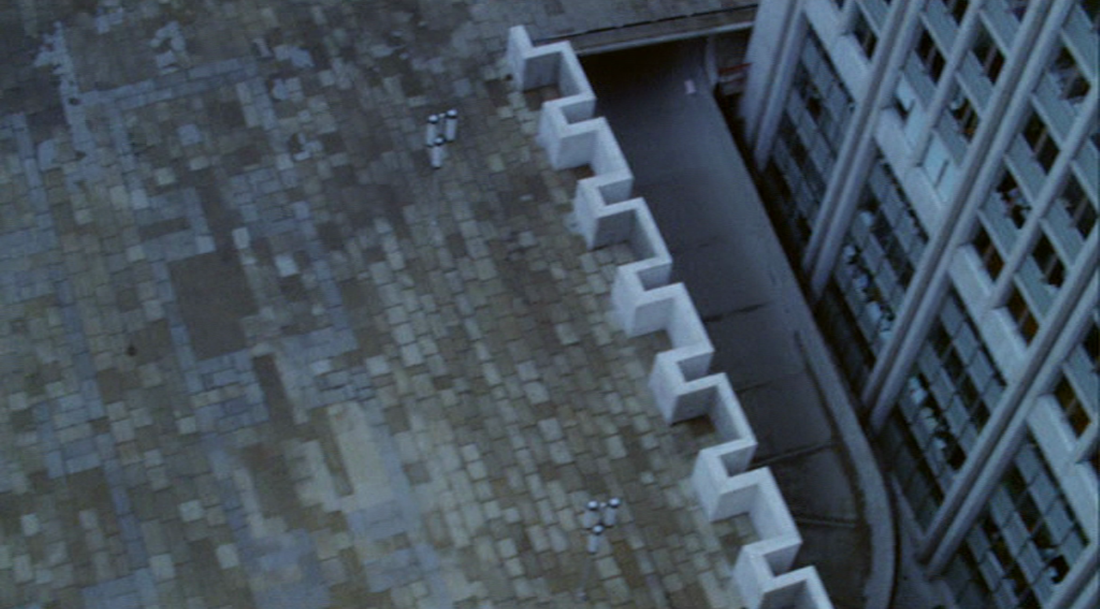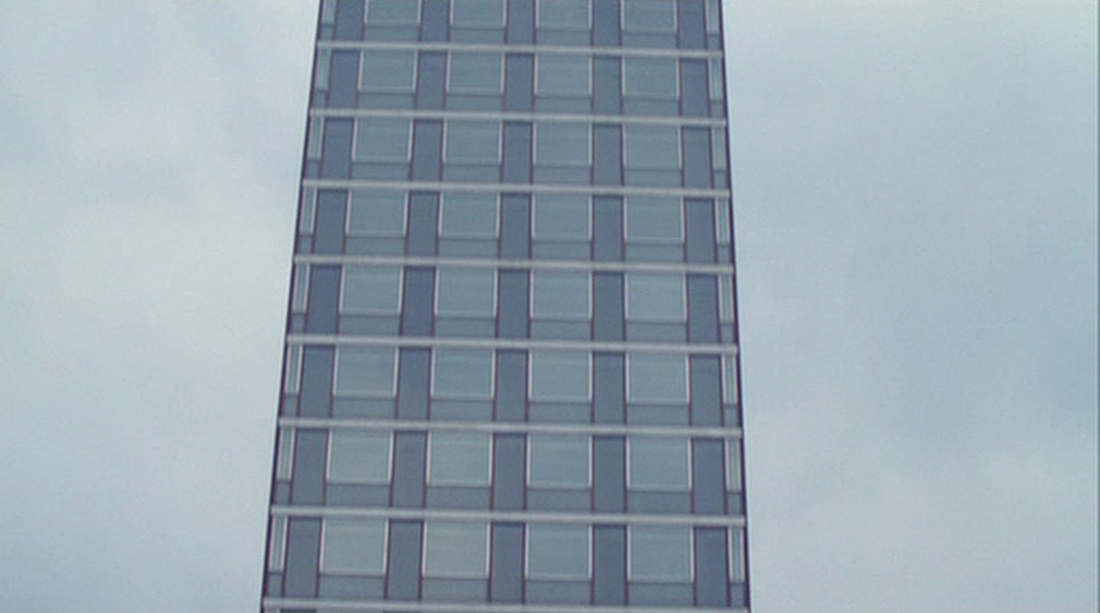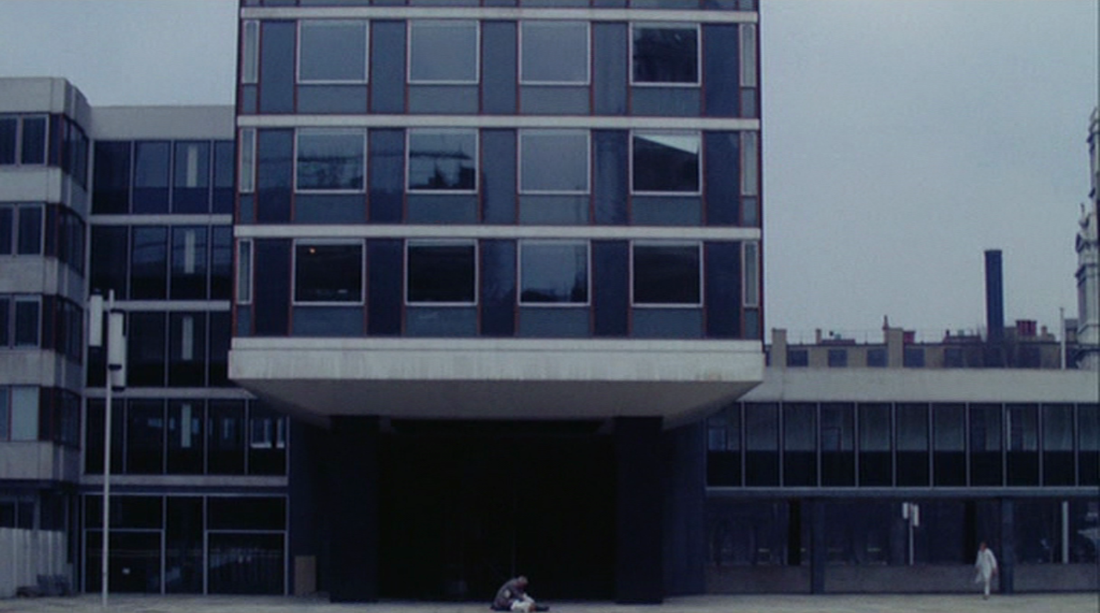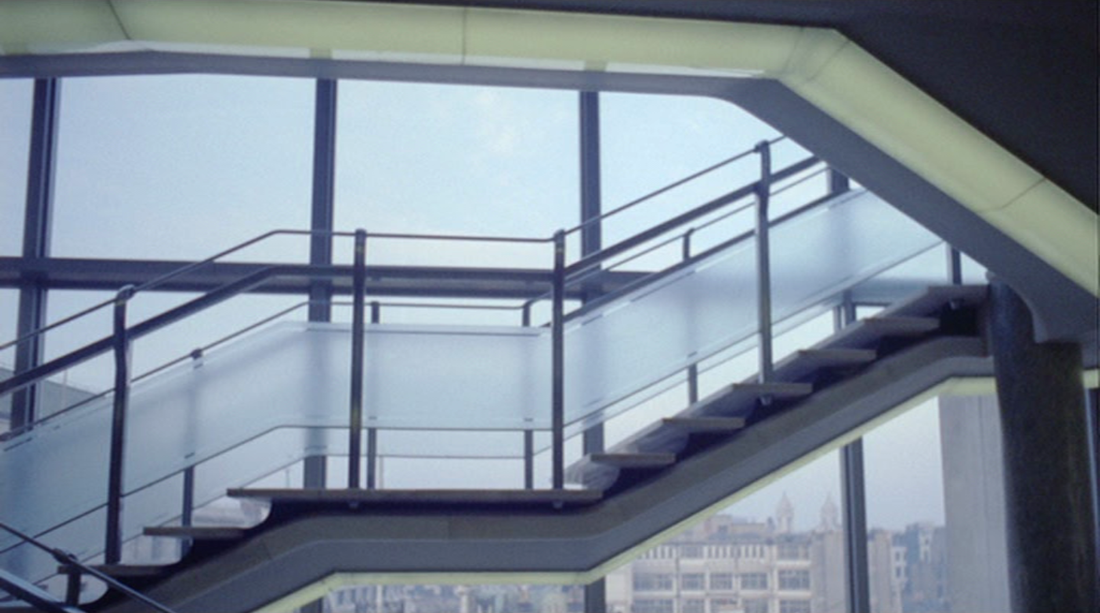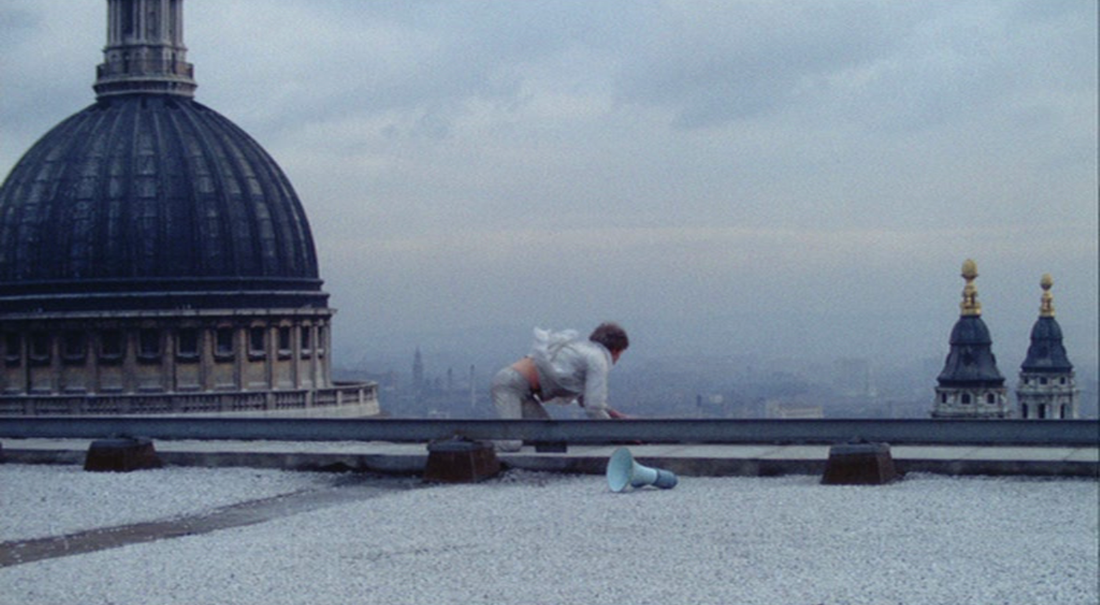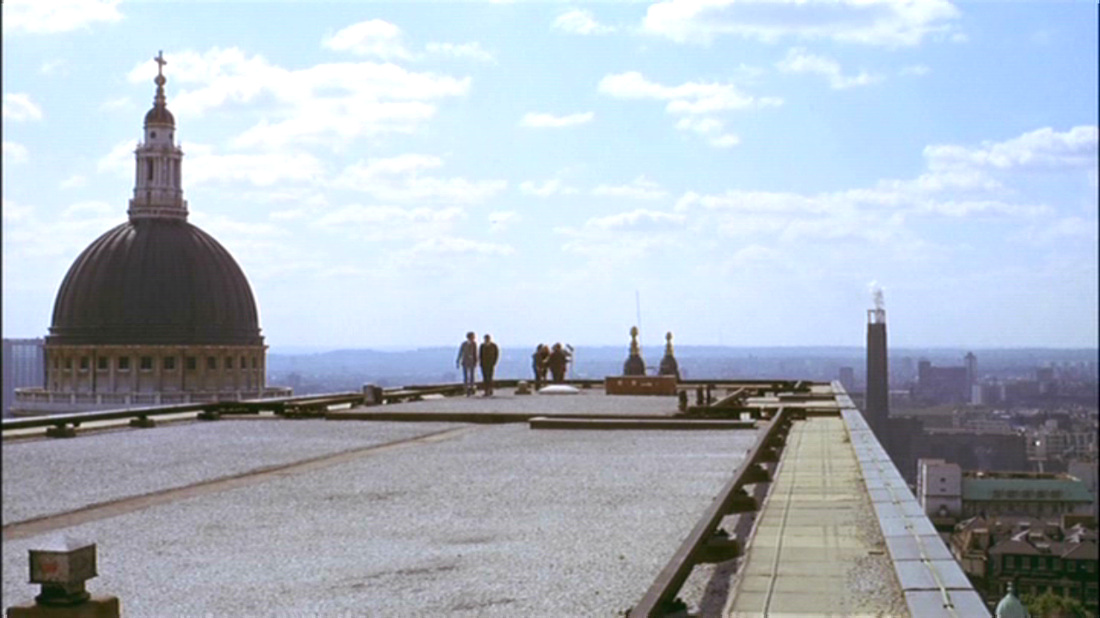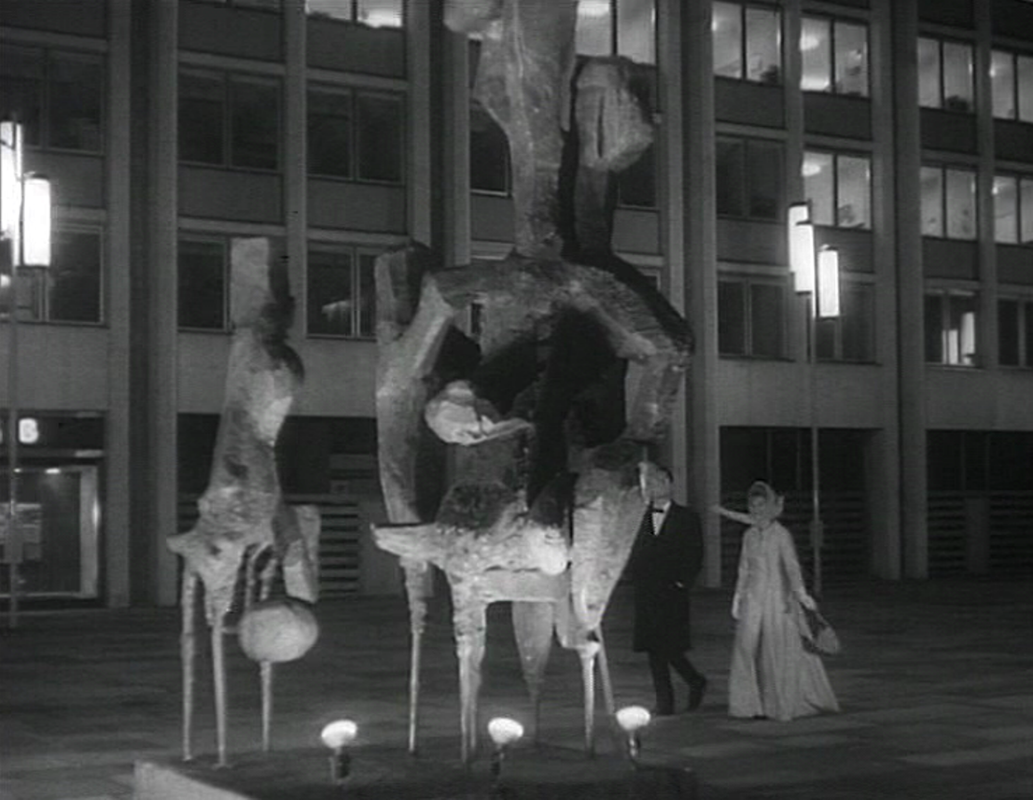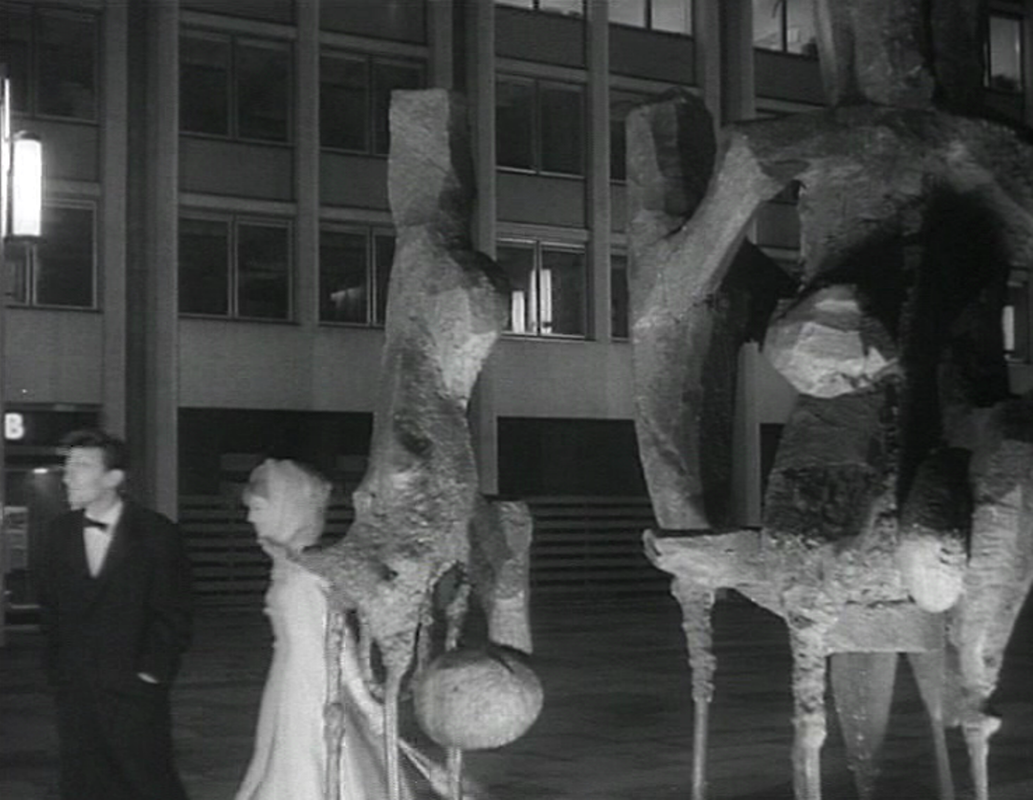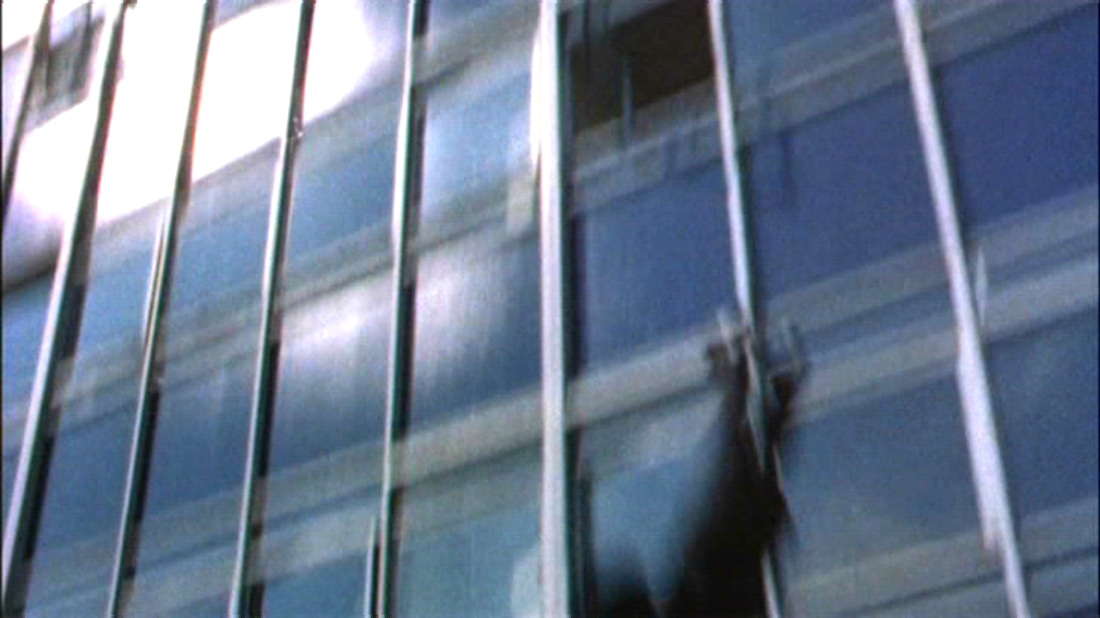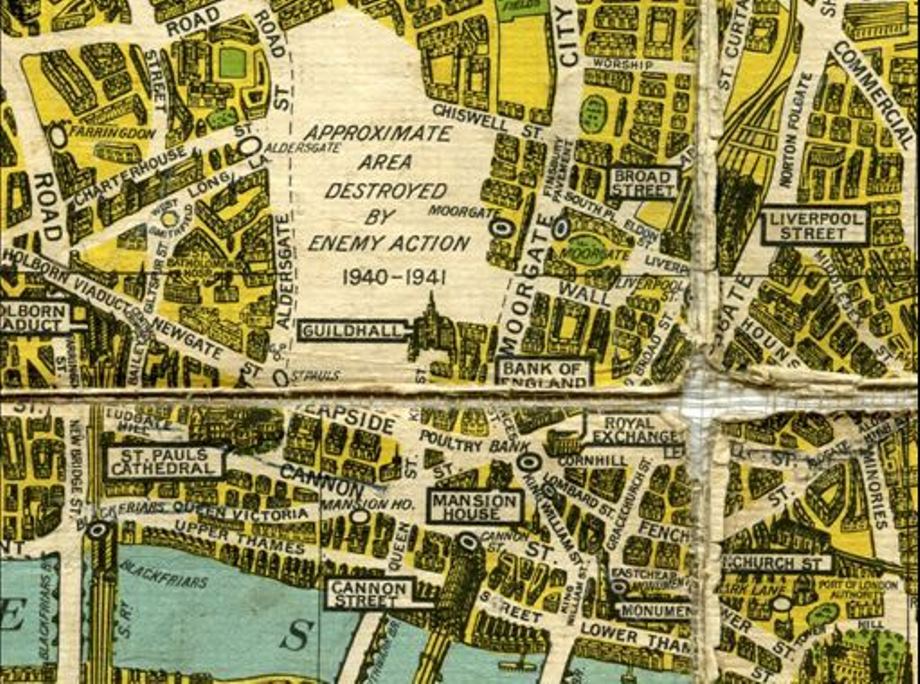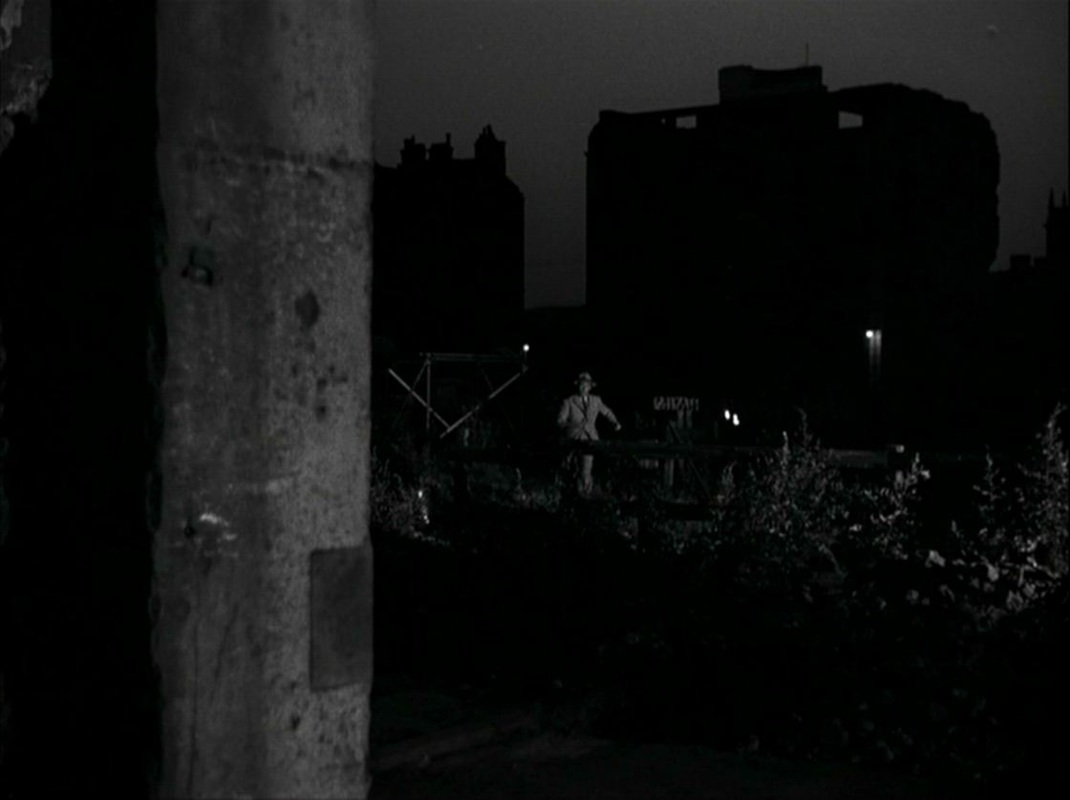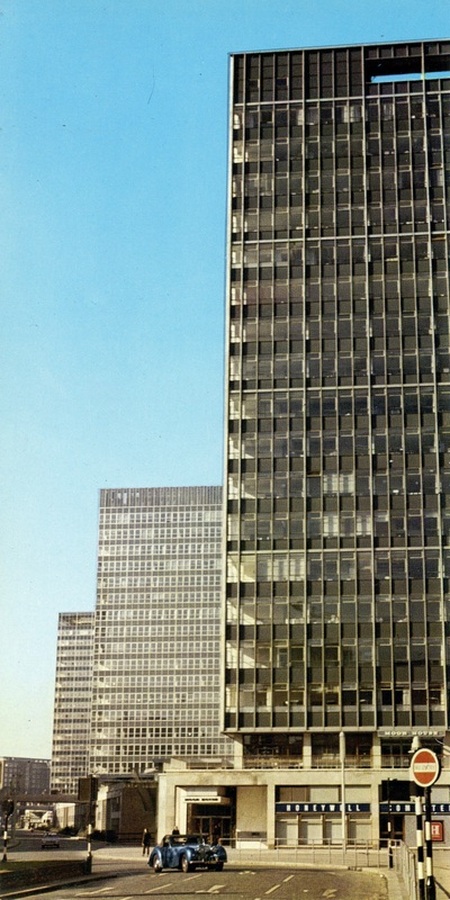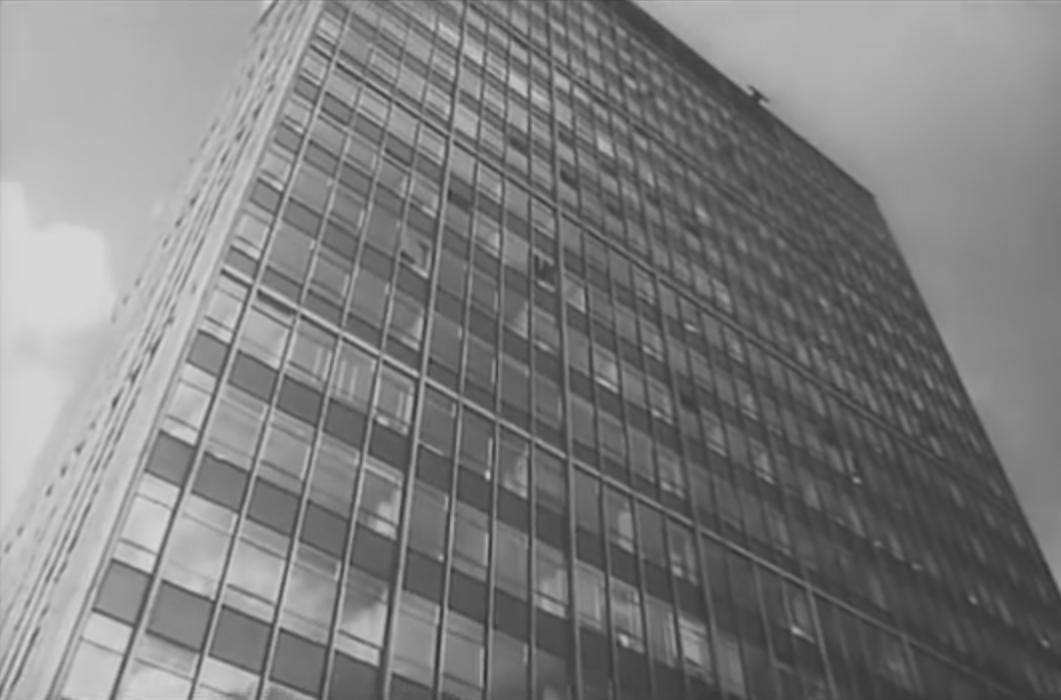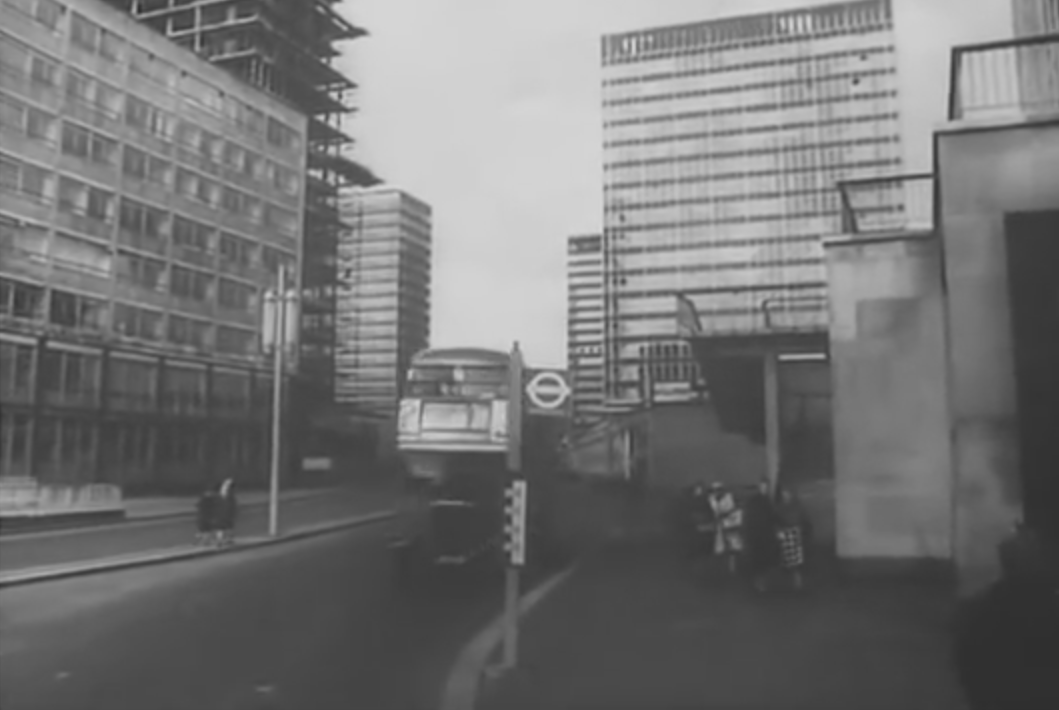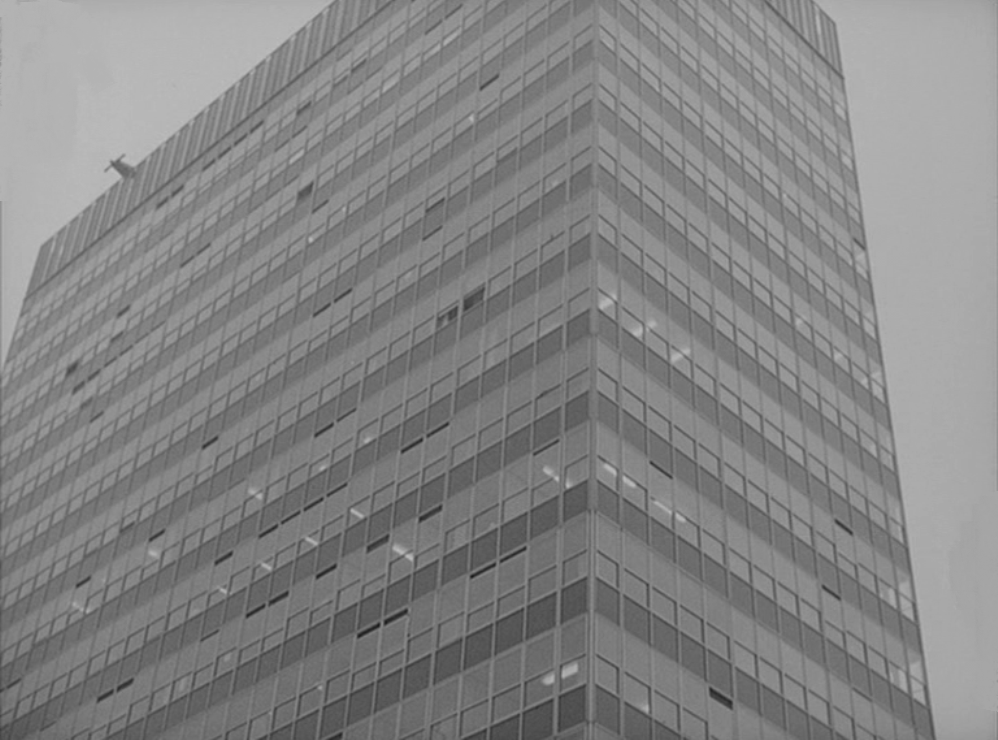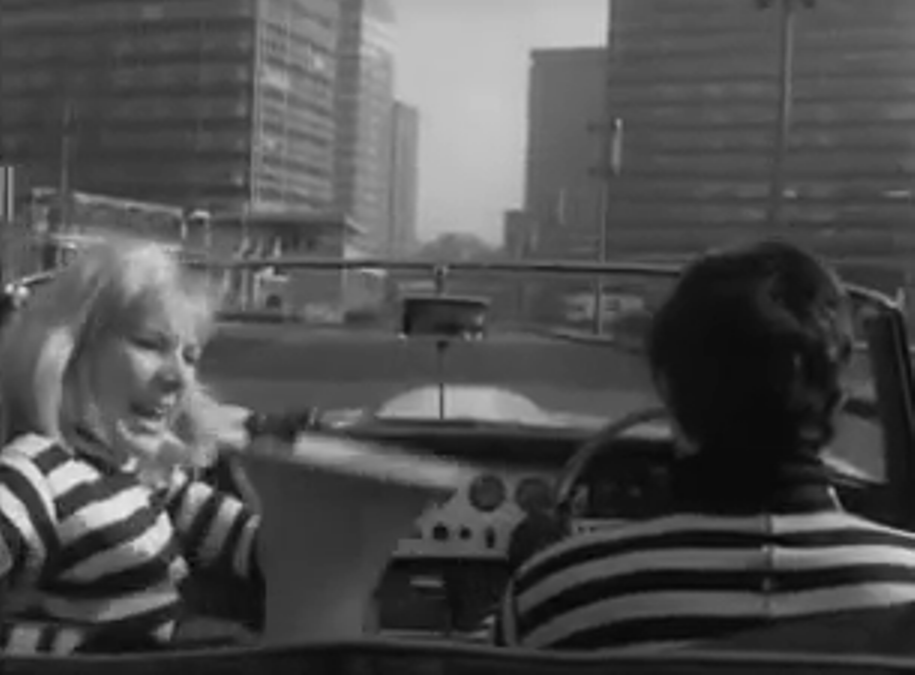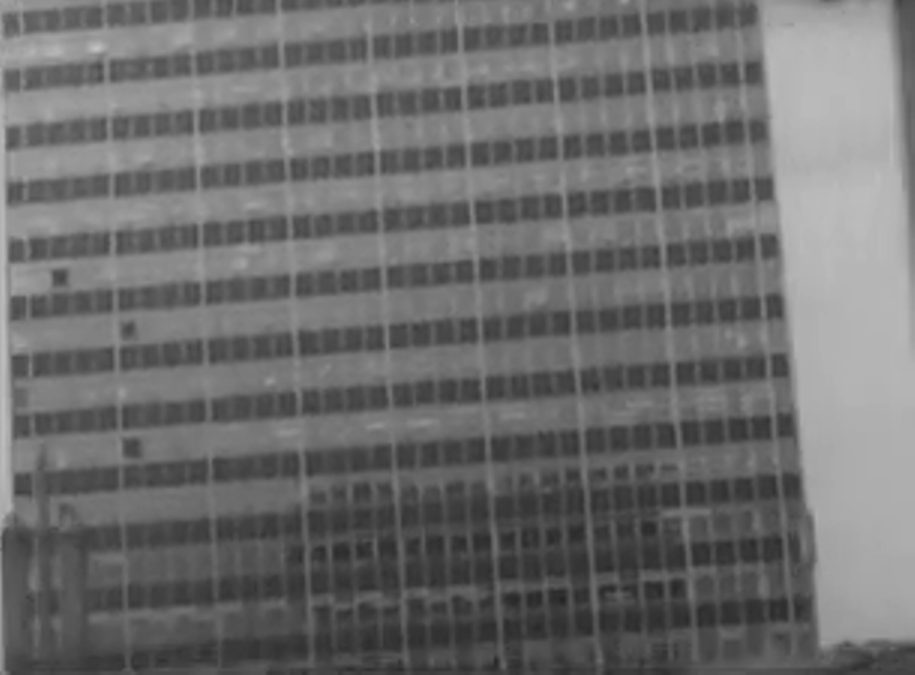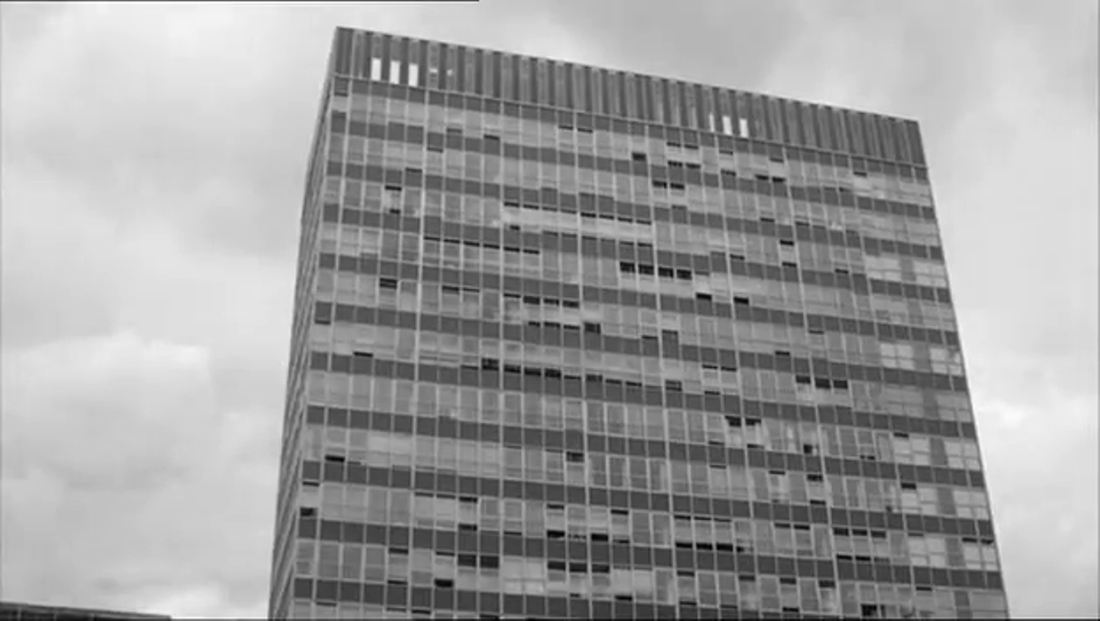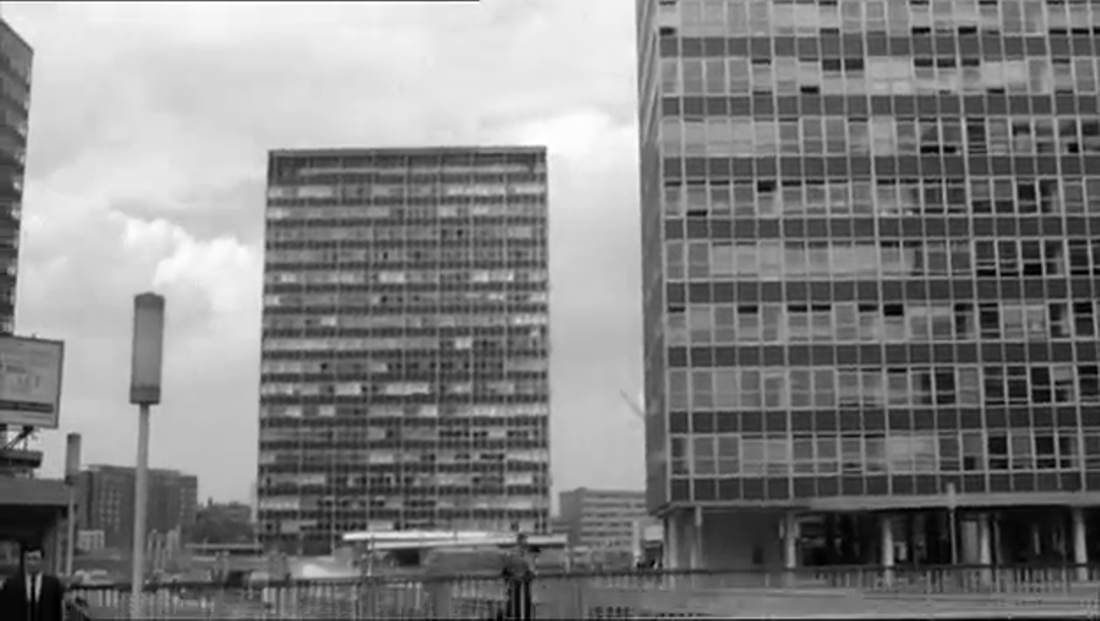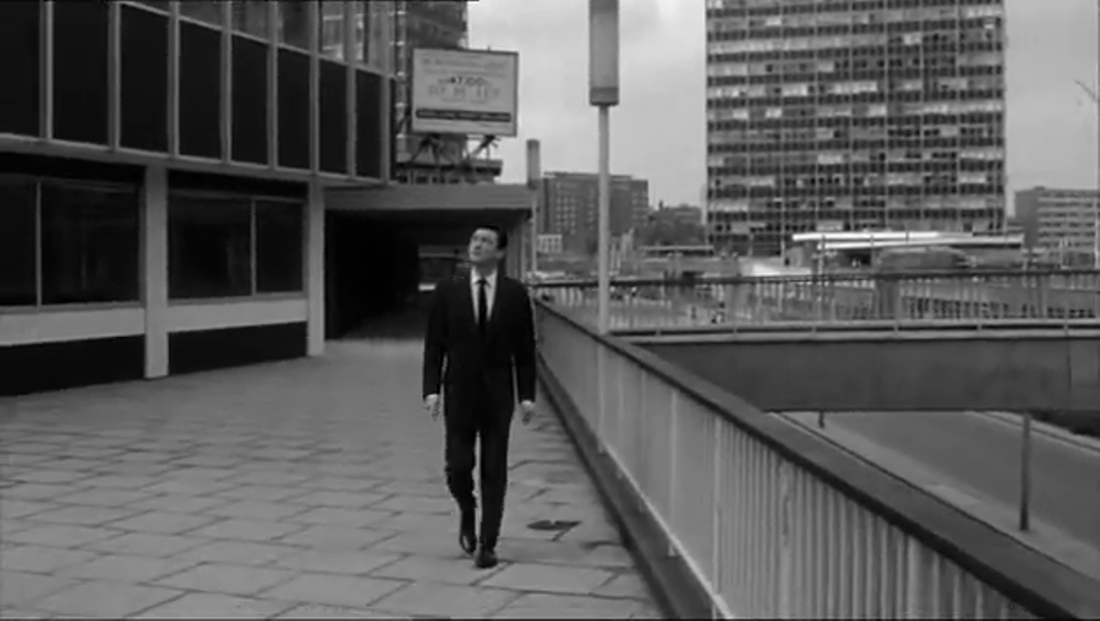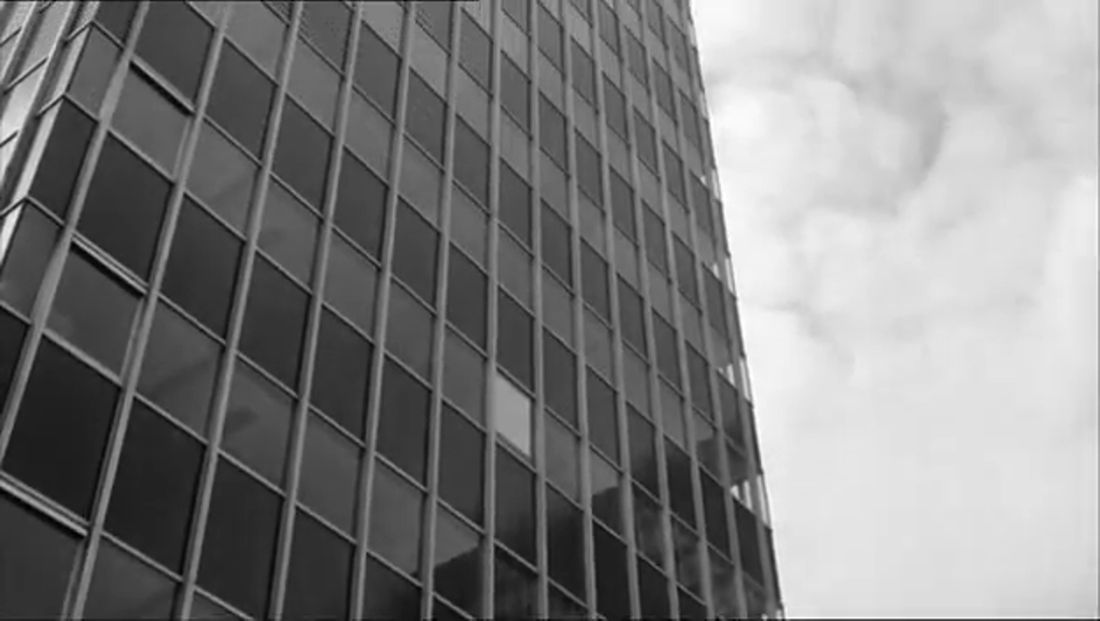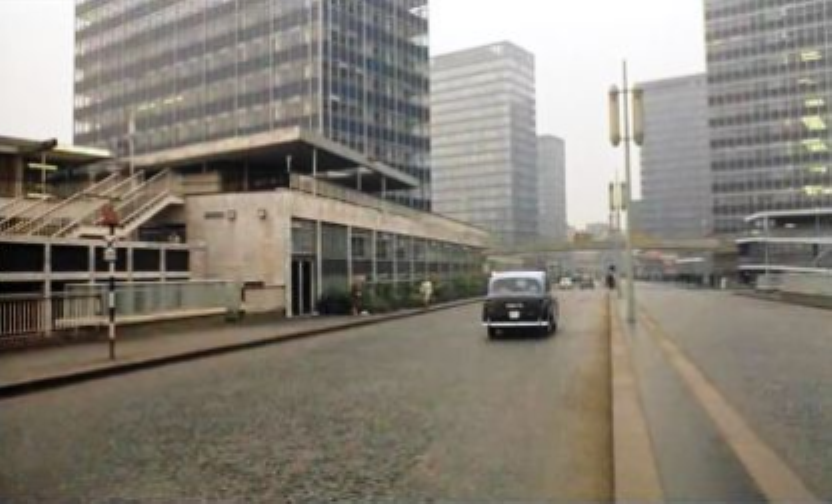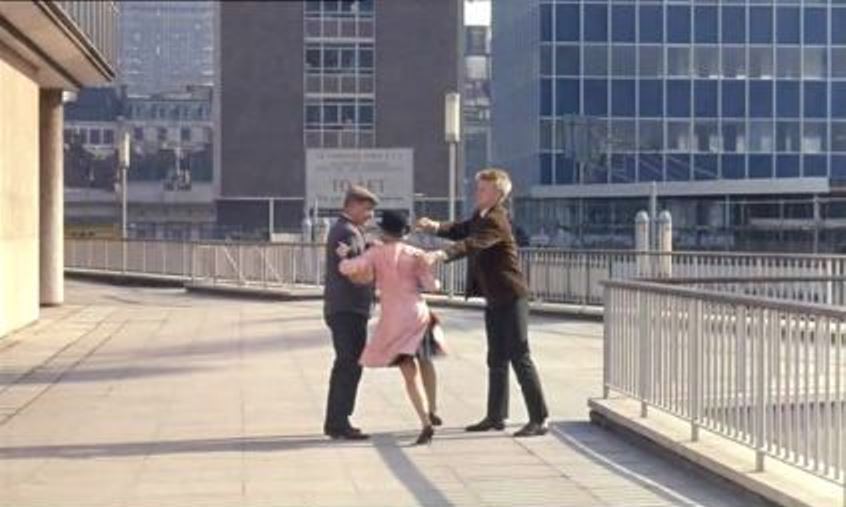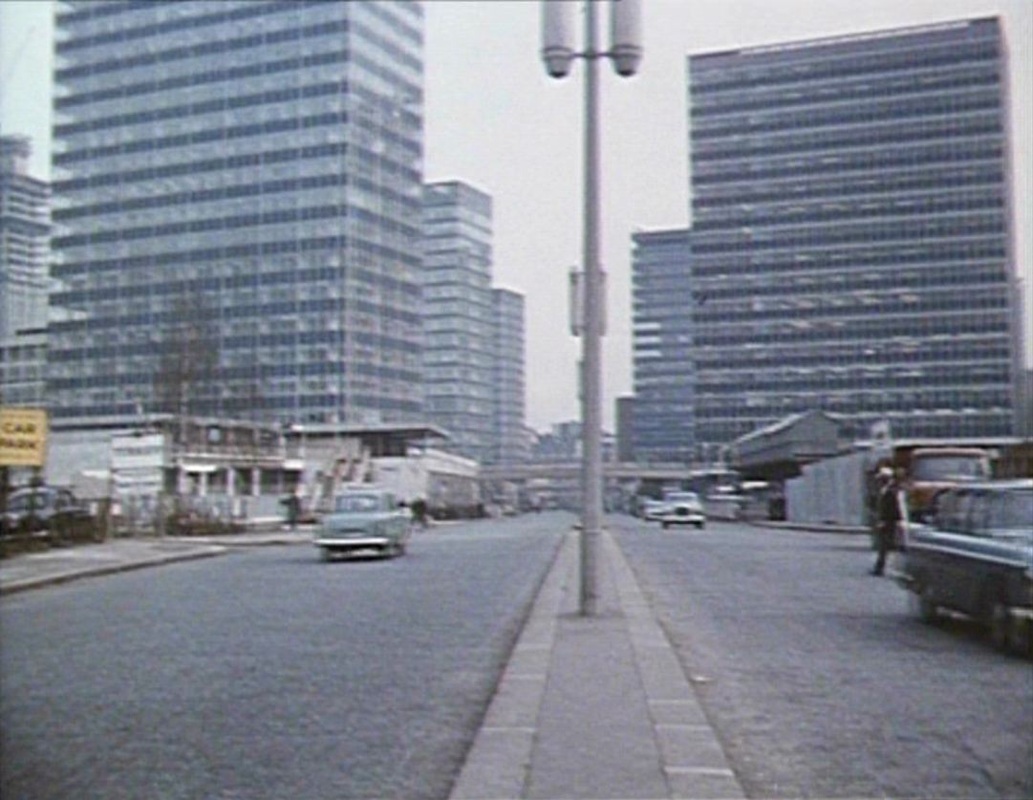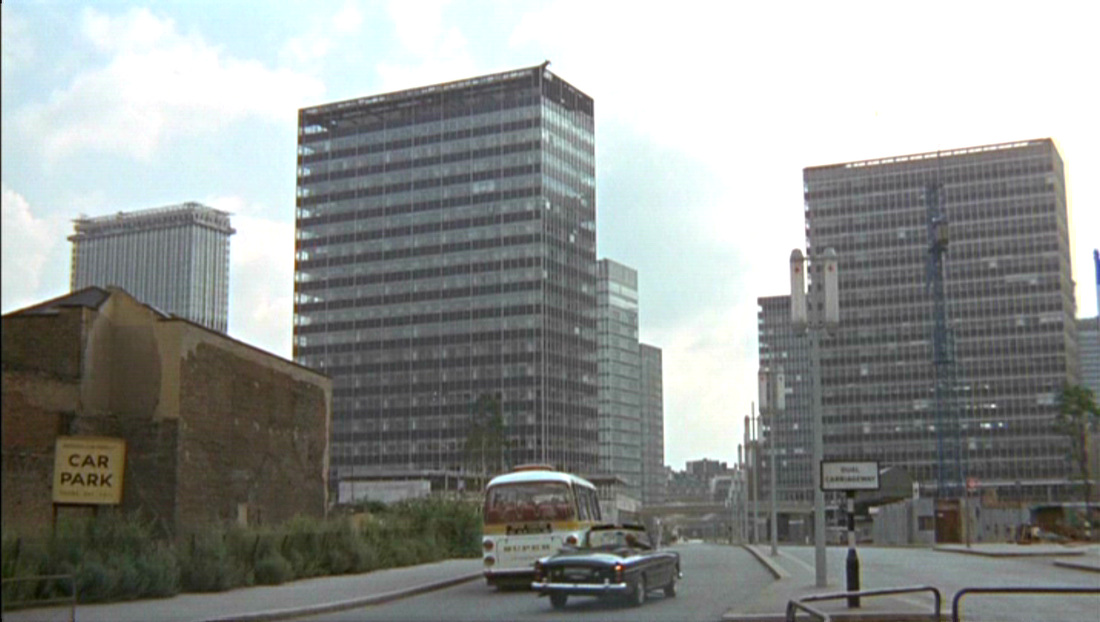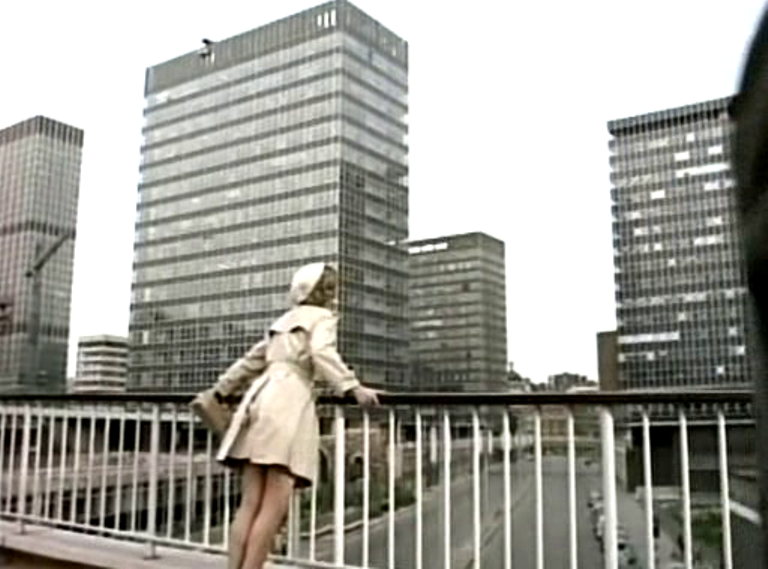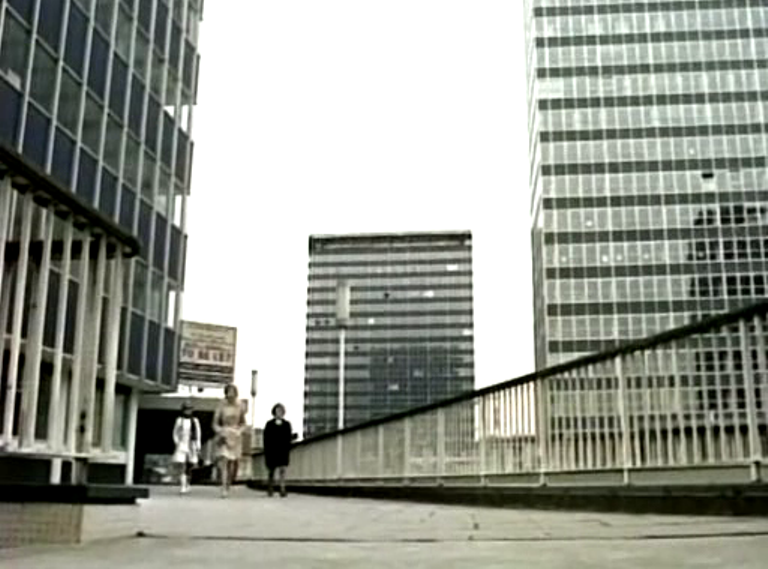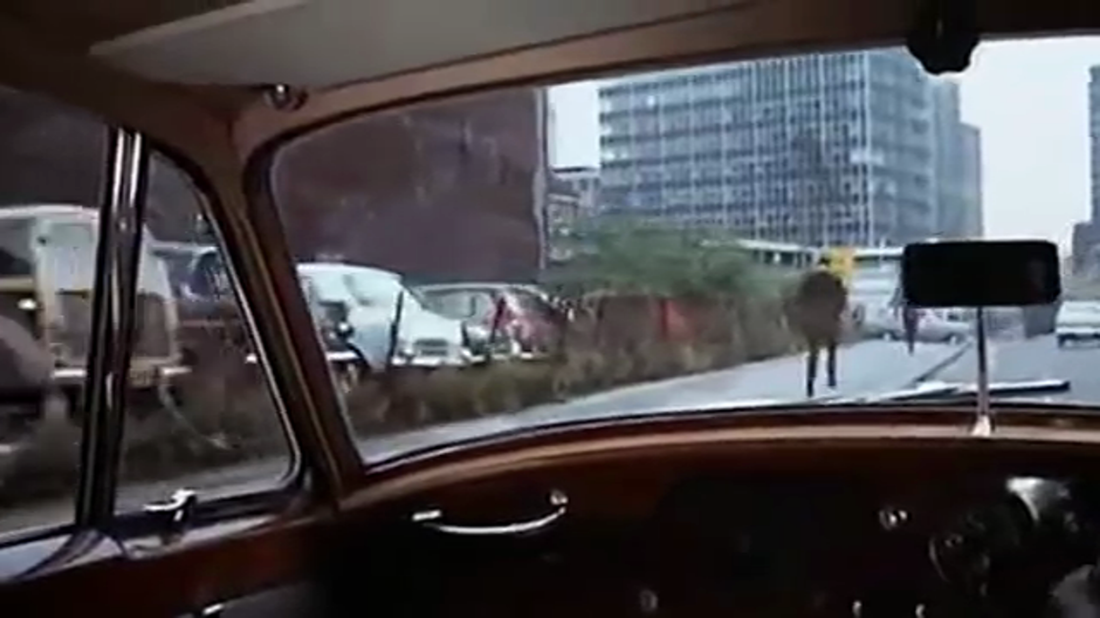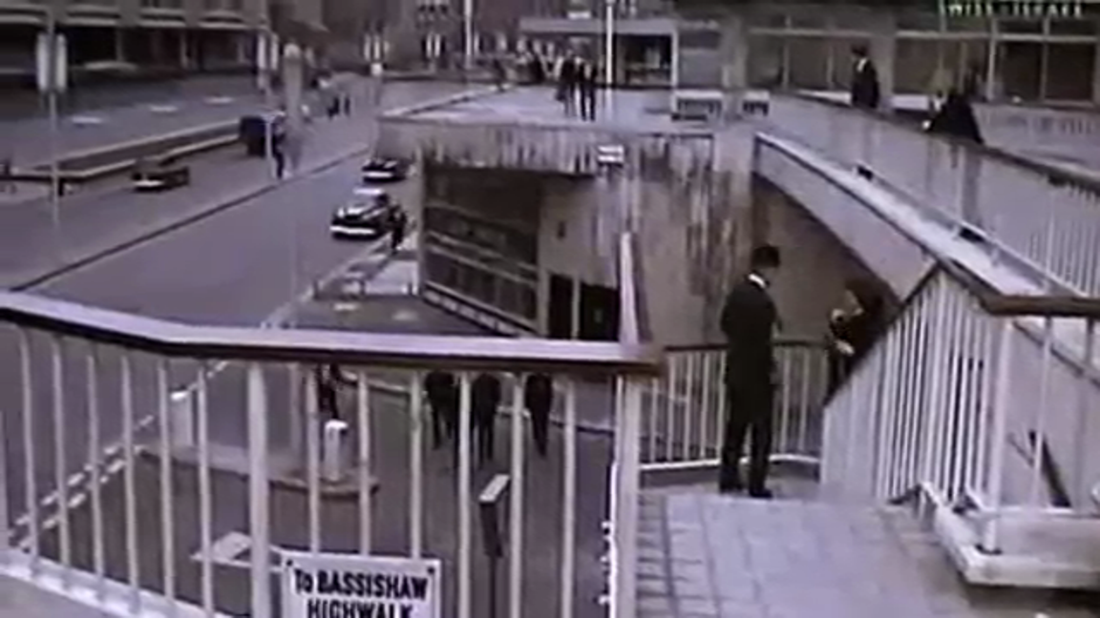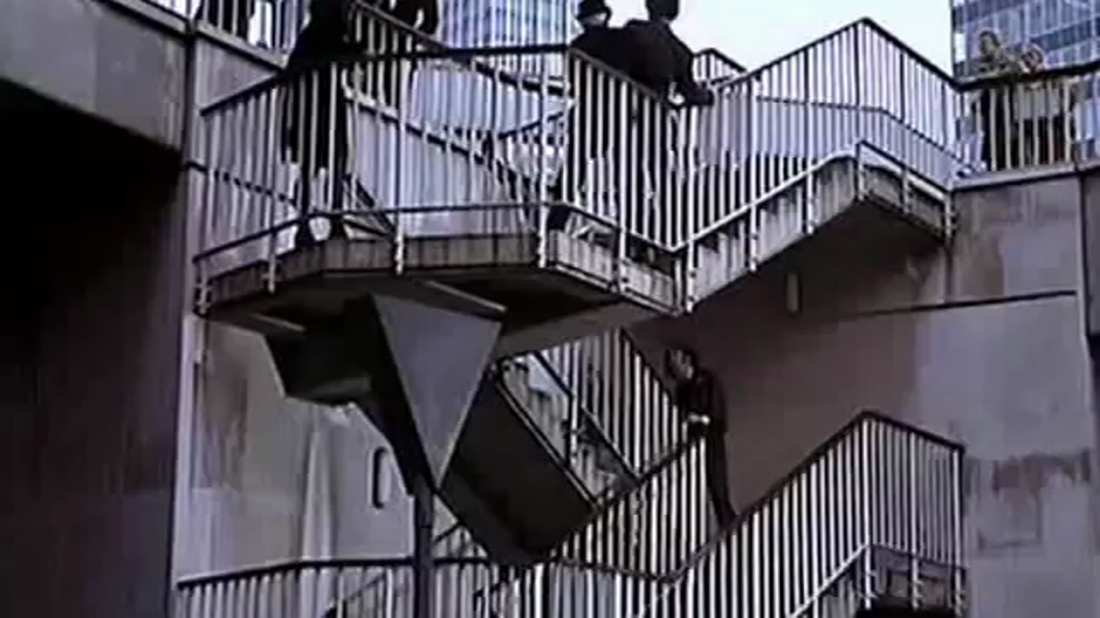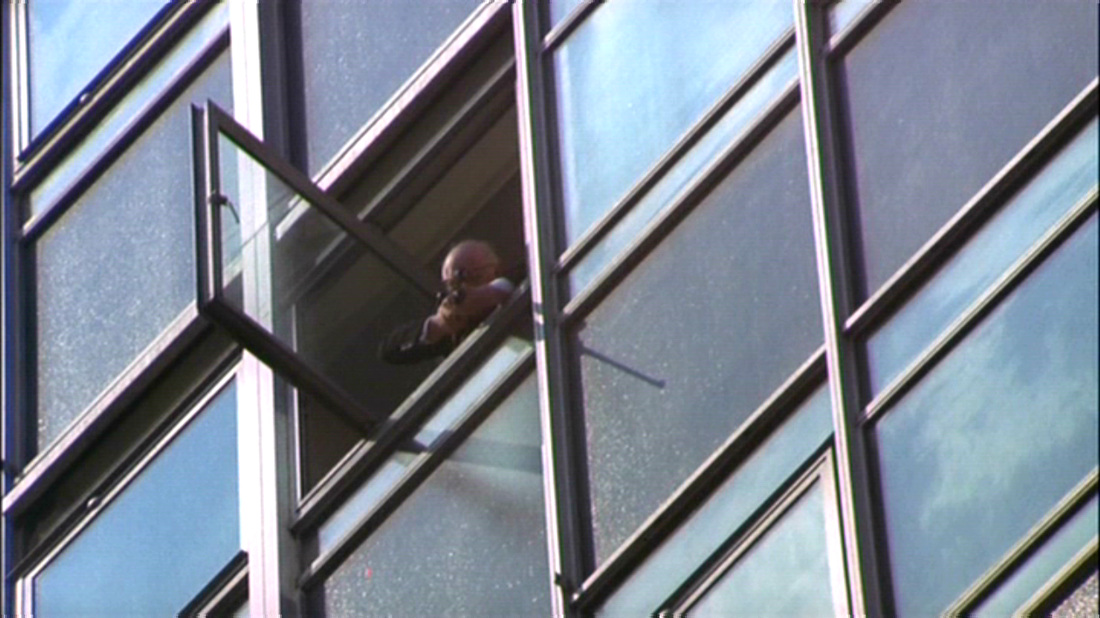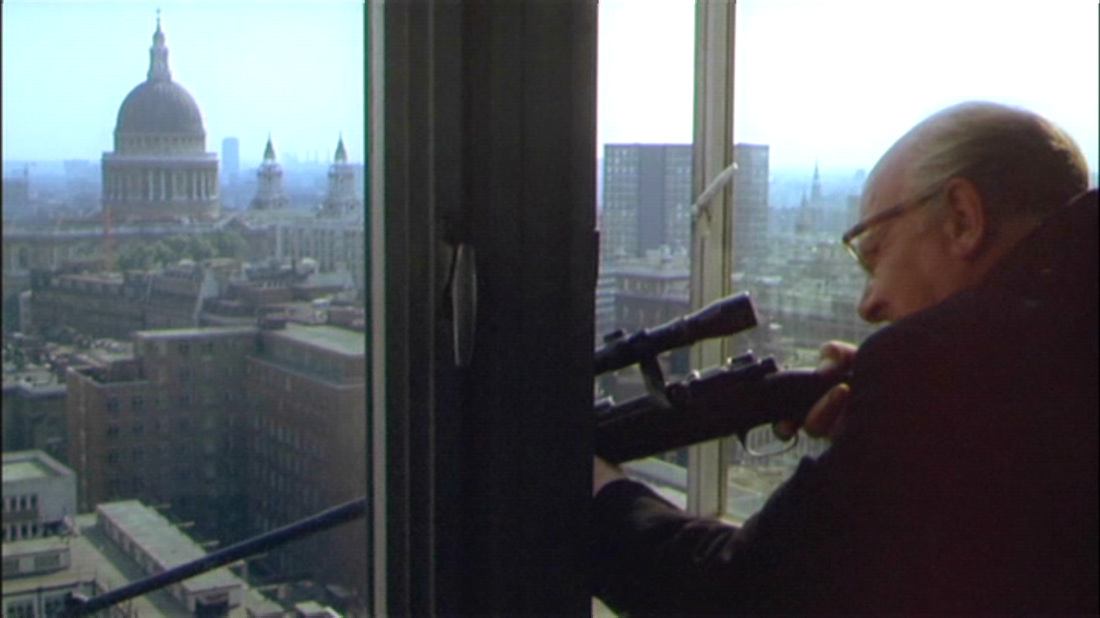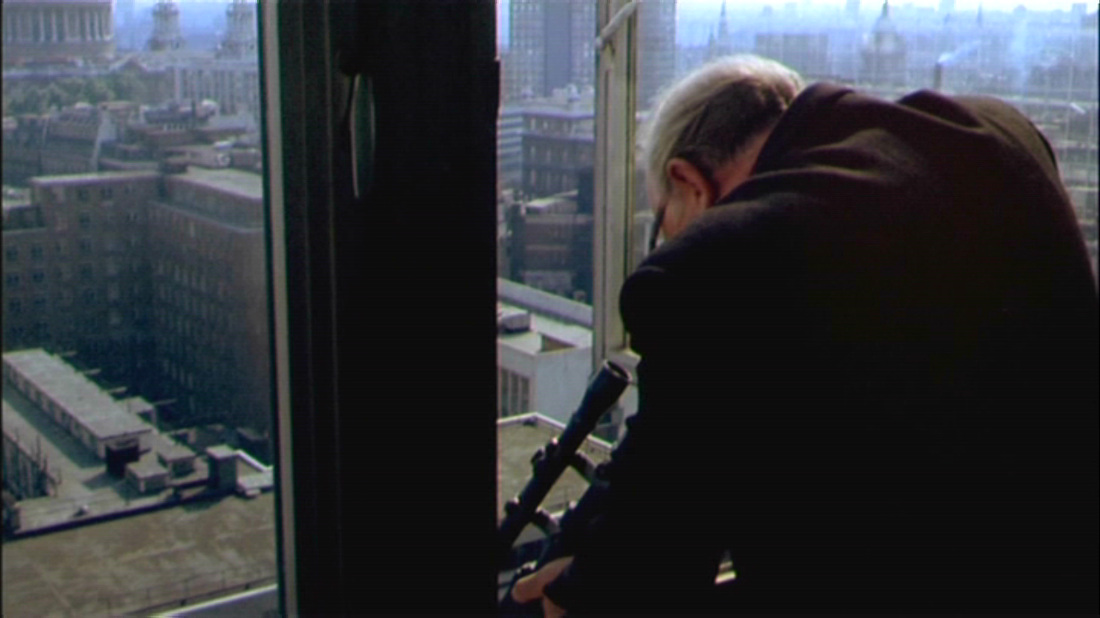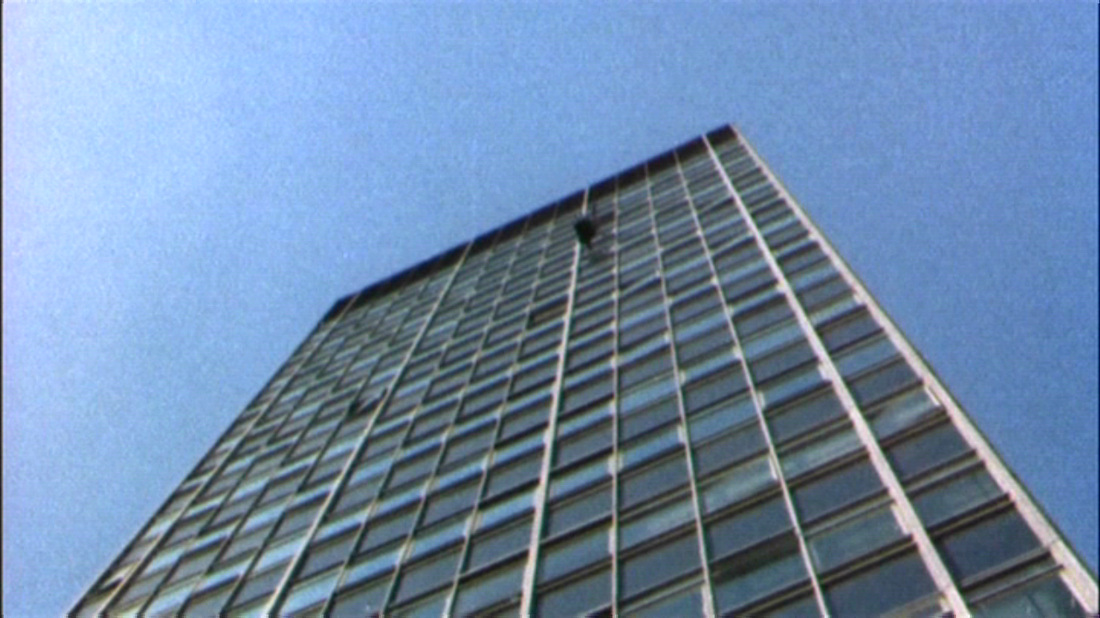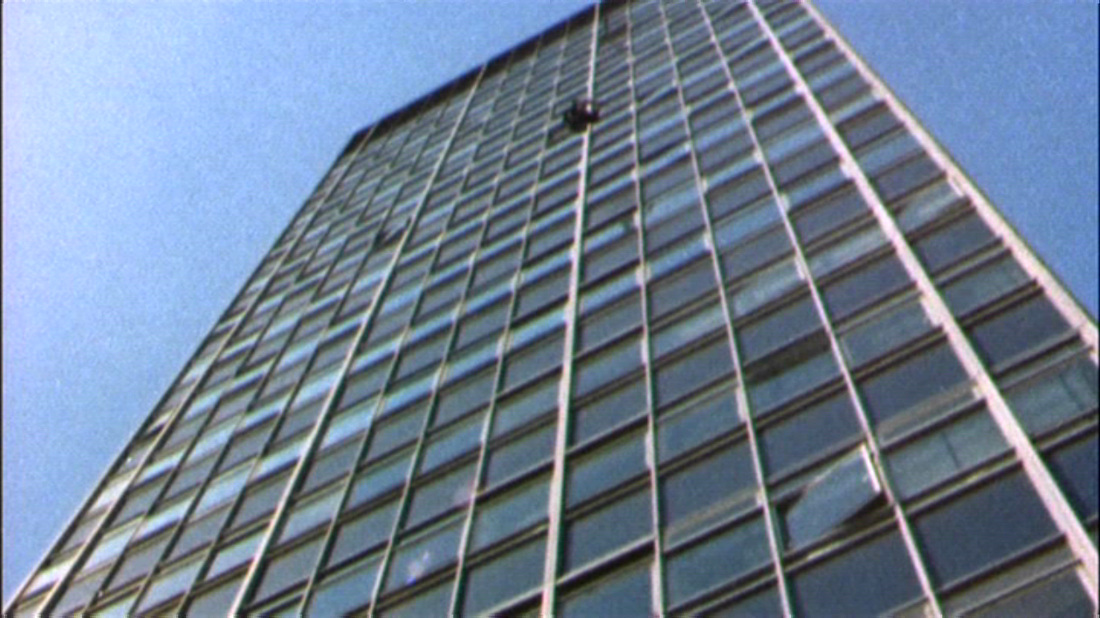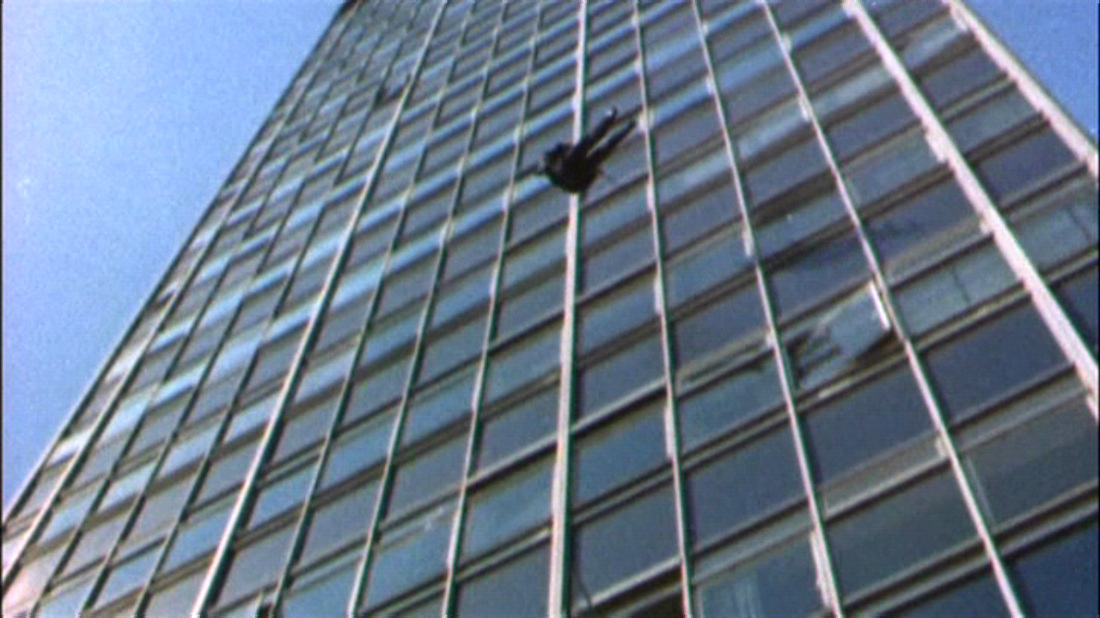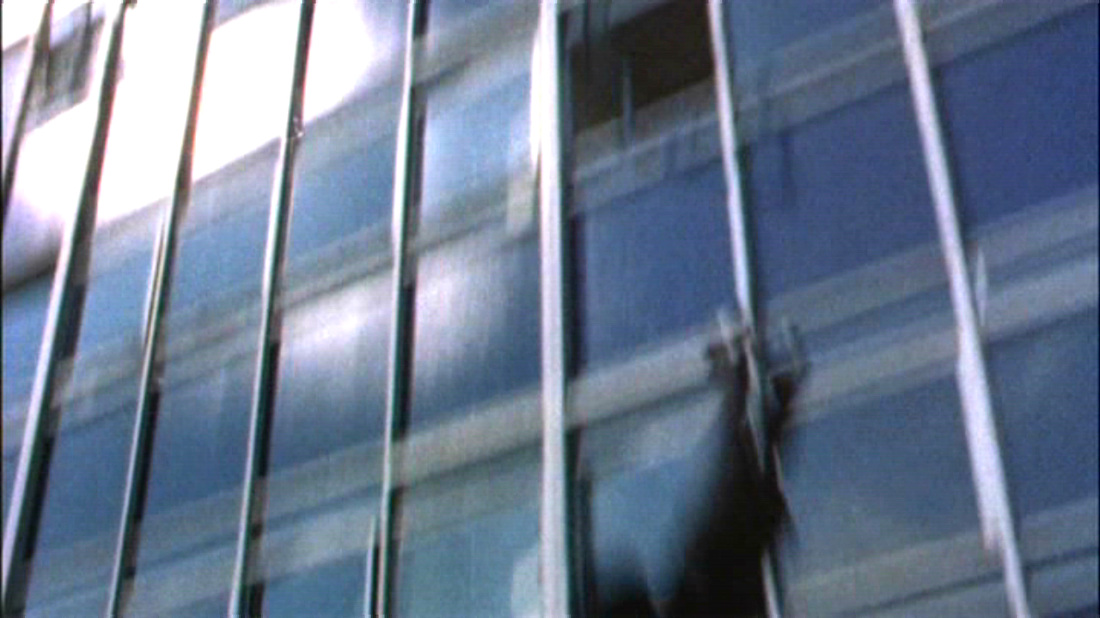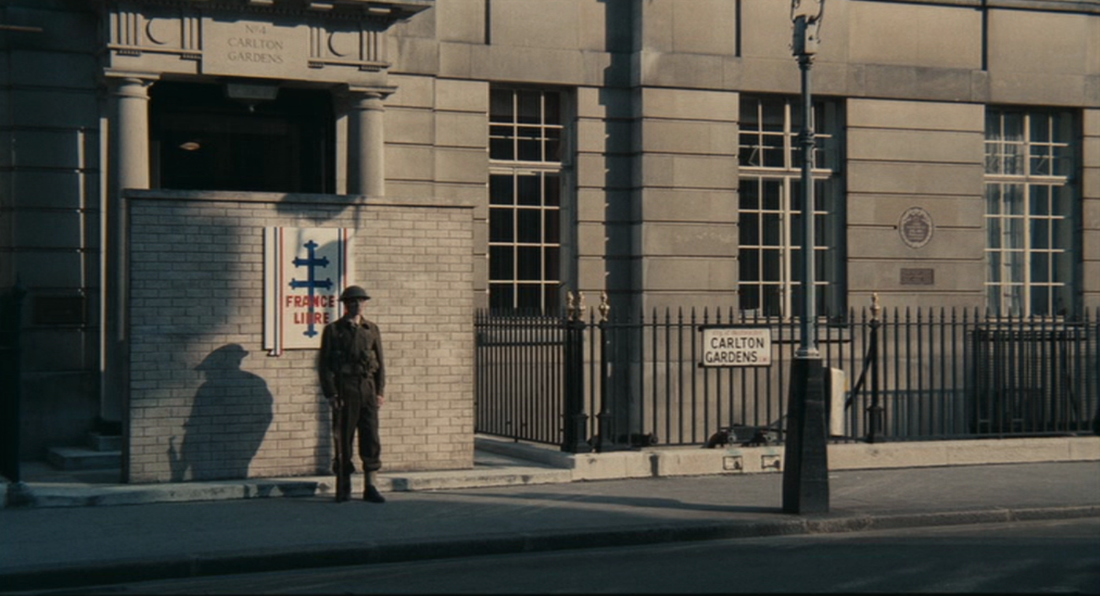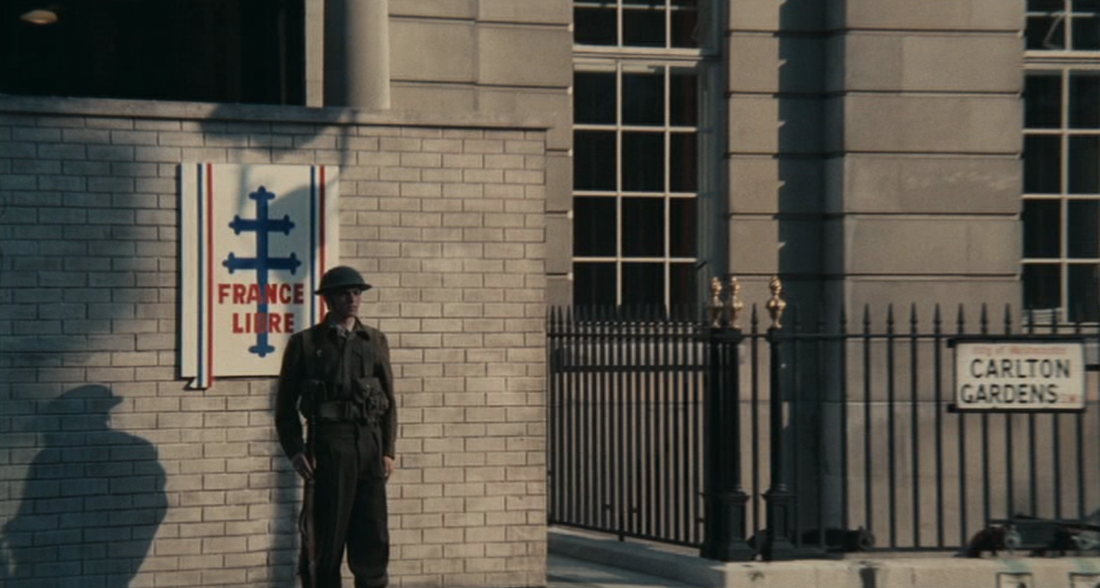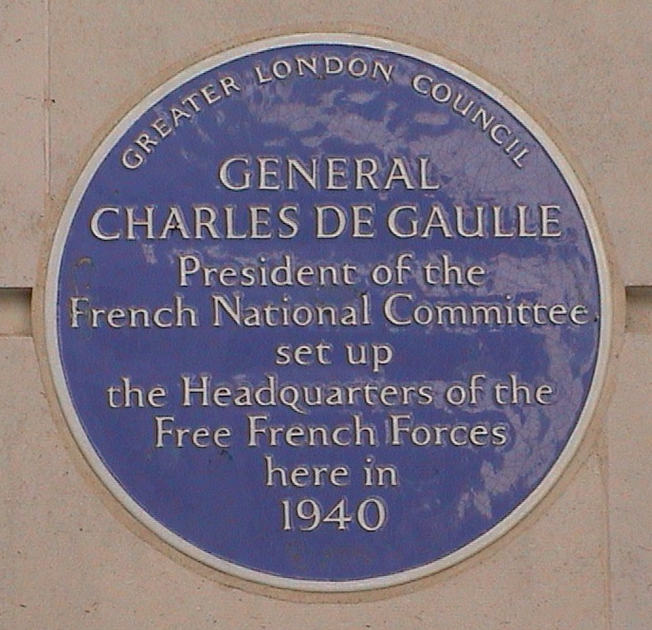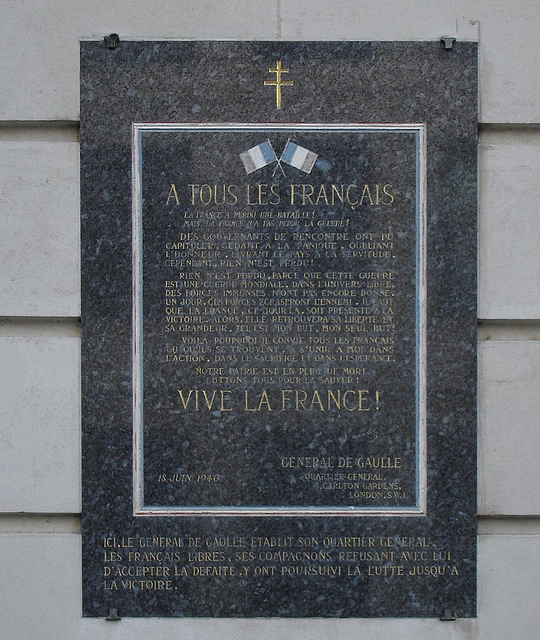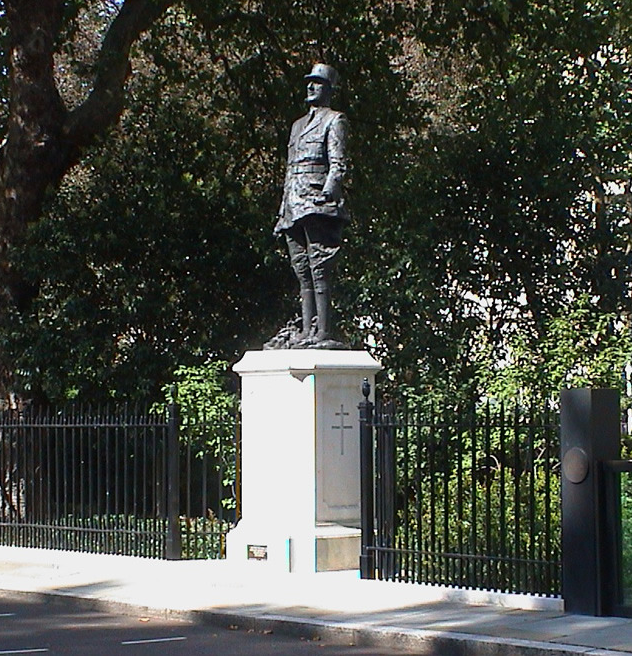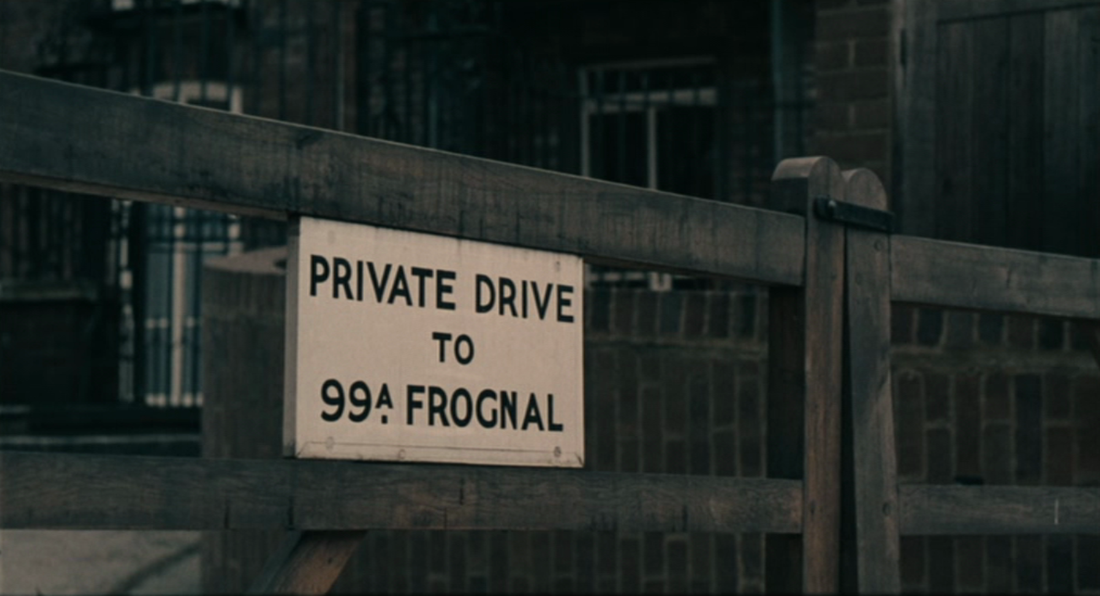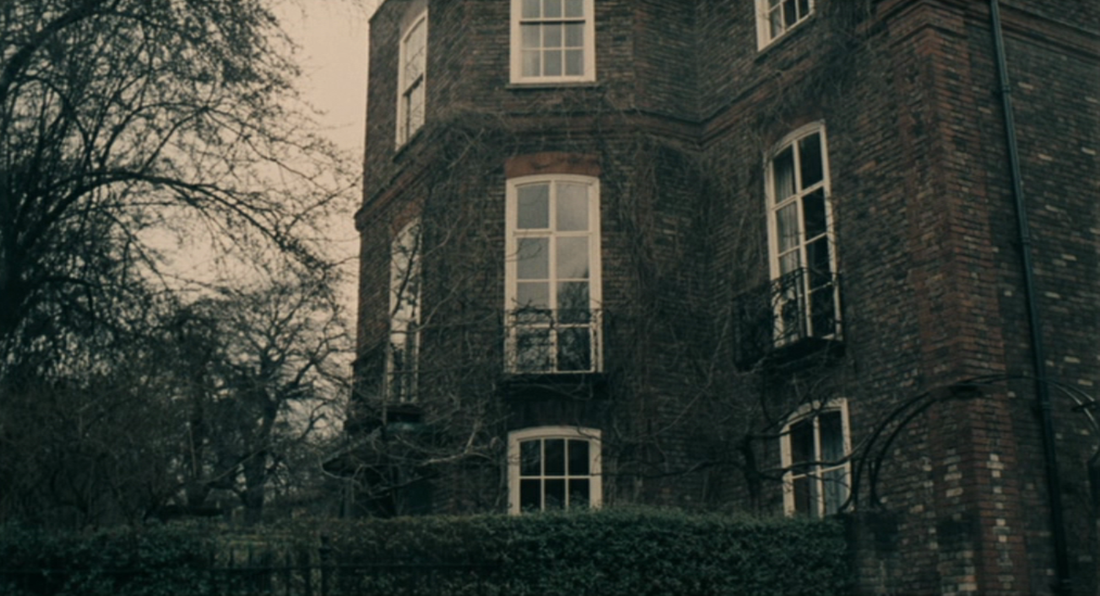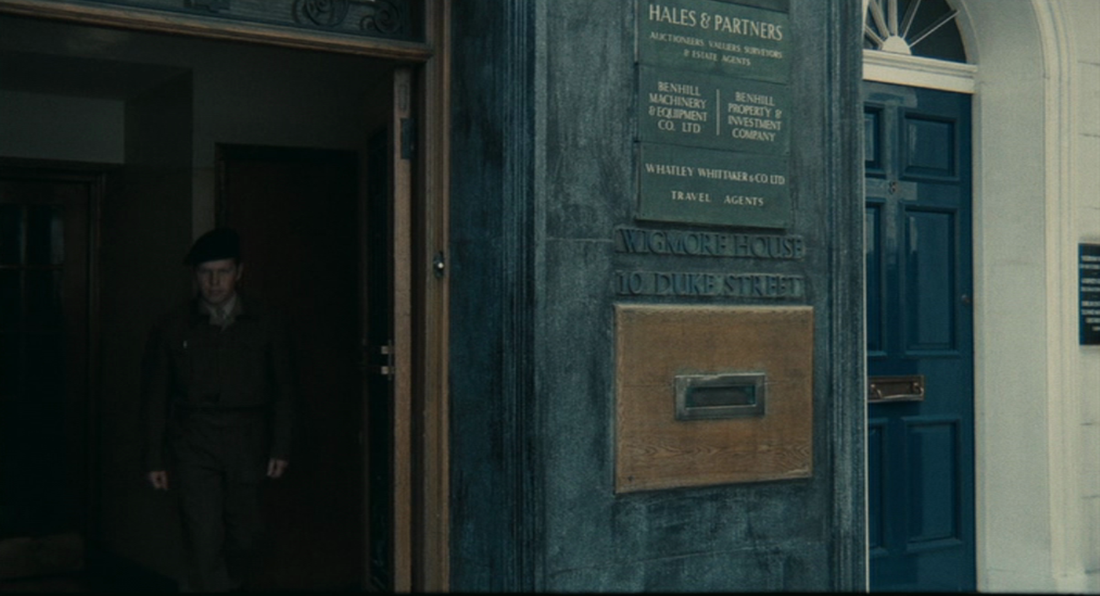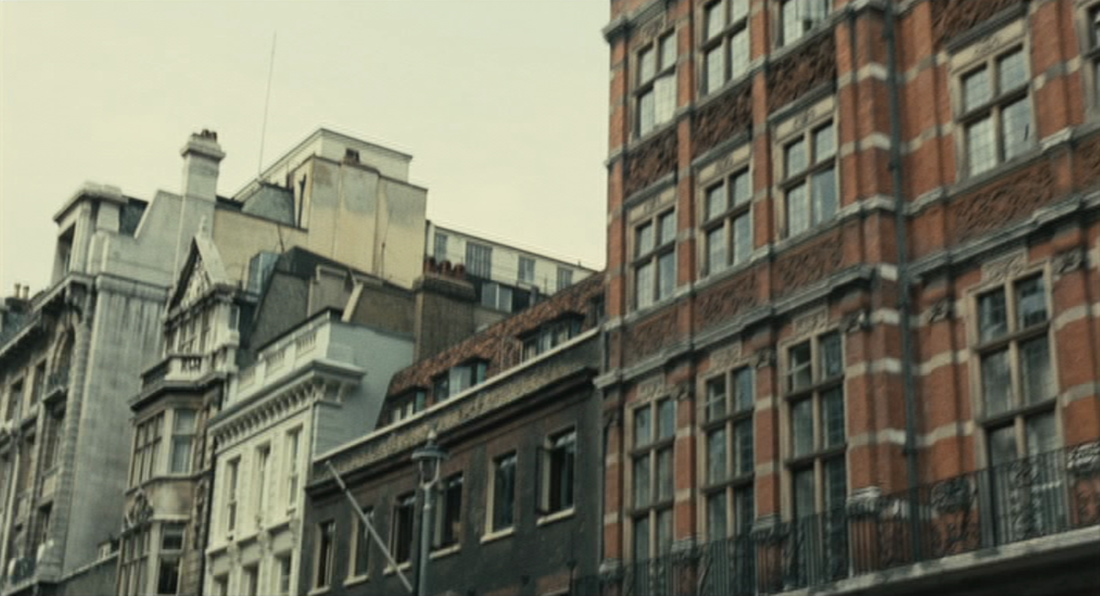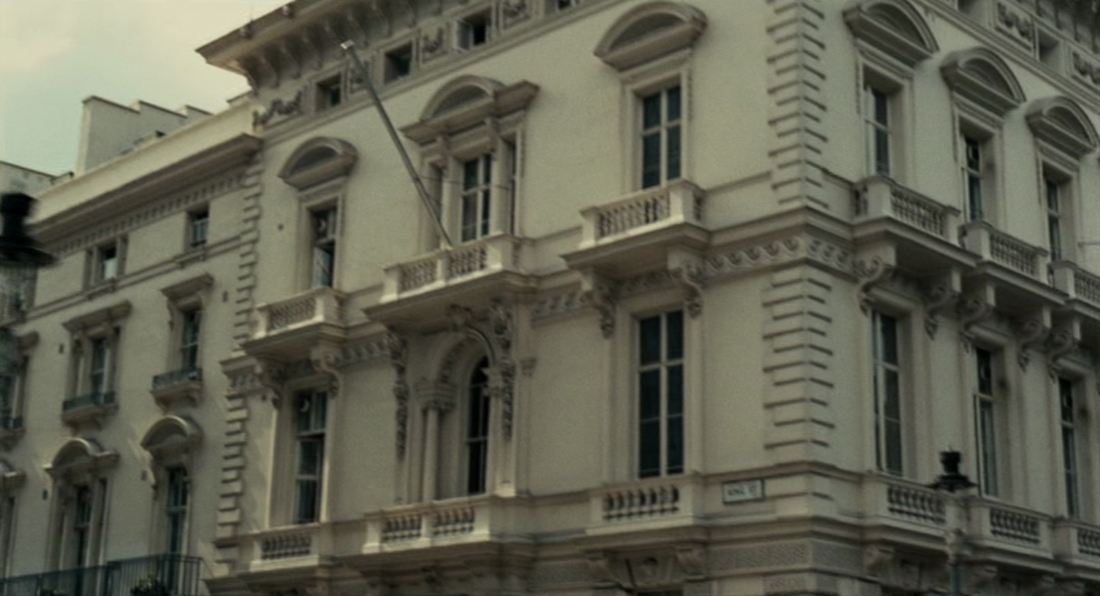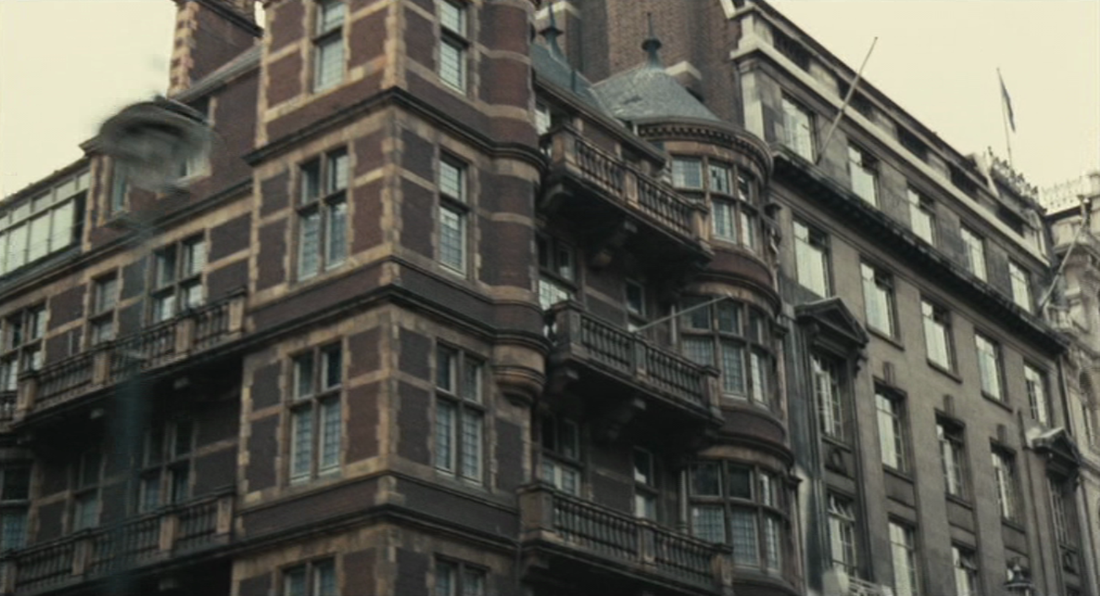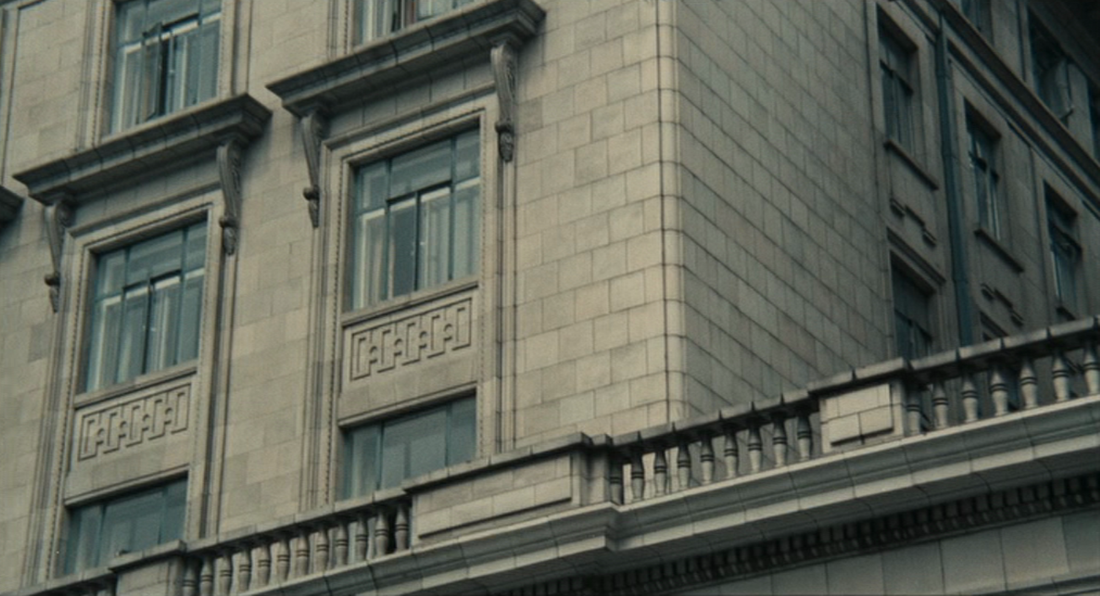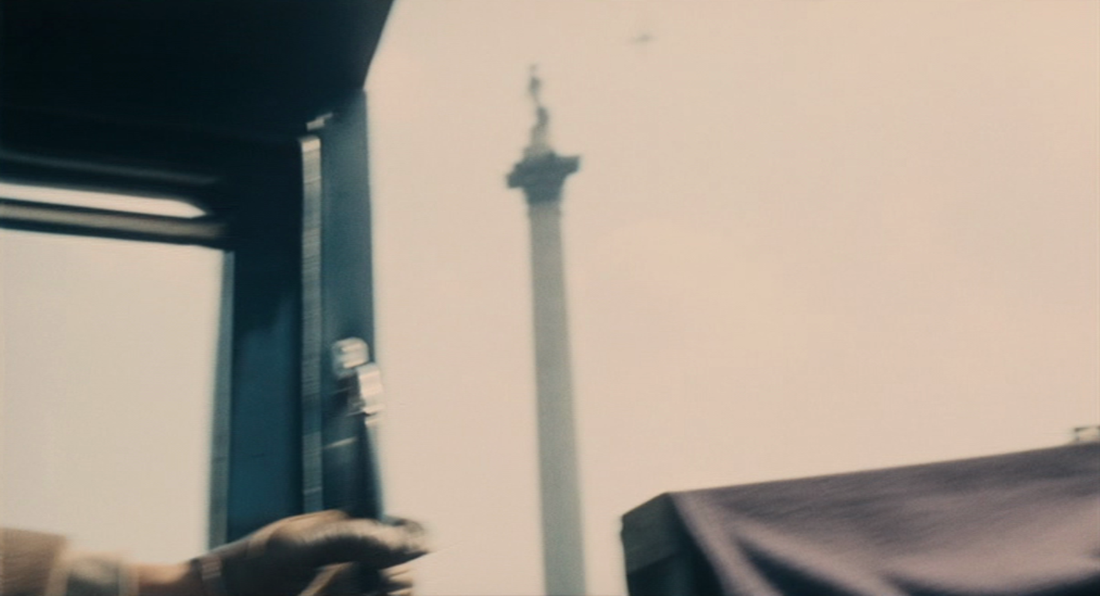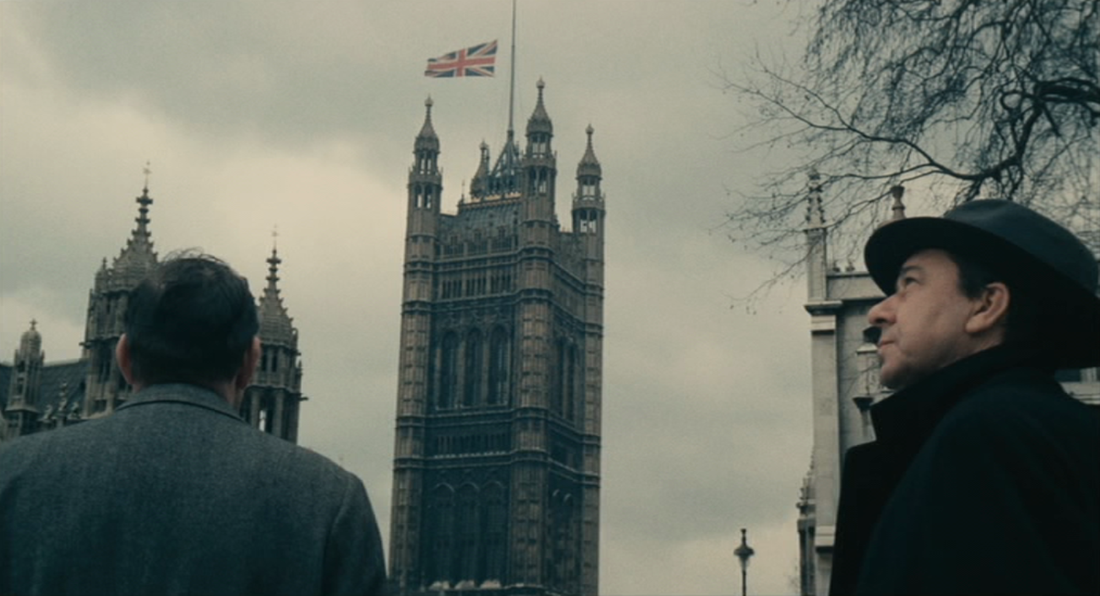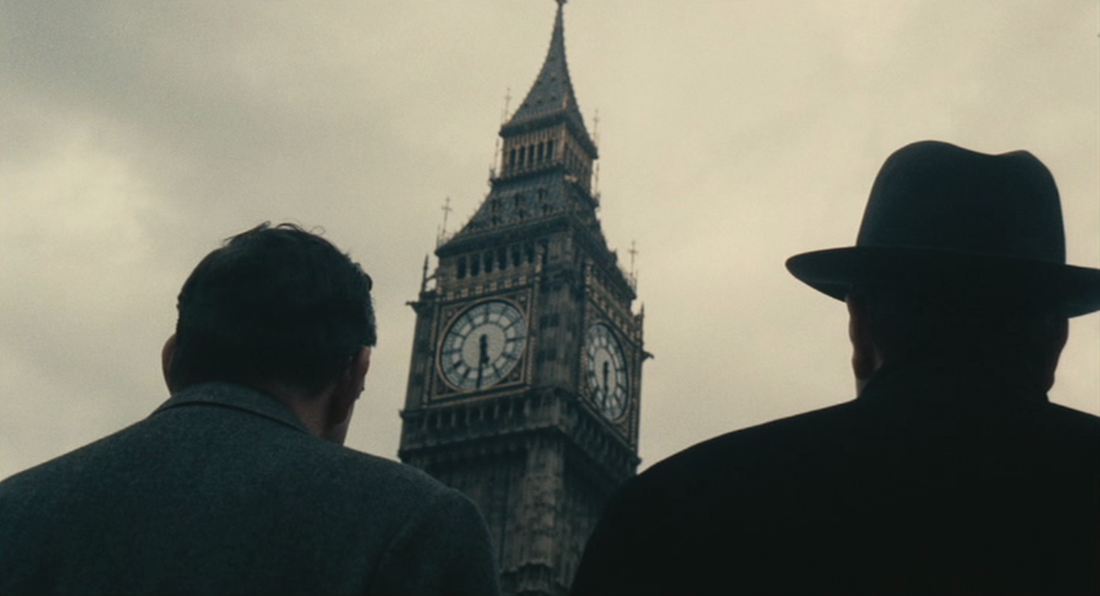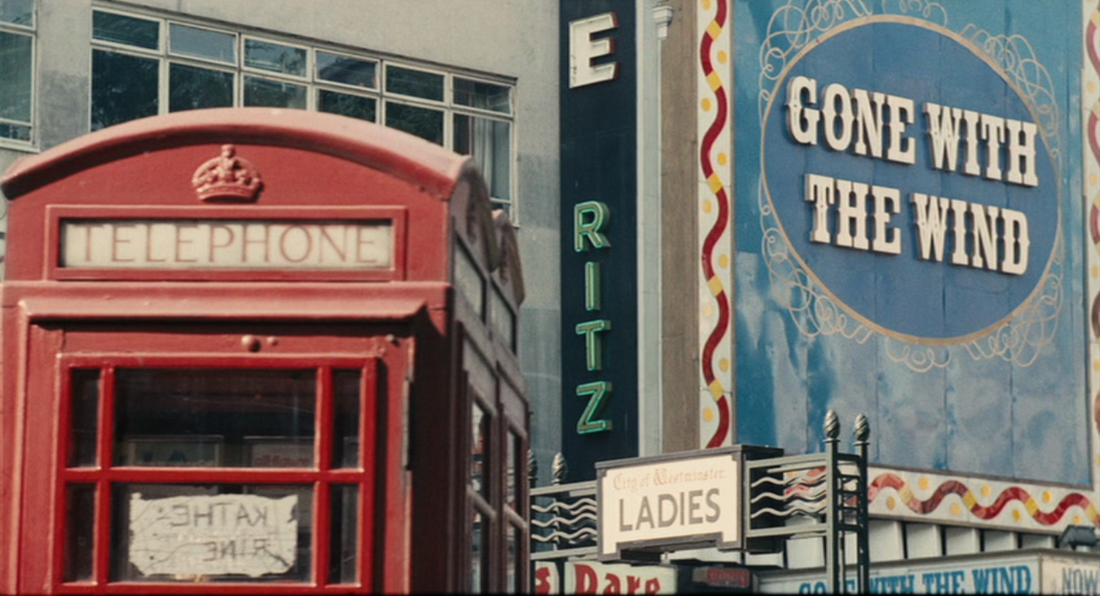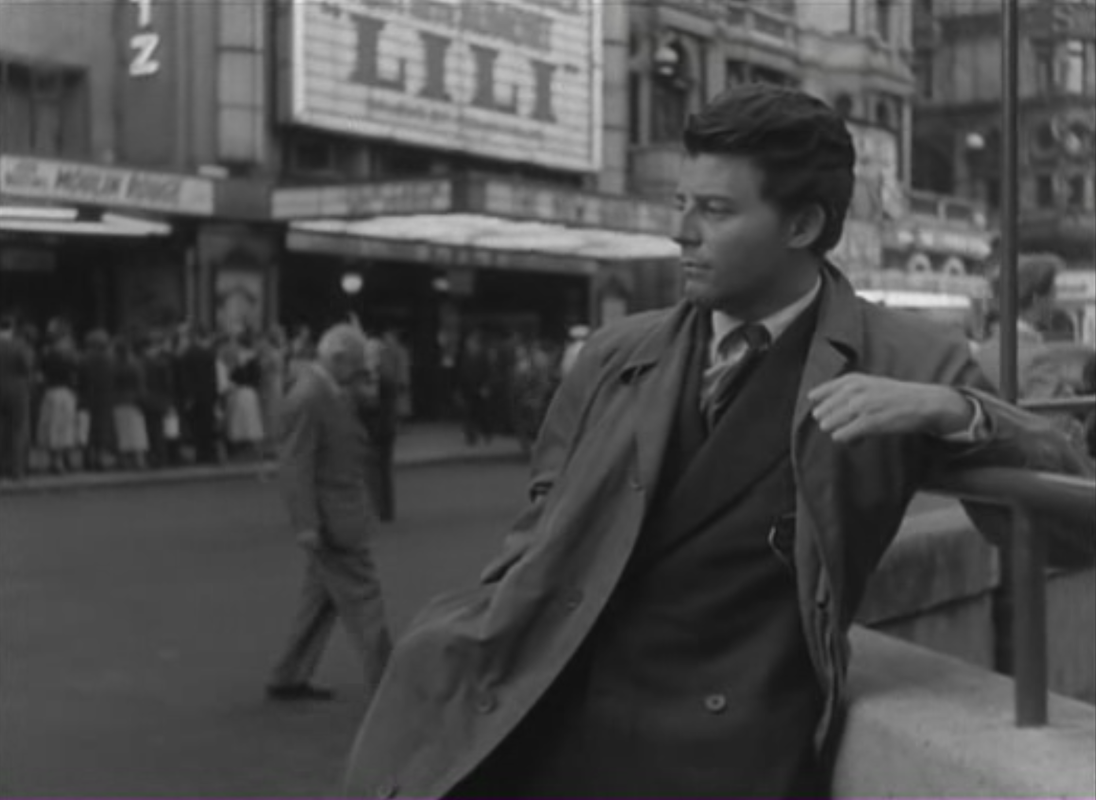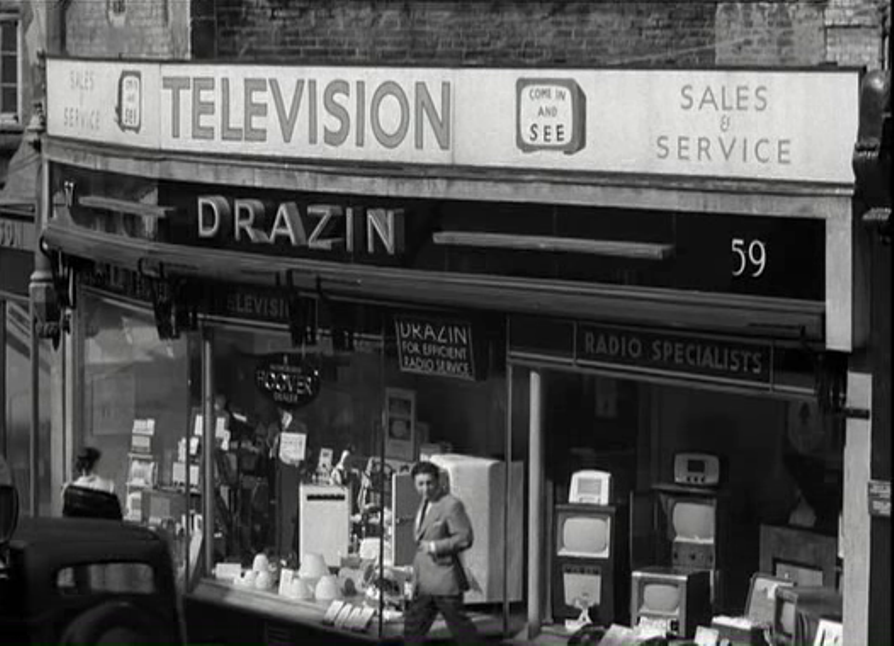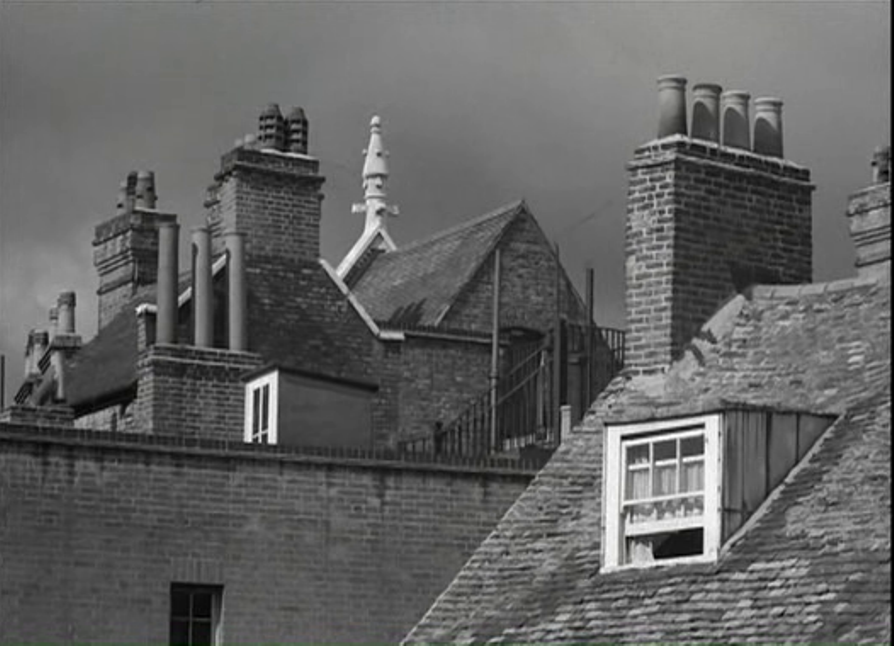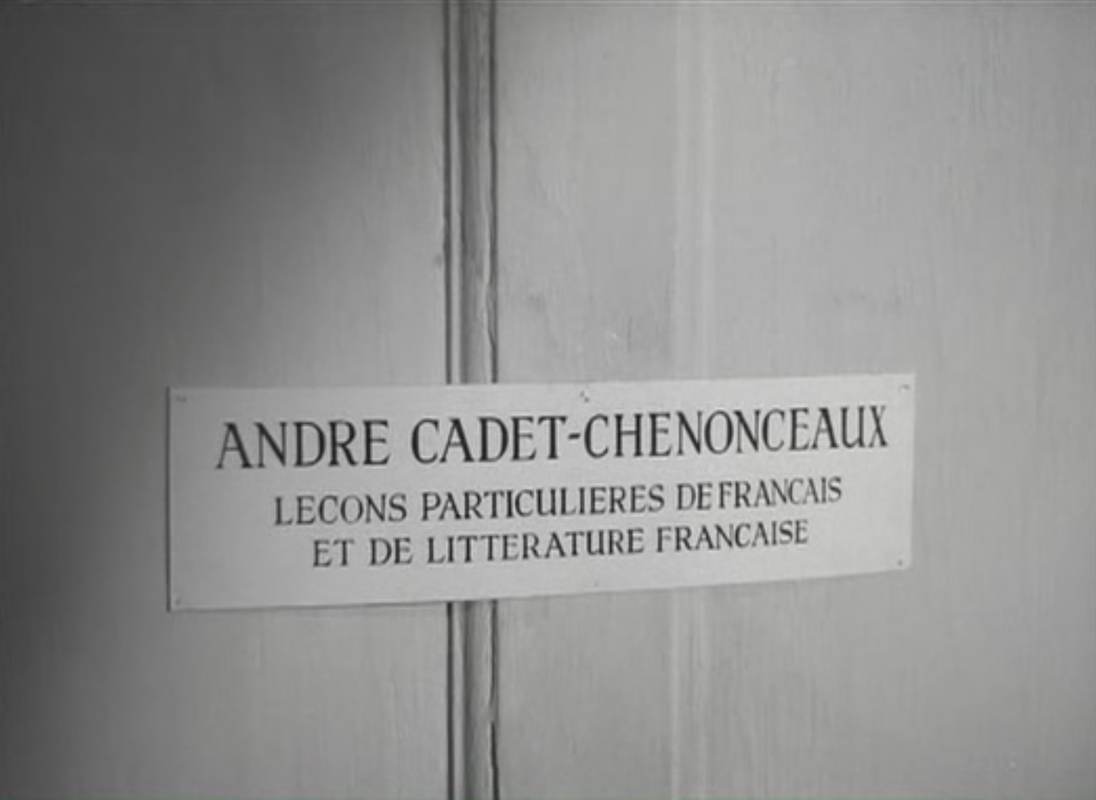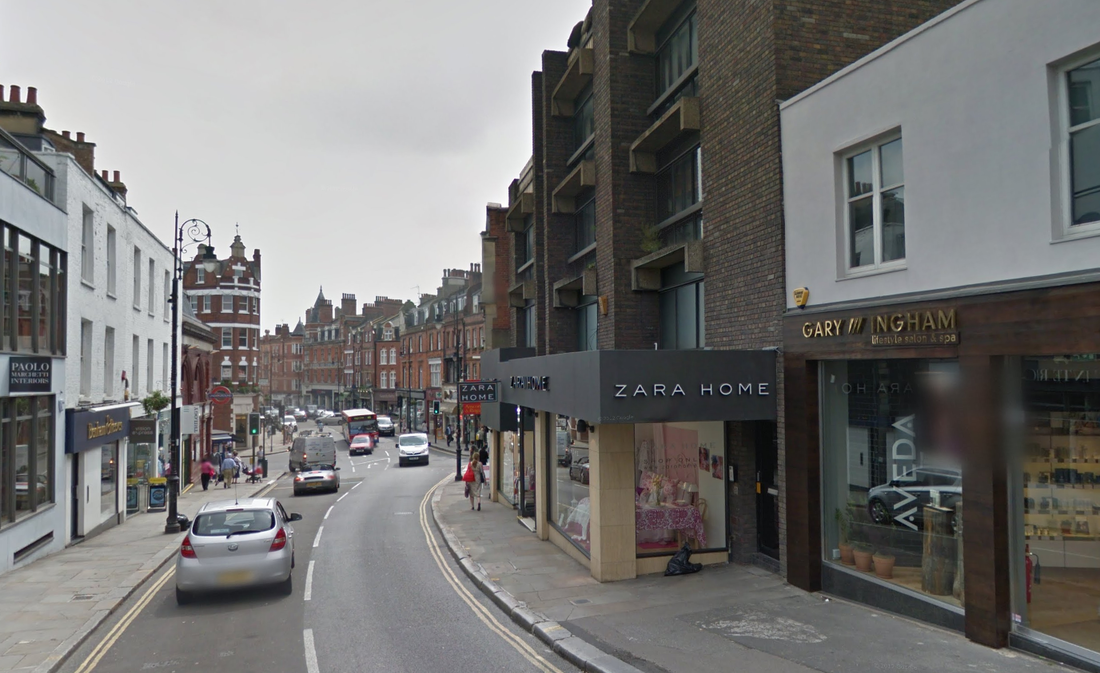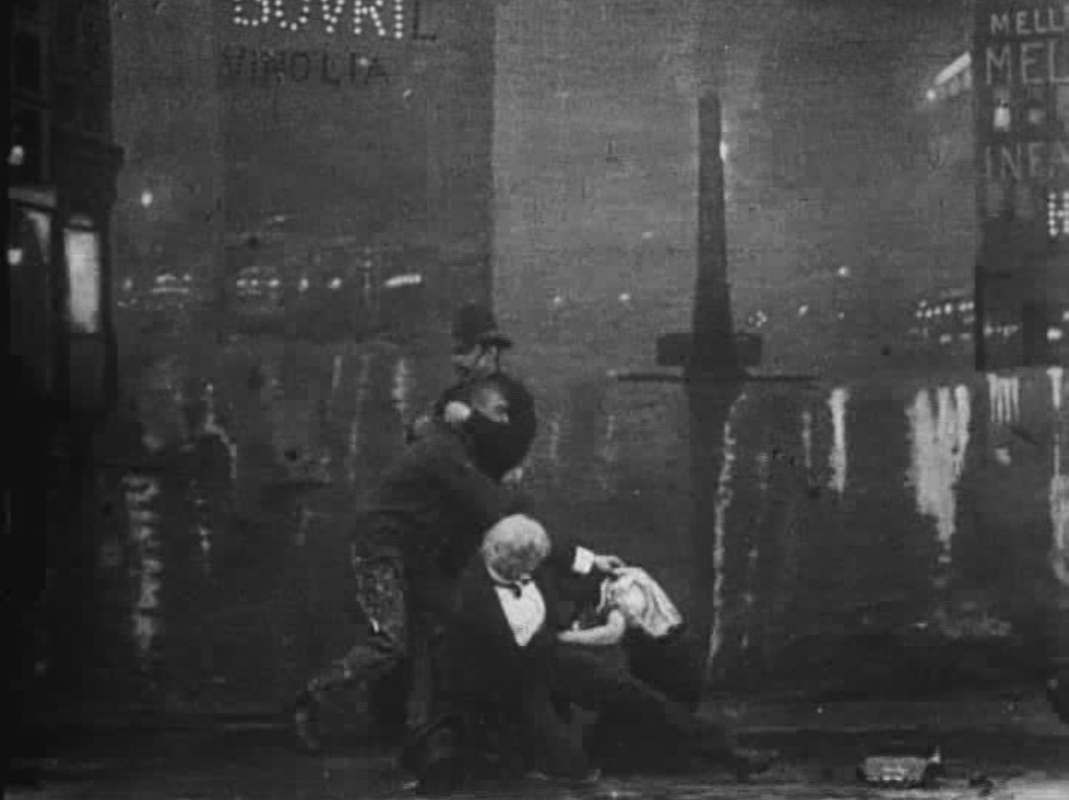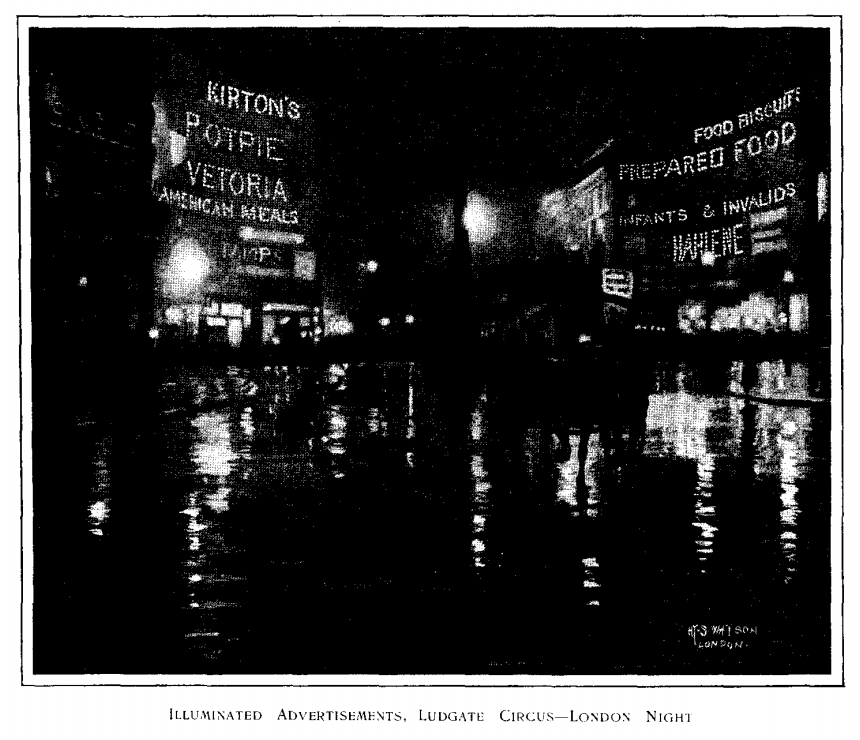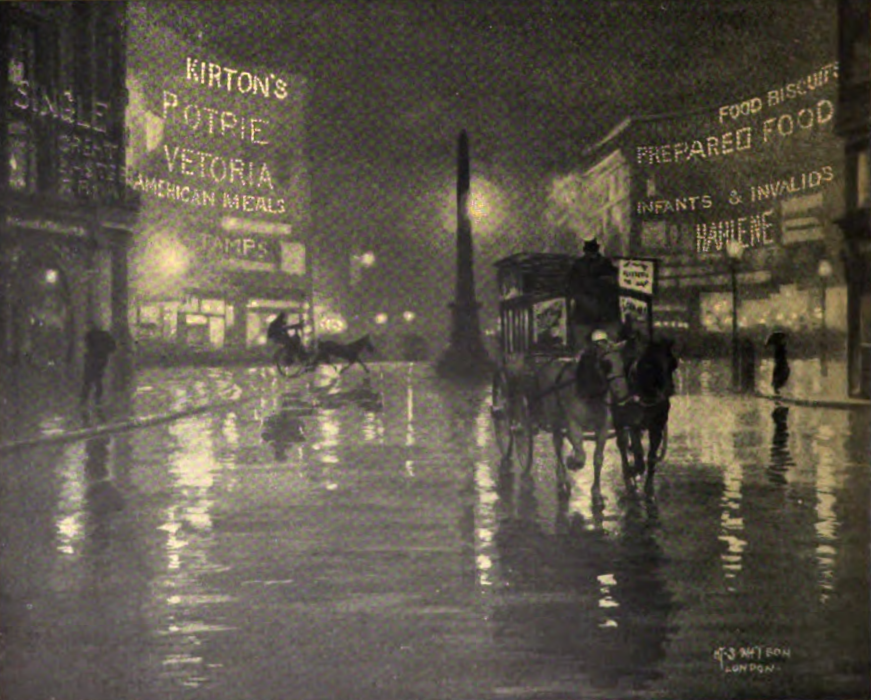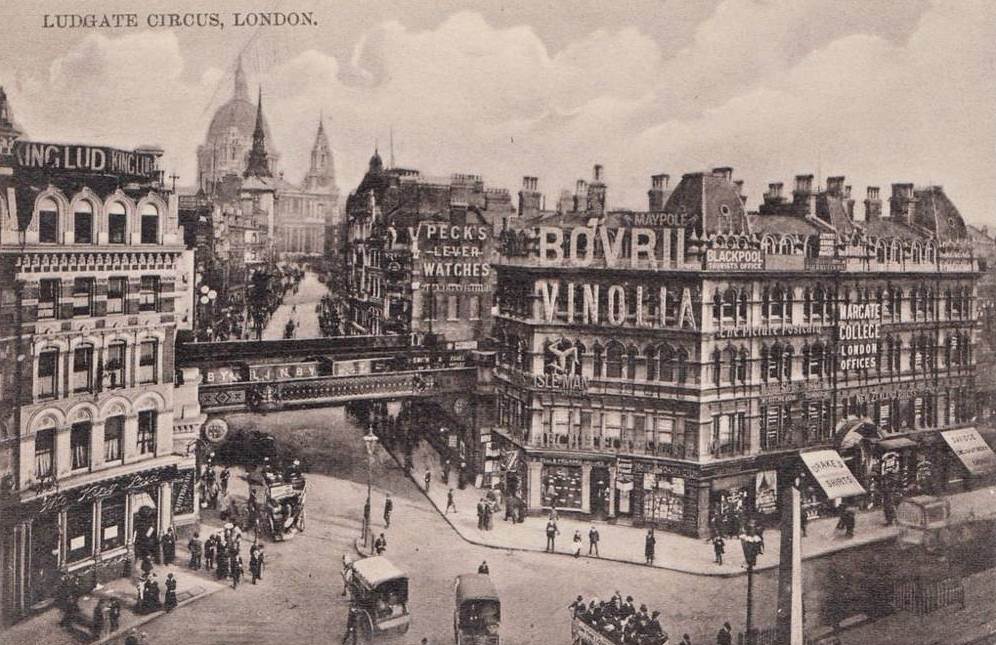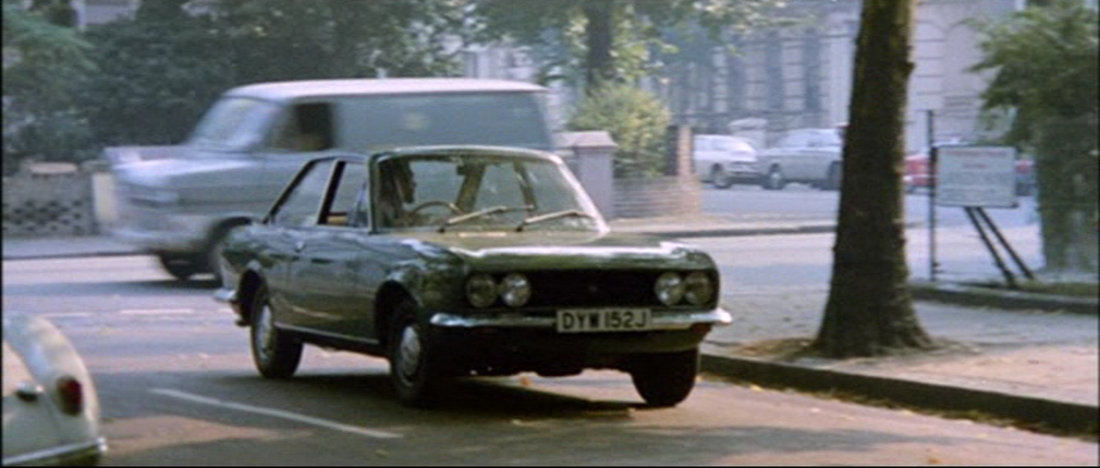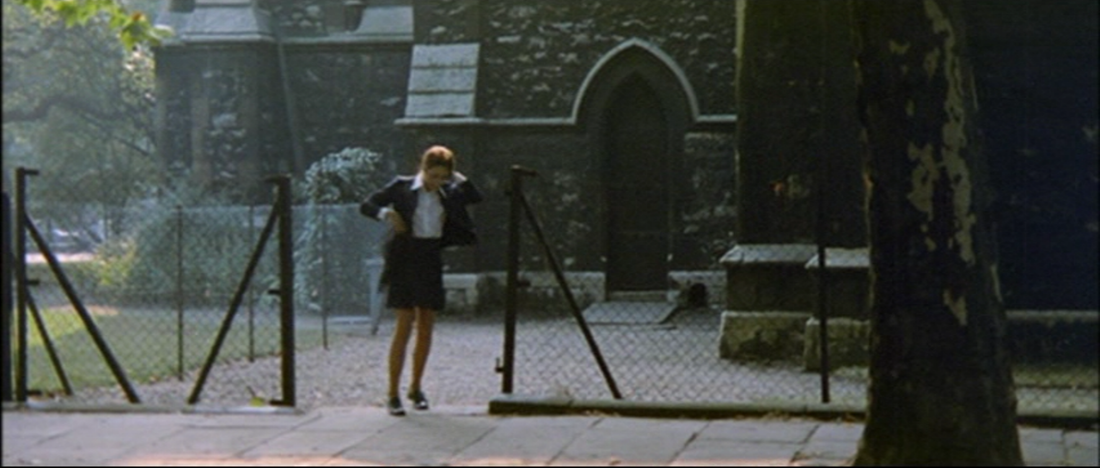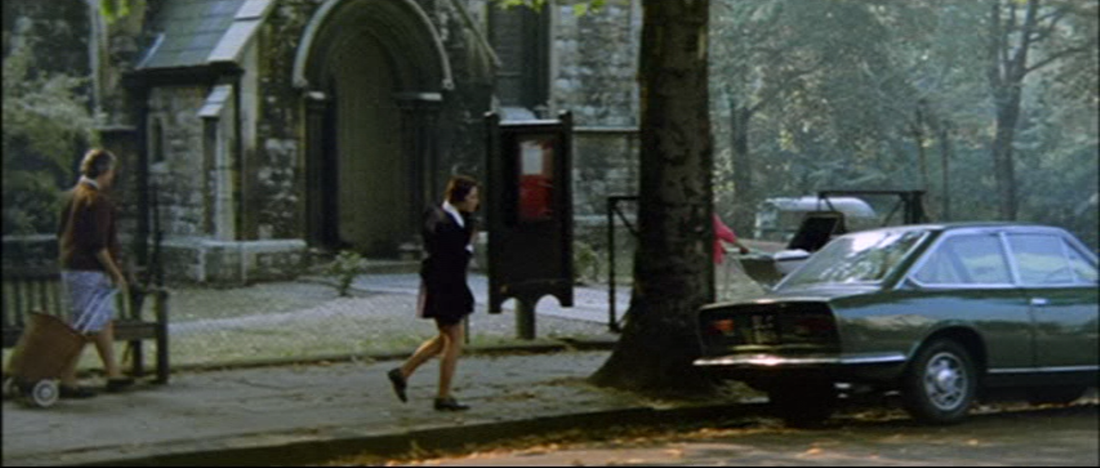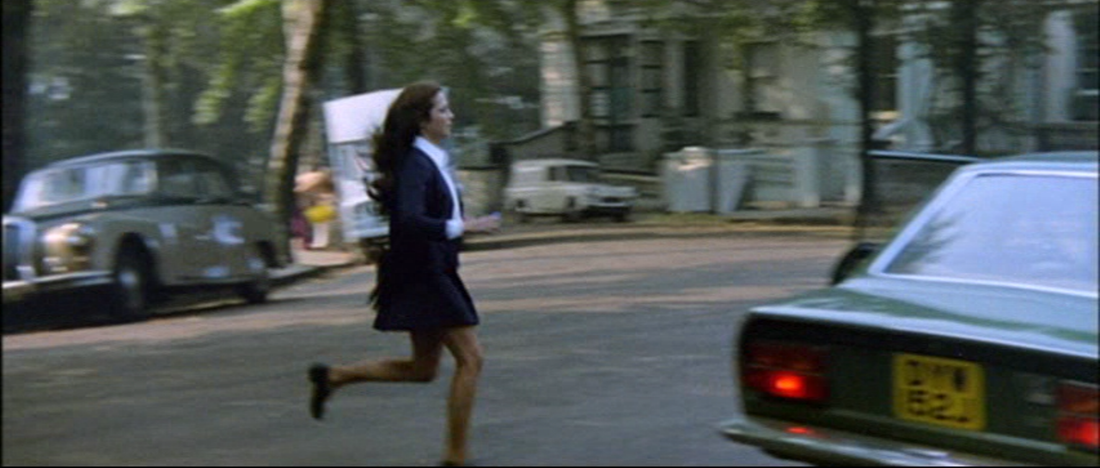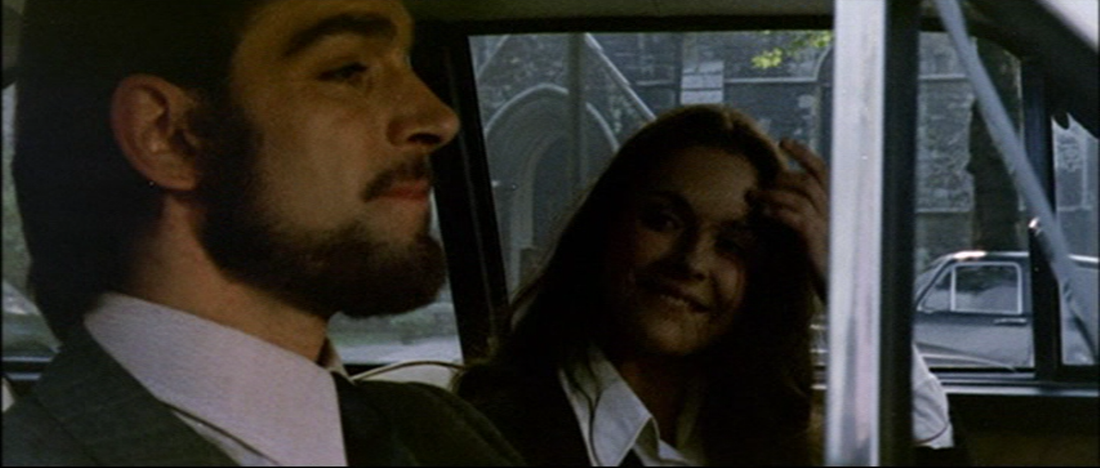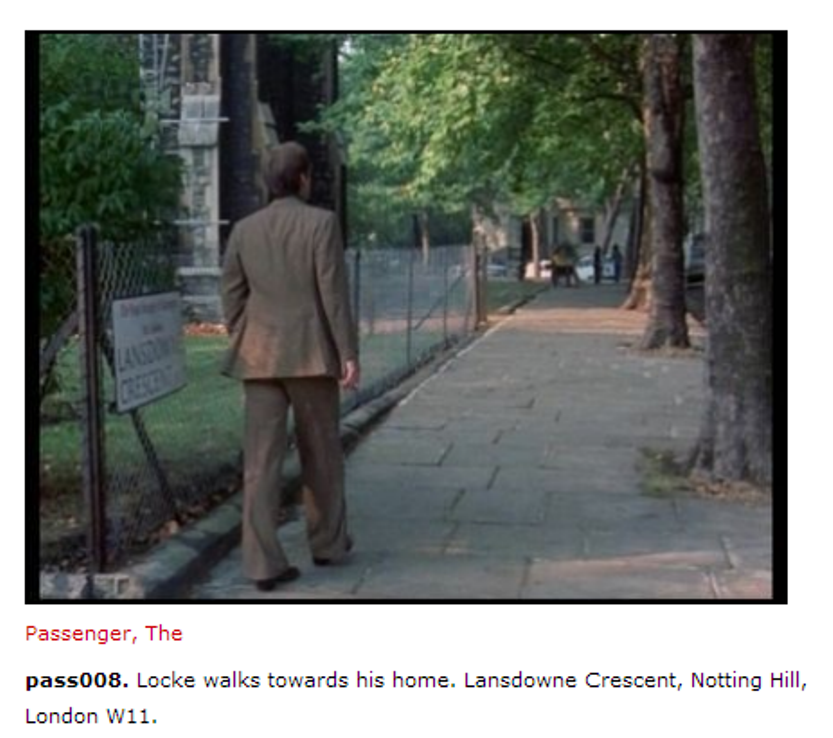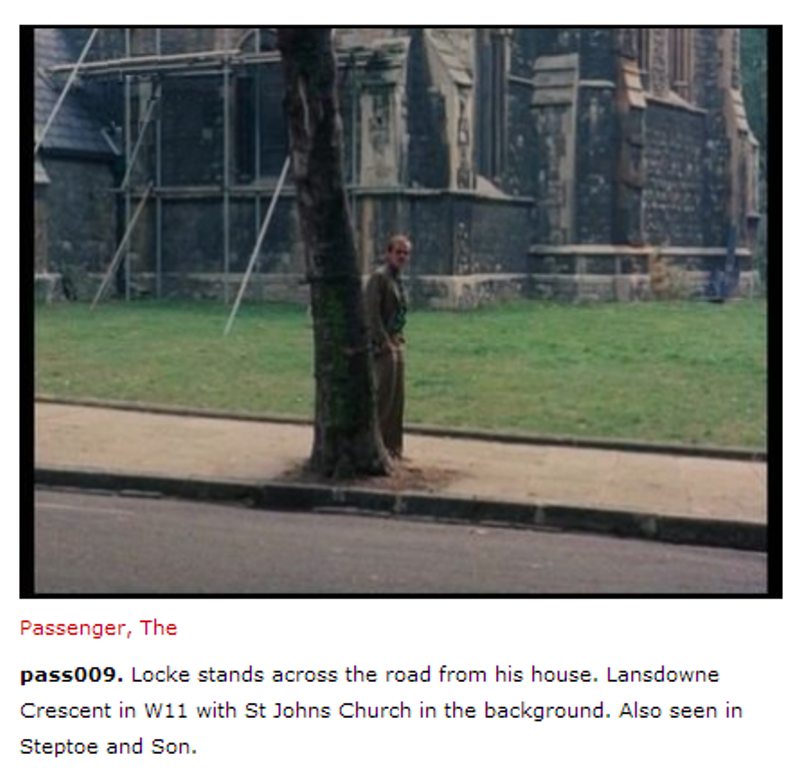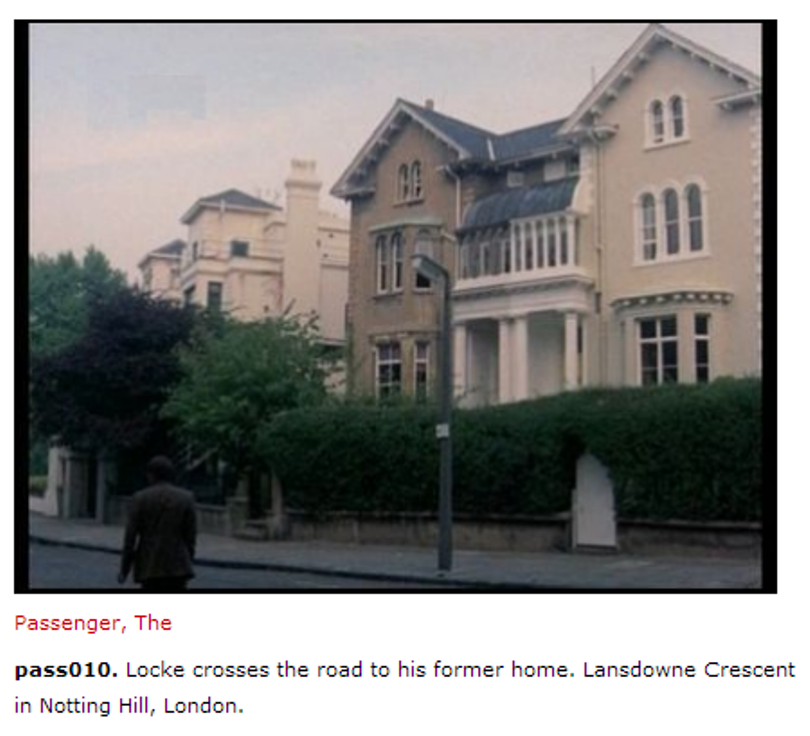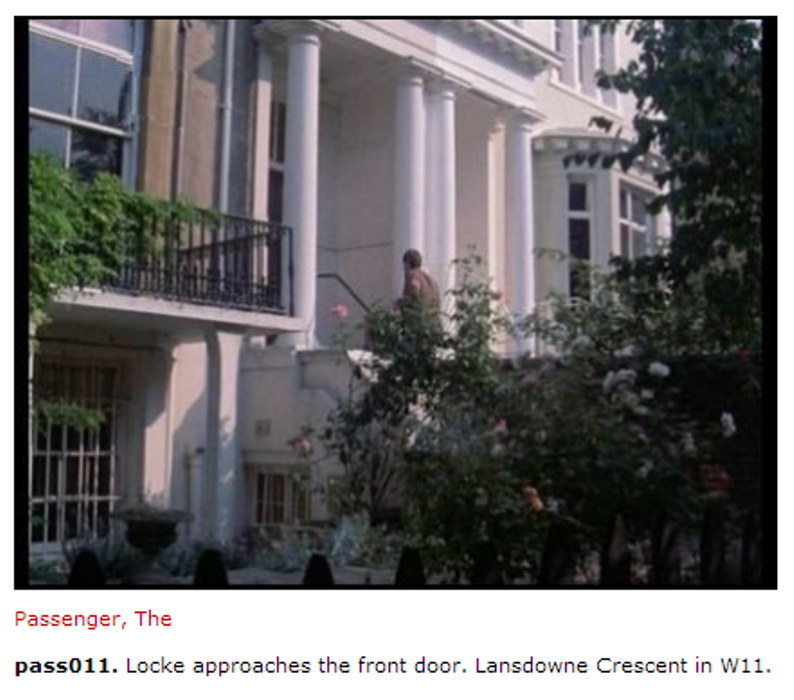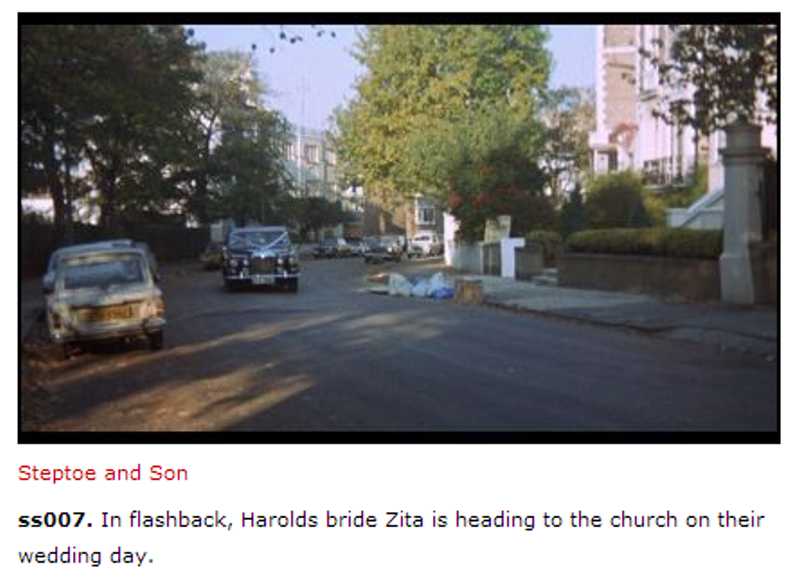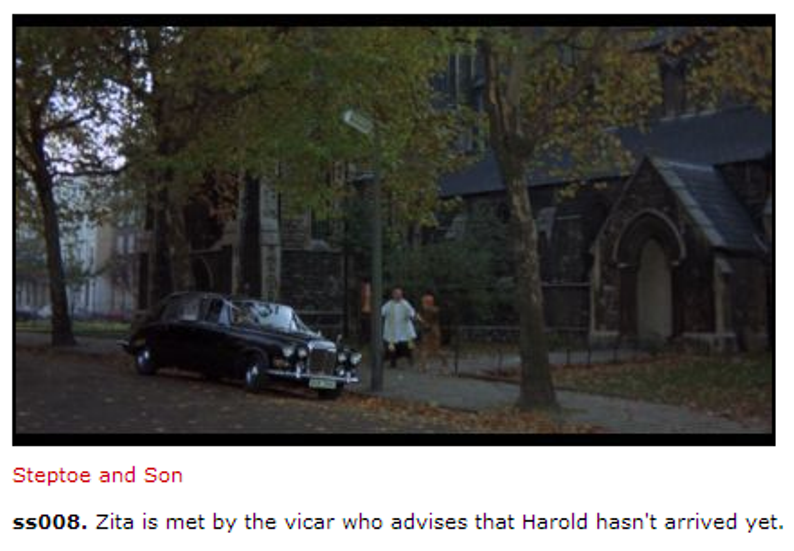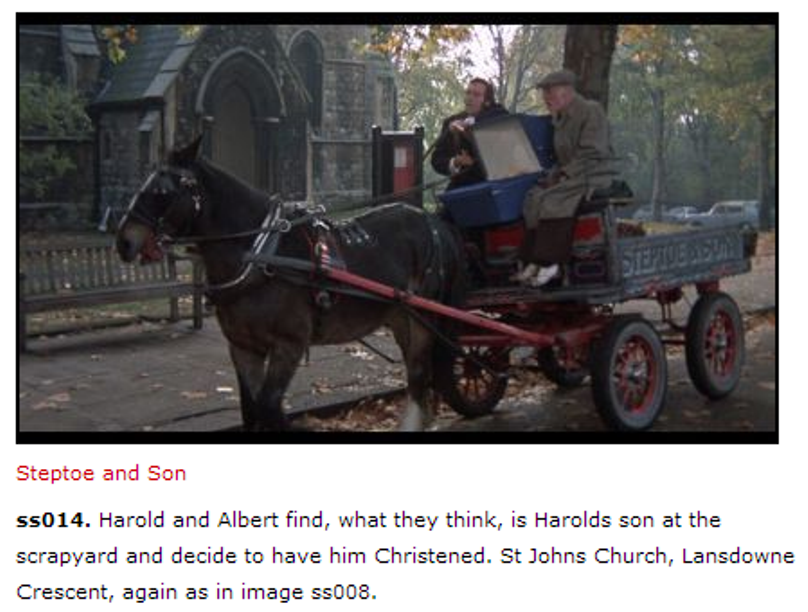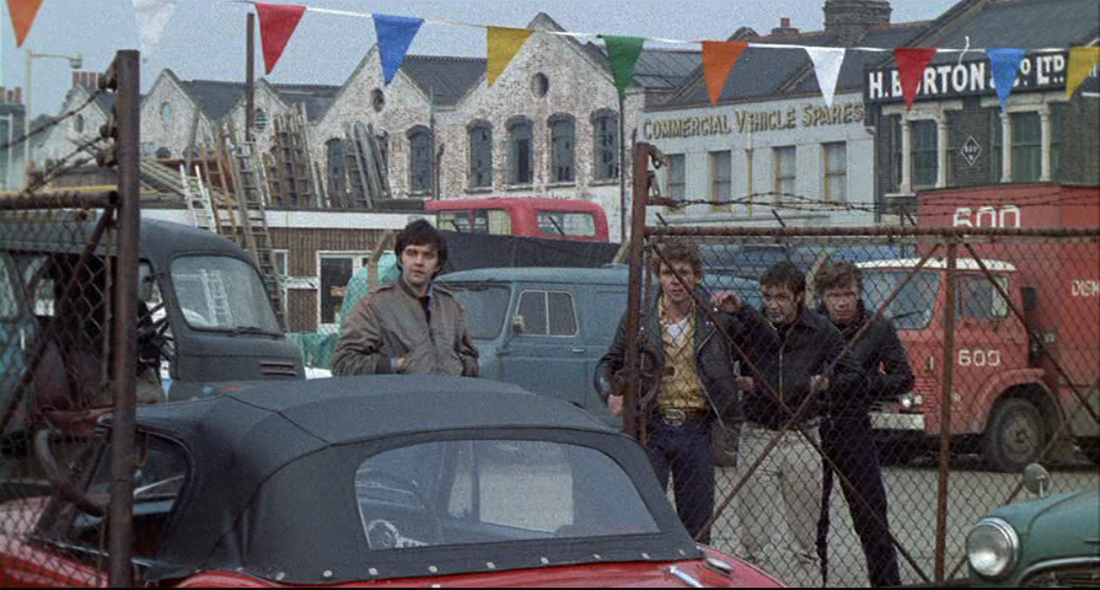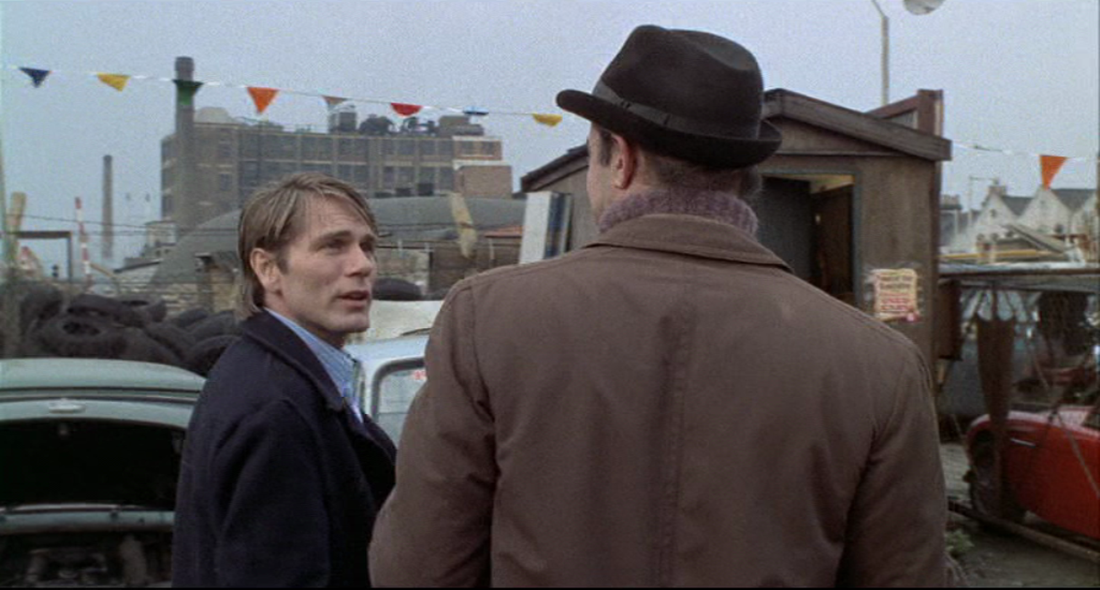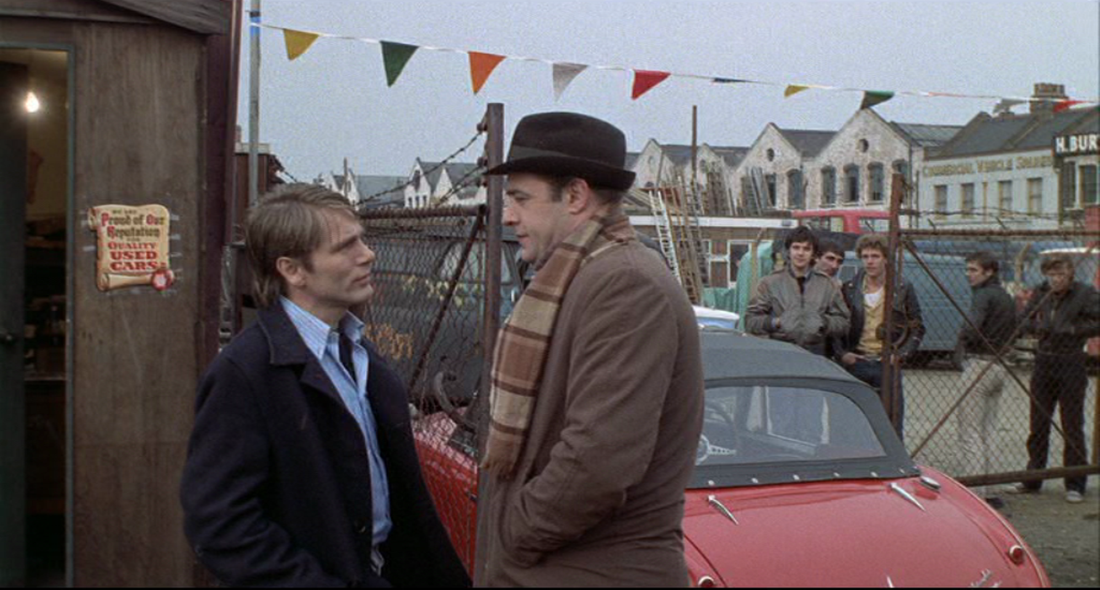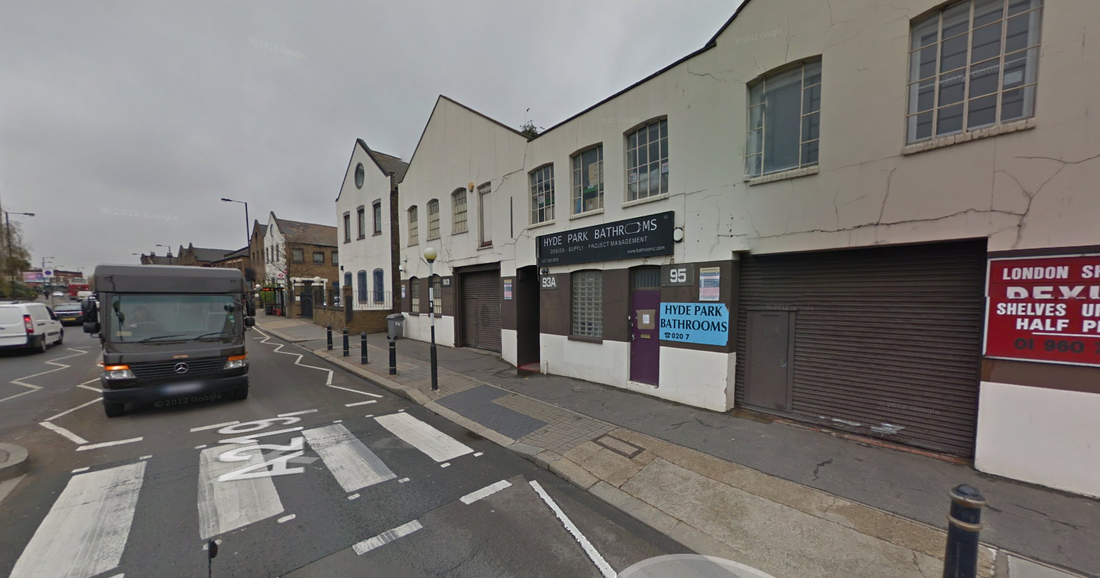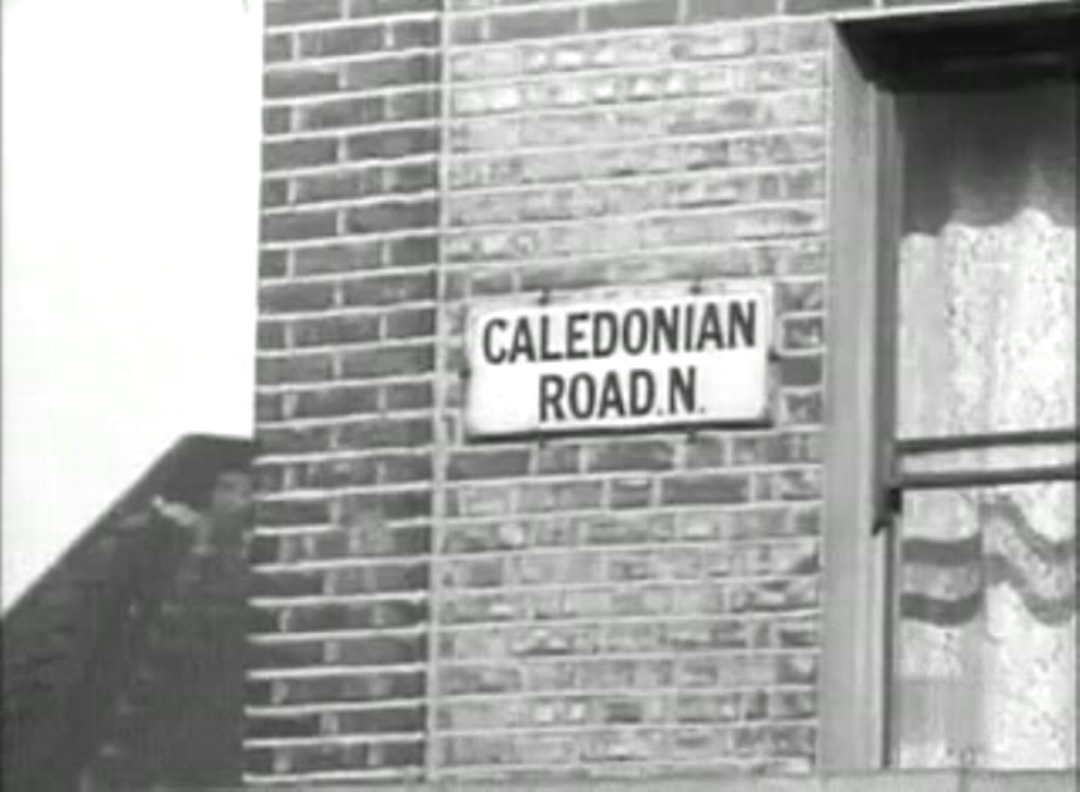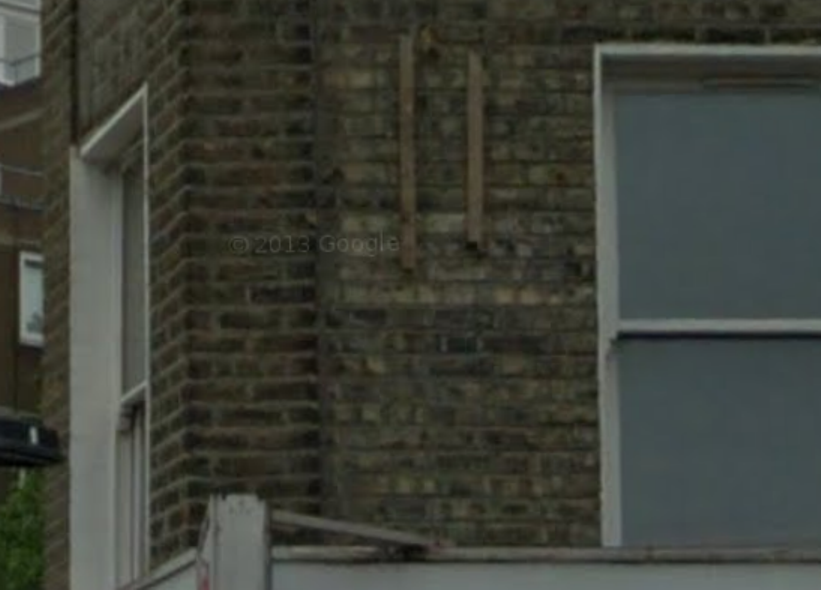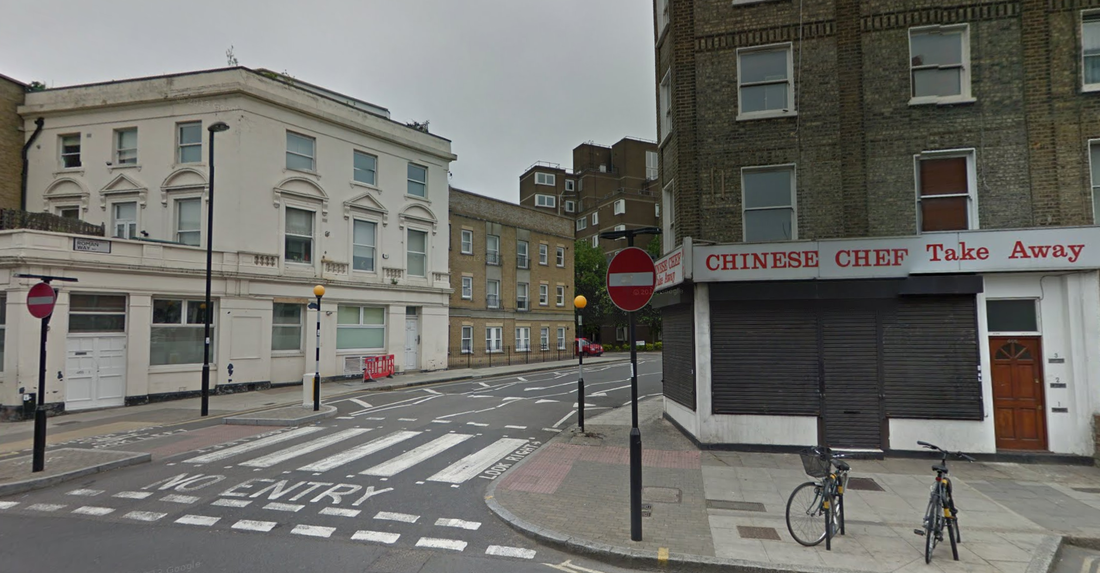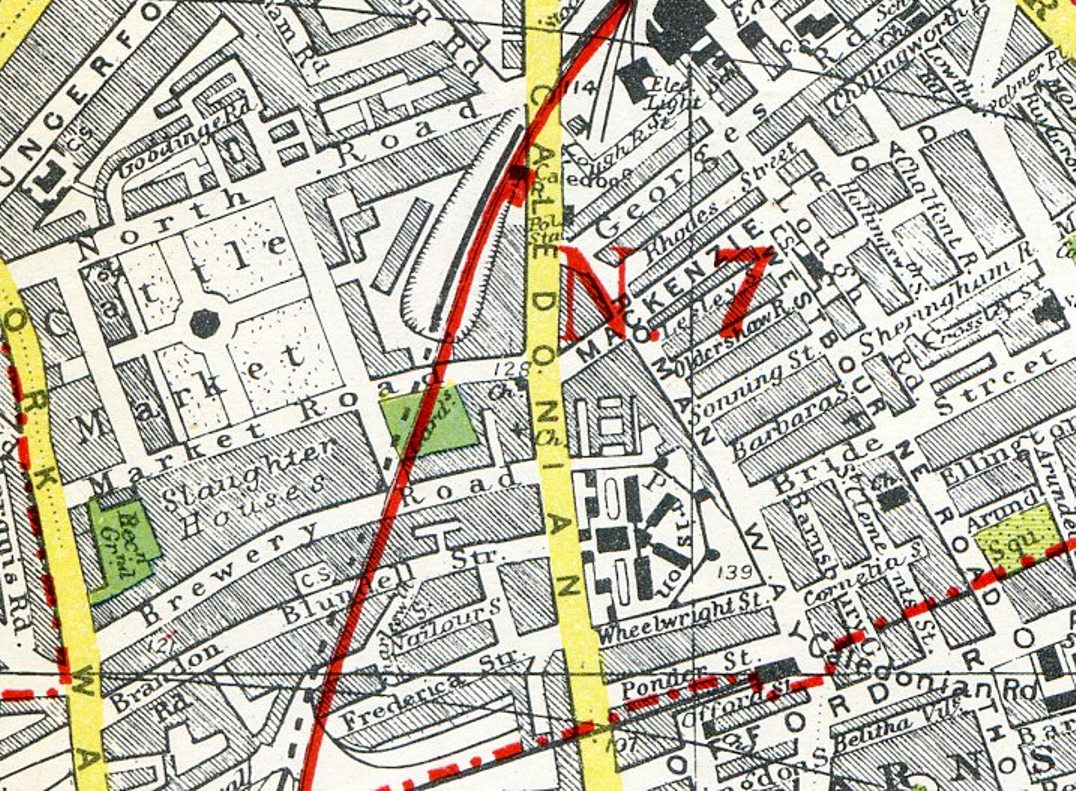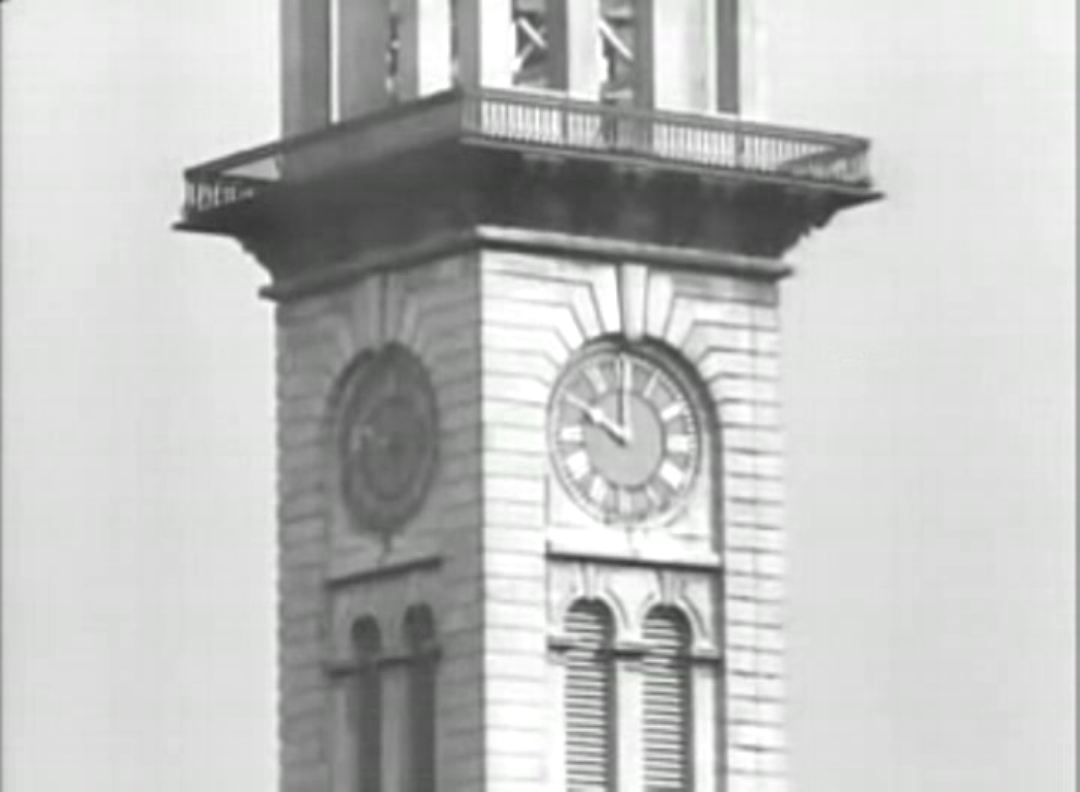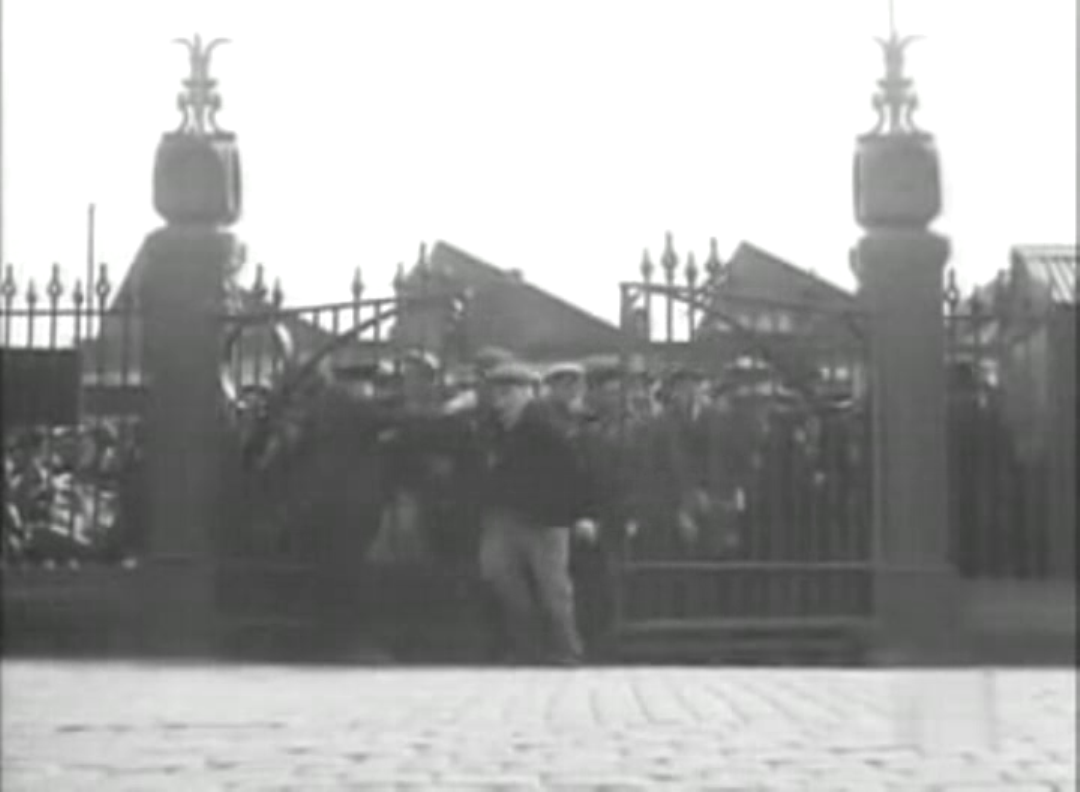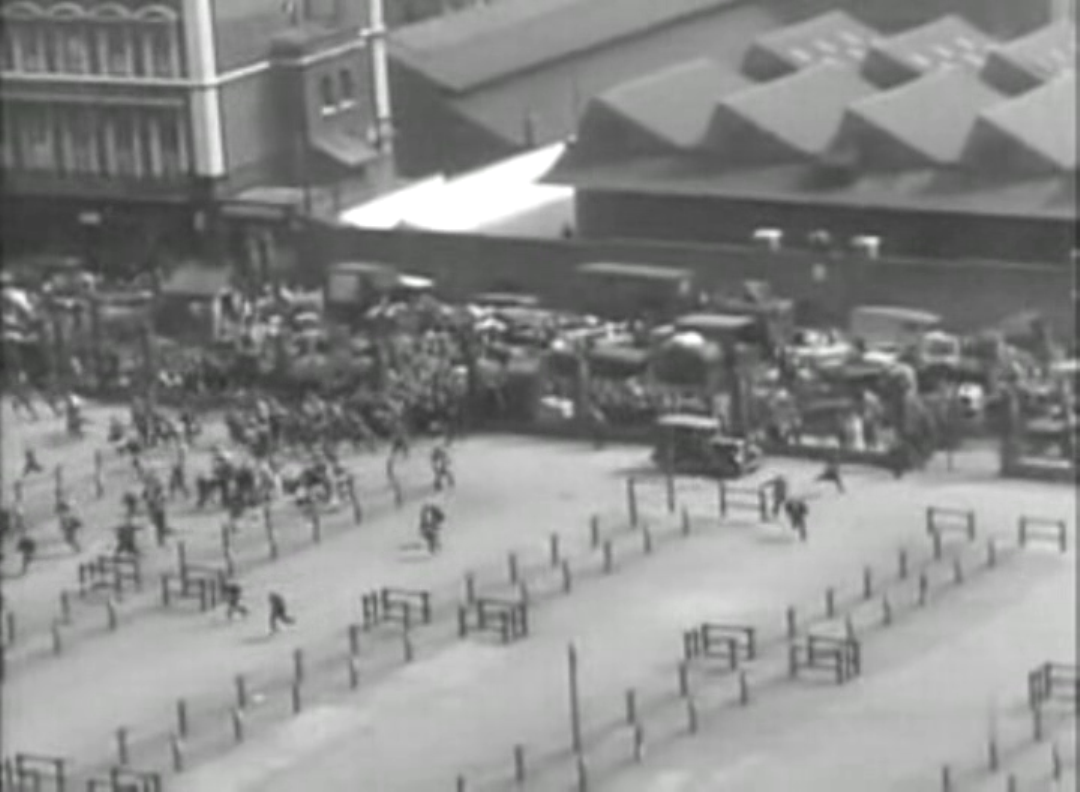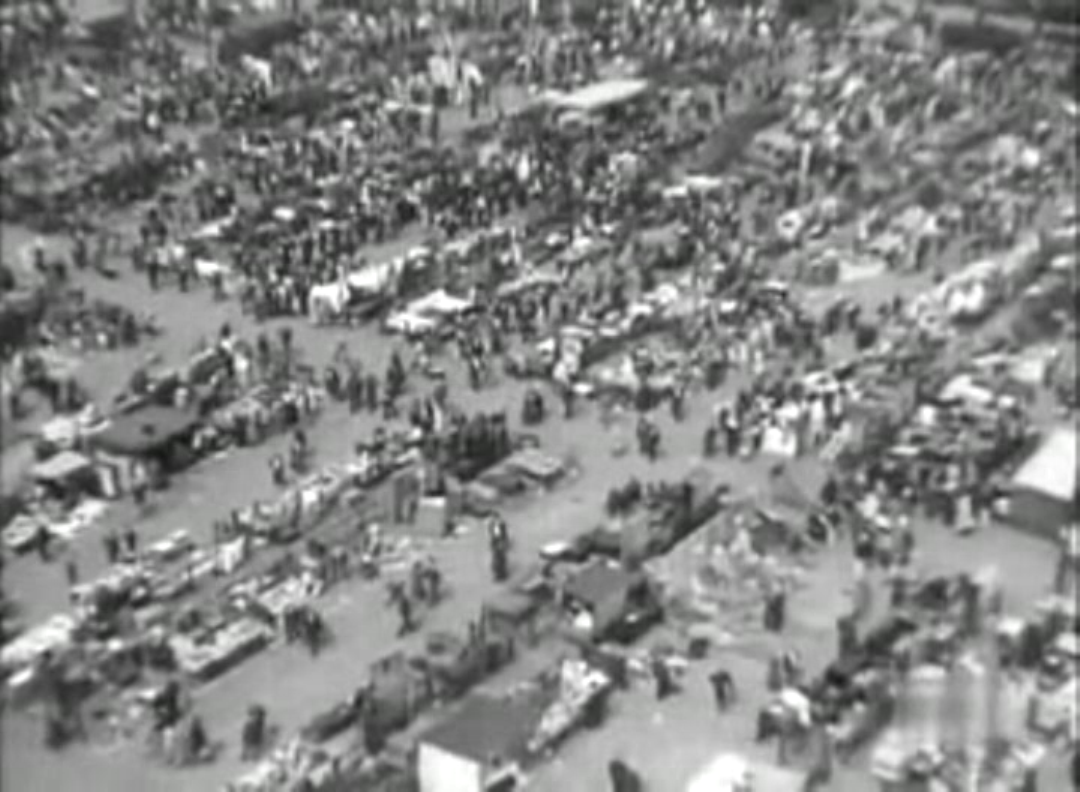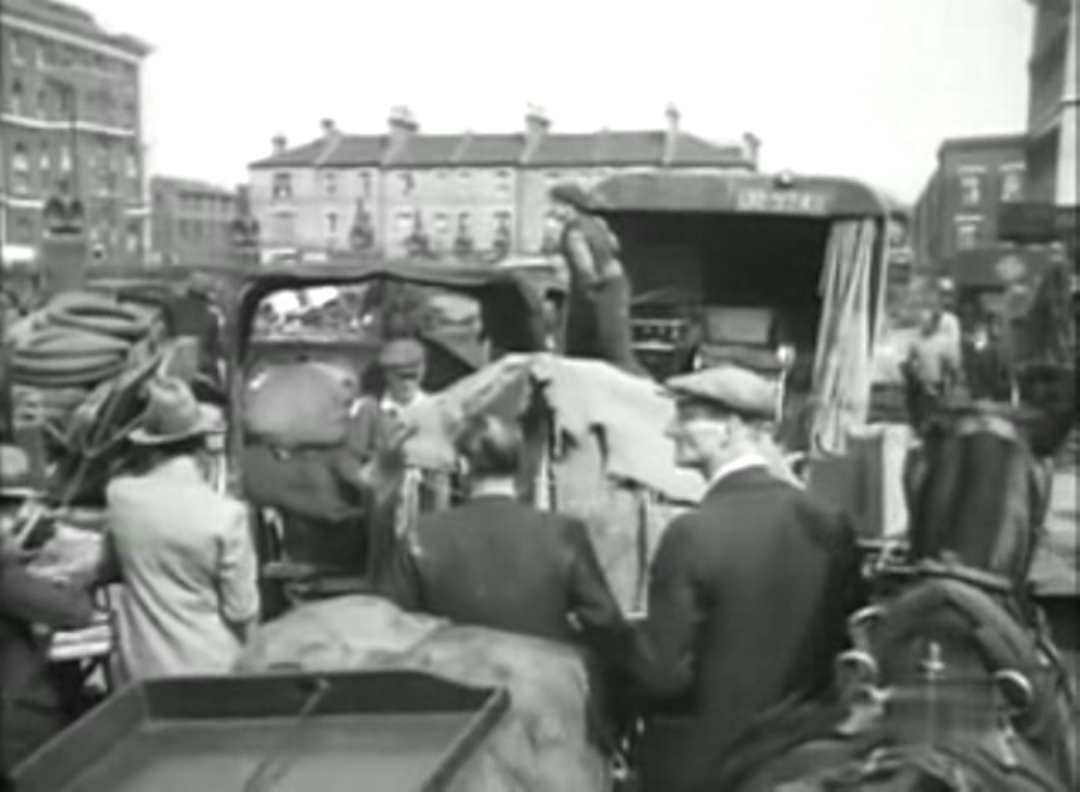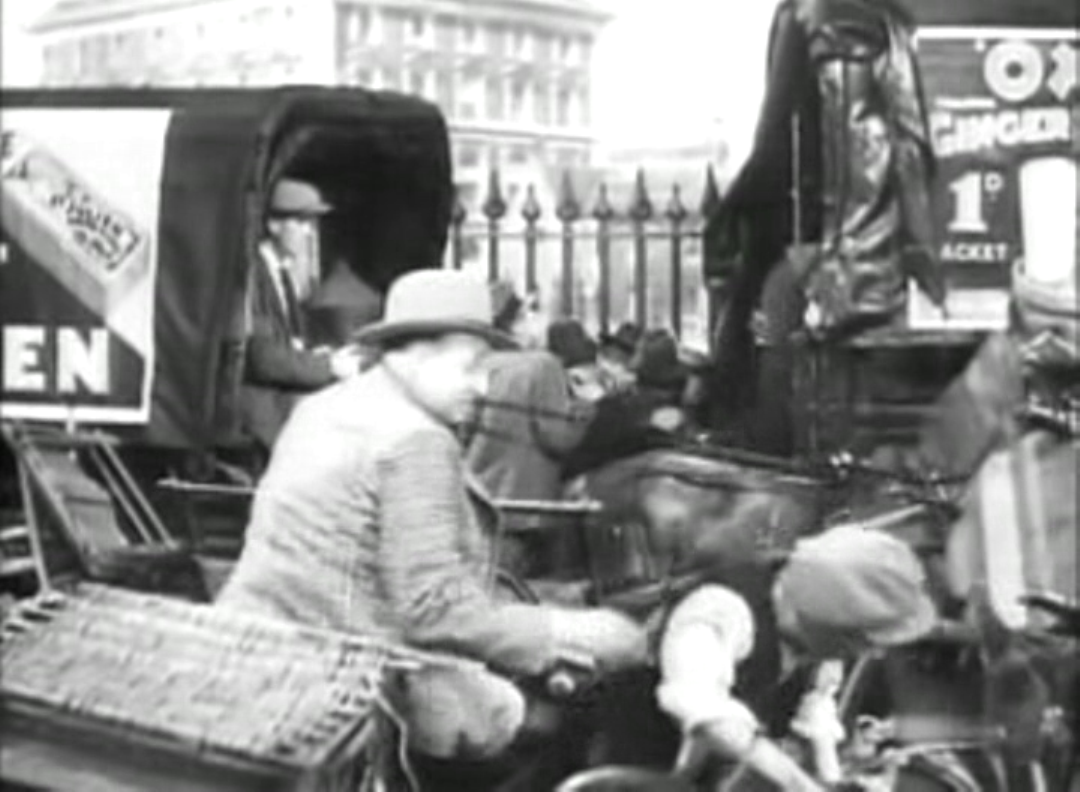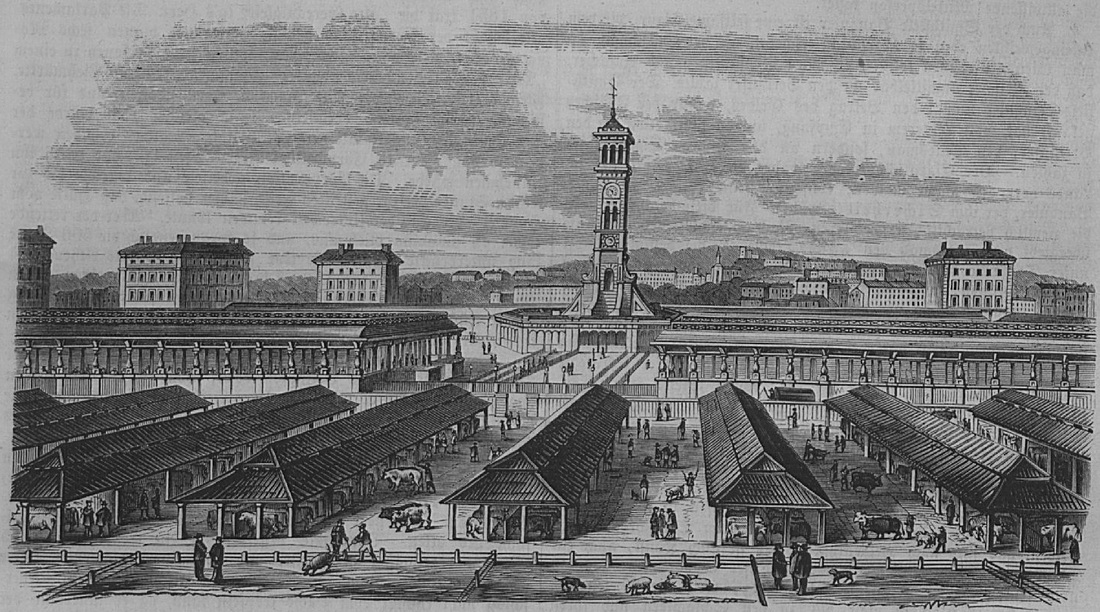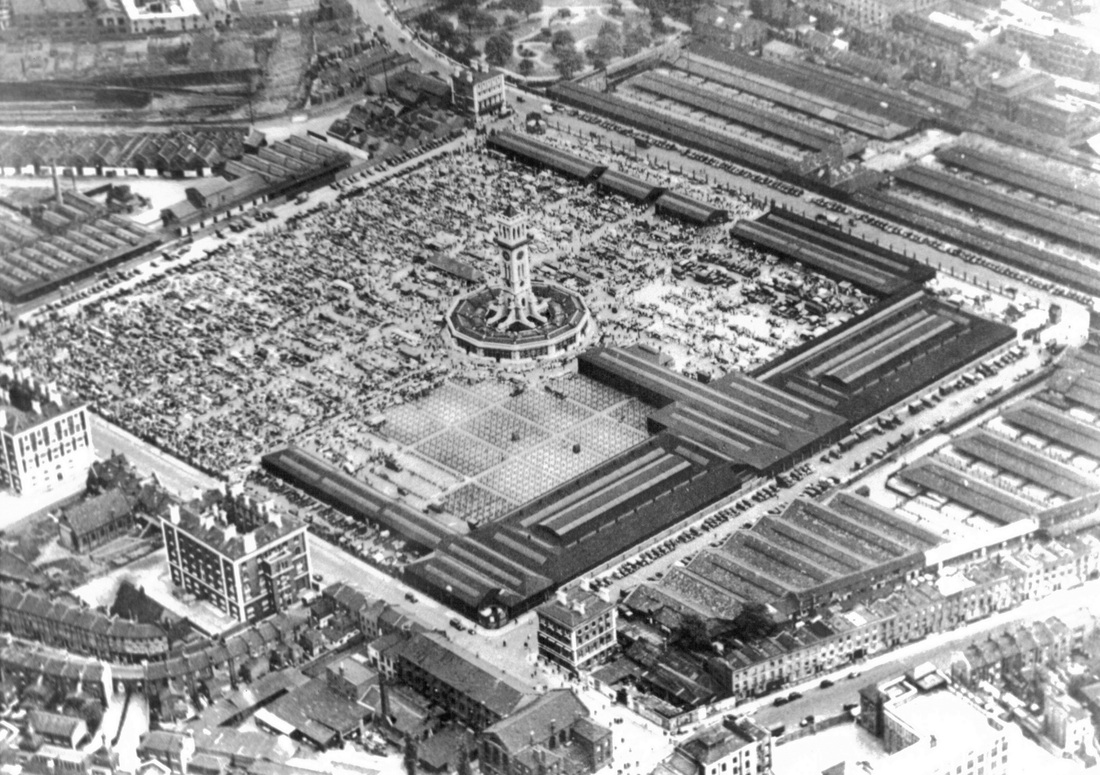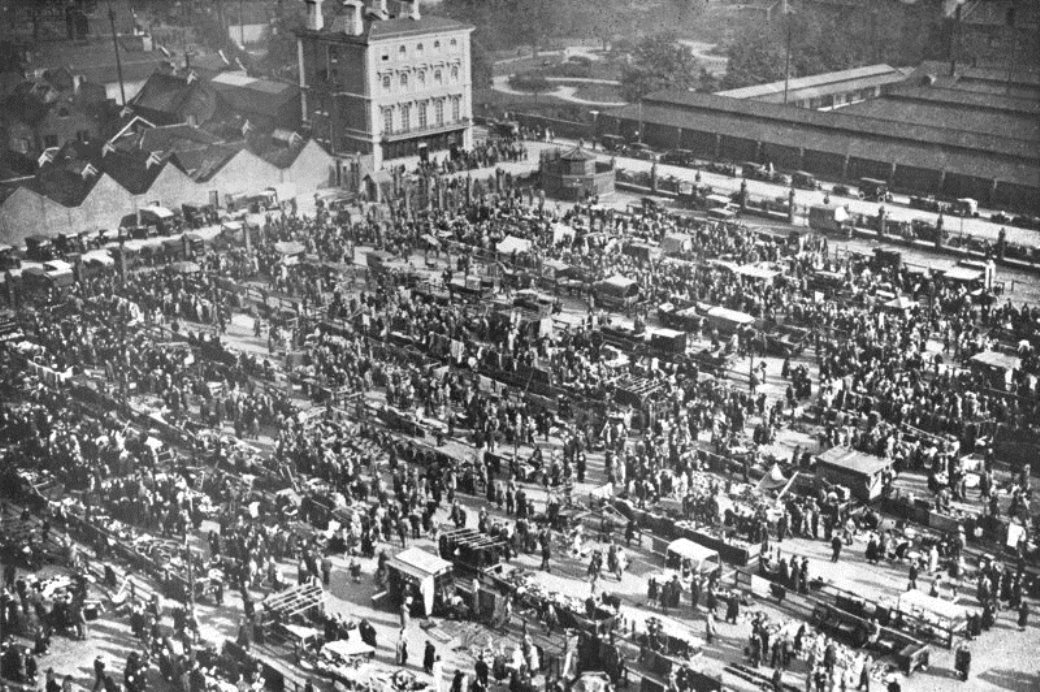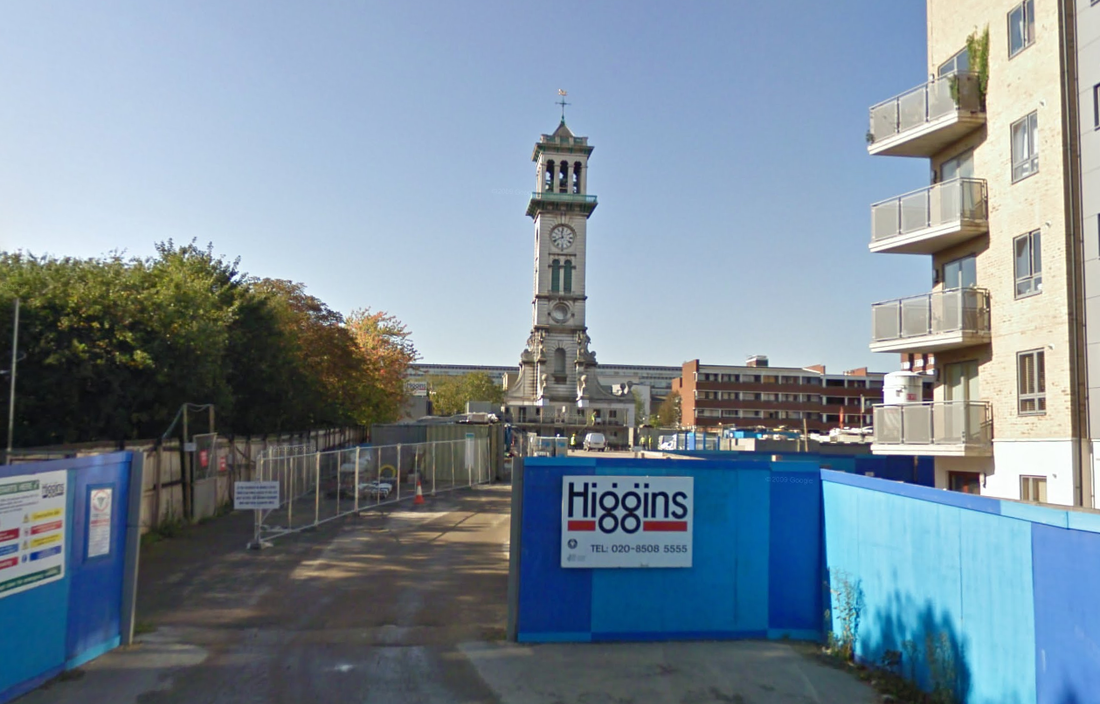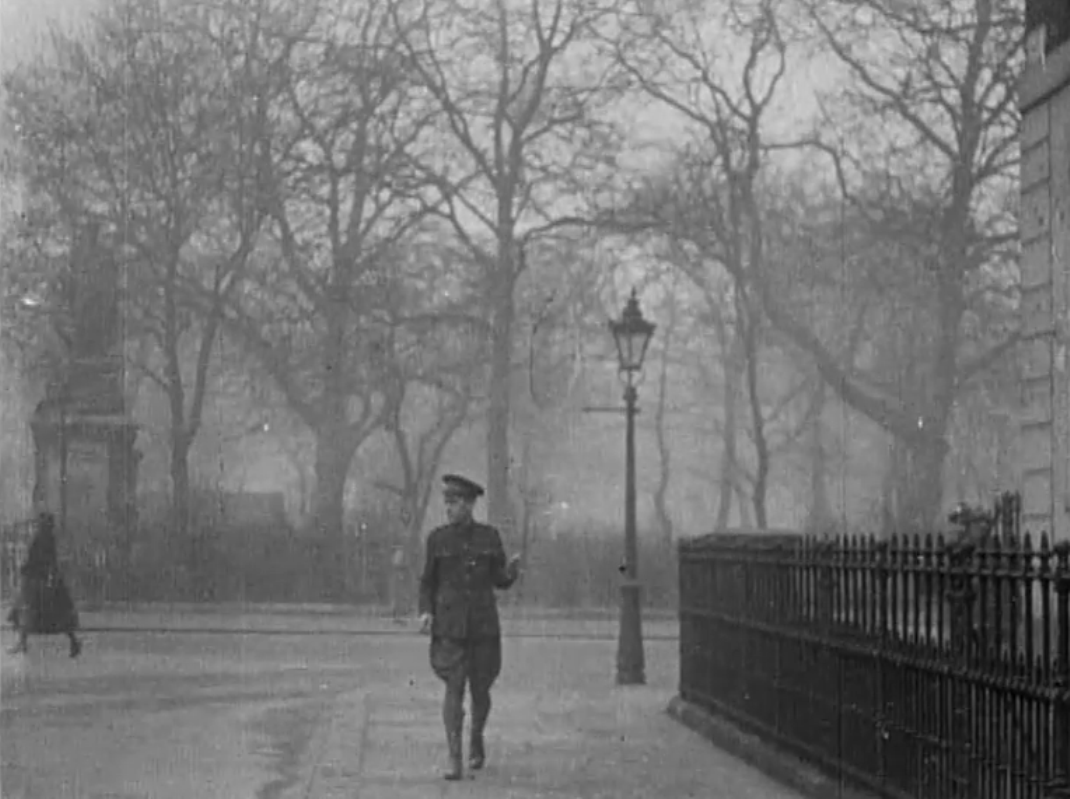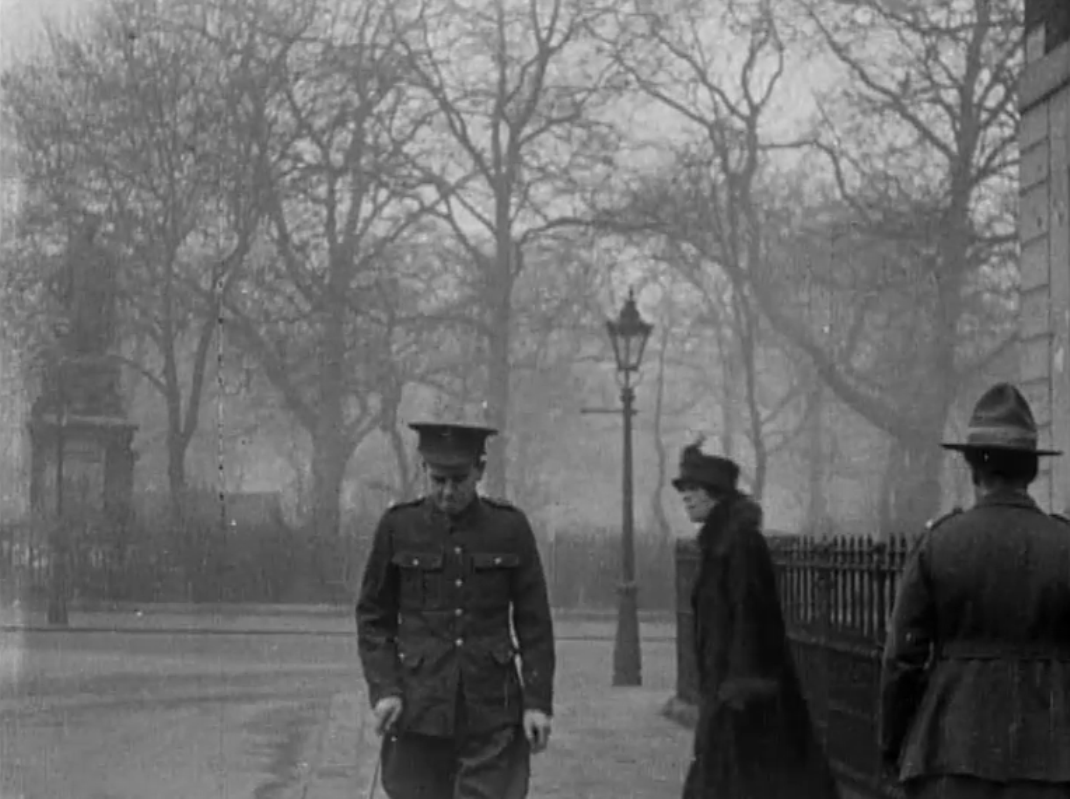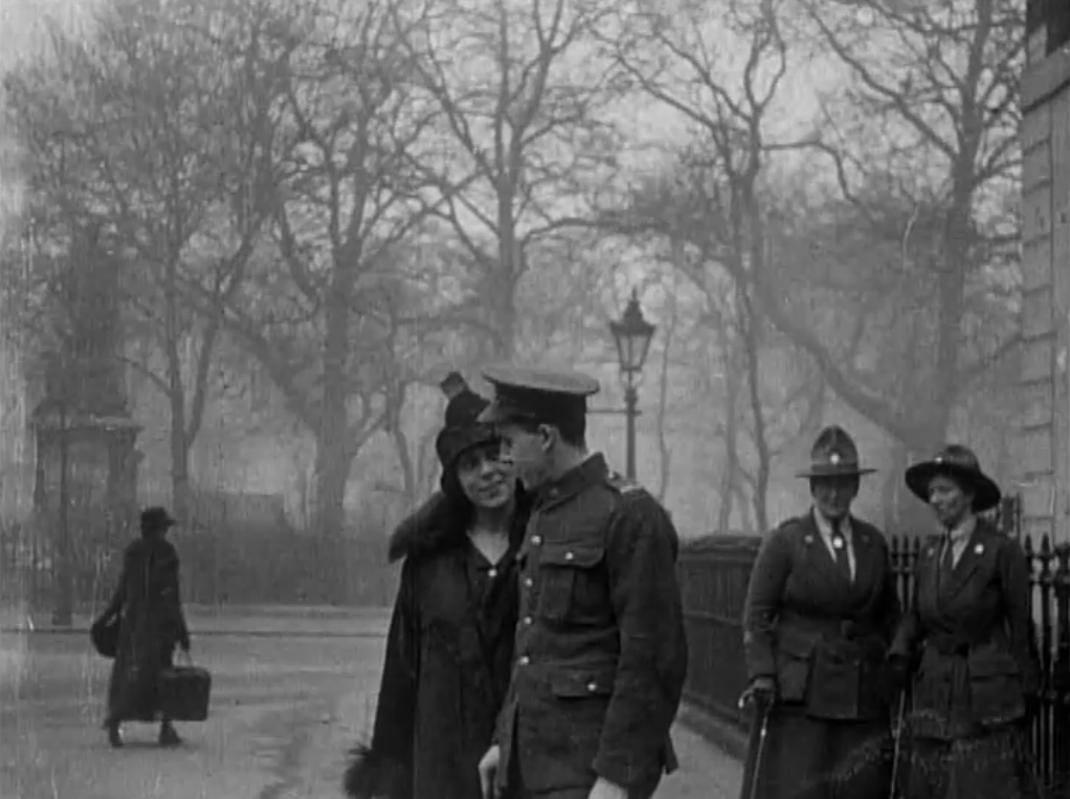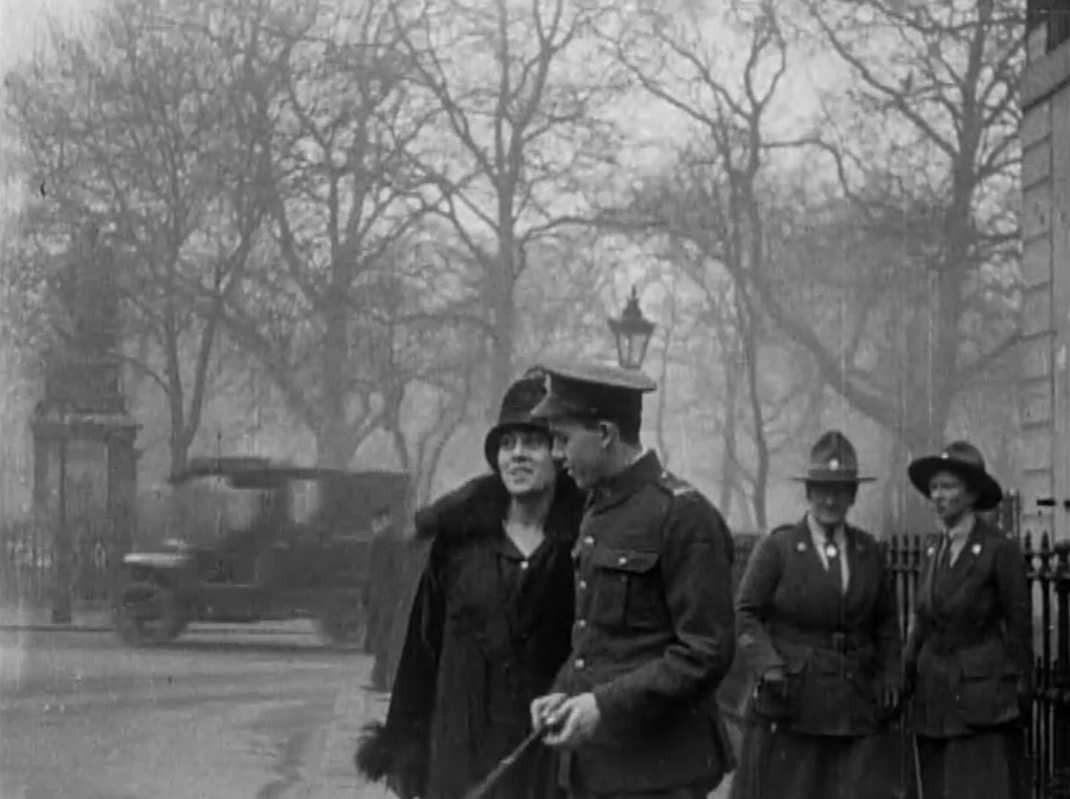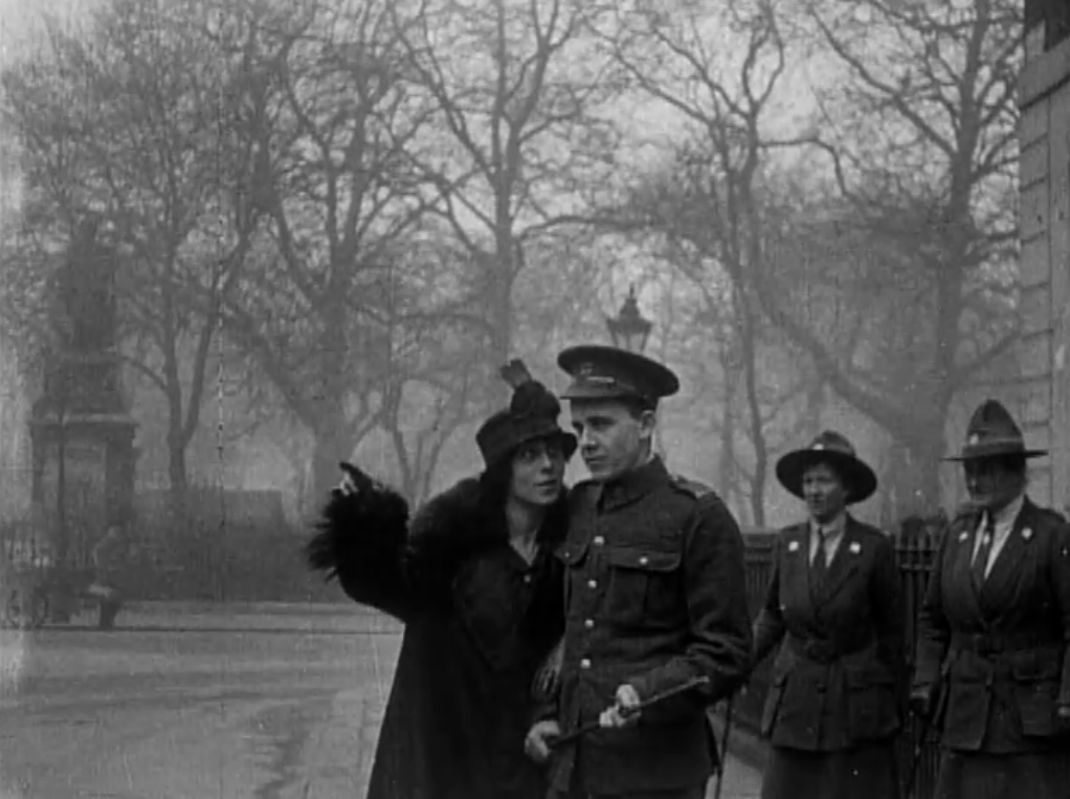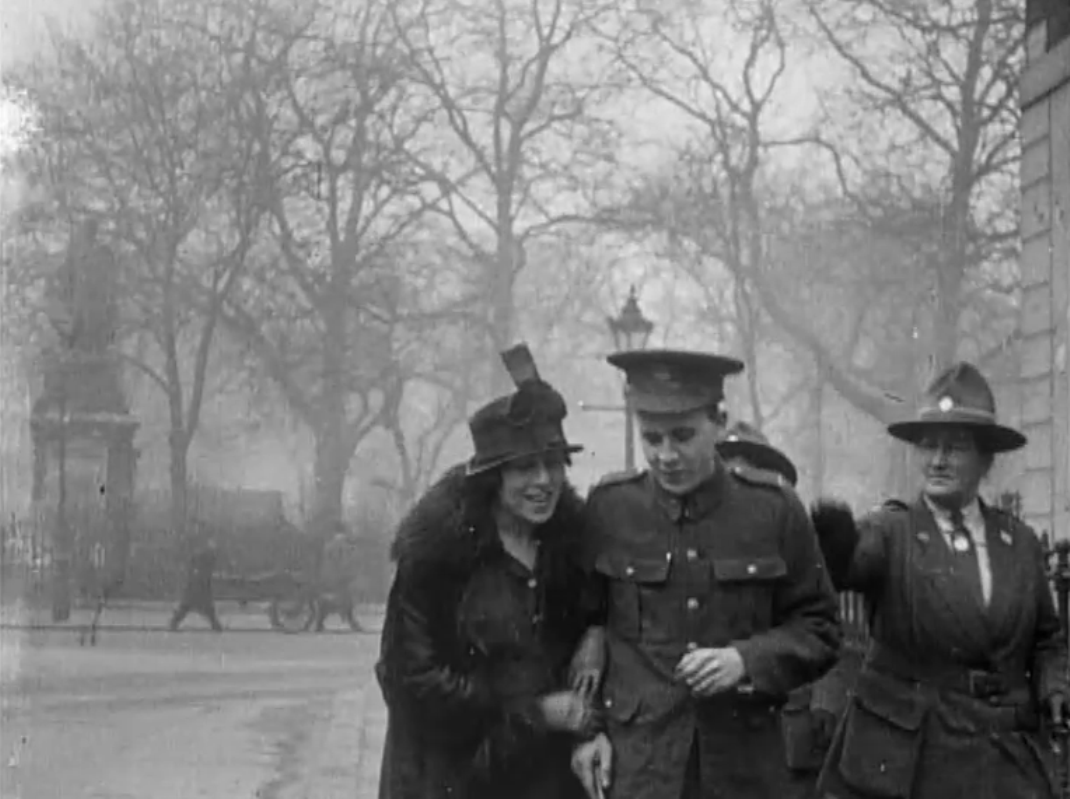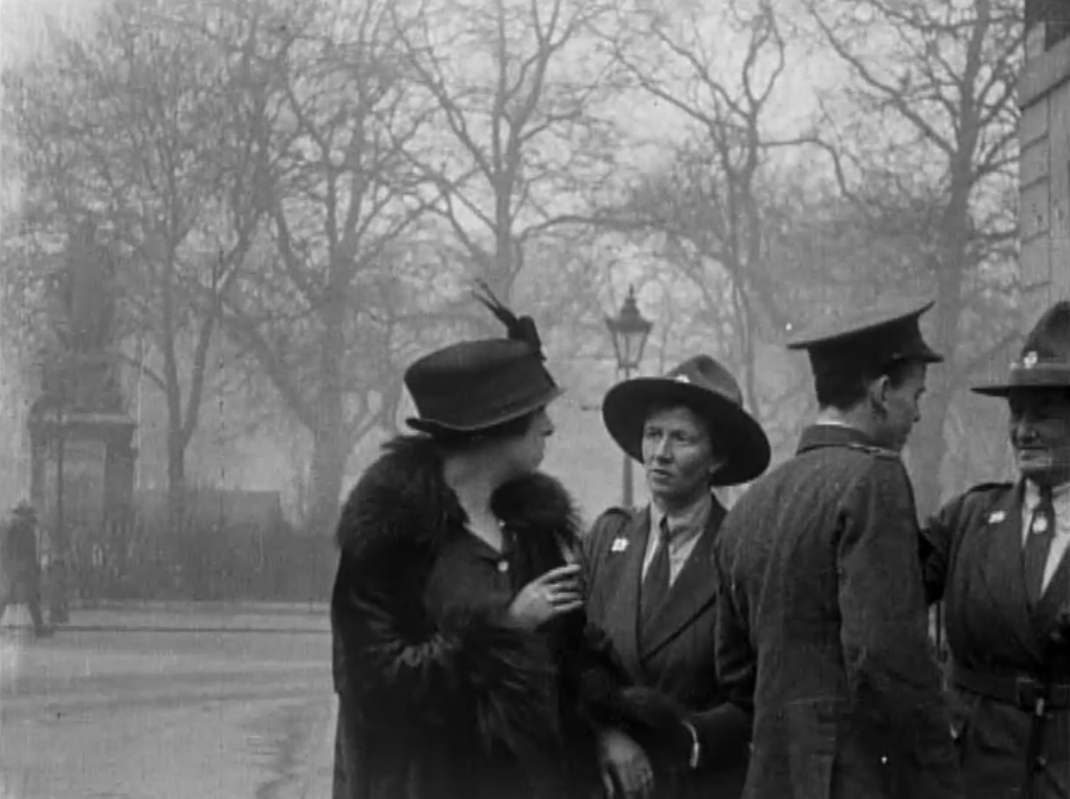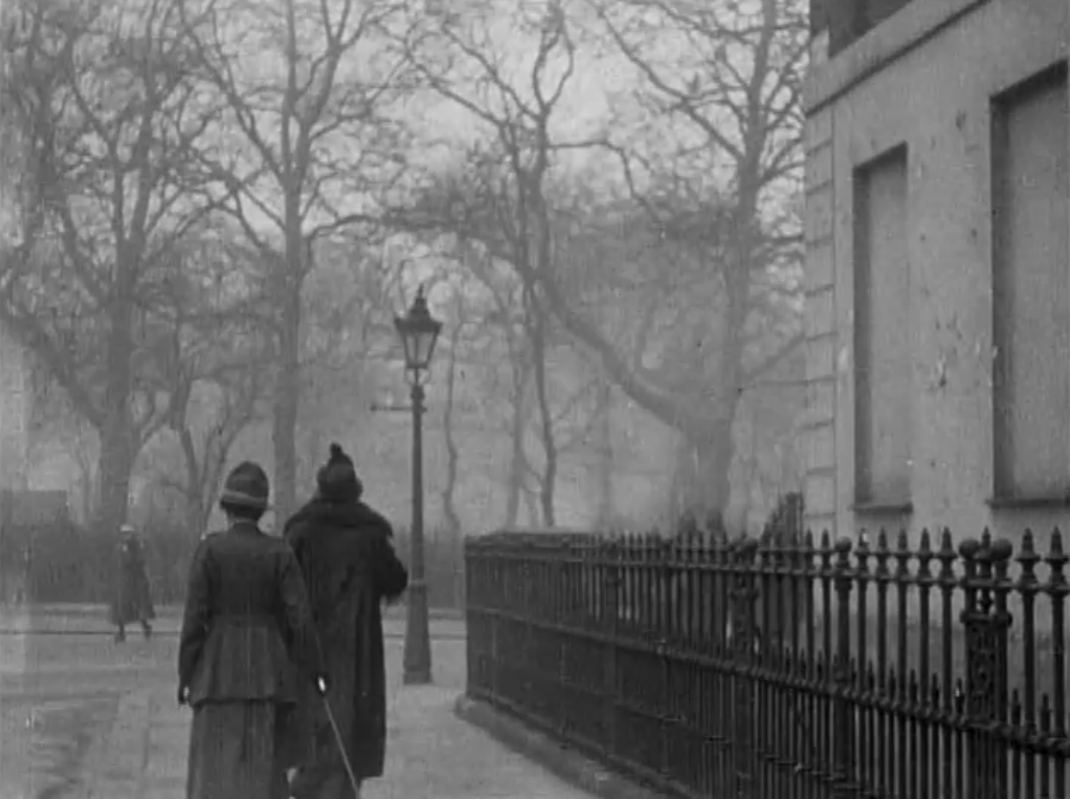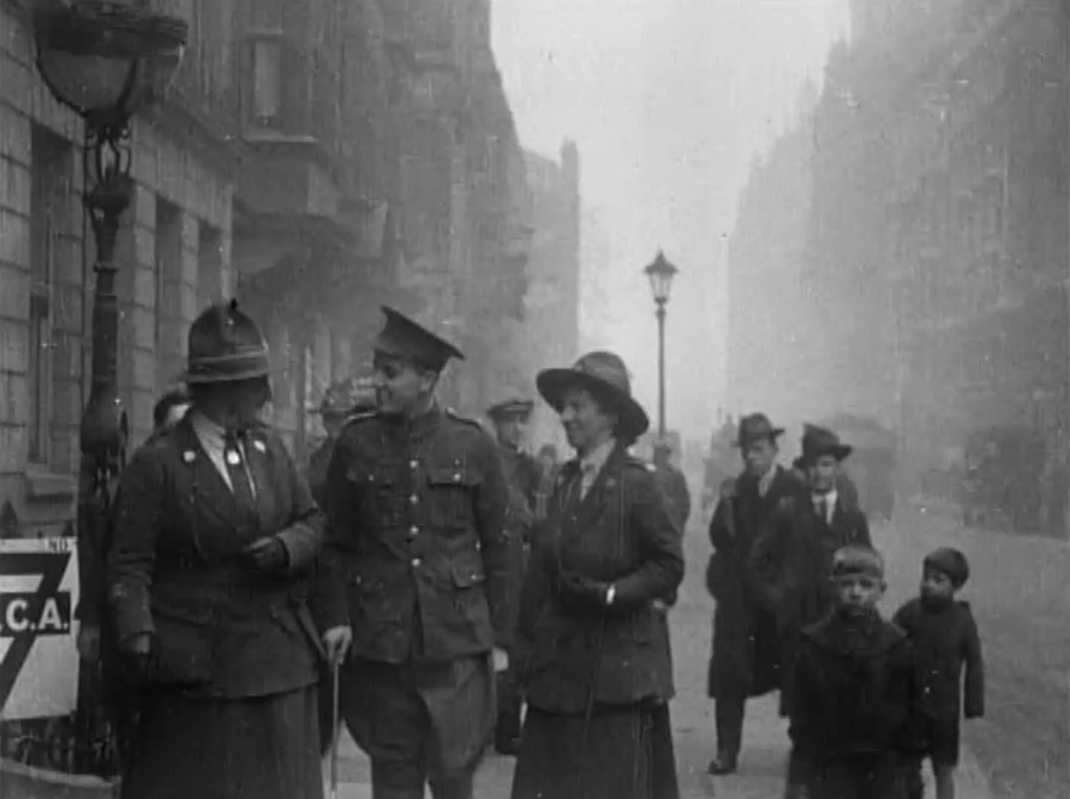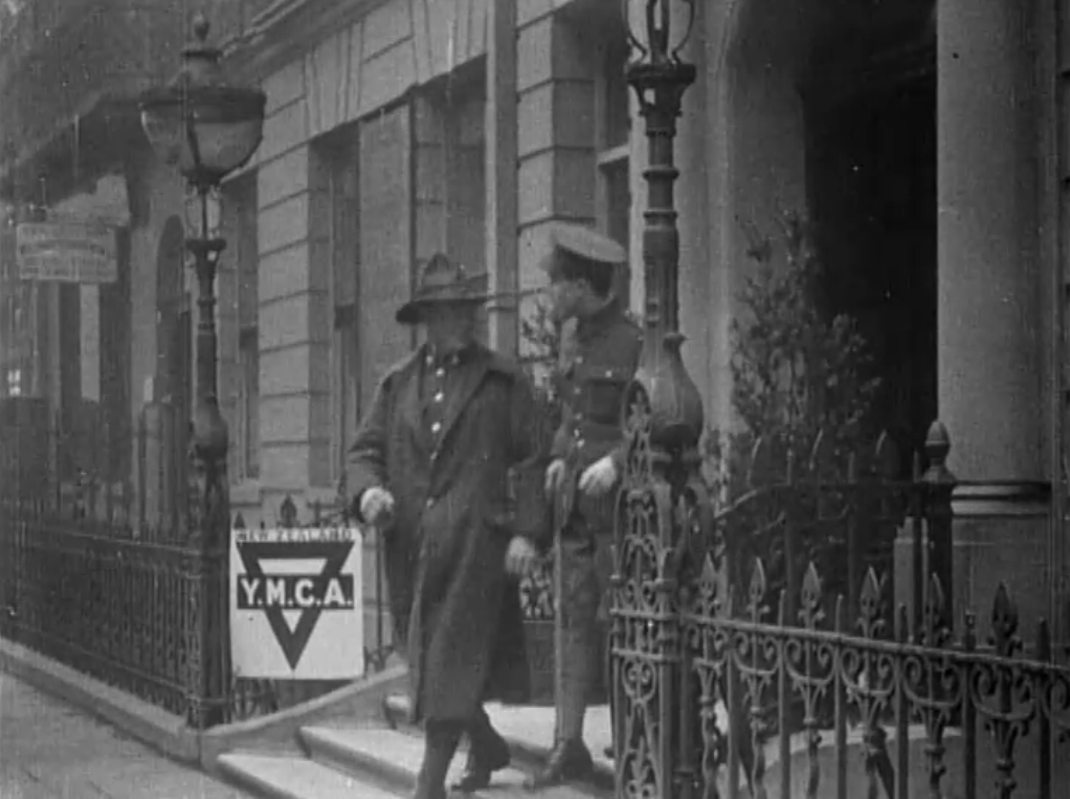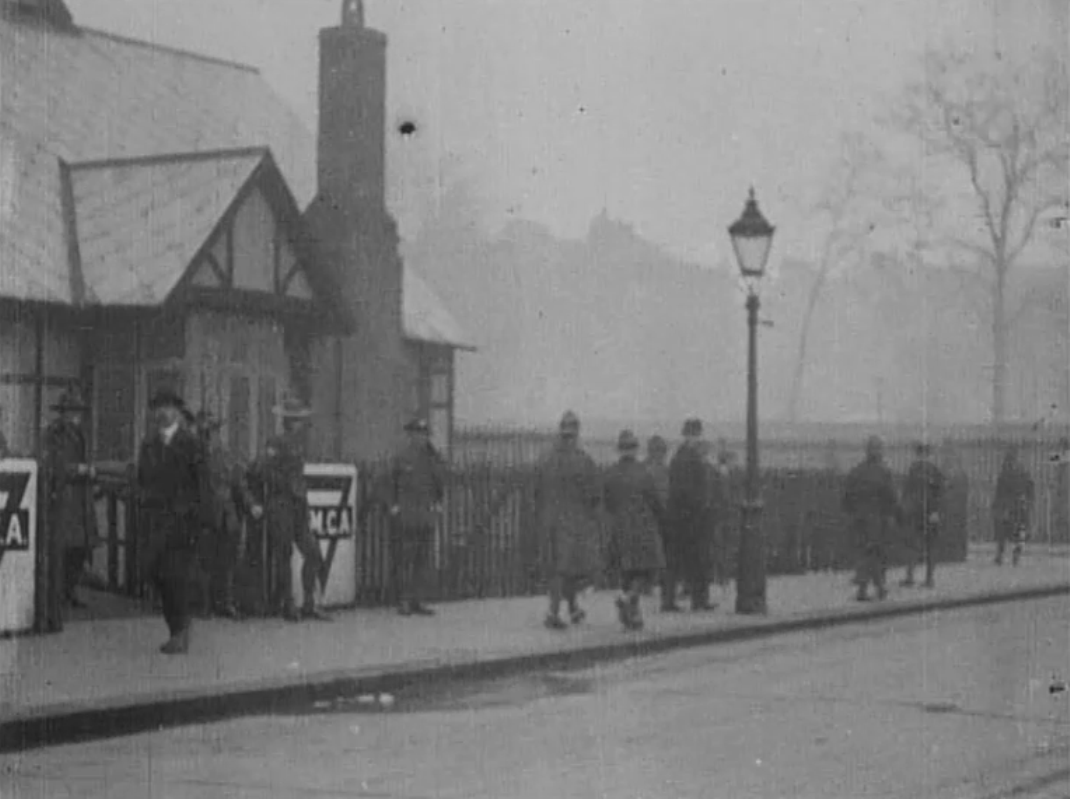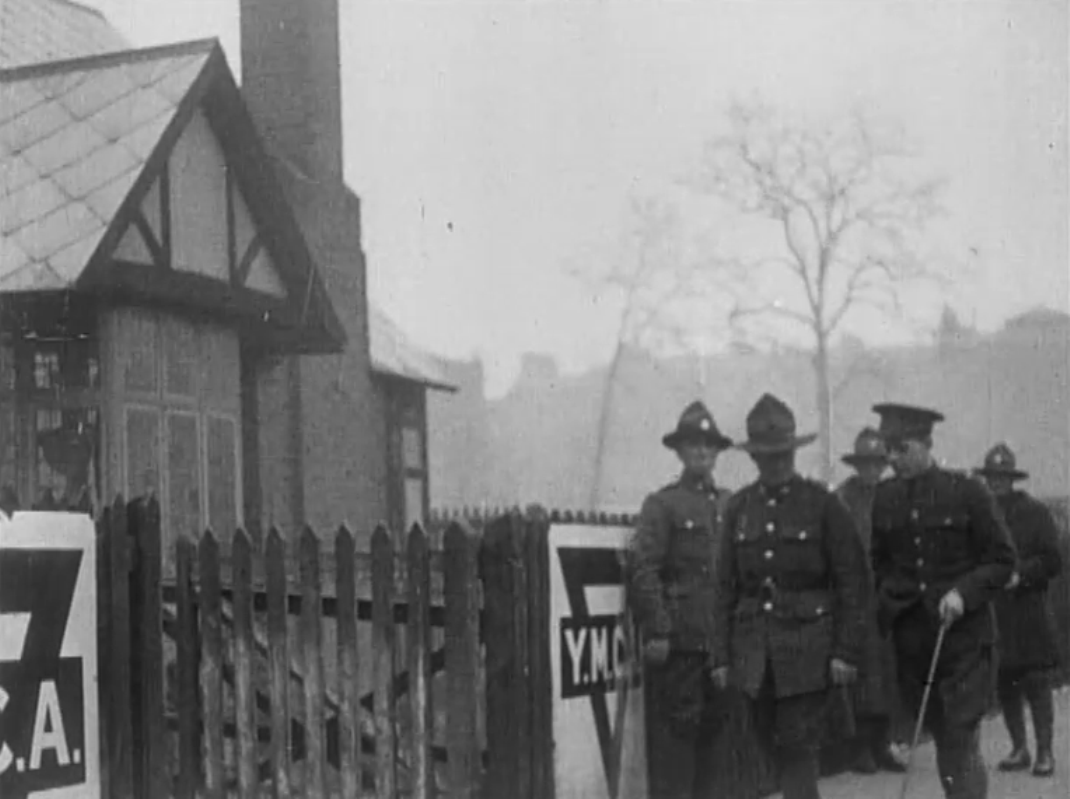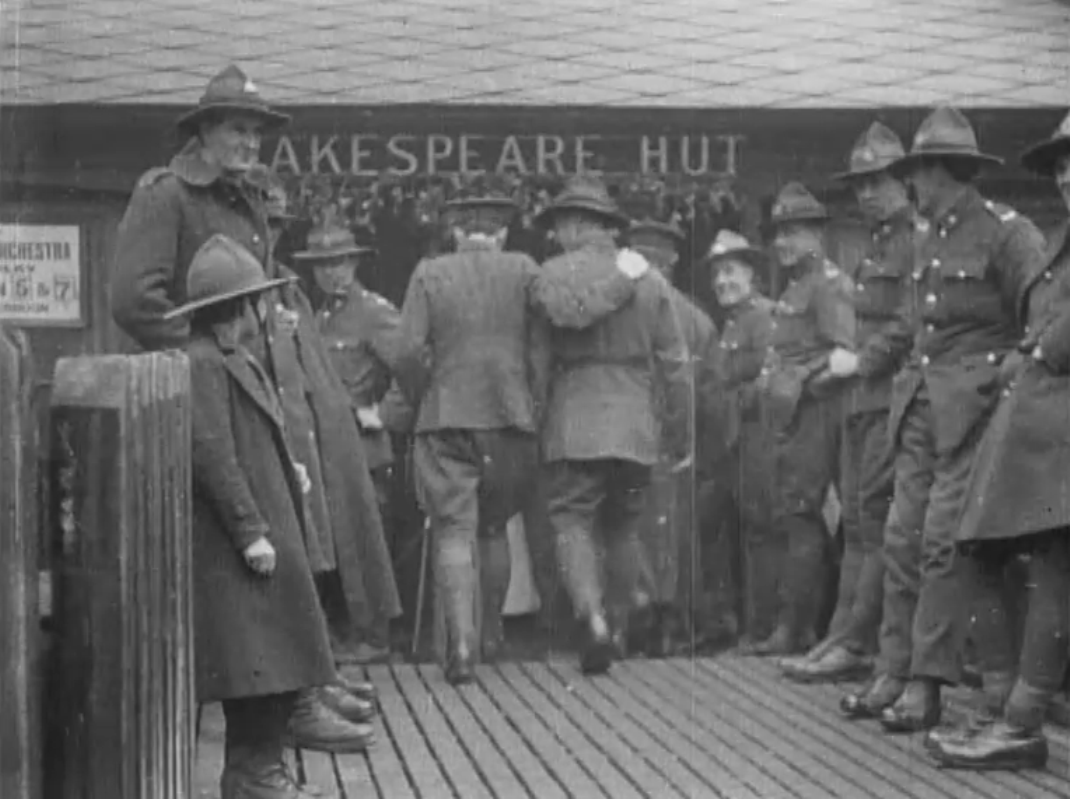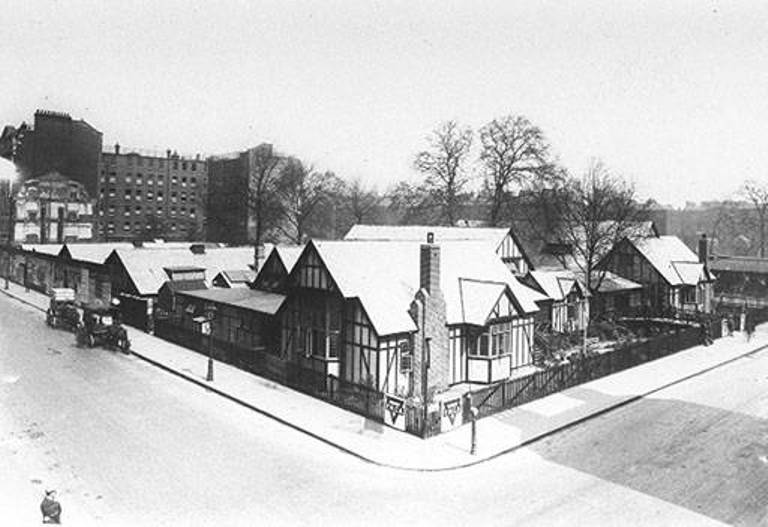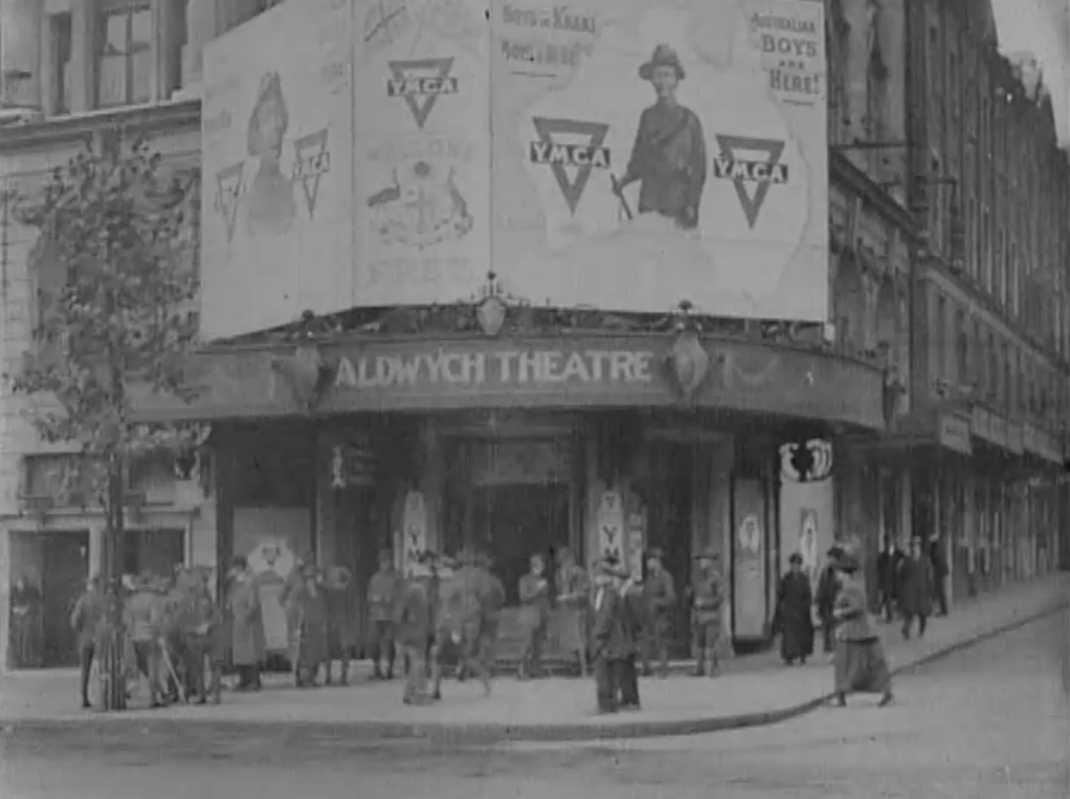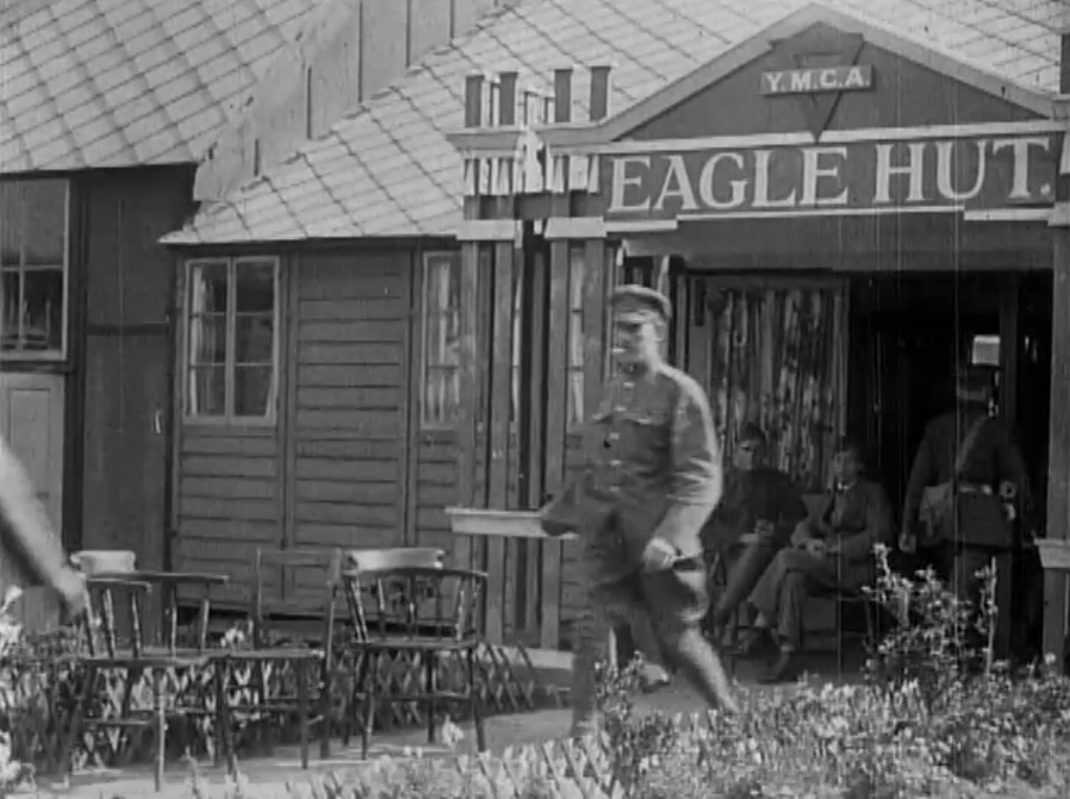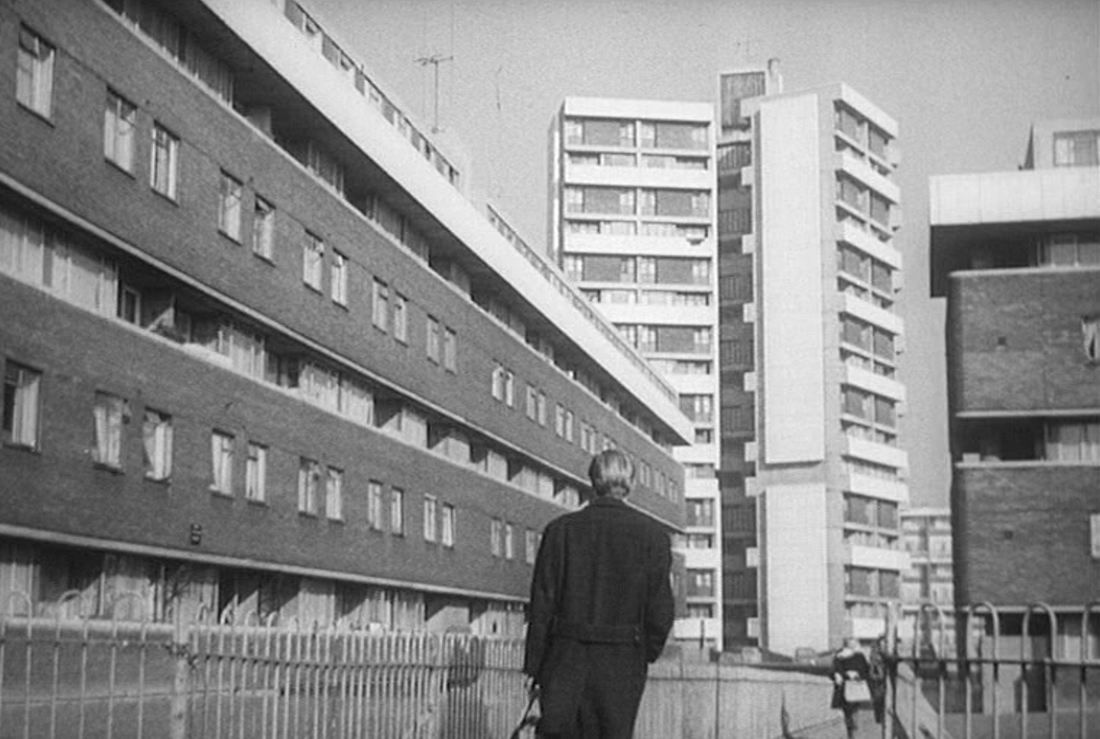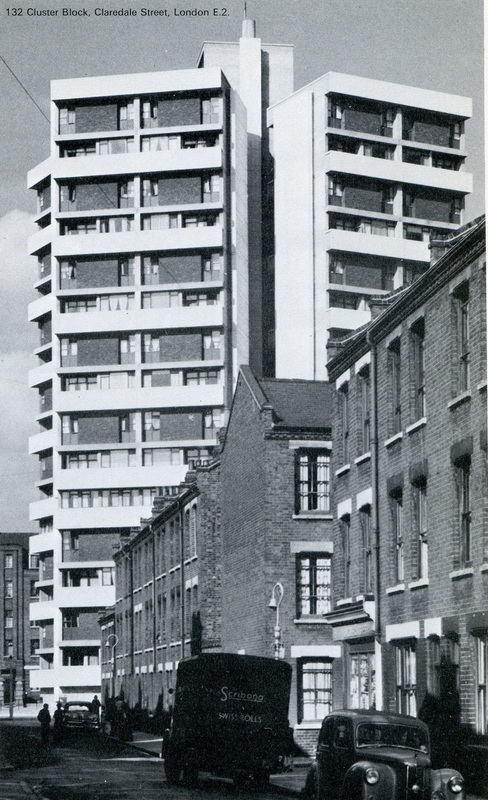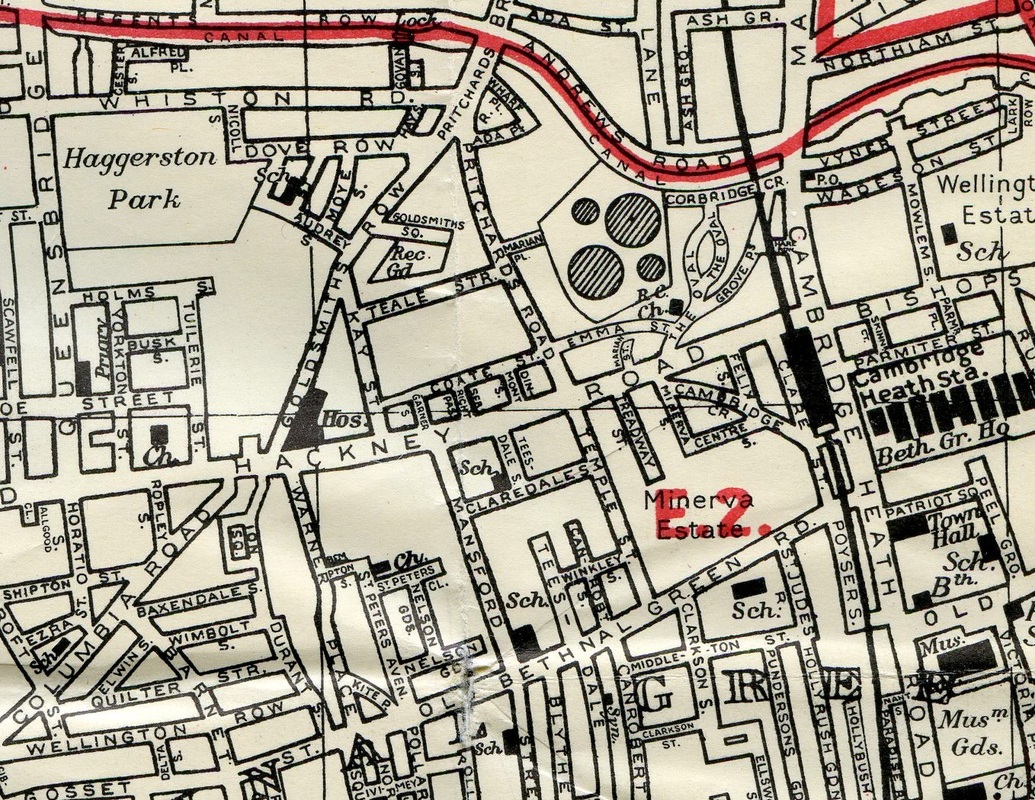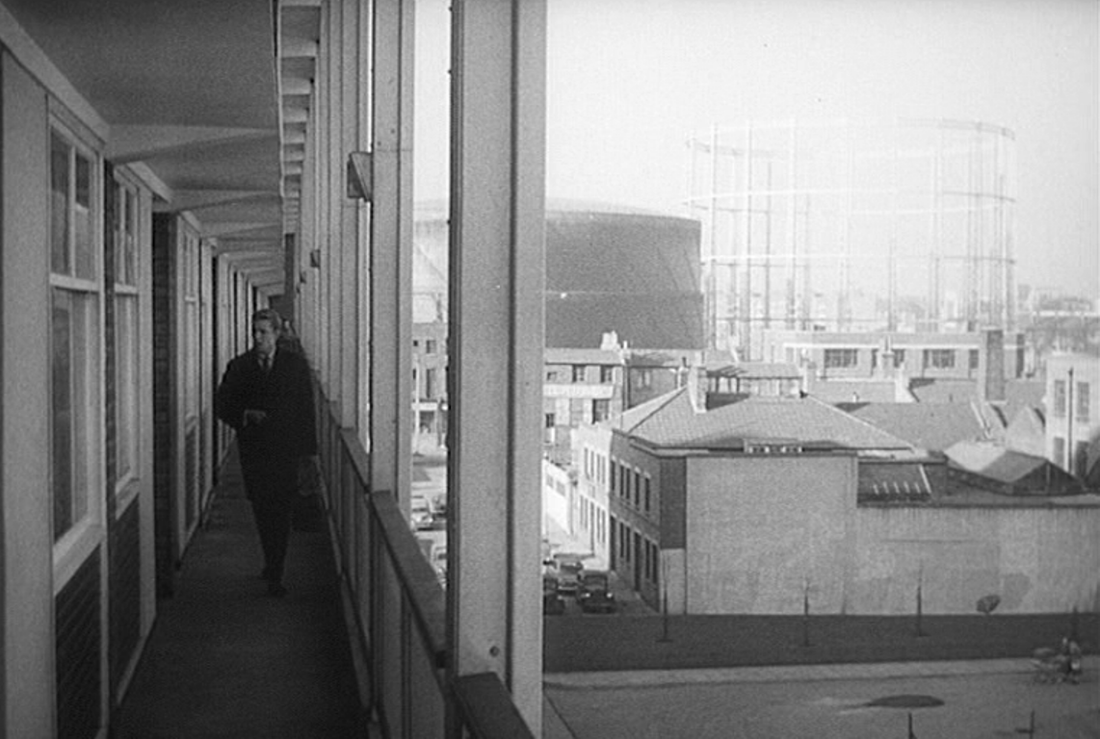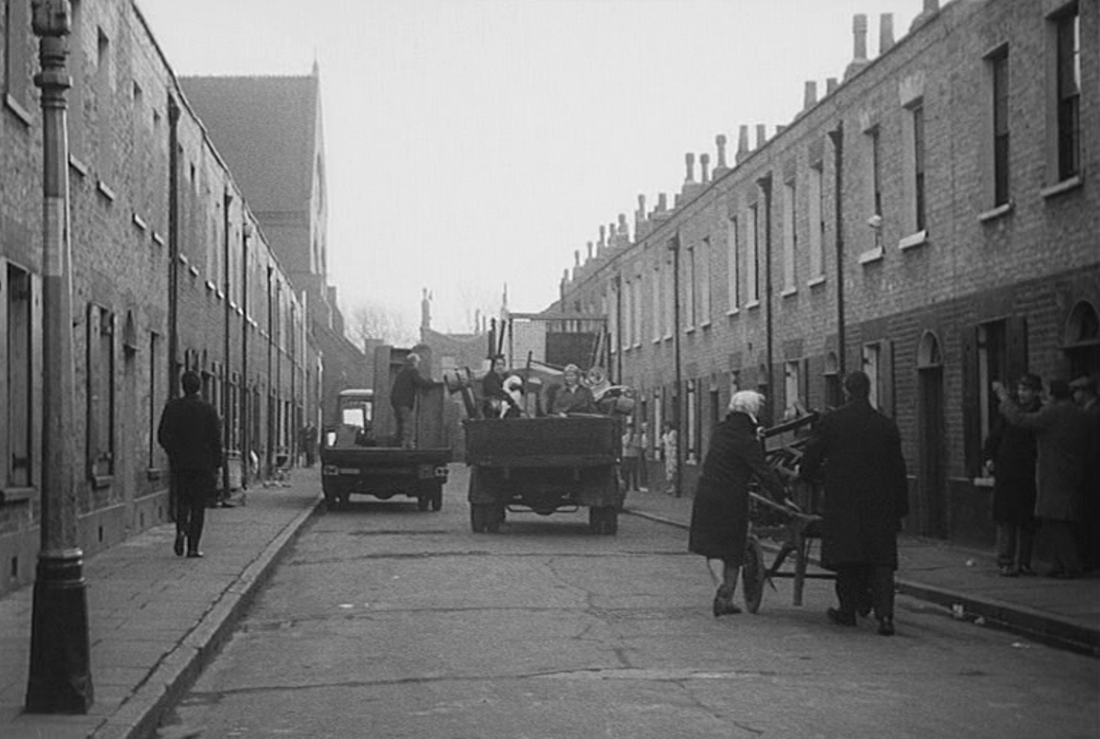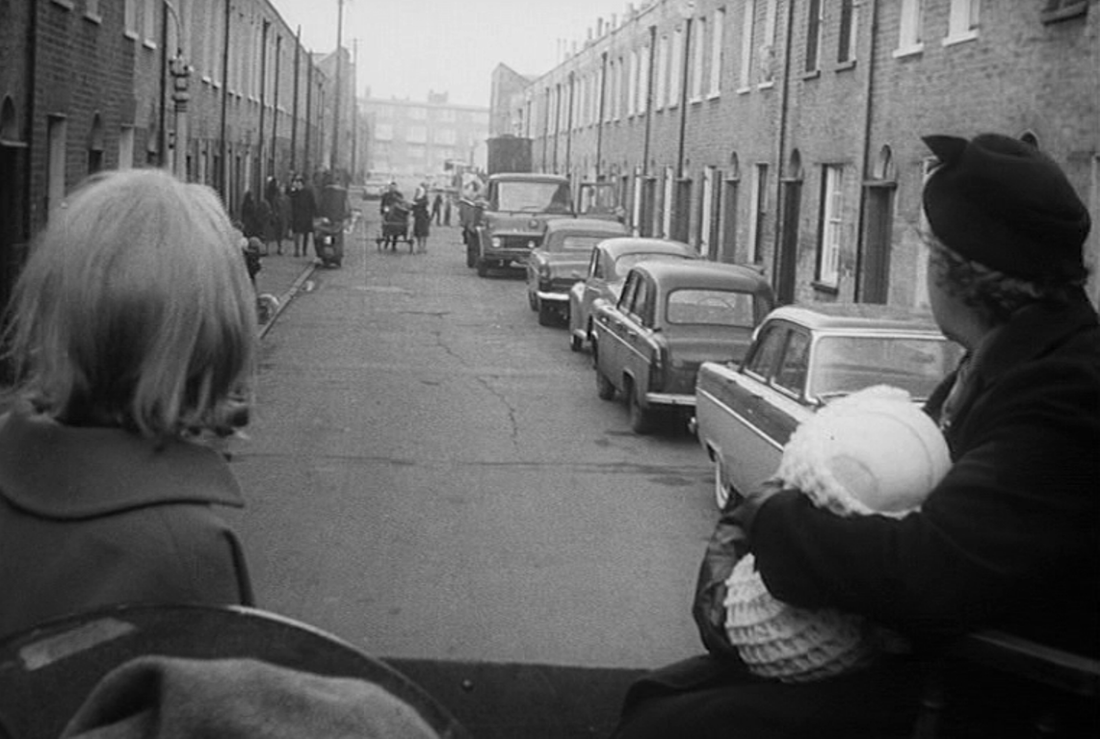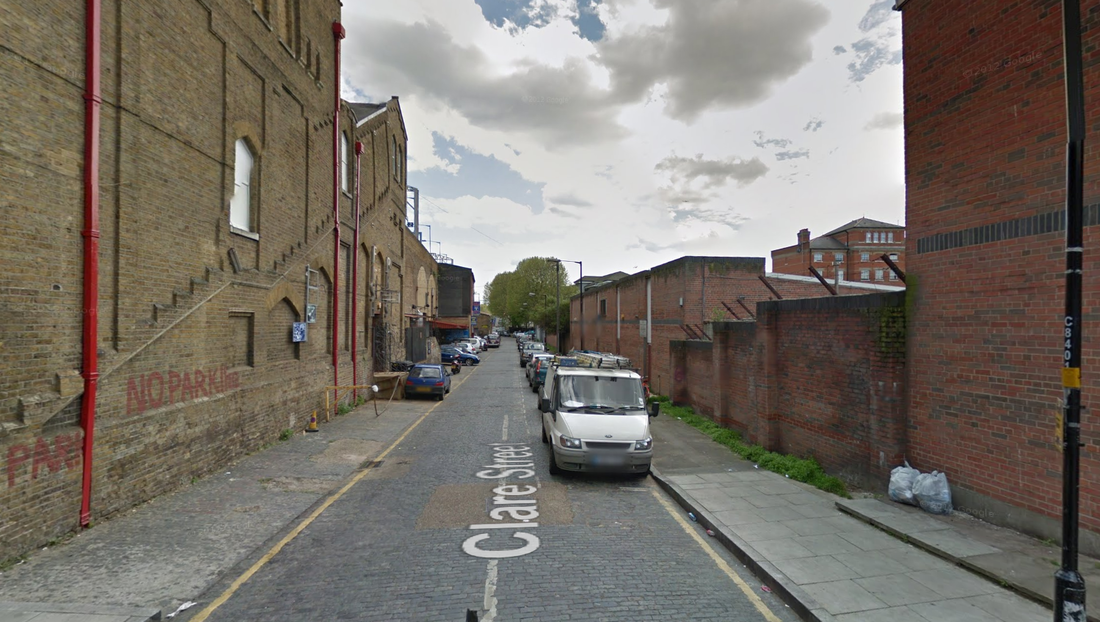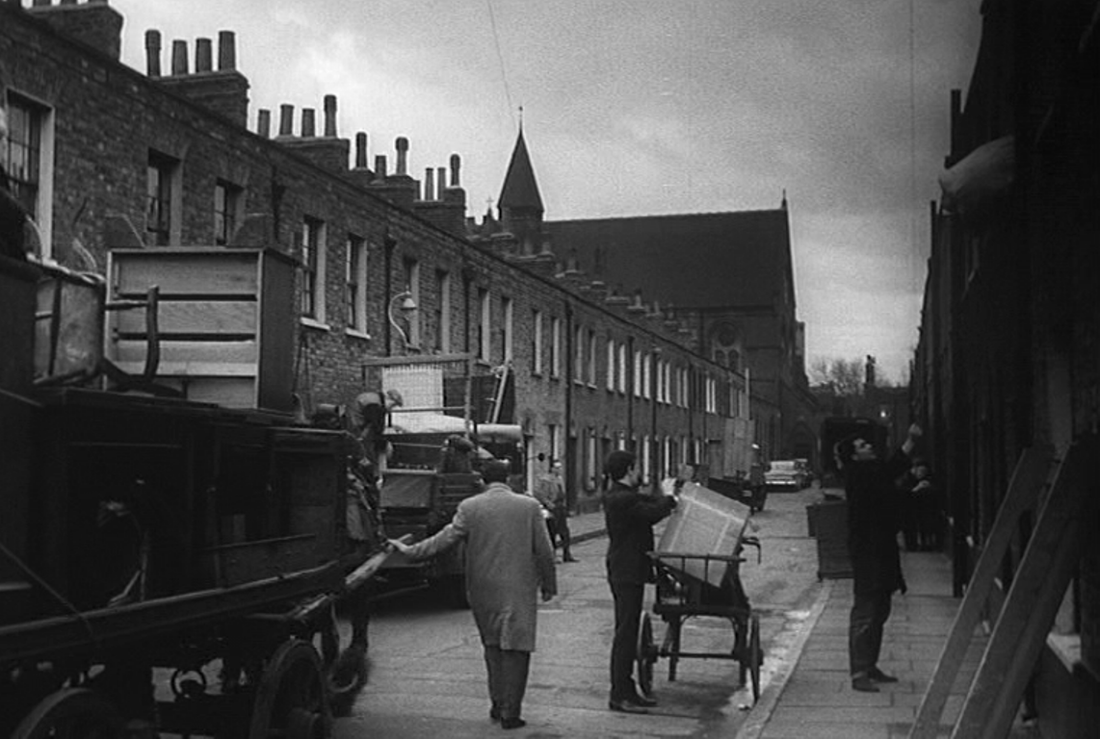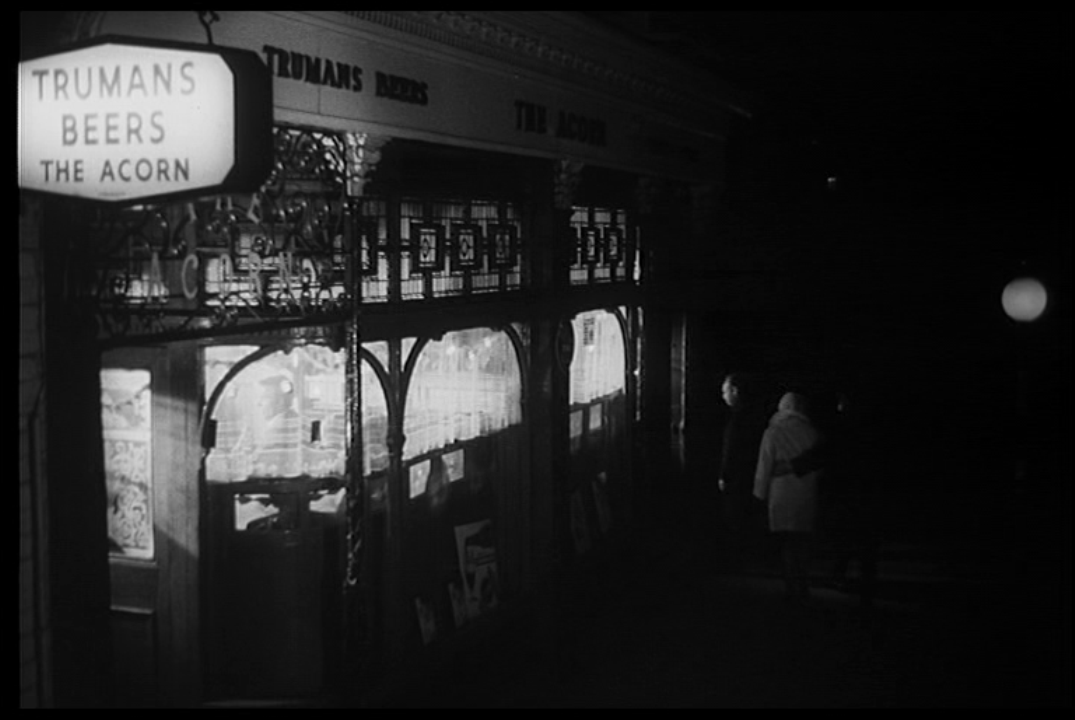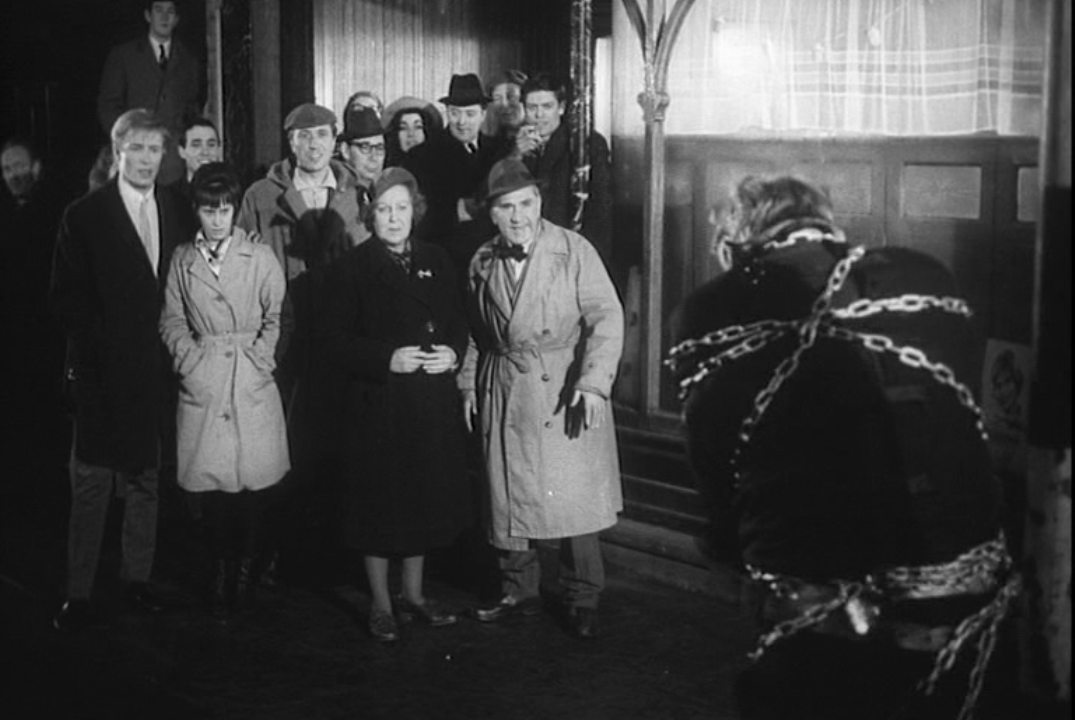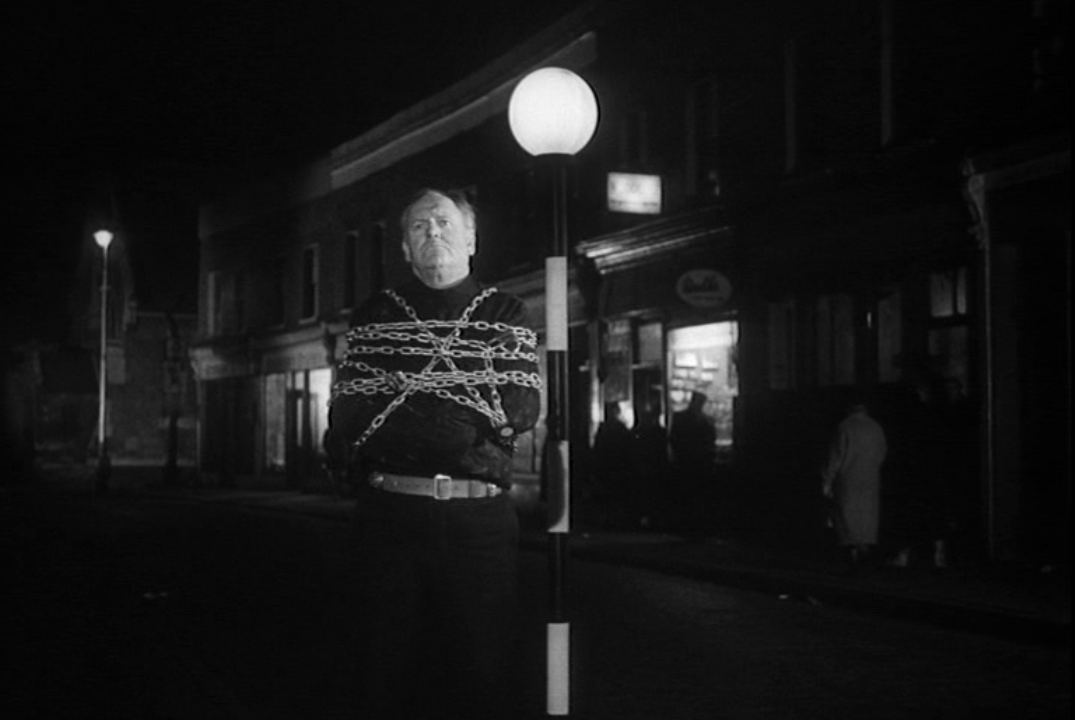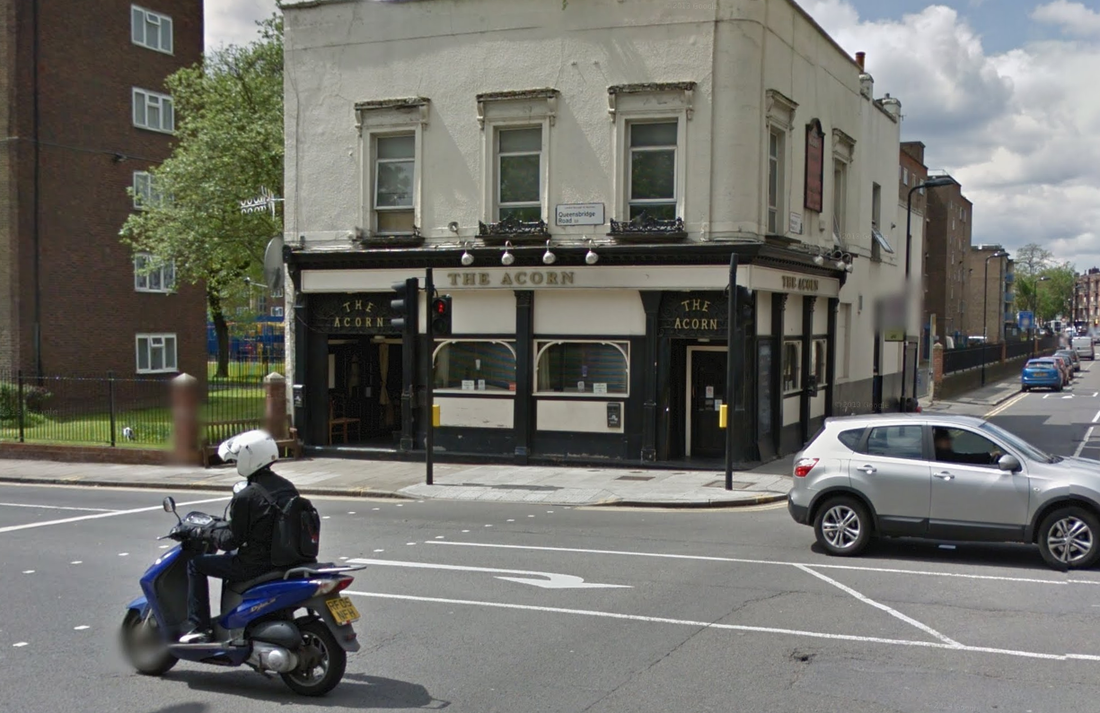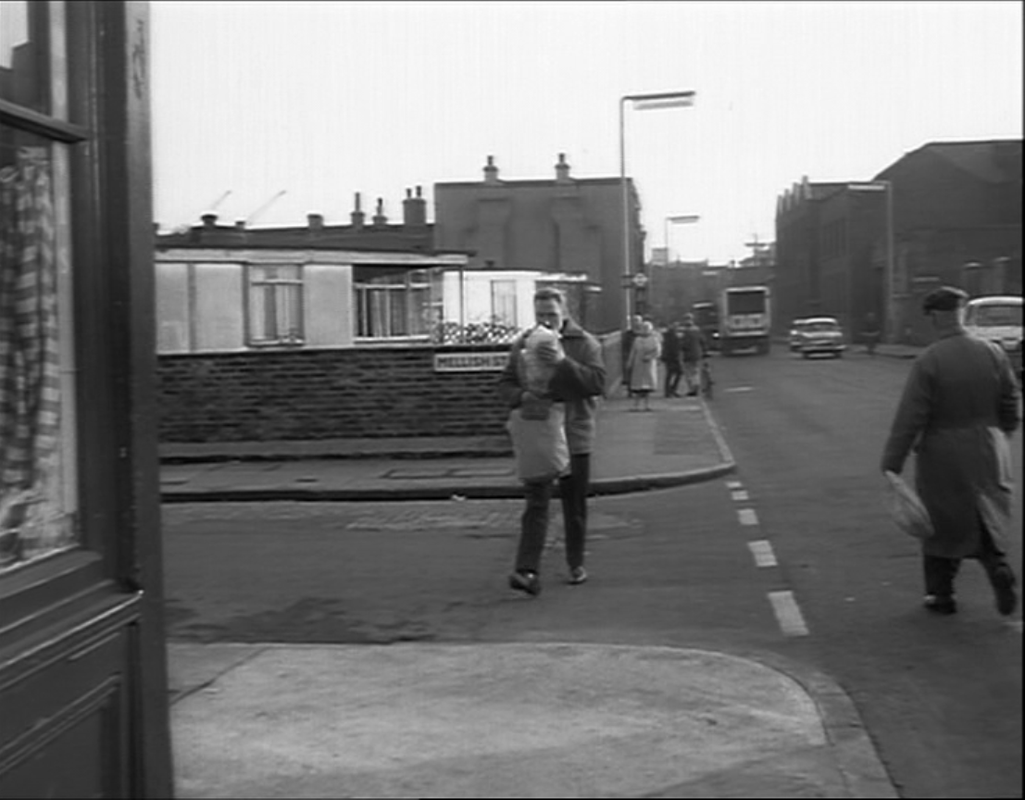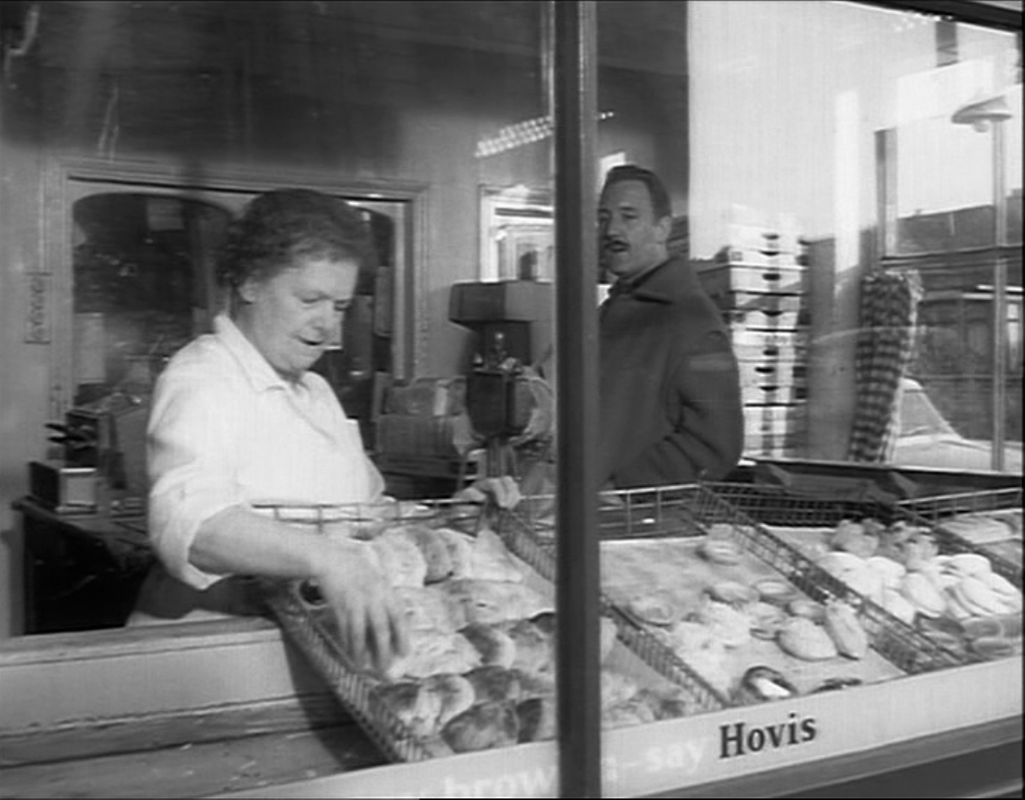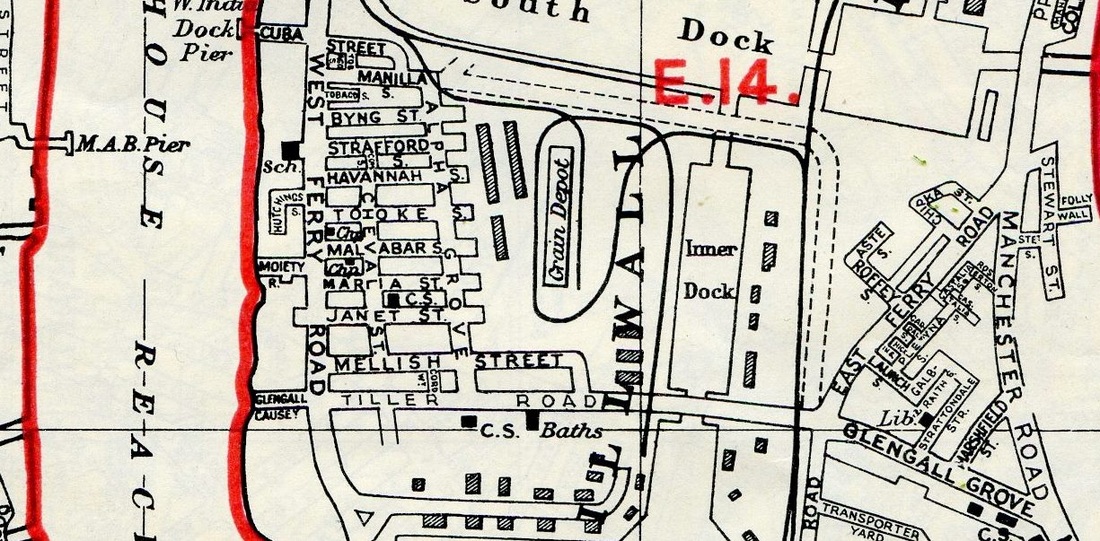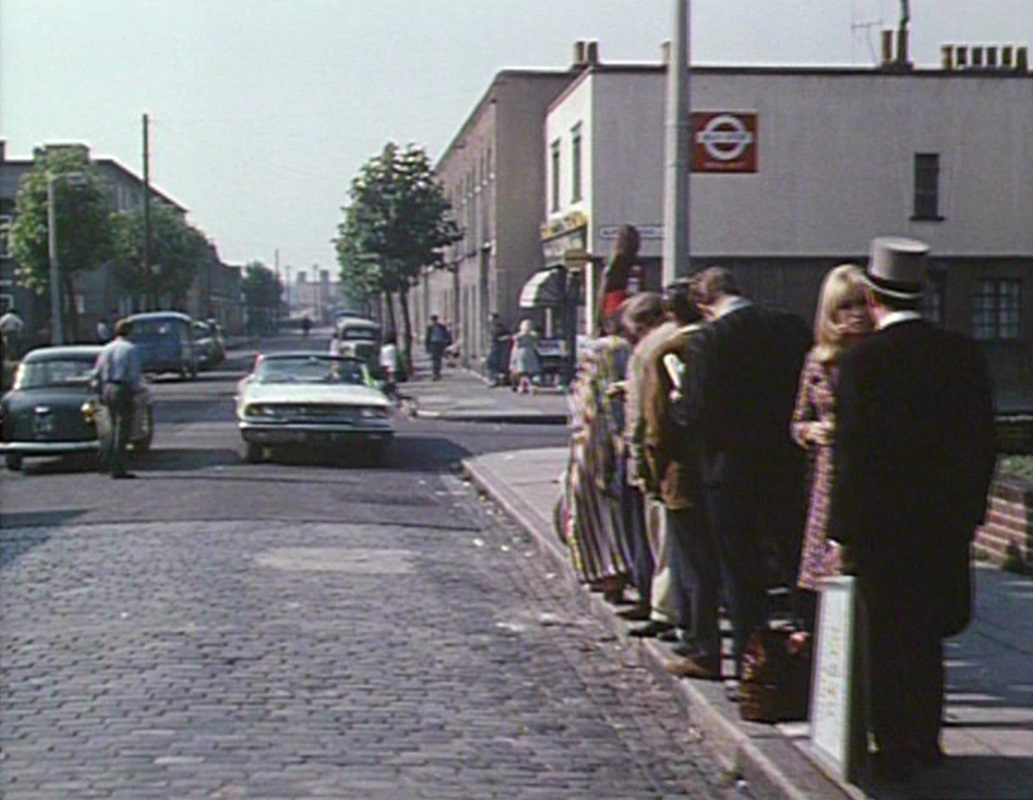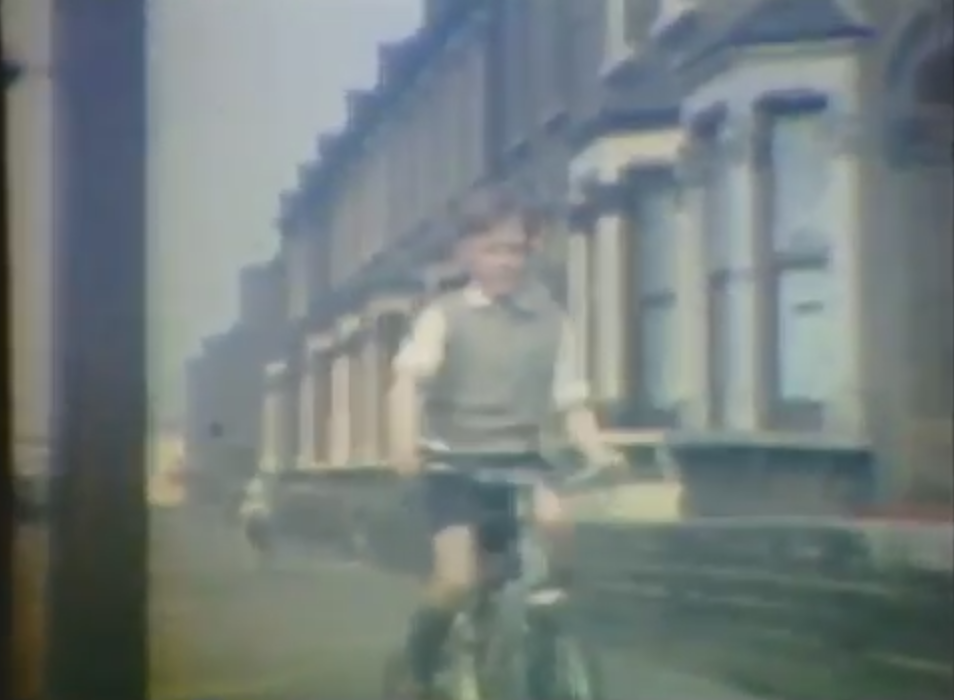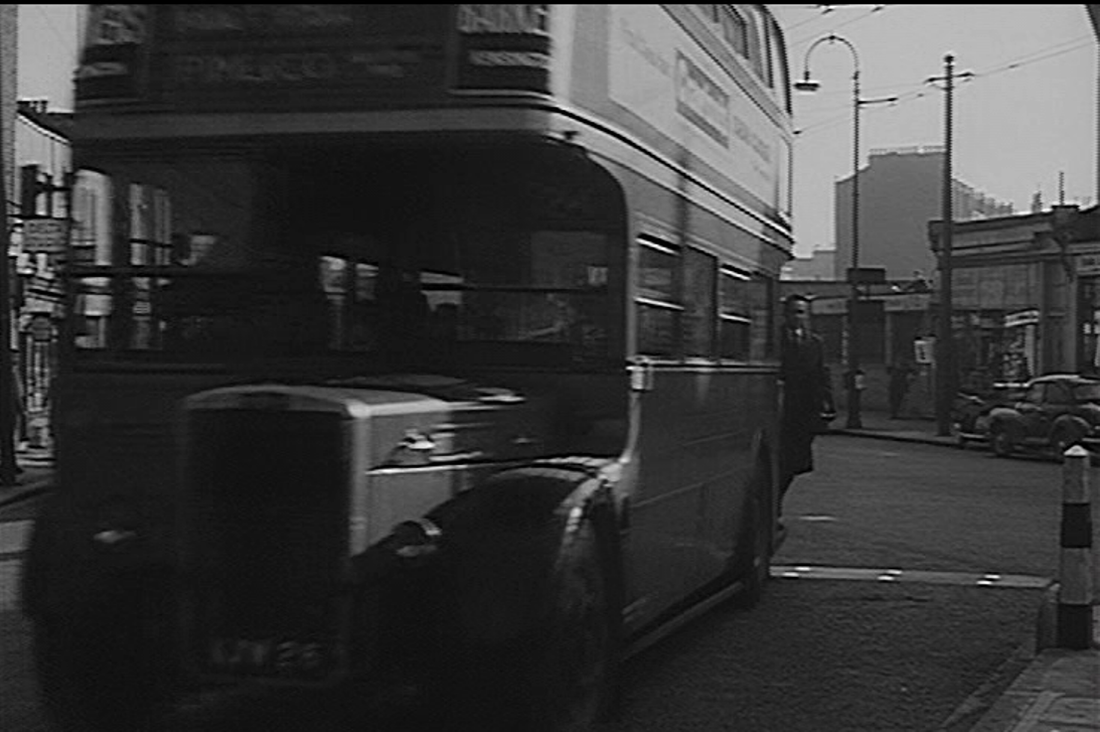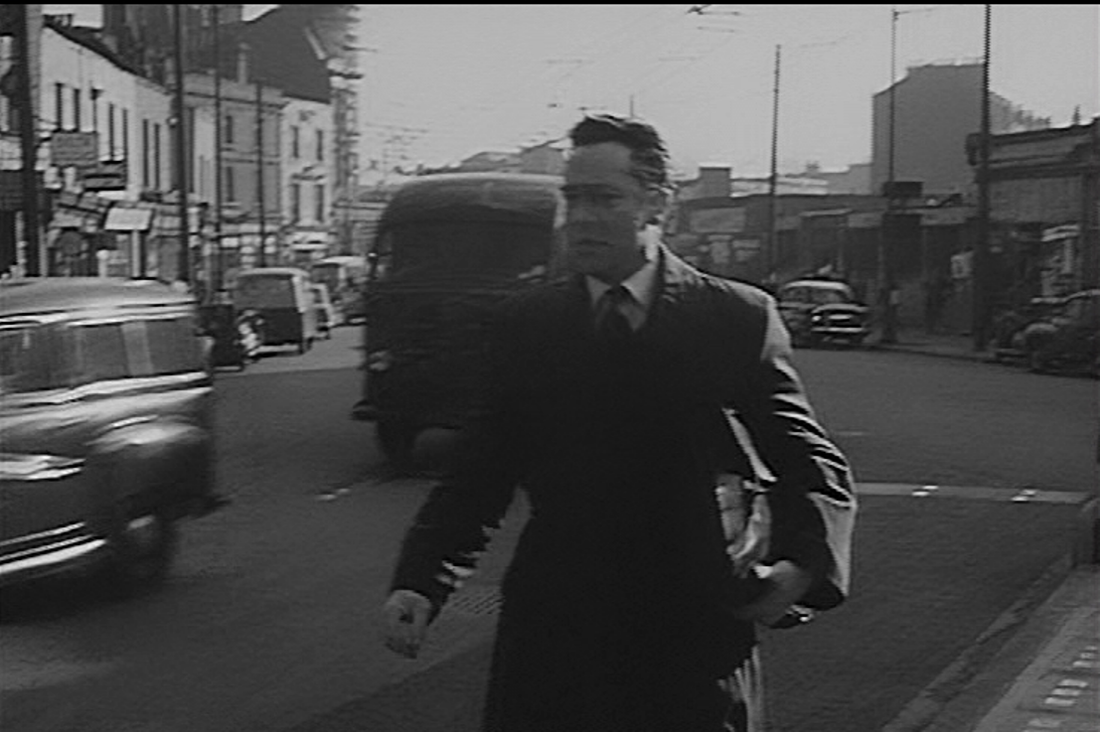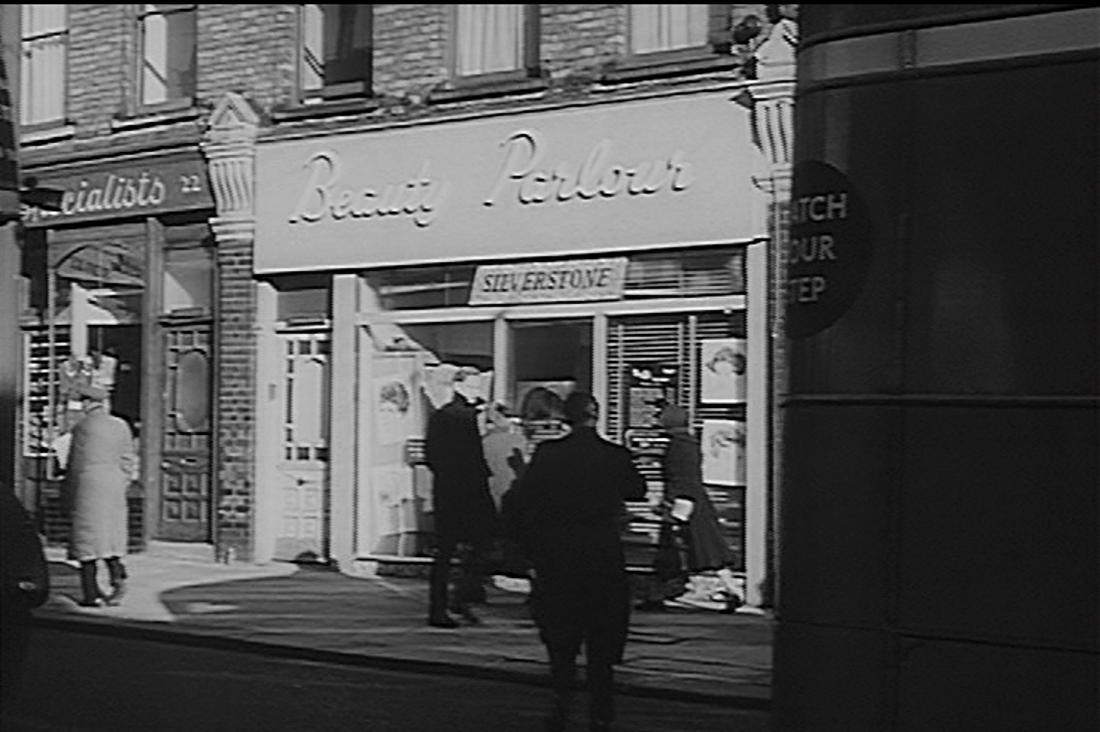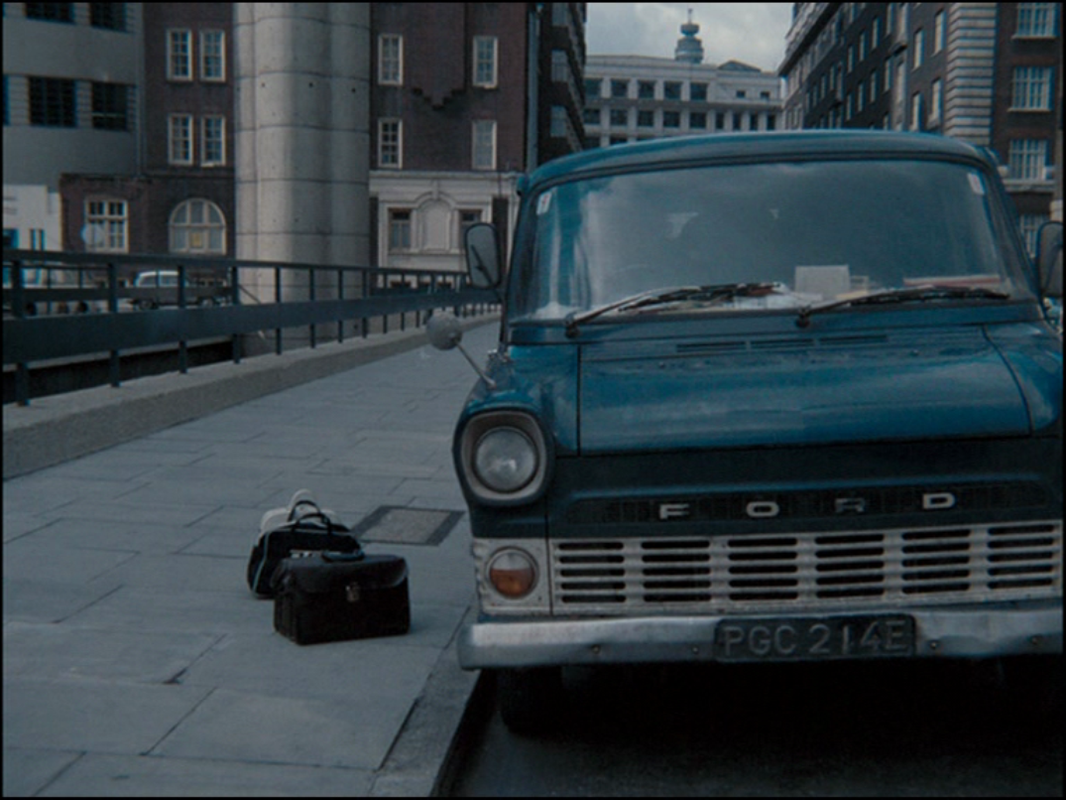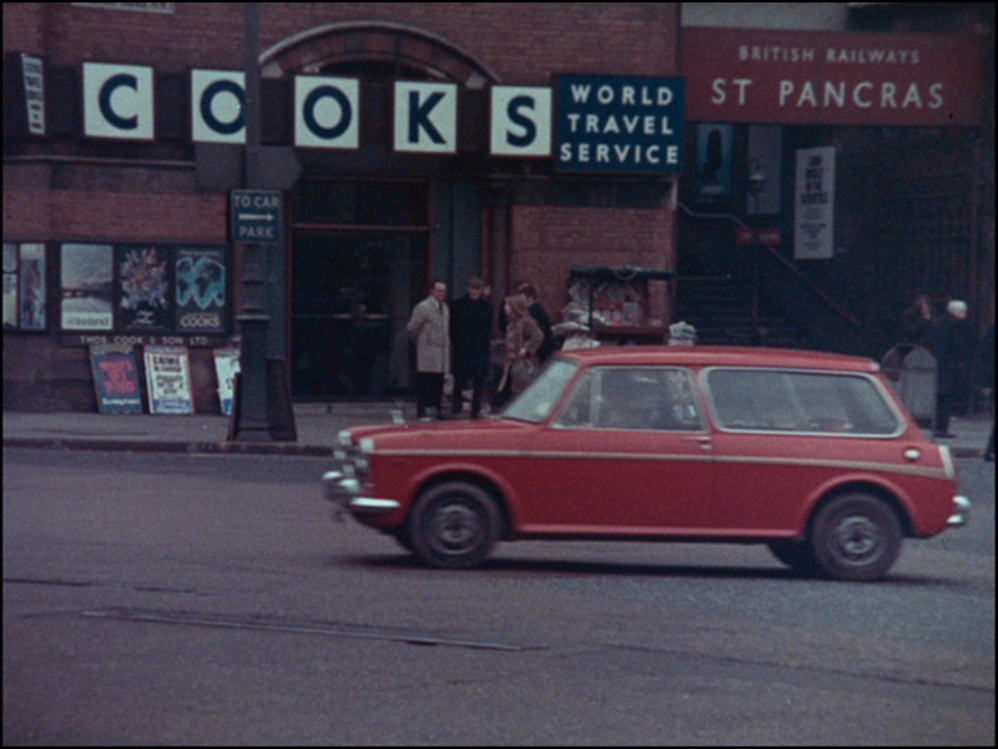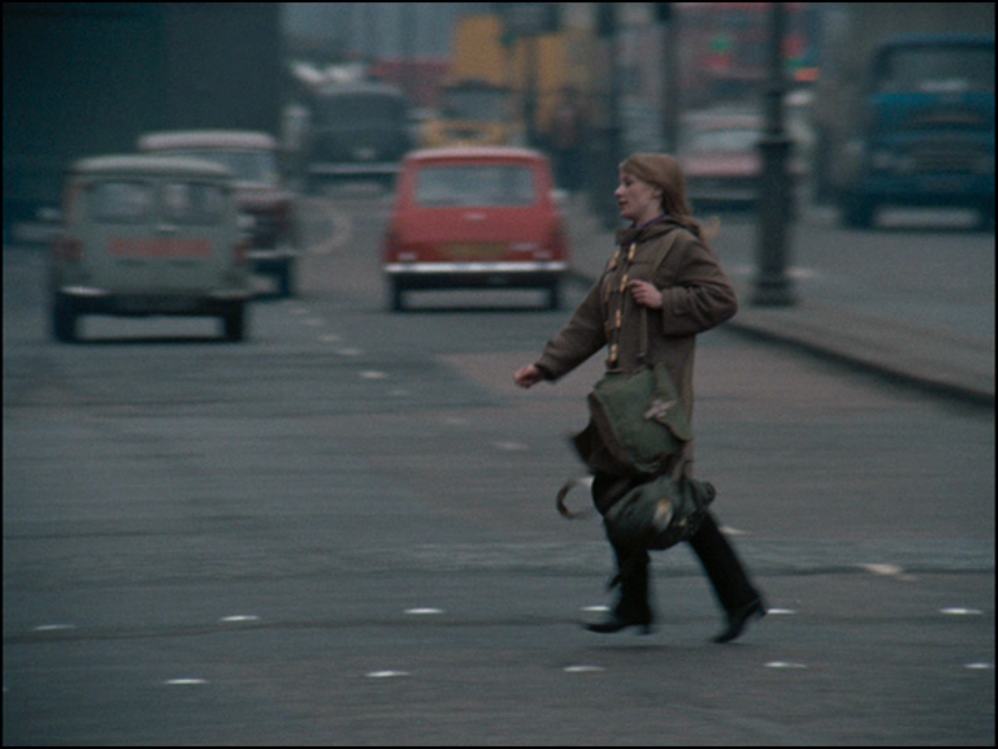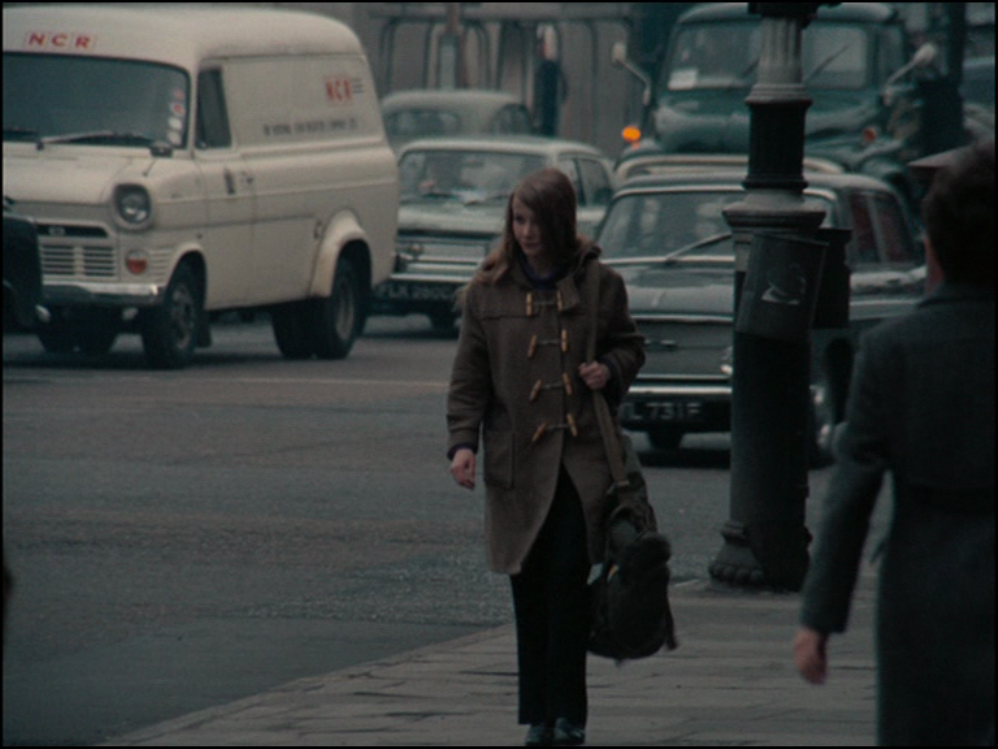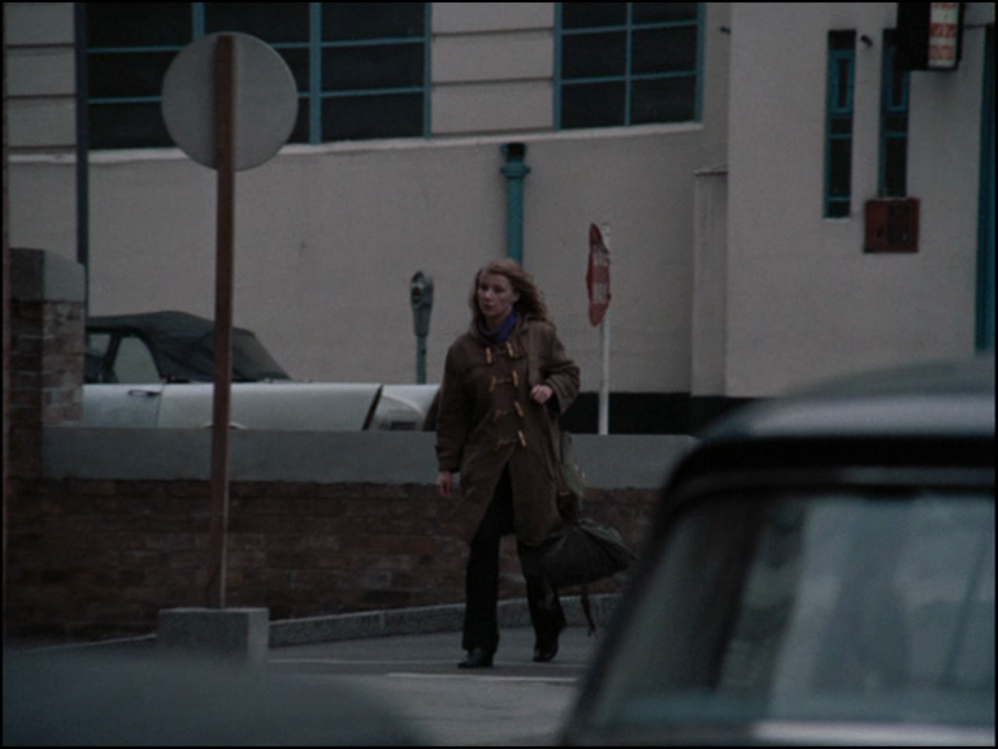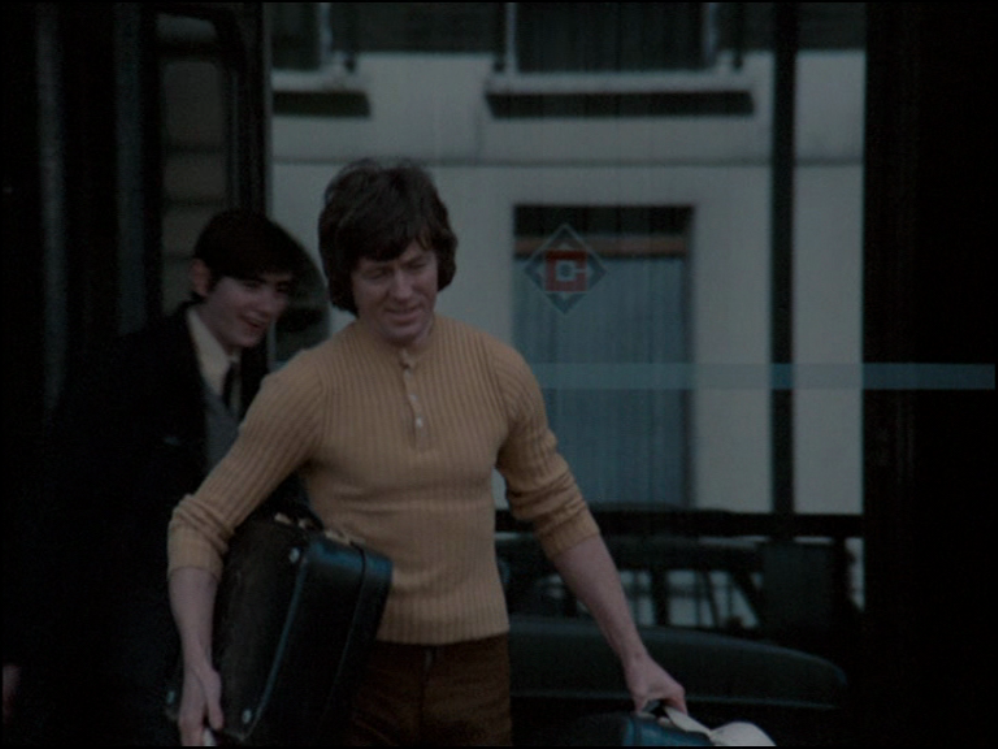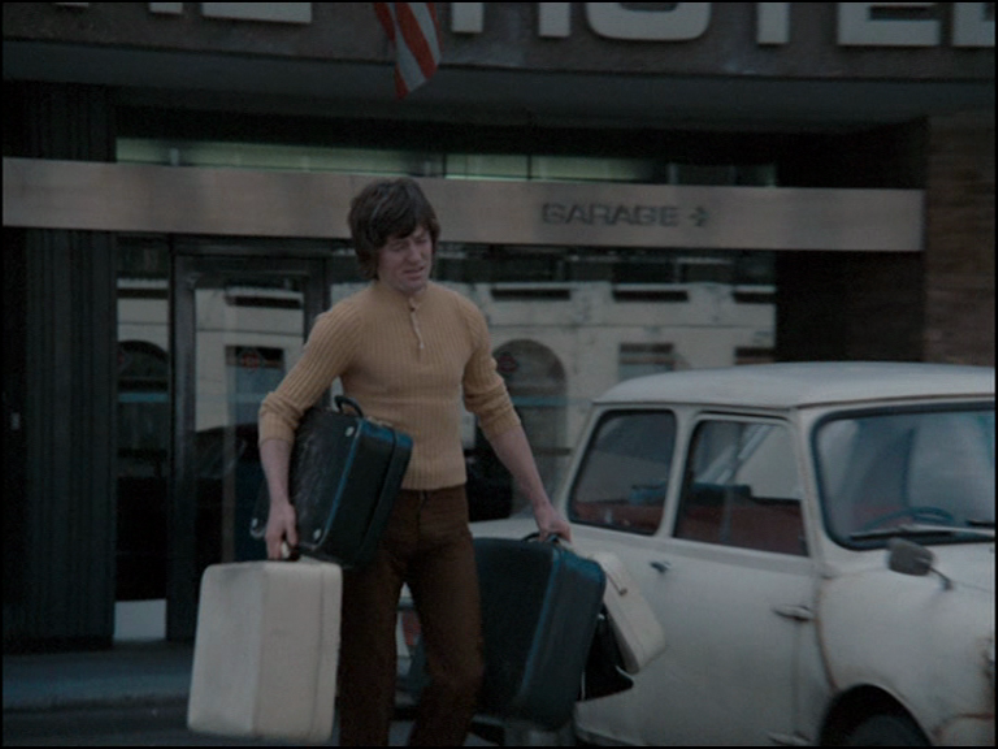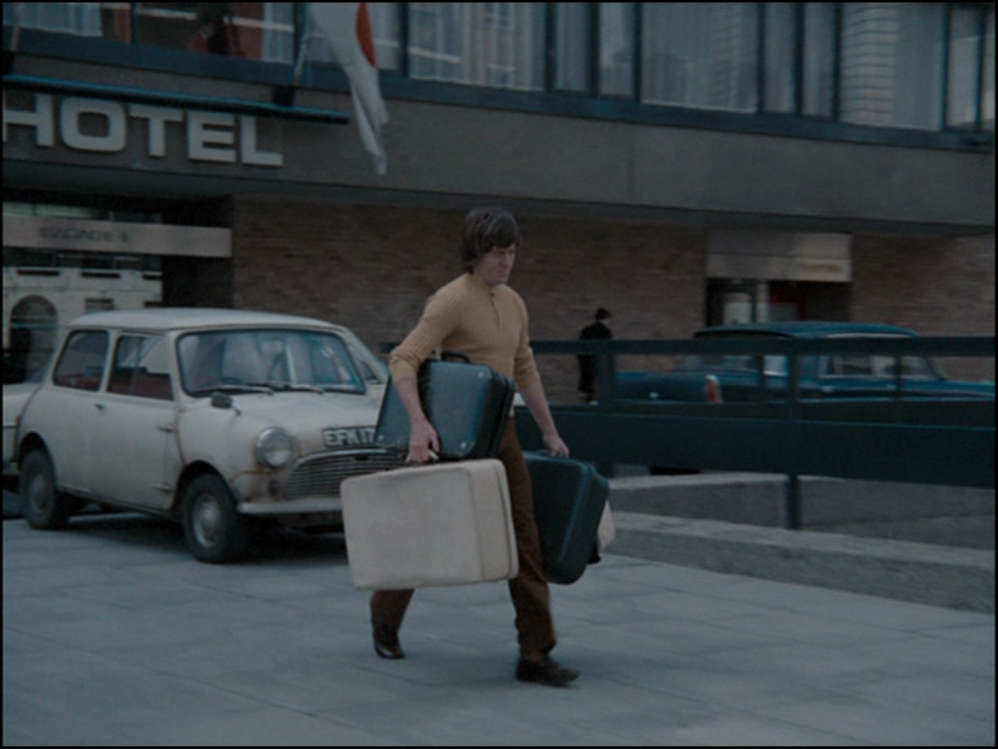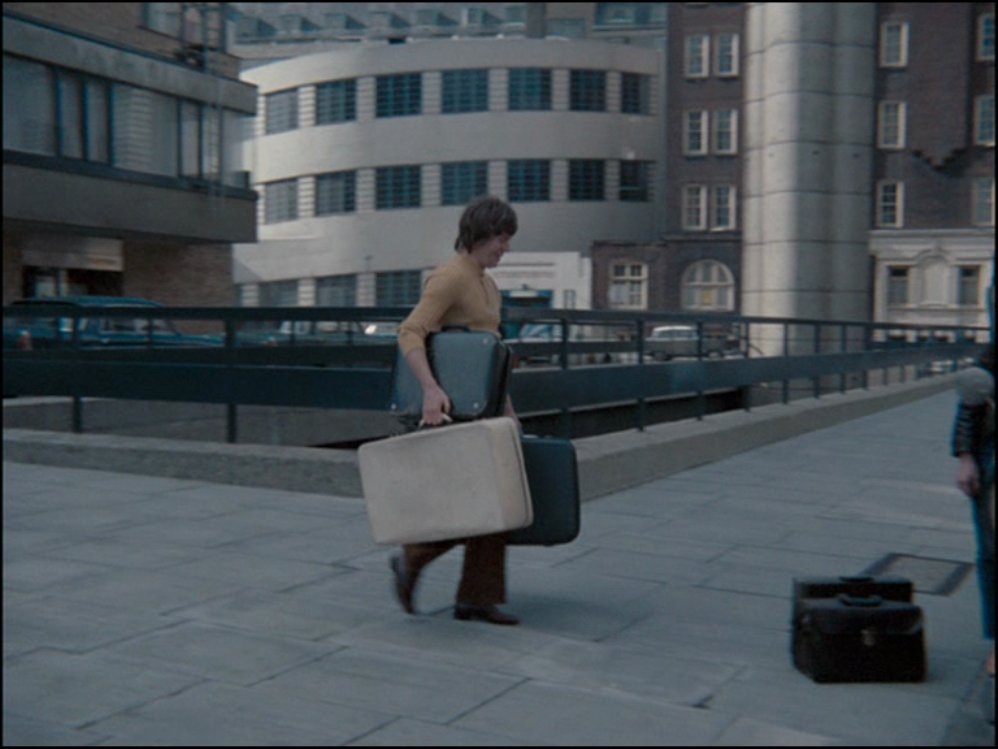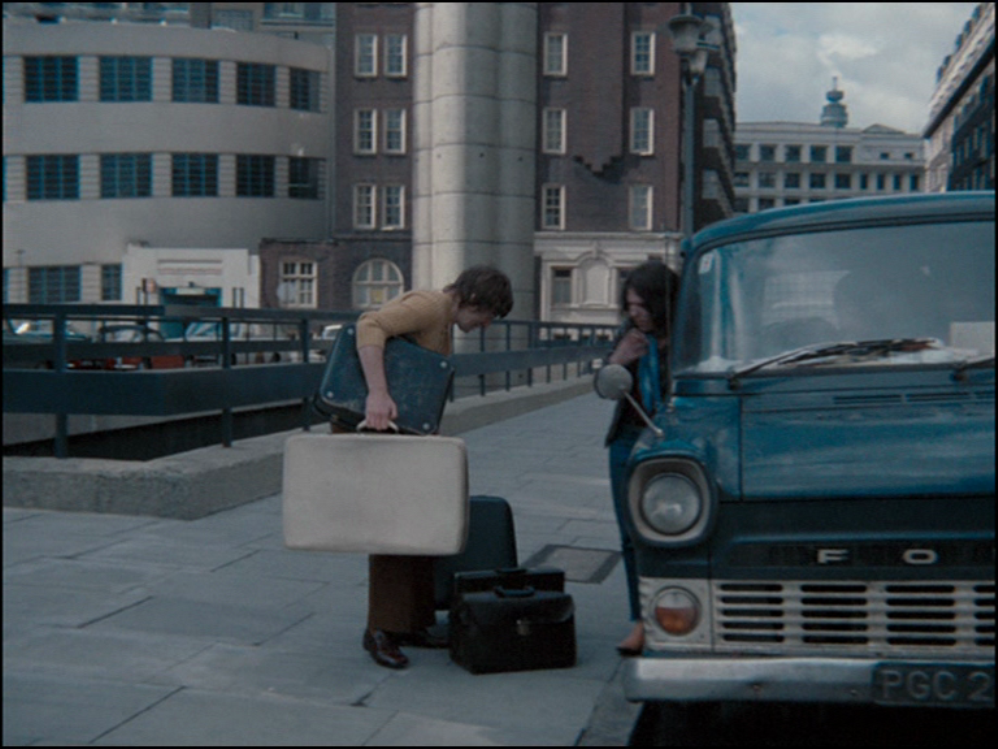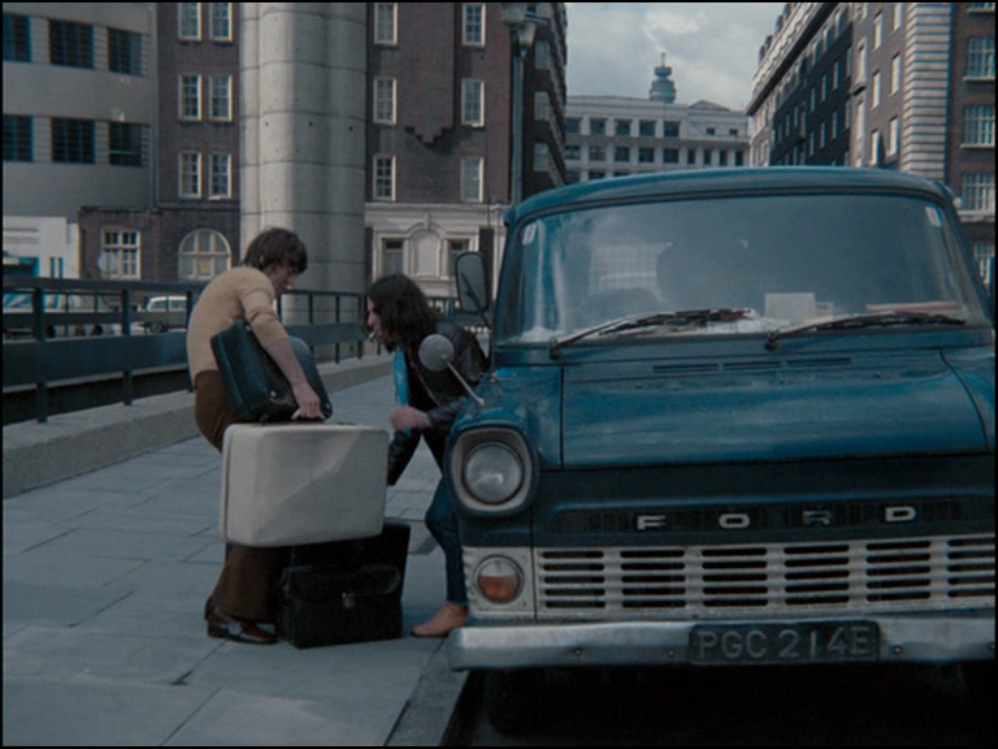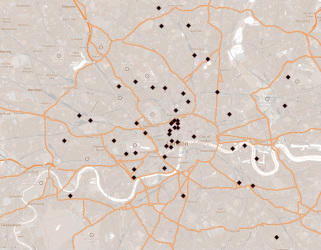The building was demolished after the bowling centre closed in 1972, and in its place stands this:
|
The ABC Bowling Centre was at 829 High Road Leytonstone: Before conversion in 1960 this was the Rex Cinema, built in 1936 - another of W.R. Glen's creations for Associated British Cinemas: (For an example of Glen's work for ABC to which I am more particularly attached, see here.) The building was demolished after the bowling centre closed in 1972, and in its place stands this: What A Crazy World shows the interior of the bowling alley: Another of the film's locations is a few miles south of Leytonstone, around the Theatre Royal on Angel Lane, Stratford (we see posters for Oh What A Lovely War): Other locations include Whitecross Street E.C.1 and a housing estate between York Way and Caledonian Road, N.1 (these locations are all documented on the Reel Streets site, here). We also see the Caledonian Road itself, a little further south than the Friday the Thirteenth location identified in an earlier post (here):
1 Comment
The drama of The Marked One centres on a house in Oxford Road North, number 26, and on the pub opposite, at the junction with Wellesley Road: The interior of The Pilot has been remodelled, but some features are still recognisable: The film features several views of Brentford Dock, the protagonist's place of work: The film's other locations are probably in the Brentford and Chiswick area, but I haven't yet identified them. Any suggestions much appreciated, here. Please visit the excellent Brentford Heritage blog for its rich variety of information about and images of this area.
This film only exists now as an image and description in Paul's 1907 catalogue. The location is not specified in the catalogue but it is recognisably Colney Hatch Lane at the point where it is joined by Sydney Road, where could be found Paul's factory and studio.
On previous occasions when Hitchcock filmed Piccadilly Circus he left it intact: Though in Blackmail he did tamper with the electric advertising: Piccadilly Circus is sometimes shown in an unfamiliar state of abandon: And it is sometimes completely destroyed: Here is a small sample of films that show Piccadilly Circus:
Leslie Phillips walks up Westbourne Grove towards Hereford Road, then follows a band into the Princess Royal pub, which is now the Commander, a porterhouse and oyster bar: The exterior has changed, and if the pub interior we see in Raising the Wind is authentic, rather than a studio construction, that that too has changed somewhat: Other locations of interest in the film are Royal Crescent, W.11: And of course University College London, on Gower Street, W.C.1:
After three establishing views of Old Compton Street and Piccadilly Circus, the credits present more specific details of the film's Soho setting through a tracking shot along a street, past characteristic shopfronts: 'Fruit Stores', 'Grapevine Club', 'Librairie Parisienne', 'Moulin Bleu', 'Club 100', 'Soho Records' and 'Cyril the Gents' Hairstylist' are all feasible Soho businesses but this is not a real place, just a studio-made composite. Some of the names allude to real establishments in the vicinity. The Soho Record Centre was on Dean Street, the 100 Club was on Oxford Street, and on Old Compton Street there was the Continental Fruit Store, the Librairie Parisienne and Cyril Henry the ladies' hairdresser. We are then shown the amusement arcade that will be one of the principal locations, again a studio construction. Next door is a Church Army hall: A second shot past shopfronts shows us the Isola Bella and La Belle Etoile (both restaurants), The Modern Hairdressers and the Zodiac café: This is different. These are real places on a real street. Compare with this 1955 photograph of Frith Street: The credit sequence continues to combine real streets with studio constructions, as indeed does the film that follows. One of the locations is a flat above 40 Hanway Street, north of Oxford Street so technically not in Soho: Hanway Street and the junction with Hanway Place are shown in two sequences: The topography of the narrative has this street as the continuation of the street on which are the arcade and the succession of fake businesses shown in the credit sequence. The shot that follows the above has the couple continue walking along the street, but across the cut they pass from the real Hanway Street to the composite Soho street built in the studio: They walk past, above, an exact reconstruction of the Zodiac café that was actually on Frith Street. This last sequence of the film reveals more of the approximate Soho confected for the film, including a Continental bookshop that also seems to have migrated from Frith Street: The junction of Hanway Street and Hanway Place also appears in the 1962 film Play It Cool: (a personal note)
Hanway Street is an important place for me, firstly: as my first ever destination on a solo trip up to London from the suburbs (Southgate at that point), because in 1974 the one place to find the latest import funk and soul was Contempo, on the first floor at 42 Hanway Street. And secondly: on the ground floor was (and is still) the wonderful Bradley's Bar, which I began frequenting in 1979 and still enjoy now. I played my first arcade game there (a table-top Space Invaders) and drank my first quality imported lager (something Spanish). Bradley's Bar has the best juke-box in London. The film brings Anthony Perkins to the streets of London, just to show him come out of the Royal Courts of Justice and hail a taxi: He asks the driver to take him to London Airport via the Dorchester, but these 23 seconds on the Strand are all we see of London: In the next sequence we are back in Paris until the end of the film.
Unless I have missed an earlier appearance (if I have please tell me, here), Lord Holford's 'outstandingly well-conceived precinct' (Pevsner) makes an impressive début as screen location in Darling (1965): It appears again (I think) the same year in Life at the Top: And four years later in Crossplot: But the film in which it is seen to best effect is Herostratus (1968), with views of the main plaza and the principal tower, outside and in, from above and below: The roof is again a location in The Rise and Rise of Michael Rimmer (1970): Holford's Paternoster Square has since been remodelled out of existence by cartoon architects; these films are the archive of its image. Darling is the archive of another object's image. There is a sculptural group in the square about which I can find no information. I don't know whether it was placed there for the film or was there already as part of the space's design. I don't know who made it, or where it is now: Any suggestions here, please.
German bombing in 1940 and 1941 made a large hole in the map of the City of London: Richard Widmark is, I think, running across that empty space in this scene from Night and the City (1950): From 1957 on, the London Wall development begin to fill that hole, and by the mid-60s the array of tower blocks and walkways each side of the street called London Wall had become a familiar feature of the cityscape: London Wall began to appear regularly in films around 1963. Below are images from ten films through the decade that used the location, beginning with Ladies Who Do (1963): Followed by That Kind of Girl (1963): Catch Us If You Can (1965): Life at the Top (1965): Three Hats For Lisa (1966): The Sandwich Man (1966): Blowup (1966): Sebastian (1968): Crossplot (1969) And The Rise and Rise of Michael Rimmer (1970): For details on the London Wall development see this page from the Blowup Then and Now site.
Melville's film visits De Gaulle's wartime headquarters, adding a protective wall in front of the entrance that I assume was there in 1940 and not there in 1969. Also not there in 1969 was a plaque commemorating the presence of the Free French here (placed in 1984) and one commemorating the speech made by De Gaulle from here in 1940: Nor was there the statue of De Gaulle across the street, erected in 1993: (These images are from the wonderful London Remembers site - 'Aiming to capture all memorials in London'.) L'Armée des ombres visits other key sites related to the Free French in London, including De Gaulle's residence in Hampstead: And the headquarters of Colonel Passy's secret service at 10 Duke Street, W.1: The London Melville shows us also includes various streets in the St James's area, the Park Lane Hotel on Piccadilly, and some standard tourist sights: And there is a trip to the Ritz cinema on Leicester Square: For other representations of London by French filmmakers, see here. (Thanks again, Jesse, for suggesting a London street on screen)
Monsieur Ripois moves into a flat above a shop in Hampstead, at 59 Heath Street where he gives private French lessons: The building has now gone:
Footpads is a single-shot film representing a night-time robbery in a London street. The electric advertising and obelisk at Ludgate Circus have been recreated in an interior. To judge how accurate is the representation we can compare with this illustration by Henry Sumner Watson for an article in Harper's Magazine of October 1902: This reproduction is not very clear. Here is Sumner's illustration again, reproduced in the Proceedings of the National Electric Light Association Convention, Chicago, 1903: I have discussed this place in this film in more detail, here.
Famously, Antonioni came to Lansdowne Crescent for The Passenger in 1975, but another Italian director had been there three years previously: The views of this street and church in The Passenger are well documented at Reel Streets: As pointed out on Reel Streets, Lansdowne Crescent also appears in Steptoe and Son, the same year as Cosa avete fatto a Solange?:
Adam Faith is negotiating with a used car salesman on Scrubs Lane. H. Burton & Co. at 115 Scrubs Lane, specialising in brass repetition work (whatever that is), has gone, but the buildings further on are still there:
A neat piece of trickery using Big Ben reveals a location of one of the stories in this portmanteau film. From the brickwork I would say that this street sign is on the corner with Roman Way. Though there is no sign there now, we can see the feint trace of one: A wipe reveals the Metropolitan Market as setting for the story: On the day used for the film bric-à-brac was sold rather than the usual cattle: Here is an engraving of the market from when it opened in 1855, two overhead views from around the time of the film, and a Google Street View of the clock tower now:
Coming down Bedford Place from Russell Square, Canadian soldier Dick is approached by a prostitute: The exchange is observed by Patrol Women of the International Hospitality League, who see off the prostitute: They take Dick to a place of safety. Firstly we see them by a building that I think might be the YMCA headquarters at 13 Russell Square: And then he is at Shakespeare Hut, run by the New Zealand YMCA: Shakespeare Hut was on the corner of Gower Street and Keppel Street, on the site where would be built the School of Hygiene and Tropical Medicine: We see two other YMCA huts in the film, for the Australians, at the Aldwych Theatre: And the nearby Eagle Hut, for the Americans:
The place that the Flint family goes to is the Minerva Estate, between Hackney Road and Old Bethnal Green Road. Ricky appears to be heading for Keeling House, Denys Lasdun's cluster block on Claredale Street, built 1957: But in fact his family's new home is a flat in Lysander House, part of the Minerva Estate: This is the back of Lysander House, overlooking Treadway Street and Hackney Road, with the gasworks beyond. It is not so clear where they have moved from. Since they have to move because of slum clearance it wouldn't be surprising if this street no longer existed: The film says they live on Clare Street, but it cannot be the Clare Street that runs parallel to Cambridge Heath Road and the railway viaduct (to the right of the map above): The church on the street should be a clue, but I haven't found a church in the area, extant or demolished, that matches it: Suggestions here, please. Other Bethnal Green locations in the film are much easier to identify, including the pub at which Ricky sings and outside of which his father demonstrates his escapology act: This is The Acorn, on the corner of Queensbridge Road and Whiston Road:
On his way to visit his girlfriend, Arthur buys bread at a baker's on the corner of Mellish Street. The film conveniently allows us to see the street sign and locate this sequence on the Isle of Dogs: Looking at the map we see that there are four possible junctions that this might correspond to; looking at the Isle of Dogs now doesn't really help in identifying the exact place, since almost everything has been knocked down and built over. One clue is the bus stop behind Arthur, which suggests that this is the junction with West Ferry Road, along which buses ran. (Mellish Street has no junction now with West Ferry Road because flats have been built across it.) A bus stop could be faked, of course, as I suspect is this one, on Mellish Street in The Sandwich Man (1966), also by Robert Hartford-Davis: This is the corner of Mellish Steet and Alpha Grove. See here for 'Then and Now' footage of the location, using The Sandwich Man.
Though it provides no clue regarding Mellish Street as a film location, George Charnley's home movie footage of the area is charming: A thirteen-second, two-shot sequence finds Richard Todd in Kentish Town, calling at the Beauty Parlour, 20 Fortess Road: For a more complete identification of this film's locations, see the Reel Streets site, here.
Suzy makes her way from St Pancras station to the Bloomsbury Centre Hotel (now a Holiday Inn), where the band are staying: The next day the band leave the hotel:
|
every post a different street in a different film |
